- Meet the Team
- Work with Us
- Czech Republic
- Netherlands
- Switzerland
- Scandinavia
- Philippines
- South Korea
- New Zealand
- South Africa
- Budget Travel
- Work & Travel
- The Broke Backpacker Manifesto
- Travel Resources
- How to Travel on $10/day
Home » Europe » Backpacking Travel Guide

The COMPLETE Backpacking Europe Travel Guide | 2024
Where in the world can you comfortably pass 3 countries and 3 different languages in a day? That’s the wonder that travelling Europe offers you. This continent has cultural variety, wild parties, mind-boggling history, world-class hostels, and new friends in spades.
I was born in Europe, so my travels here go back as far as my memories do. I’ve basked on the glorious Spanish beaches, skied in the Italian Alps, and dived into the depth of Roman history.
And yet, my crazy adventures in Europe are still only just beginning. I’m ALWAYS craving more.
Whether you’re thinking of a quick beginners’ trip or a full-blown, life-changing interrailing affair, you’re bound to fall in love. Maybe it’ll be a place, or a person or two. 😉
Although, if you don’t already know, backpacking Europe is no cheap thrill. Especially in the likes of Paris, Barcelona, and Amsterdam, even a hostel dorm can set you back and send you home with your tail between your legs if you’re not careful. I’ve heard one too many backpackers calling home asking mummy to pay their return ticket.
But you don’t need to be like them. Because you’ve got this backpacking Europe travel guide!
I’m here to dish it all. I’ll give you the low down on costs, the best travel itineraries, and all the tips and tricks you’ll ever need.
It’s so beautiful I’m going to cry.
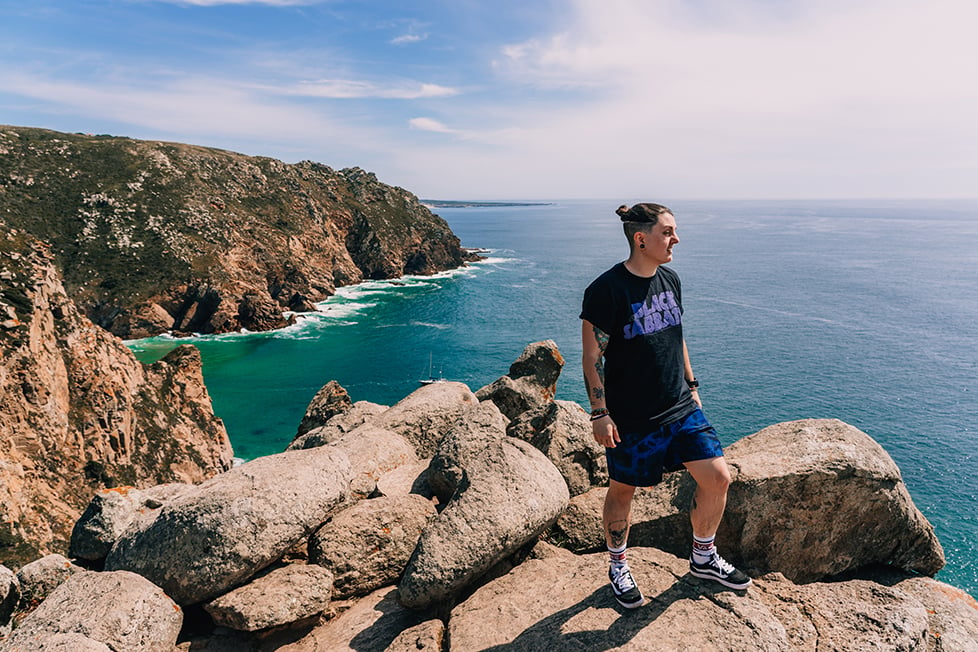
Why Go Backpacking in Europe?
Best travel itineraries for backpacking europe, best places to visit in europe – country breakdowns, 10 top things to do in europe, backpacker accommodation in europe, europe backpacking costs, best time to visit europe, sim cards in europe – unlimited internet, staying safe in europe, how to get into europe, how to get around europe, working in europe, european culture, some unique experiences in europe, faqs about backpacking in europe, final advice before visiting europe.
Backpacking Europe has no equal. There is no region on earth with such a diverse range of landscapes, cultures and languages contained within such a small(ish) space. Everywhere else is frankly boring when pitted against the technicoloured dream coat of Europe.
From alcoholic Bavarian breakfasts, ancient ruins and train rides so pretty they could briefly render a local politician speechless, the breadth and scope of Europe is enormous. Not forgetting we can make a mess in Eastern Europe and Scandinavia too, you’re basically screwed unless you have about a year.
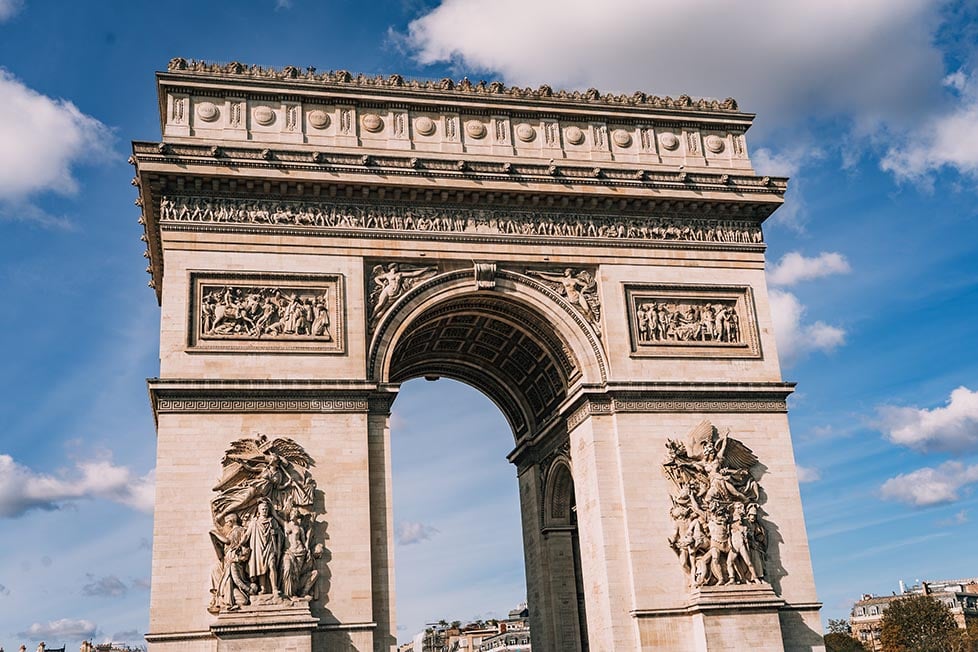
For many people, backpacking Europe is about ticking off a list of the famous and well-known cities . Let me tell you now. GET THIS SILLY IDEA OUT OF YOUR HEAD. You’re not hitchhiking with the Jehovah’s Witnesses or conquering Triglav, Olympus or Korab from a Starbucks/Costa/Pret a Manger are ya?!?
Find the balance. Visit some awesome cities, but make time to head out into the sticks and see the side of Europe you didn’t expect. There is an impeccable backpacking vibe in Europe, and you are bound to take some truly questionable stories home with you…
…If only you knew where to look… 😉
How to Tackle Europe Like a Pro
Right children, as a native European with more travel experience than Leonardo di Caprio’s wandering eyes, I have some juicy advice for you. First things first: Europe is expensive. Learn how to mooch through Europe on a budget !
Staying at a hostel in a well-known city (e.g. London, Rome, Paris, Barcelona) can set you back around $70. If you’re trying to make your trip last, it is worth knowing which are the cheap countries , and how to get some sleep in the ones that aren’t.
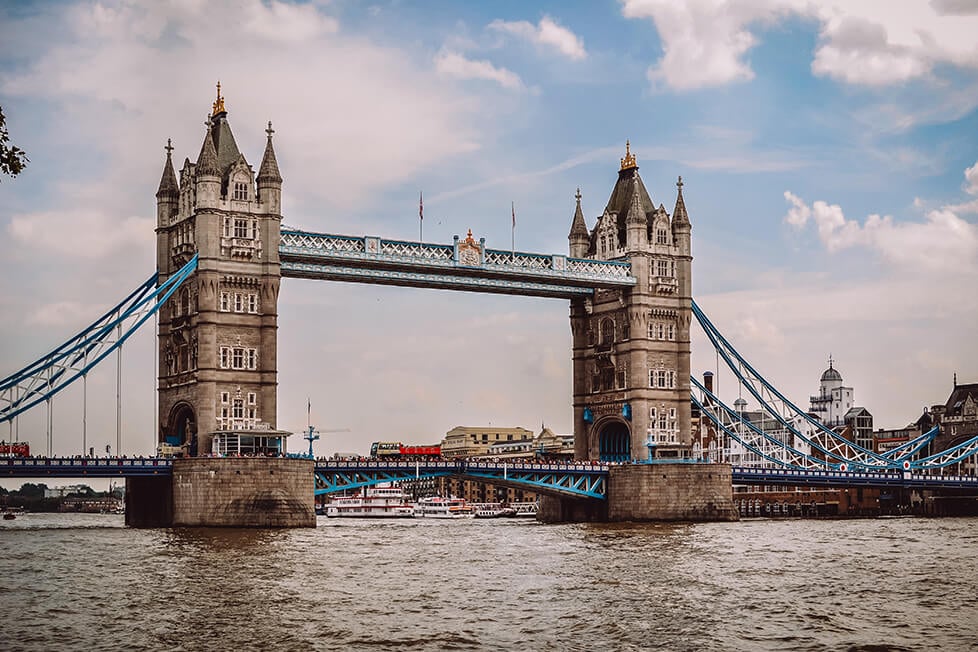
It’s also worth remembering which countries aren’t in the Schengen zone. Not only might you need to make additional travel adjustments, but it is worth knowing if you want to extend your stay in Europe . Basically, this is just the UK, a large swathe of Eastern Europe, and Turkey. Good for long stays!
You may want to grab an interrailing ticket if you’re travelling far and wide. These can work out much cheaper than paying for each individual train, which is another great boost for the budget. Taking a tent can also save you some serious bank whilst backpacking Europe.
Europe is fucking huge and it packs a punch too. This means that even on a (hypothetical) lifetime Europe backpacking trip, just accept it: you’re never going to see it all.
Backpacking Europe is best when you can travel it slowly . But don’t stress it because there’s plenty of ground you can cover even on a shorter trip to Western Europe.
If you only have a week or so, I recommend that you focus your Europe trip on either A) just one country or B) a few close-together cities. Luckily, the travel infrastructure is really good: train travel is a dream and buses are frequent. Plus, thanks to the European Union and its open borders, once you’re in one country, you can basically keep crossing borders as often as you’d like.
Here are a few ideas for an awesome backpacking trip to Europe.
2-Week Travel Itinerary for Europe – The Big Bois of Backpacking Europe
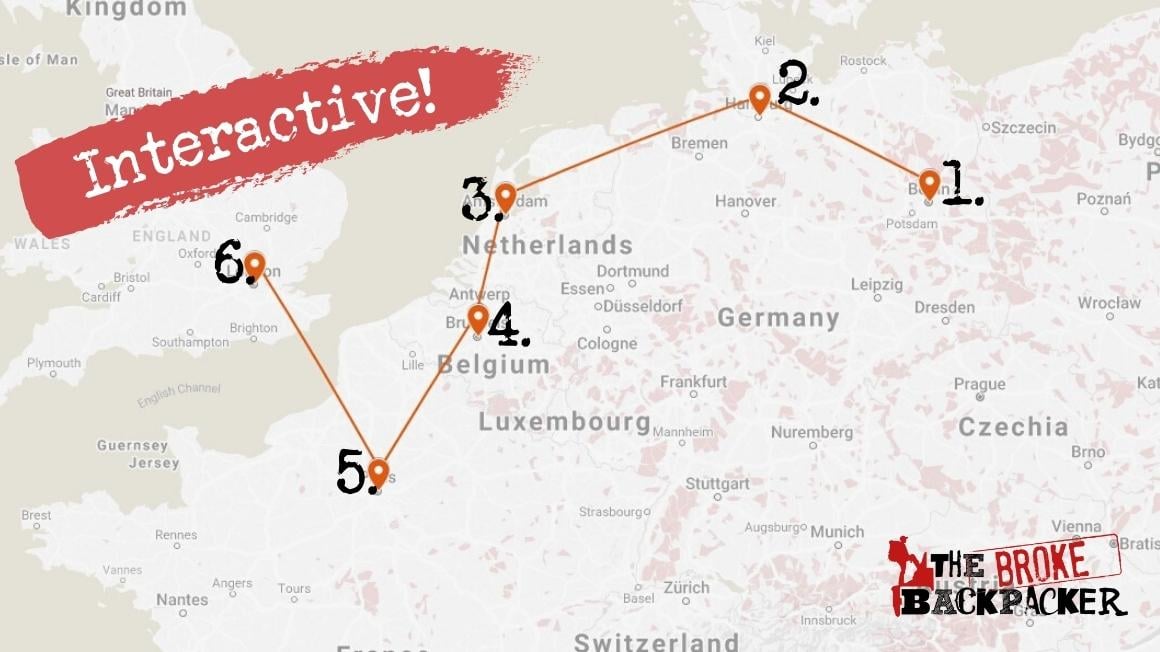
Start your travels from Berlin . Germany’s capital is like its own little islet – nothing like the rest of the country. Explore its history and party at world-famous clubs before heading out to Hamburg – you know, to get a taste of “normal Germany”. I highly recommend staying in St. Pauli which is the coolest area in Hamburg!
From Germany, cross over to Holland’s boozy, breezy, fun capital Amsterdam . From there, it’s easy to take a train or a bus to Brussels, in Belgium. (You could also stay in Ghent which is much prettier. Do take a day trip to Bruges, though!)
The next stop is dazzling Paris , undoubtedly the capital of romance in Europe. From Paris, take the Eurostar train to visit London .
This is the last stop in your itinerary. Wherever you’re headed next, London is one of the biggest transportation hubs in Europe.
1-Month Travel Itinerary for Europe: Southern Europe Gems
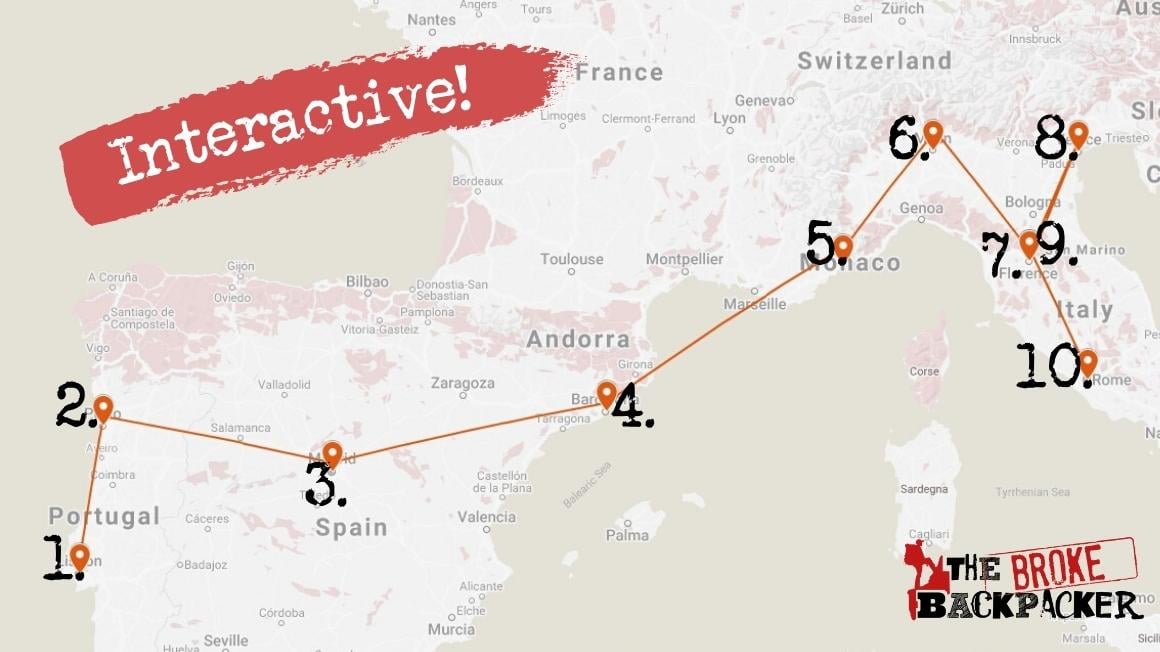
One month is the ideal Europe backpacking trip for first-timers. You’ll have time to explore a few countries and stay an extra few days in the places you fall in love with. In this itinerary, we’re diving into Southern Europe.
Start your trip in Lisbon , Portugal’s capital and one of the liveliest cities in Europe. Take trips to Sintra and Porto . Sintra can be done as a day trip whereas visiting Porto warrants at least a night’s stay.
Next, cross the border to Spain to explore Madrid . From the Spanish capital, finding onwards transportation to Barcelona is super easy. (Barcelona is also a long-time backpacker favourite!)
From Barcelona, cross over to France and spend a couple of days on the French Riviera. You could also do a lil’ side trip to Monaco to gawk at the rich&richer. But just a warning – this area is expensive as hell!
Next up, we head to Italy where you’ll spend the rest of your trip. First, explore Milan ; the fashion capital.
Then head to the floating city Venice, then the ultra-beautiful Florence . Lastly, end your trip in a highlight with a stay in Rome .
3-Month Travel Itinerary for Europe: Holy Shit, It’s the Grand Tour of Europe
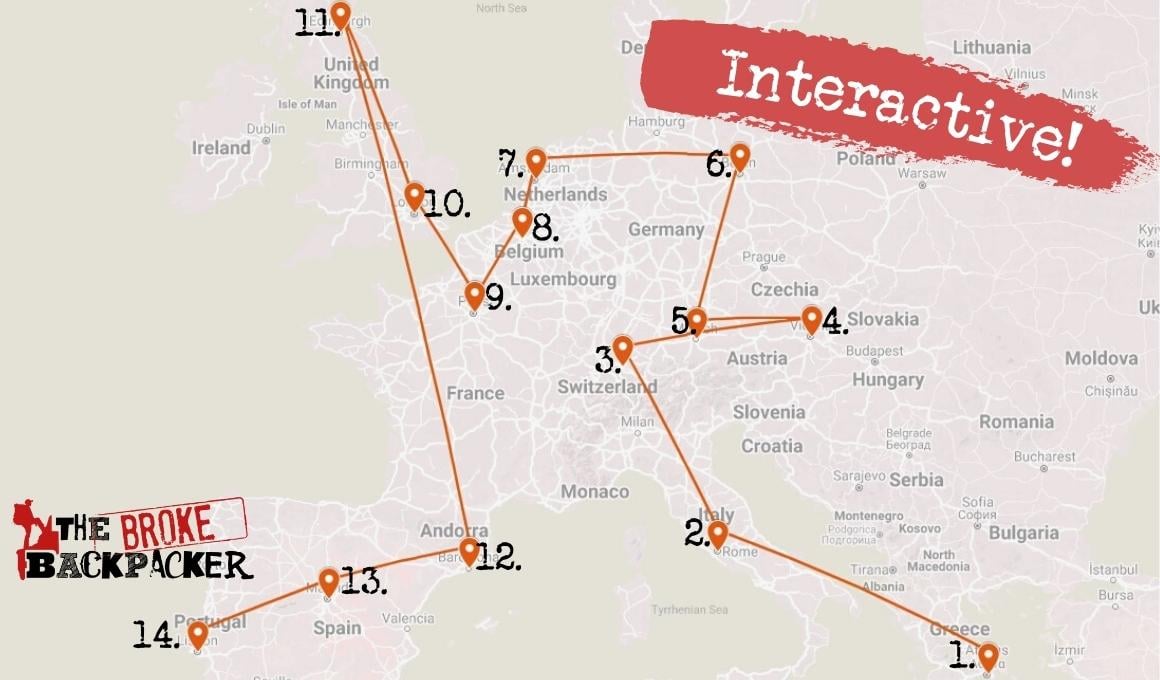
Having 3 months or more for backpacking through Europe is an awesome experience. Make the most of the 90-day Schengen Zone liberty (plus the UK). You can move at your own pace and take the time to enjoy the places you love.
Still – need I remind you? – Europe is fucking massive. 3 months is a great trip but you’ll still struggle to cover everything possible. Sometimes it might even be the best option’s better to take a cheap plane ride between destinations rather than waste a day on a bus.
Stop first in Greece . Staying in Athens is really epic and it is a great gateway to the famous Greek Islands. ( Mamma Mia , anyone?)
Next up – Italy . Explore Naples for the origins of that pizza in Naples. See the remnants of a super-influential ancient culture in Rome, and hike along the coast in Cinque Terre.
From Italy, visit Switzerland , AKA ‘the pit of doom’ when it comes to backpacking Europe on a budget. However, the Swiss Alps are some of the most beautiful parts of Europe so it’s worth a splurge.
Continue on to Vienna, Austria . It may look fancy but it has a punk rock heart.
Then, we move on to Germany . Munich is your gateway to experiences in Southern Germany and it has great connections to other awesome cities in Germany: Nuremberg, Frankfurt, Cologne, Dresden, and eventually, Berlin.
Travel through the Netherlands and Belgium to Paris, France . From there, you can easily get to London and further explore the UK . I highly recommend making a stop in Edinburgh to get a taste of Scottish life.
From the UK, you can fly down to Barcelona and conclude your trip by adventuring around Spain and Portugal .
If you are going to be spending a whole month in Europe bouncing between different countries, then we recommend downloading the HolaFly Europe eSim package before your trip begins. Packages start at just $1.20 per day and can offer data access and internet connectivity all over Europe for the entire duration of your trip.
Wherever you decide to go on your Euro backpacking trip, the magic will surely blow your mind. Each country in Europe is unique, full of surprises, and requires its own individual approach and strategy with regard to your travel budget in Europe.
Uh, just one thing: Europe, as a whole, has dozens of countries. (44 or 51, depending on what kind of geographical allowances we’re making…)
As I’m writing a blog and not a book, this Europe travel guide is focused on Western and Southern Europe . Meaning I’m only covering 11 countries and a bit today. Boo.
But don’t despair! There’s plenty more to explore in Europe.
- Backpacking Scandinavia travel guide
- Backpacking Turkey travel guide
- Backpacking the Balkans
- Backpacking the Caucasus
Backpacking Italy
Italy has been a popular vacation destination for a looooonggg time. Tourists have been coming here for years to see the likes of the Colosseum, drink wine in Tuscany , tour the canals of Venice – all that touristy stuff.
Consequently, few people stray far from the main backpacking route in Italy and, unsurprisingly, many say that tourism here has become a bit calcified. Some might say that Italy can offer nothing else besides the same postcard views and disgruntled baristas.
But there’s a lot more to see in Italy besides the usual attractions because, let’s be honest, everything in Italy is beautiful . Pound for pound, Italy might be one of the most beautiful countries in the world and you’d be hard-pressed to find a single ugly stone here.
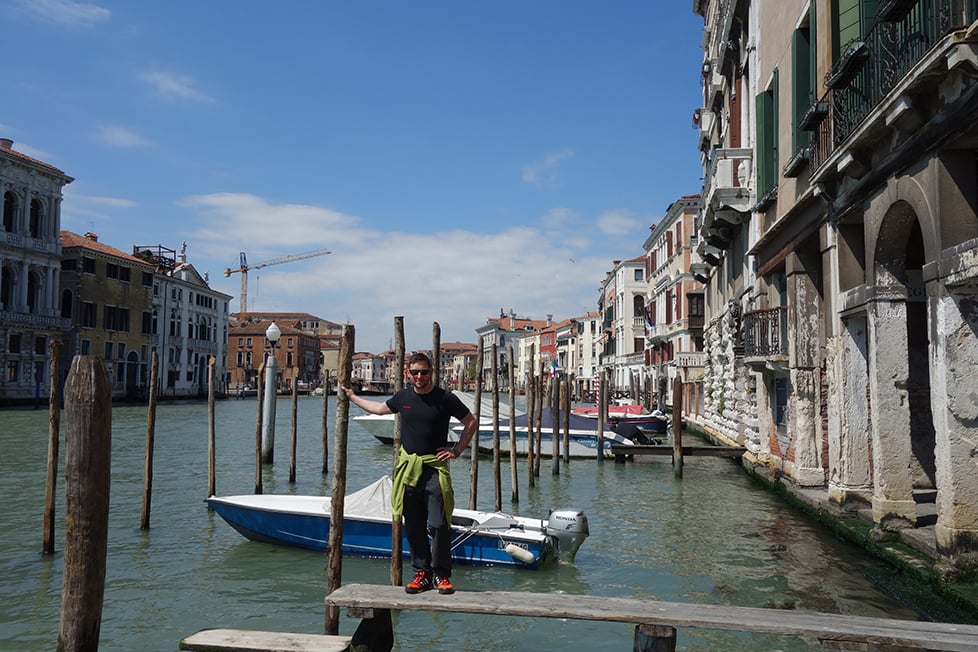
The beaches of Puglia and Sardinia are among the most brilliant in Europe (they don’t compare the former to “The Maldives” for no reason). The Dolomites are truly one of a kind and few other mountains can really compete.
Rome … Rome is amazing . Where else can you find masterpieces from almost every era of western civilization?
Italian food, which has received a similar treatment, should be explored with equal enthusiasm. Sicily with its miles of coastline produces some of the finest seafood in the country, not to mention amazing desserts. The tagliere (deli meats) of Toscana are the best you’ll find.
So give Italy a chance! Don’t let the jaded, bitter tourists tell you there’s nothing new to see or do here; you just need to get off the beaten path a bit. Visit Florence , see the Almafi Coast but set aside some time for exploring the lesser-visited regions, like Marche, Umbria, Calabria, and so on.
But also – what’s wrong with seeing the same stuff as everyone else? There’s a reason Rome is popular. A gorgeous reason…
Backpacking Europe can never be completed without dipping a toe into Italy.
What to Know Before Visiting Italy
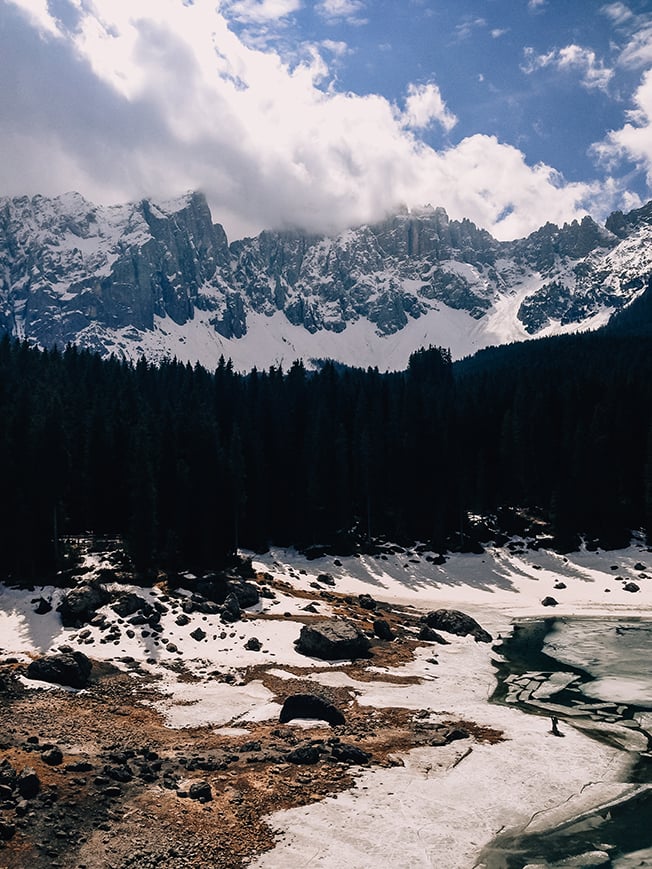
- Don’t miss out on … staying in Bologna . It evades most people’s radar even though it’s arguably the coolest city in Italy. Amazing food, beautiful architecture, and a nightlife that doesn’t quit.
- You know what’s overrated… the Leaning Tower of Pisa. Soooo many horrible selfies and awkward poses. Take a moment to actually appreciate the nearby duomo and baptistry guys.
- The coolest hostel is… The RomeHello Hostel . Offering some top-tier communal spaces, many activities for the guests, comfy beds, a great location, and good vibes atmosphere.
- The best food is found… everywhere! Really – you’re in Italy – you can’t go wrong here. Genoa, Bologna, Naples, and Sicily all take top honors.
Backpacking France
France might just be one of the most diverse countries you’ll set your foot in whilst backpacking through Europe. In addition to two coasts and two mountain ranges, France has a wide variety of cultures, landscapes, and food packed into one country.
Paris is amazing and seriously one of the most exciting cities in the world. It’s a city of romance, famous art, morbid history, and grand architecture. But don’t stop your exploration at the capital!
The Mediterranean coast, so-called French Riviera , is something straight out of your dreams. Trekking or skiing in the Alps is an unforgettable experience.
Bordeaux is one of the coolest cities I’ve ever visited, and staying in Lyon and Marseille are just as pretty. Let alone all the tiny little towns that are straight out of a postcard…
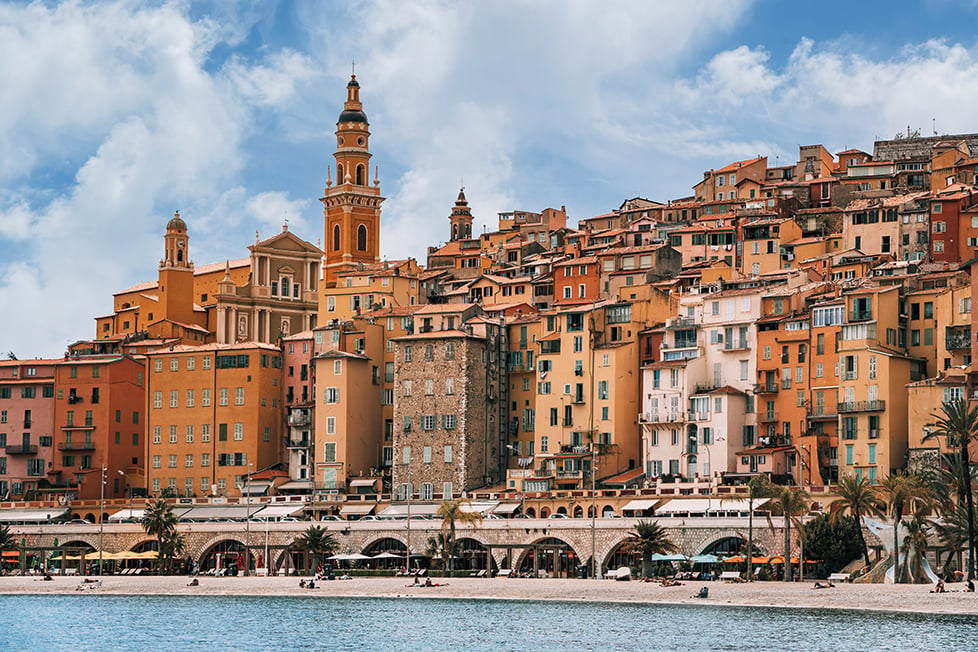
There are so many places to stay in France . Wherever you turn, you will find different kinds of wine, cheese, and even variations of the French language. If you love food, culture, and outdoor playgrounds, a stopover in France is an obvious choice for backpacking Europe.
Forget about the old stereotypes about the French being rude and uptight. The French can be like soft-boiled eggs: they have a shell on the outside but with it removed they are softies at heart. France is full of lovely soft-boiled eggs, uhm I mean humans…
Since France is quite a large country in European terms, there are so many hidden gems that I have lost track. From stunning medieval castles to picturesque villages and cities, backpacking in France is truly an unforgettable experience.
What to Know Before Visiting France
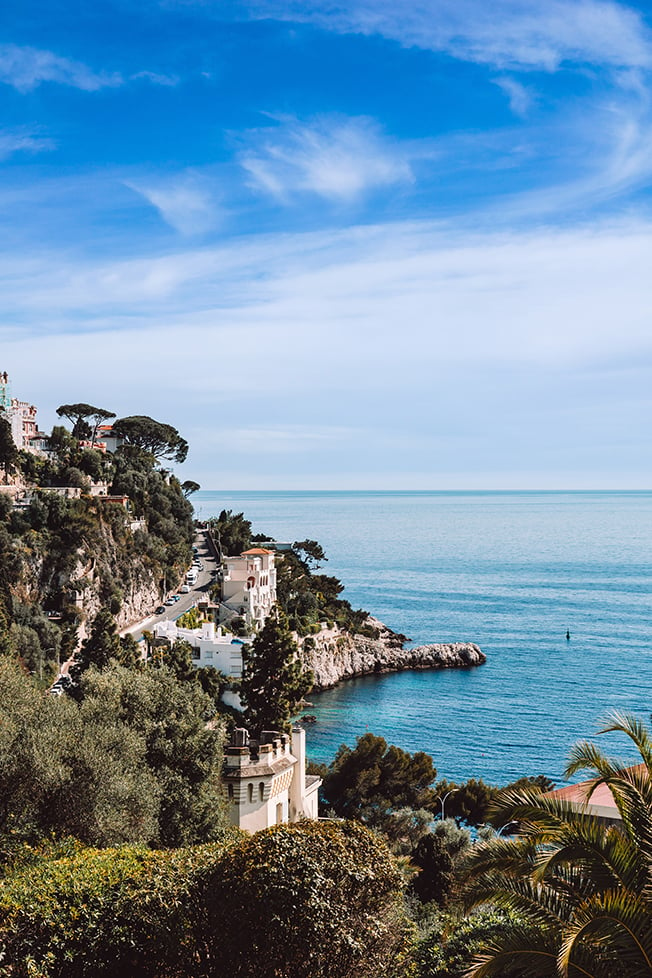
- Don’t miss out on… Staying a night at a mountain refuge in the Alps. Le Refuge de la Charpoua is particularly epic.
- You know what’s overrated… paying to go up the Eiffel Tower. Paris is expensive . Save money and see it from below.
- The coolest hostel is… The People – Paris Nation . Excellent location. It has beds with curtains (I love privacy), a cozy cafe/bar where to chill and work, and a great terrace to see the sunset.
- The best food is found in… Can’t go wrong with a bit of Brie and a bottle of Bourdeaux. But that’s just the beginning; as they say there, is a different wine and cheese to try every day of the year…
Backpacking Portugal
Portugal is a grand paradise of sorts. The pace is slower than other European countries (and compared to other offenders on this list, cheaper, too).
The country is packed with friendly locals, charming villages, fun parties, and one of the most chill vibes you will come across anywhere on earth.
Backpacking in Portugal is very easy and Portugal is my favourite country to solo travel in Europe too. Ultimately it’s a great place to begin your international adventure, solo or not.
Spot the famous blue tiles in Porto. Feel like a royal at the castles in Sintra.
Eat seafood in Lisbon. Drink ice-cold beer and smile like a fool whilst taking in an epic sunset over the ocean in Algarve.
Most backpackers start their trip in Lisbon as it appeals to just about everyone. There’s amazing food, good weather, great parties in Bairo Alto, and lots of places to see nearby. Definitely don’t skip Sintra ; the epic village full of fairytale castles is one the top places to see in Portugal.
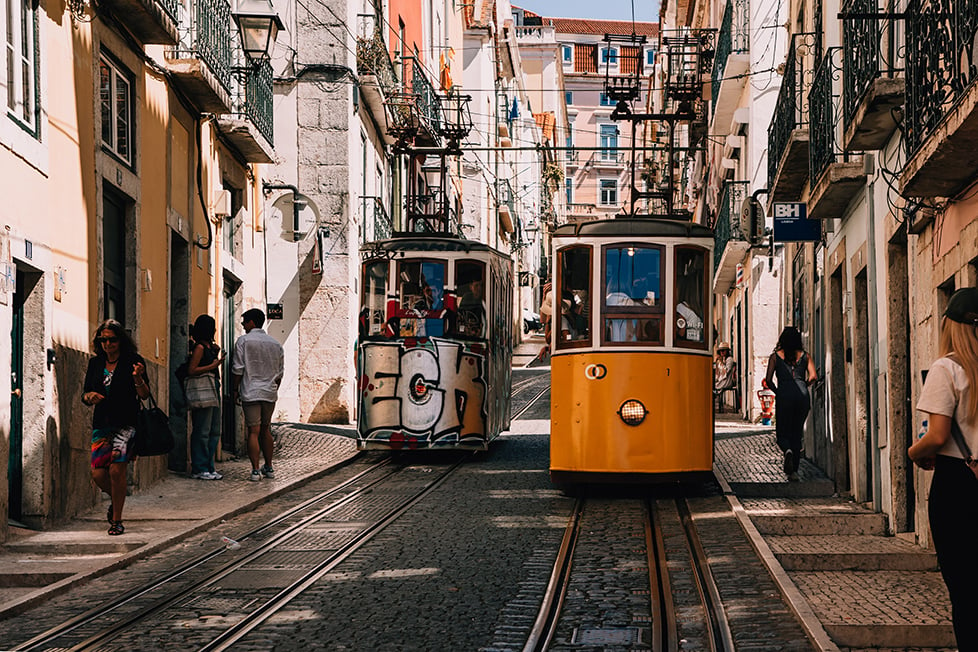
The south of Portugal, also known as the Algarve , is the more Mediterranean part of the country. It resembles more southern Spain not only in the scenery but in vibes.
Expect a lot of tourists and more than a few drunken, wandering Aussies. But hey – the coastline is gorgeous and stays warm all year round. You can also find some of the best surf in the Northern Hemisphere off Portugal’s many beaches .
In Northern Portugal, Porto is a popular student city. It’s also bustling, busy, fun, and beautiful. Some backpackers even prefer it to Lisbon!
Portugal also has two semi-autonomous island regions: the Azores and Madeira. Both are very different from the mainland and absolutely magical.
Hiking in Madeira is uniquely epic! But visiting Azores is like backpacking a mini-New Zealand.
What to Know Before Visiting Portugal
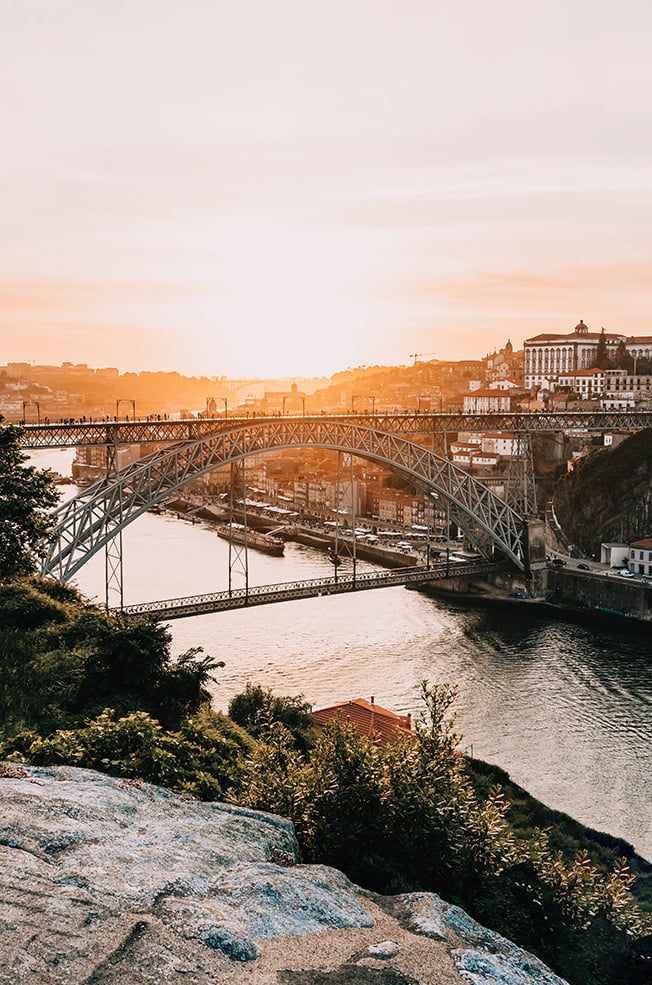
- Don’t miss out on… Porto. Backpackers love Lisbon , but its northern neighbour is just as cool. Keep an eye out for its famous blue tiles.
- Keep an eye out for… drunken backpackers in Lagos. It’s not widely advertised but this place is a SHITSHOW at night. If you’d like to be one of them, stay in one of the party hostels.
- The coolest hostel is… Home Lisbon Hostel – The people’s favourite: mama’s cooked dinner, free walking tours, and a super homey feeling. You feel so welcome here.
- The best food is found in… the Mercado da Ribeira in Lisbon. This is the Mecca of all food markets, the cream of the crop.
Backpacking Spain
Many backpackers claim Spain as their favourite country. Are they right?
I think so. You do not have to look too far to see why this country, in addition to producing some lovely human beings, is a magical land for backpackers.
Like to sleep? You came to the wrong country. The Spanish have breakfast at 10, lunch at 4, and dinner at midnight.
Spain is a country that truly never sleeps. It’s in the culture to practice sleep deprivation in style. Maybe all those midday siestas help?
Spain just has a certain charm to it. Small plates of delicious tapas , cool, cold wine served with sweet orange and melon…
Is it those fine beaches? Old olive groves running through tiny villages? Or the church in Barcelona that is a perpetual construction project?
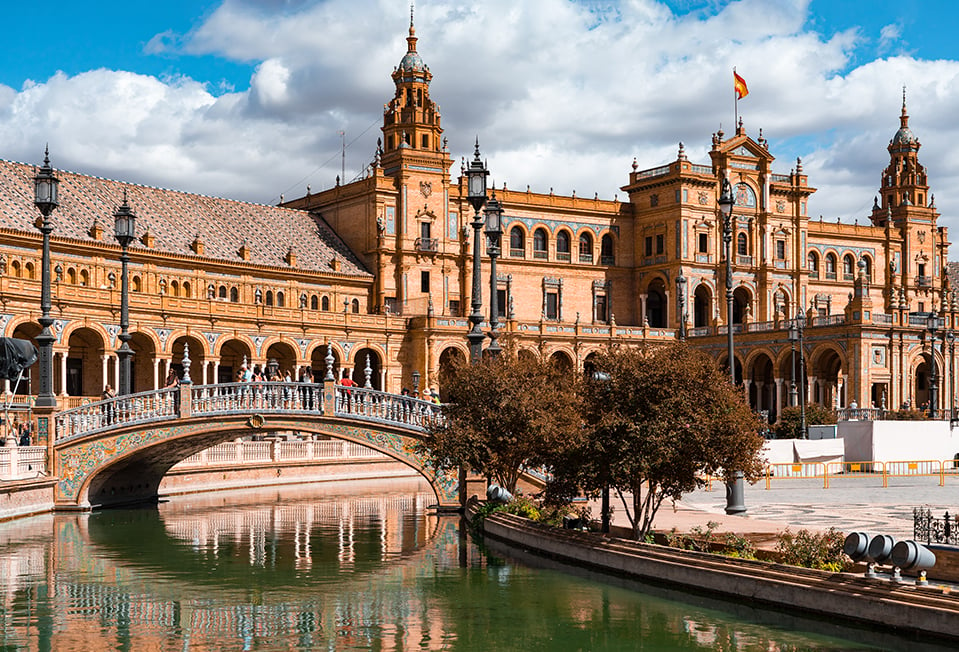
My suspicion is that my love of Spain is deeply rooted in all of the little nuances you experience daily whilst travelling here. Many backpackers just roll through Barcelona and maybe go visit Madrid . Whilst those cities are not to be missed, backpacking through Spain without exploring its other regions is a mistake.
In the north, you can hike majestic mountains in Asturias and eat awesome seafood in San Sebastian . Track down the origins of paella when staying in Valencia .
Explore Andalucia in the south with its Islamic architecture, free tapas, and the cheapest prices in Spain. (Seriously – Granada, Seville, and Cordoba are AWESOME.) Go to a football game. Find some flamenco.
Doesn’t that sound like fun? This is Spain.
What to Know Before Visiting Spain
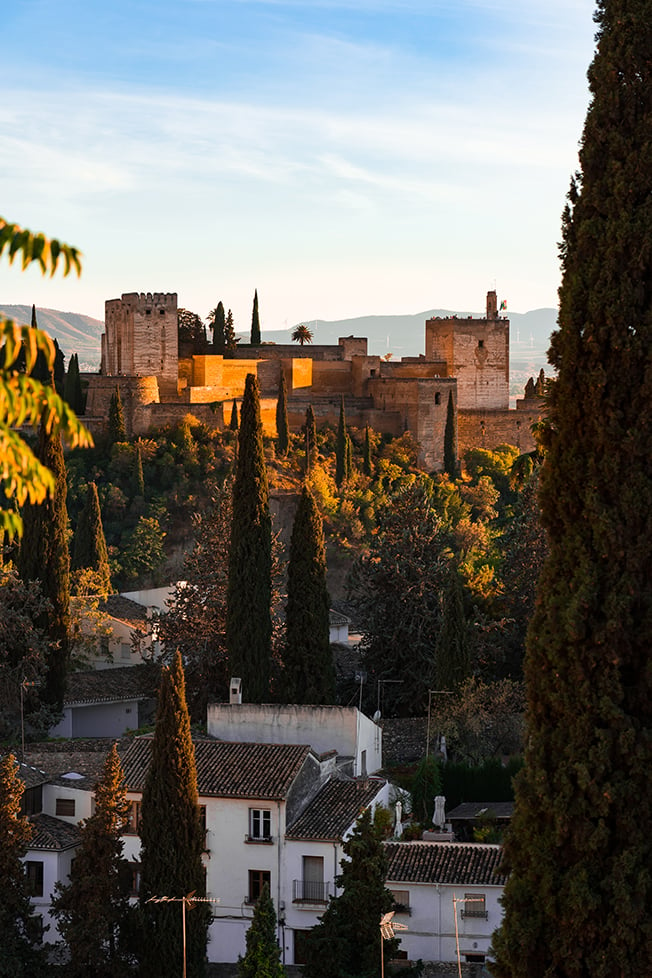
- Don’t miss out on… the Basque region. It’s like a completely different country, with epic landscapes and an extremely fascinating history. San Sebastian is the best place to stay.
- You know what’s overrated … bull fights. The Spanish hardly go to them – it’s cruelty set up for tourists’s entertainment. Opt for a flamenco show or tapas tour instead.
- The coolest hostel is… The Central House Madrid Lavapiés . Everything a hostel should have. Relaxation, work and social areas. A pool, a bar, a terrace, lockers, and curtains on comfortable beds.
- The best food is found in… Granada. Andalucia has some of the only totally free tapas in Spain, and Granada has the best tapas restos. Asian fusion or Moroccan tapas? You’ll find it here.
Backpacking Switzerland
If you are planning on spending time in the Alps, a hiking trip to Switzerland is an obvious choice. Switzerland is a land full of the Alps, quaint villages, and hip cities.
Heard of the Matterhorn mountain? (That’s the Toblerone mountain.) It lives in Switzerland.
In addition to its powdery peaks, Switzerland is also home to gorgeous alpine lakes. Take in some of the ancient castle fortifications lakeside by day and sip the legendary Swiss hot chocolate by night.
Zurich may be the financial heart of Europe but it’s still surprisingly cool. Lausanne is small but gorgeous, and the capital Bern is equally so. Don’t skip Luzerne since it just might be the most beautiful city in Switzerland. But these are just a few ideas of where to stay in Switzerland – numerous hidden gems await.

You do have to pay for the pleasure in Switzerland . For better or worse, the Swiss people have this whole thriving economy thing down to a T.
As a country long resistant to changing over to the Euro, the Swiss Franc is as strong as ever before. For backpackers, this translates into a scenario of high cost, high reward.
That said, Switzerland will certainly do anything but disappoint. It’s worth the splurge even if you are backpacking Europe on a budget.
What to Know Before Visiting Switzerland
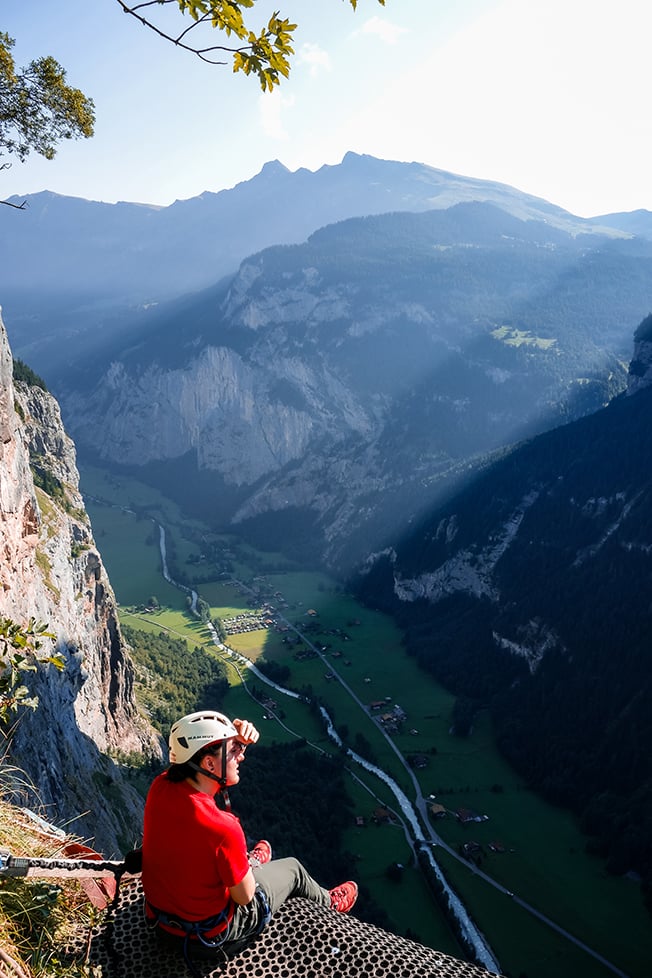
- Don’t miss out on… the Bernese Oberland. This region features probably the most famous and stunning hikes in Switzerland . Check out the trails around Eiger and the Lauterbrunnen Valley.
- Keep an eye out for… the prices; the pure, unadulterated, merciless, eye-gouging, seemingly unreal prices. You’ll need to employ every trick in the book to keep costs down.
- The coolest hostel is… Backpackers Villa Sonnenhof Interlaken. It offers a ton of freebies!
- The best food is found in… the grocery stores. Swiss food is just ok; certainly not worth the prices at the restaurants!
Backpacking Germany
After gaining a (justified) terrible reputation on the world stage in the first half of the 20th century, Germany has emerged over the last 50 years as an economic powerhouse and centre of culture in Europe. Modern-day Germany is an awesome place to go backpacking through Europe – and a fan favourite among many gap year kids and older travellers alike. You won’t be hard-pressed to find a great hostel in Germany .
As a lover of cool cities and good beer, I am totally enamored with Germany. While famous for its fast cars and pretzels, there is so much more to see whilst backpacking Germany: historic towns, medieval monasteries and fantastical castles , culture-filled cities, fairy-tale forests, and majestic mountains.
To top it off, Germany has one of the strongest economies in the EU, yet traveling here is surprisingly affordable in comparison to the rest of Western Europe. (Pro tip: Eastern Germany is even cheaper than Western Germany.) Backpacking Germany is a great addition to any European travel itinerary!
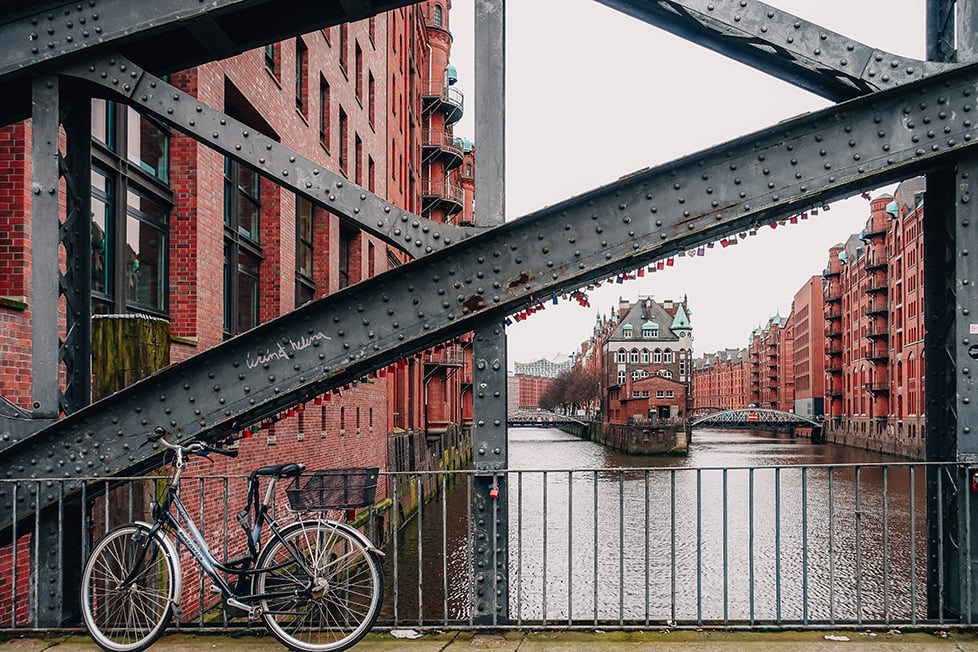
Most backpackers gravitate towards Berlin , and for good reason: its nightlife is unbeatable and there is a wealth of culture to keep people interested. But the capital is its own thing – it doesn’t resemble the rest of Germany at all. For European backpackers, there are tons more awesome spots to uncover.
Dresden , beaten to shit during WWII, has been wonderfully restored. Hamburg is one of the coolest cities in the country, at least if you’re staying in the St Pauli neighbourhood.
Bavaria in the South is known for the Black Forest area (one of Germany’s National Parks ), an unintelligible dialect of German, and beautiful scenery. Finally, Regensburg may be the prettiest town in the country. But there are SO MANY others – some completely micro-sized.
What to Know Before Visiting Germany
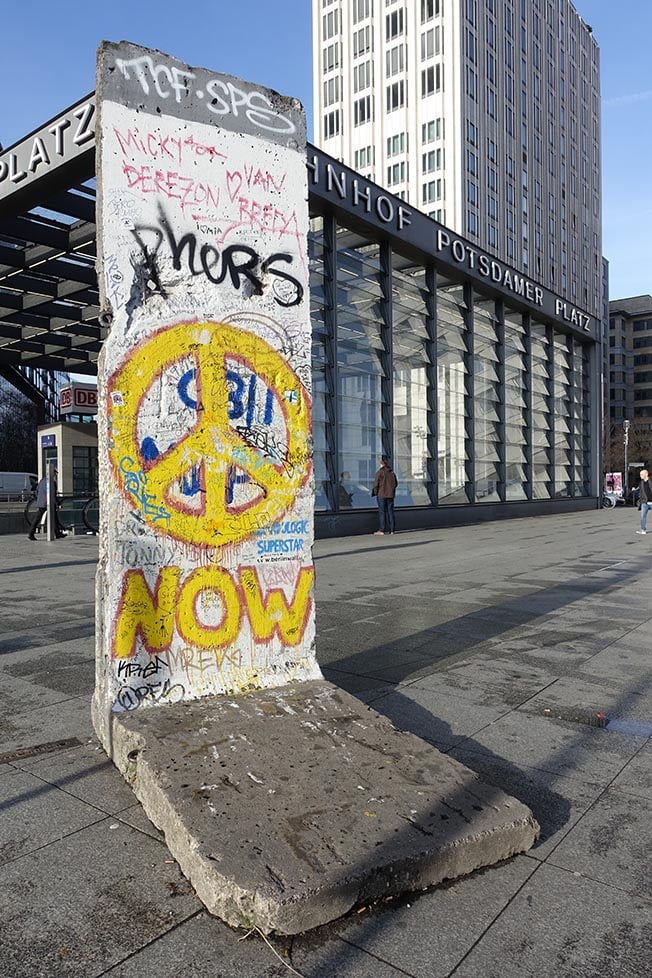
- Don’t miss out on… visiting a beer hall. No one can drink like the Germans and by that, I mean with such control and enjoyment at the same time.
- You know what’s overrated… Munich. The city itself, whilst pretty, doesn’t offer a lot in the way of attractions. The locals can be pretty arrogant too.
- The coolest hostel is… Hostel die Wohngemeinschaft . A cozy social vibe. A bohemian retro-style hostel with a cafe that becomes a bar at night. And a common area open 24 hours with free coffee and tea.
- The best food is found in… Berlin. The gastronomic scene is incredibly diverse, unlike many other German cities where food tends to be homogenous. Vegetarianism is alive and thriving here!
Backpacking The Netherlands
Coffee. Canals. Cannabis. Windmills. Those are some of the things that come to mind when thinking about The Netherlands.
Visiting Amsterdam has long been a favourite backpacker haunt and is well worthy of exploration. It is THE place in Europe to (legally) rock into a coffeeshop, order a joint, and sit down to smoke it.
If you like riding bicycles long-distance, The Netherlands is a perfect country in which to feed that urge: The Netherlands is almost entirely flat. If you have had long challenging days trekking or biking in the Alps, the flatness here will be a welcomed change.
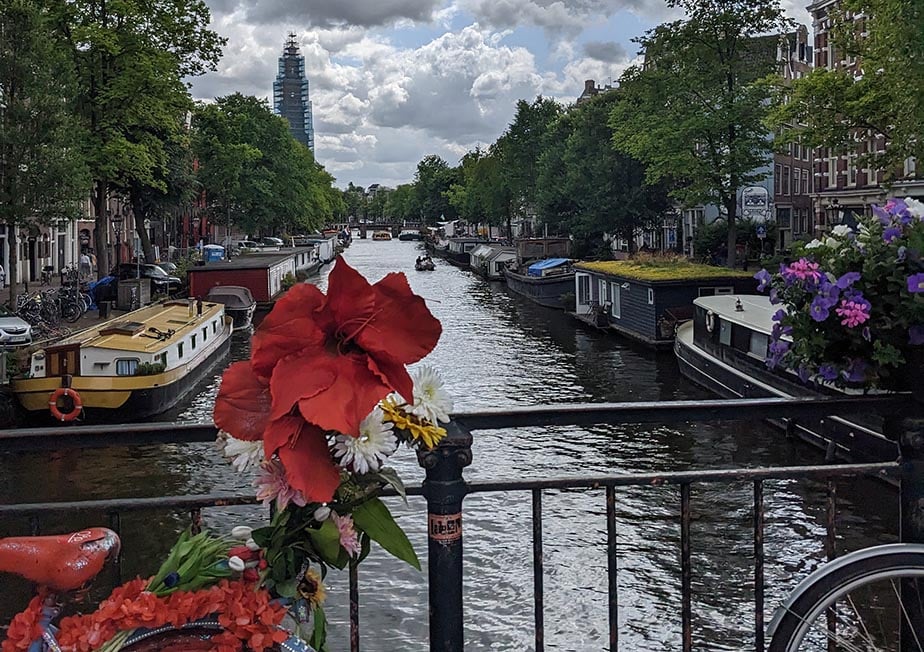
You will find that Dutch people often speak perfect English which is impressive as Dutch sounds nor looks anything like English. Because the country is relatively small, you can travel around here with ease whilst taking in a majority of it.
Most backpackers make a stop in Amsterdam and leave the rest of the country be. Don’t get stuck in the capital city – at least take a day trip from Amsterdam .
What to Know Before Visiting The Netherlands
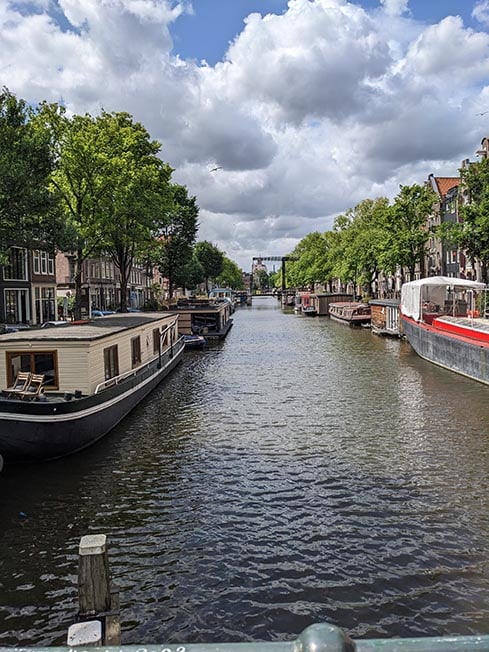
- Don’t miss out on … partaking in some magic mushrooms while visiting Amsterdam. Seriously, those Van Gogh paintings are mental when you’re frying.
- You know what’s overrated… staying in the HEART of Amsterdam – it’s overly expensive and crowded. One could stay outside the city, save a bundle, and then take the train in. I suggest finding a hostel in Utrecht instead.
- The coolest hostel is… Stayokay Hostel Amsterdam Vondelpark . All the services that you need as a backpacker. Nice areas to chill, work, and hang out. Great atmosphere to meet other travellers. Probably the best location in Amsterdam. The park and Museumplein right next to you.
- The best food is found … while staying in Amsterdam , only because of the stroopwafels! These are one of the greatest treats ever.
Backpacking Belgium
Let’s be honest: Belgium doesn’t offer much in way of stand-out attractions. There is no Colosseum, no Montmartre, no legalized drugs, or raging Berghains. Just a lot of charming houses, calories, and dreary weather.
And for these reasons, I LOVE Belgium. How amazing is it that Belgium places beer in such high and hallowed regard? Bless the Belgians who seem to have no problem smothering their fried potatoes in aioli and mussels with heavy cream. I love that you can go backpacking in Belgium with zero expectations and still be impressed.
It’s almost as if Belgium is a guilty pleasure of sorts. The whole country is just one big bar where you can eat and drink to your heart’s content and no one gives a shit.
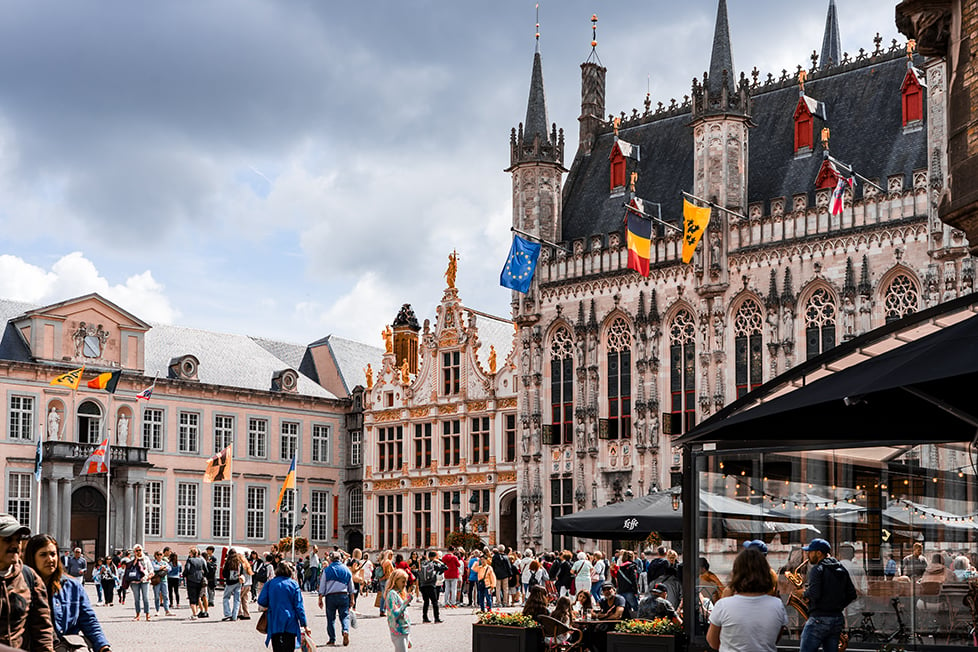
If you’re traveling between France and the Netherlands, it is absolutely worth stopping over in Belgium for a little while. Antwerp would be the best place to base yourself although Ghent and Bruges are worth seeing . Bruges gets absolutely zombified with tourists, though – prepare yourself.
And you shouldn’t skip the nation’s capital Brussels . It’s also the capital of the European Union but in addition to stiff people in suits, there are also many cool things to see in Brussels .
If you wanted a really enjoyable backpacking Europe experience, consider sleeping at a brewery for a few days! Most have guesthouses attached. In particular, Het Anker is great. Otherwise, Brussels’ hostels are the best place to stay on a budget.
What to Know Before Visiting Belgium
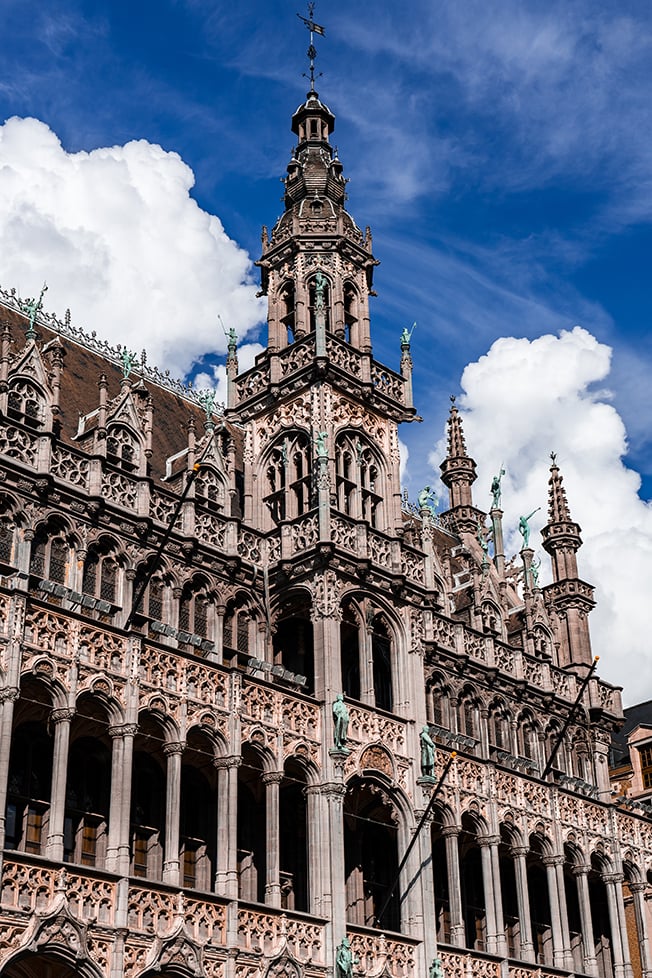
- Don’t miss out on… staying in Ghent , the prettiest medieval town in Belgium. It’s mostly known for its canal houses and local mustard. Gruut, a precursor to today’s beer, is also made in Ghent.
- Keep an eye out… when you’re in Brussels. Whilst certainly “edgier” than most European cities, Brussels can be a little too rough at times.
- The coolest hostel is… Hostel Uppelink Ghent . Though the building may be a bit old, the location is unbeatable. It’s literally next to the city’s famous Sint-Michielsbrug bridge.
- The best food is found in… the “brown bars”, where they serve the fried potatoes and mussels in excess.
Backpacking the UK
The UK is just one of those places that I have fallen in love with over the years. If you are in the mood for a wonderful campervan and trekking adventure, backpacking in the UK is the journey you have been waiting for.
Note to my geographically challenged friends – the UK is a country comprised of 4 countries: England, Wales, Scotland, and Northern Ireland. And the Brits WILL get mad at you if you refer to the whole area as “England” ( Ed: Sounds about right).
England and Wales have large sections of coast that are far off the beaten path and offer up excellent hiking/camping possibilities. The Highlands in Scotland have some of the last true wilderness areas in Western Europe. The Scottish Islands look like something out of a fairytale book.
Along with stunning natural landscapes, the UK is home to major centres of culture in Europe. In England, the ineffable London is an icon for obvious reasons. I also highly suggest chasing down ghosts in Canterbury , getting smart in Oxford , and basking on the beach in Brighton . And the Lake District in Northern England is incredible!
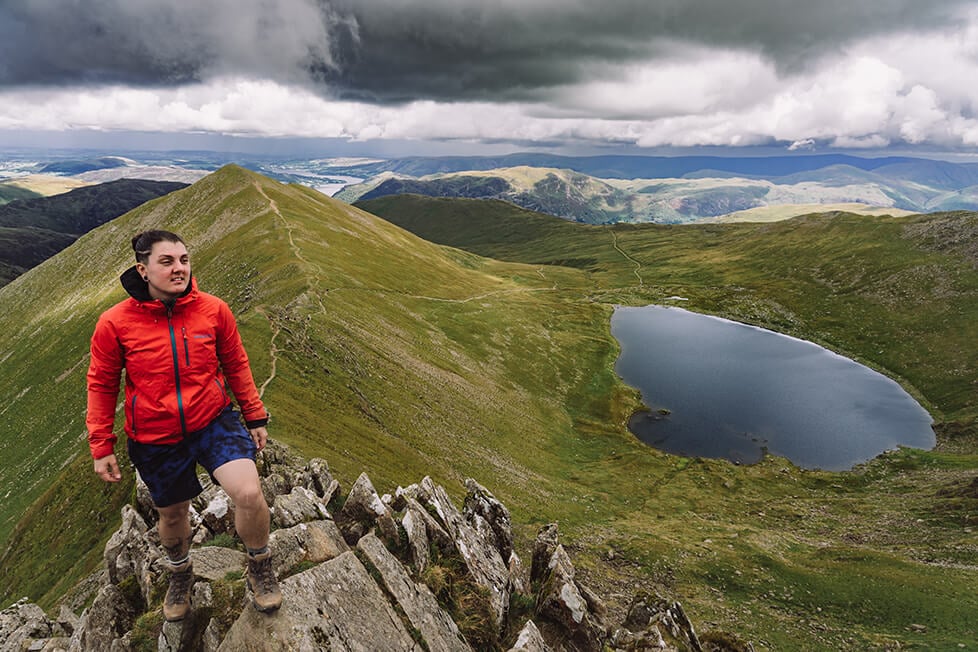
Scotland is a world of its own. The Scottish capital city of Edinburgh is full of awesome things to do. This region has landscapes so green that the hills seem to have been spray-painted in every sense of the word.
It has remote islands dotted with whiskey distilleries, lochs, and cascades. One could easily spend all their time backpacking in Scotland and could totally forget about “the south”.
The hiking trails and huts in the Highlands offer up an endless supply of hiking opportunities in a breathtaking environment. Throw in the vast cultural richness of the big cities and small villages and you have yourself one great place to go traveling.
Backpackers don’t go to Wales as often but for no good reason. It also offers awesome hiking opportunities, and Cardiff is a small-ish but cool, cultural city.
What to Know Before Visiting the UK
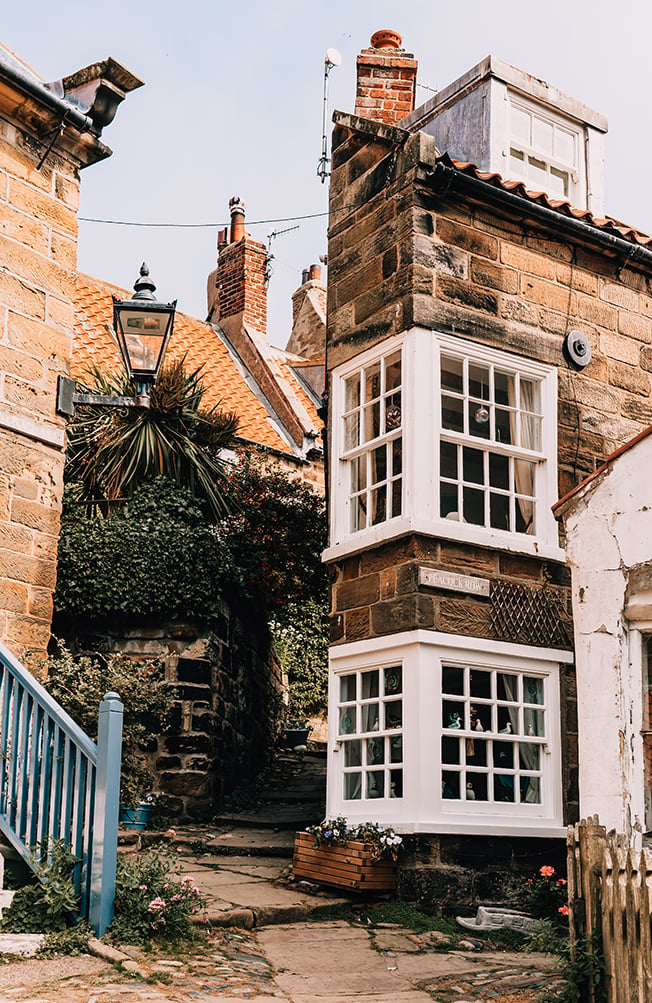
- Don’t miss out on… going off the beaten path in the Scottish Highlands. If you really want a unique experience, try island hopping in the Hebrides.
- You know what’s overrated… Buckingham Palace. Just skip it.
- The coolest hostel is… Onefam Notting Hill . This award-winning hostel is one of the best locations in the capital. It’s perfect for solo travellers to make friends for life.
- The best food is found in… The Indian food in the North (Manchester and Yorkshire). For that matter, the vegan scene nationwide is thriving and varied.
Backpacking Ireland
The lush, green, enchanted, and enchanting island of Ireland perches serenely at the furthest boundary of Europe. Beyond it, there is nothing but the Atlantic until it reaches the New World.
Somehow, Ireland’s location and geography are encapsulated in its culture. It is European but only just; civilized, yet it’s wild and rugged. It rains a lot but remains perpetually pleasant and inviting.
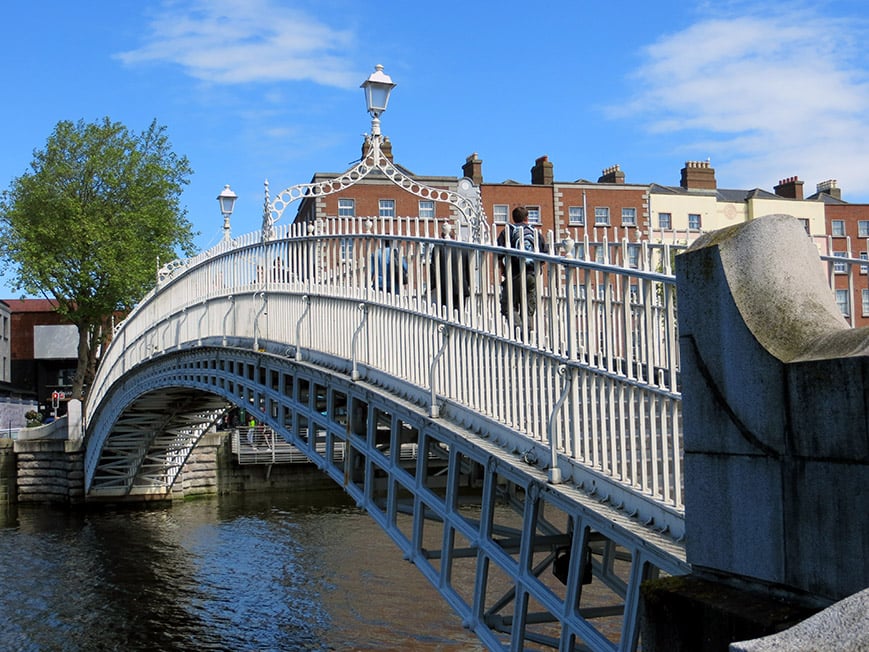
Sometimes crudely dismissed as the UK’s little cousin, backpacking Ireland offers visitors the chance to explore the most plucky nation in the world and get a glimpse of a simpler world that has sadly vanished forever elsewhere. That is not to patronize though, Dublin is every bit the cosmopolitan ( and expensive ) EU capital, and the once-troubled Belfast wears its gritty history with pride.
But head out to the Burren , or the lanes of Cork , and you will find warm taverns ringing with the sound of the fiddle and a way of life where time still takes its own time.
The headline draw in Ireland is the capital Dublin where you can visit Kilmainham Gaol and pull a pint at the Guinness brewery. But not to be missed are the Cliffs of Moher, the ancient streets of Galway , and the colored houses of Cork in the capital of “authentic Ireland”.
For the edgier side of the Emerald Isle, cross the (porous & invisible) border to the North and check out the murals of Belfast. From here you can easily visit Game of Thrones locations or check out the geologically wondrous Giants Causeway .
What to Know Before Visiting Ireland
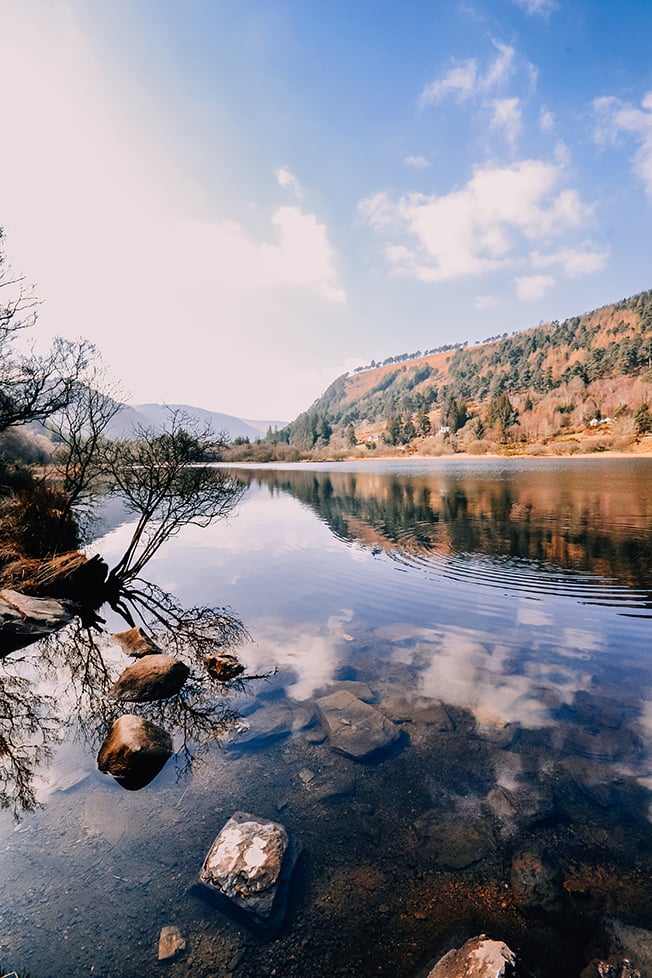
- Don’t miss out on… Watching an Irish sport (hurling or Gaelic football) game in a pub.
- You know what’s overrated… kissing the Blarney Stone. You’ll wait sometimes hours in line just to share spit with other people over a hole in the wall. Yes, it’s as unnecessary as it sounds.
- The coolest hostel is… Jacobs Inn . Offering a super cool bar area and rooftop terrace, the pod sleepers will make sure your ready for a top day tomorrow.
- The best food is found… at the Galway Seafood Festival. If you happen to be staying in Galway in September and October, don’t miss out on this.
Backpacking Greece
Getting to know Greece is one of the most rewarding backpacking trips to be had in Europe. Those blue and white houses and perfect Mediterranean landscapes you have seen on postcards live up to their hype in real life.
Greece is a charming, laid-back country. Backpacking the Greek Islands has been one of my favourite travel experiences. This is due not just to the beautiful views, but to the food, beaches, wonderful people, and plethora of history.
Island hop the Cyclades. Pop over to Crete . Experience life with no cars on Hydra. Whatever you get up to in the Greek islands, a Europe backpacking trip that makes it here is hell of a good time.
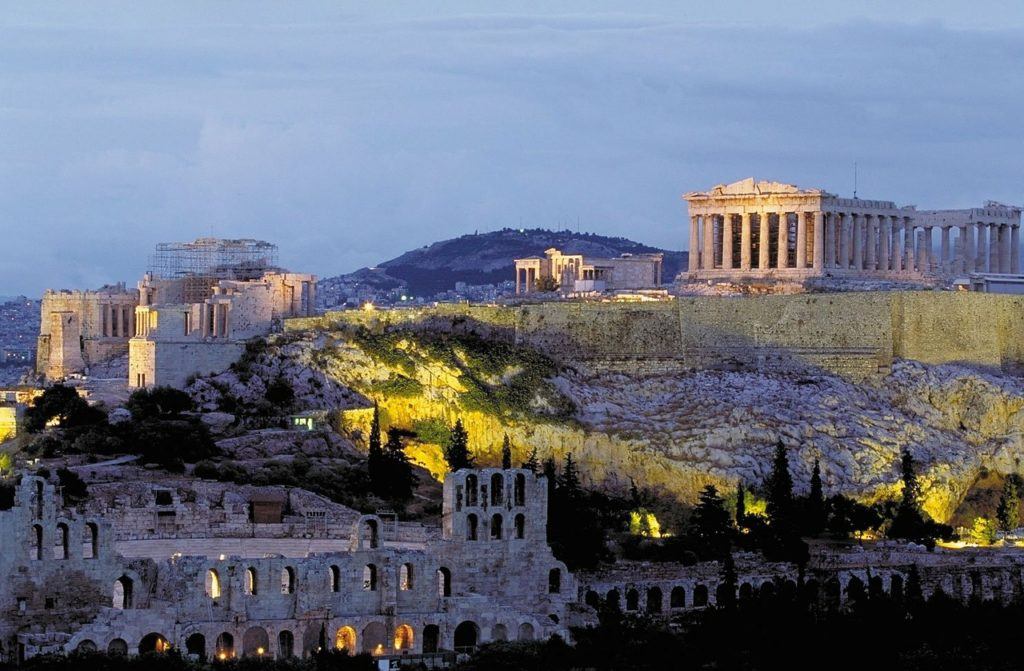
But wait! Greece may be best known for its islands but there is a whole mainland of INCREDIBLE stuff to explore, too! (Also, it’s way cheaper than the tourist-crowded islands.)
Visit Athens , the capital full of ancient history and cool graffiti. I know the city gets a bad rap but it’s actually pretty cool. For one thing, the nightlife here is fantastic – rebellious, wild, and absolute fun. Another draw is the Acropolis.
Close to Athens, you’ll find Delphi , an adorable little town with the ruins of a once-famed oracle’s home. Meteora is known for its unique monasteries built on top of stone pillars. Thessaloniki , Greece’s second city, is full of good vibes and great food.
If you’re a history and/or mythology geek, backpacking Greece is gonna get your socks spinning out of excitement.
What to Know Before Visiting Greece
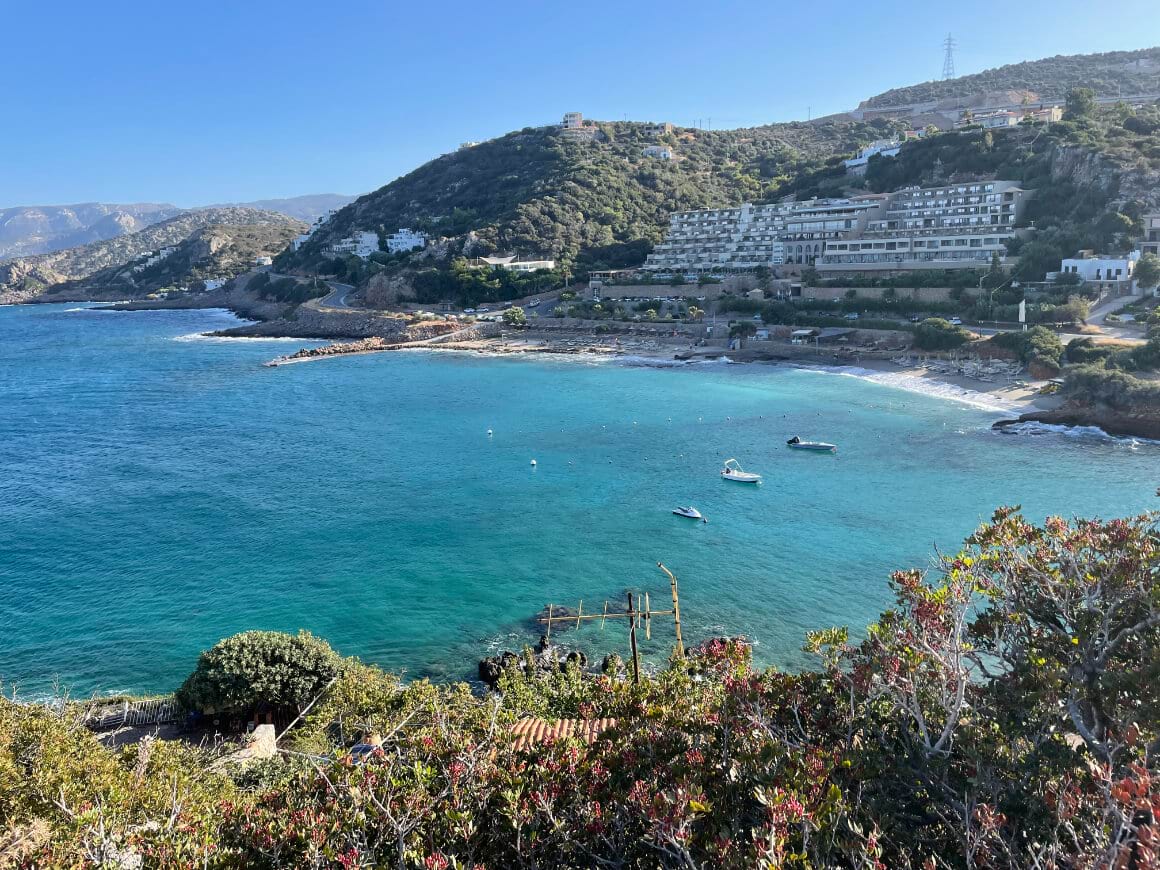
- Don’t miss out on… the Ionian Islands. This part of Greek islands receives a fraction of tourists yet hosts some of the most beautiful places in the country. Zakynthos has good places to stay .
- You know what’s overrated … Santorini. It’s overcrowded, expensive, and on the verge of being spoiled.
- The coolest hostel is… Athens Quinta . Travelling is all about finding those magic places that make you feel at home. This hostel takes that idea and runs with it. Including, free breakfast!
- The best food is found in… Crete. It’s well-known for its culinary culture. It’s far enough away from the mainland that the food is quite different as well.
Off the Beaten Path Adventures in Europe
Europe gets BUSY. Hundreds of millions of people, both from Europe and elsewhere, travel around it every year.
And you know what? 80% of those people do one of two things. Either they just visit a few cities or they go on cookie-cutter tours where they are shuffled around from one famous attraction to another, plowing through a sea of baguettes, gelato, and, tapas along the way.
(Actually – that doesn’t sound half bad…)
It’s easy to get off the beaten path by visiting Europe’s hidden gems . In the Netherlands, go anywhere that’s not Amsterdam; in the UK, anywhere that’s not London ( Ed: not quite sure about that, but close).
But there are also a few countries that have not been included in this guide yet, and I’d like to give them a little shout-out. They are not traditionally on the backpacker trail but they are awesome, plus they’re right on your route so it’s very easy to visit them!
For starters, Vienna in Austria is easily amongst the most beautiful cities in Europe. While visiting Vienna , everywhere you look there is some regal remnant of the Hapsburgs: a palace here, a monument there, and plenty of museums to go along with them.
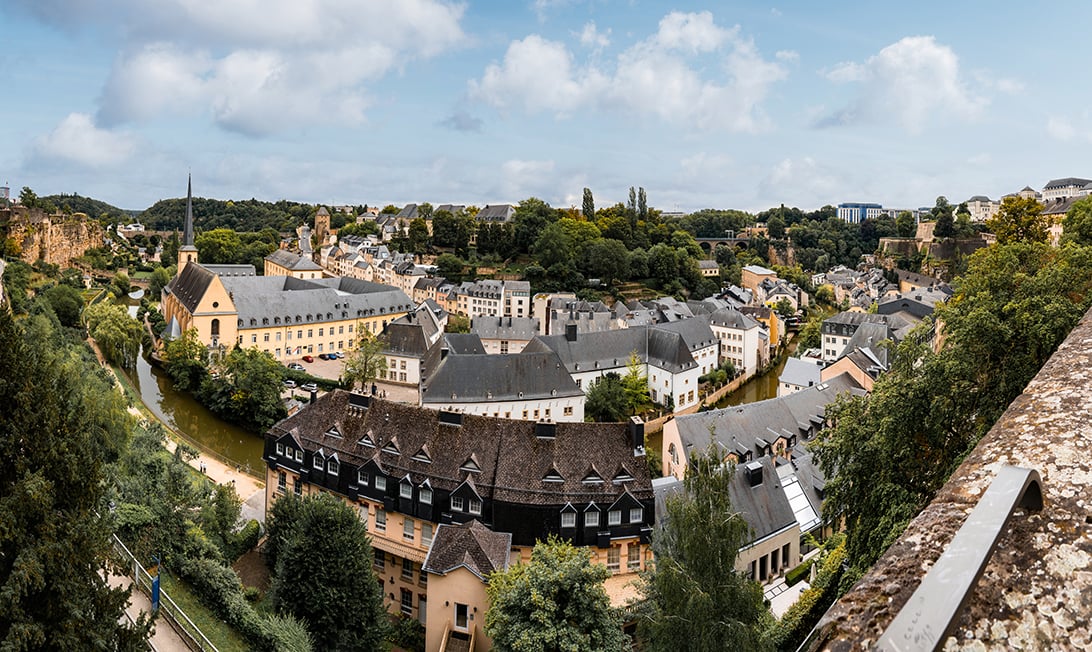
Checking out Luxembourg can also be nice since it’s easy to get to and fro from the Netherlands or Germany. It’s expensive as fuck and the eponymous city doesn’t offer much to see but there are some awesome Luxembourg Airbnbs including enchanting countryside castles.
Check out some of the micro-nations, too. Vatican City is super easy to include since it’s literally smack-bang in the middle of Rome – the world’s smallest country measures less than a square kilometre. Visiting Monaco is an easy day trip from the French Riviera, and San Marino from Bologna, Italy.
Staying in Andorra , on the border between Spain and France, is a great idea. It’s particularly gorgeous in the autumn. Liechtenstein is one of the weirdest places in Europe. Full of cool stuff, most tourists visit the town Vaduz for a day but the Liechtensteinian Alps are worth a couple of days of hiking!
Other than that, explore small villages. Go on multi-day treks. Climb the mountains that aren’t the Alps (though they are stunning). You could also just fuck off to Georgia for a bit to extend your stay (who cares if it is actually in Europe or not).
Couchsurf with locals. Spend a few extra days getting to know a popular city. Do things that aren’t on the “must-see sights” in backpacking Europe travel blogs.

We’ve tested countless backpacks over the years, but there’s one that has always been the best and remains the best buy for adventurers: the broke backpacker-approved Osprey Aether and Ariel series.
Want more deetz on why these packs are so damn perfect? Then read our comprehensive review for the inside scoop!
Well, with dozens of countries and countless cities in Europe to visit , it’s a bit hard to pinpoint the BEST things to do in Europe.
But you gotta start from somewhere. So here are some of the top things to do whilst backpacking Europe on a budget.
1. Go to a one-of-a-kind festival
Europe loves to celebrate every little occasion they can, be it the death of a saint, a harvest, or even just a long weekend. Between the cultural holidays – of which there are MANY – the seasonal festivals, and the more modern musical festivals, you’ll have many opportunities to just let loose. And let loose is what you should do.
You could check out the Carnival at Venice, get wasted in Dublin on St. Patrick’s Day, and get tomatoe’d at La Tomatina in Valencia. Let alone some of the world’s best music festivals like Boom Festival (psytrance), Glastonbury (pop-adjacent), and Roskilde (also pop-adjacent).
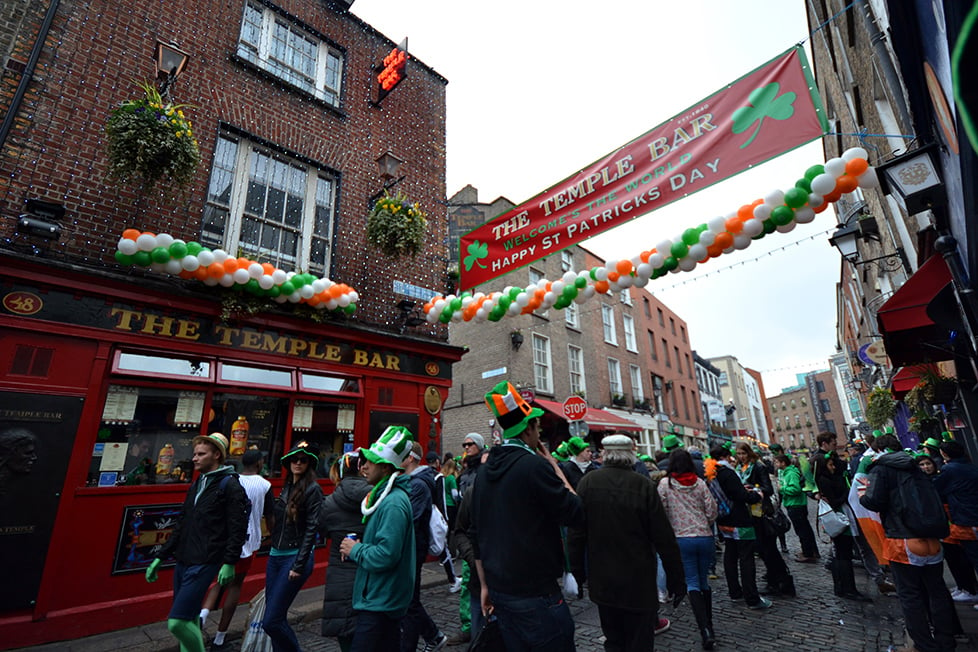
2. Go island hopping in Greece
Greece is composed of over 227 islands – which means there are over 227 places to go on an adventure. Live out your mythical fantasies on the islands of Ithaca or Crete, escape the hecticness of life on Sikinos, or join the hordes of partiers on Ios and Mykonos. Your choice.
2. Eat all the tapas in Spain
In Spain, tapas are not just a plate of food; they’re a way of life. They require time, attention, company, and most of all, love, to truly appreciate.
When visiting Spain, it is absolutely mandatory to sit down to a tapas meal with friends and to converse over them, preferably for an entire night. The best tapas are found in Andalucia, especially in Granada .
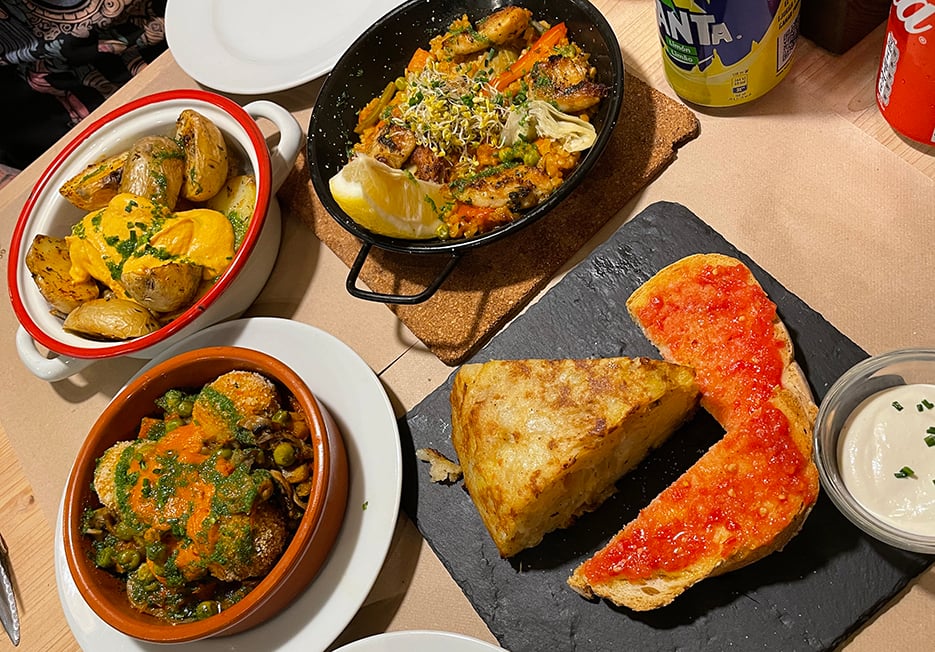
3. Hike in the Alps
Of all the great mountain chains in the world, the Alps are probably the most accessible. Over the years, it has been tamed and crisscrossed with so many trails that just about anyone can visit here. Tours around the 3 highest mountains in the range, Mont Blanc, Monte Rosa, and the Grand Combin, as well as the otherworldly Dolomites, are all exhilarating experiences and among the best hikes in the world .

5. Get cultured in Italy
The most historically significant and consequently most popular cities to visit in Italy are Rome, Venice, and Florence. These “museum cities” deemed culturally significant by the government are preserved as best as possible.
They are like interactive history lessons that you can walk amongst or even get lost in for days at a time. I highly recommend you make time for the Colosseum, the work of Di Vinci, and the Vatican museums.
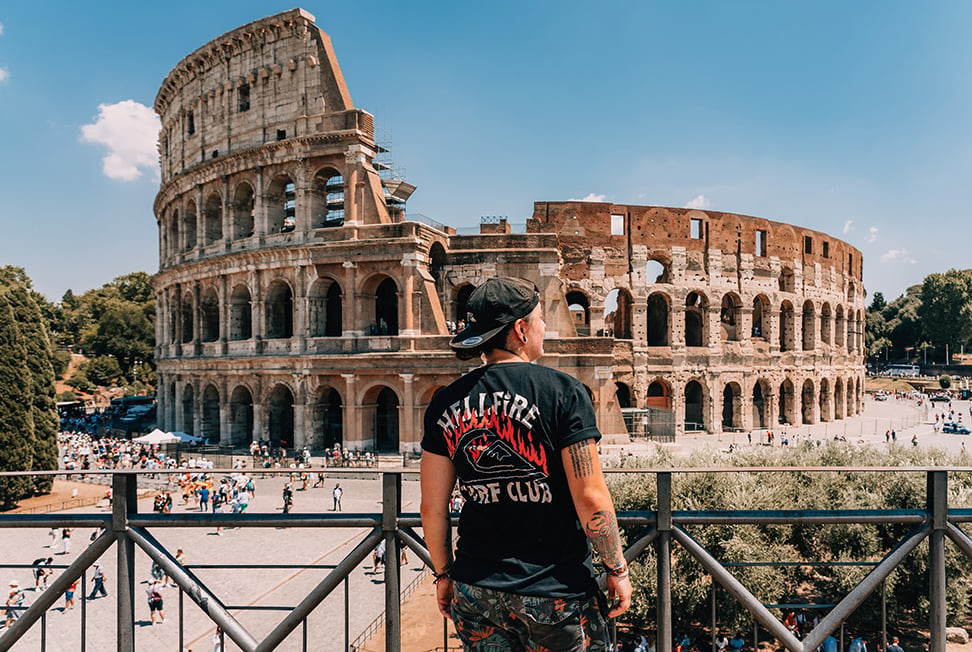
6. Dance like no one’s watching
The party cities in Europe are on a different scale than the rest of the world. I’m talking about Berlin, Amsterdam, and Manchester. The stories from the clubs are the stuff of legends.
The level of freedom and debauchery is enough to make even the most open-minded do a double-take. Even if you aren’t able to get into the infamous Berghain, you can take your nights (or days) whichever way you please.
7. Change your plans
It’s always good to have an idea of itineraries while you’re backpacking Europe. But there’s nothing more heartbreaking than falling in love with a place (or person? ) and having to leave for your next destination. So leave a bit of wiggle room in your route for surprises.
Extend your stay at the cheap hostel with the cute bartender. Buy the last-minute plane ticket to meet that travel buddy again. Let the universe take control a bit too.
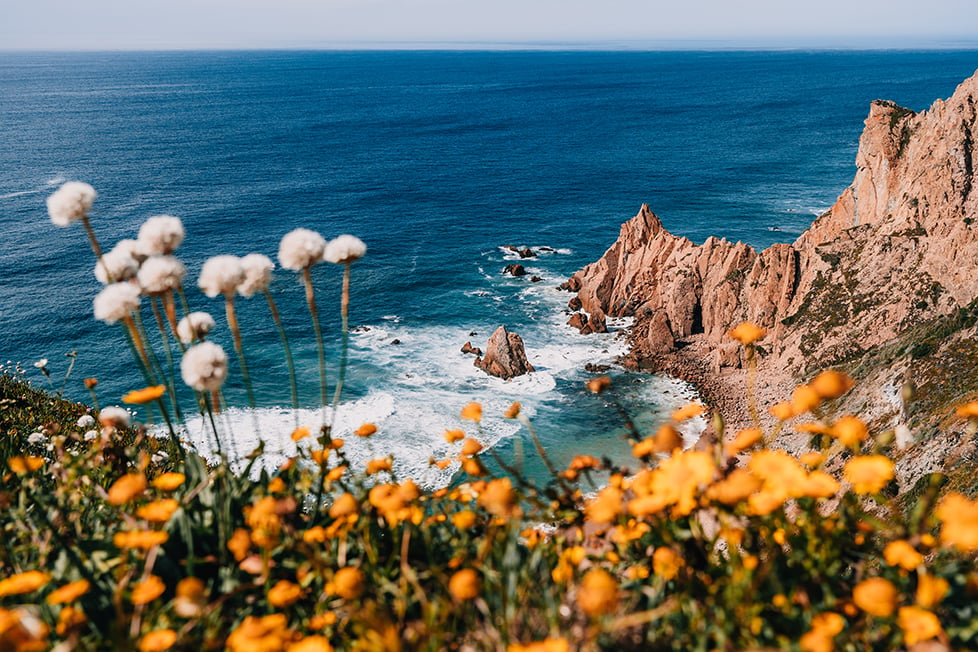
8. Take the scenic route
Europe has one of the most developed train travel networks in the world. You can get just about everywhere by rail, which is fantastic news when Backpacking through Europe!
These insane views and comfy carriages make some of the best train journeys in the world . It’s a classic; characters in The Murder on the Orient Express and Dracula have traversed the same rails. It’s damn romantic too, so settle down.
Granted, it’s more expensive than the bus so it’s not the best way to save money. But with high-speed trains, you can really make the most of your time on a Euro backpacking trip. So sometimes it’s worth the extra Euro.
9. Get High in Amsterdam
Would this really be The Broke Backpacker if I didn’t encourage you to sample some grade-A Dutch weed? The Dutch are very progressive when it comes to mind-altering substances so if you’re looking for a place to do some drugs safely and legally, Amsterdam might be to your tastes!
Just be respectful about it – residents of Amsterdam are not big fans of the hordes of drug tourists wandering the streets of the city.
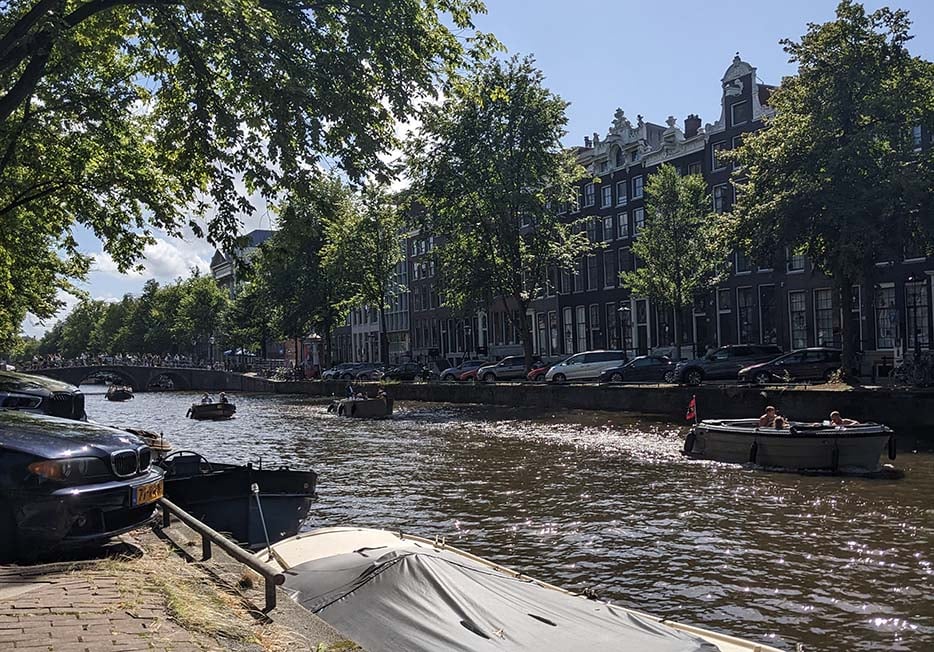
10. Deep dive into London
London is one of those amazing cities that you could spend a lifetime exploring. It has a reputation for being expensive – and there’s good reason for that.
But there are so many museums and attractions to visit – many of which are absolutely free! With cheap flights, free walking tours, and a London Pass , it can actually be a surprisingly budget-friendly destination. The British Museum, Buckingham Palace, and the London Eye are all worth putting on your Europe itinerary.
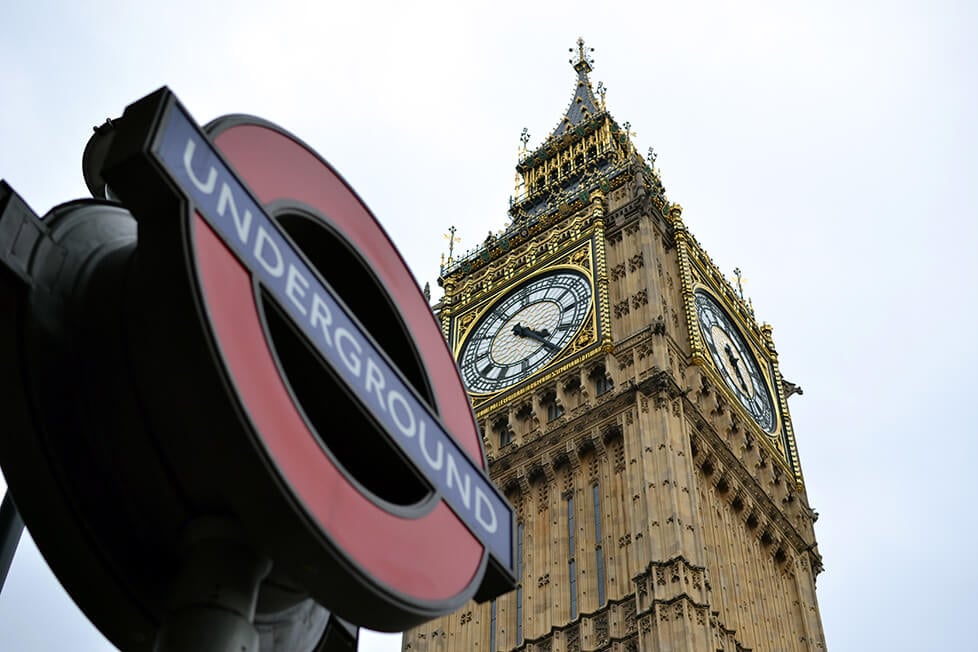
Wanna know how to pack like a pro? Well for a start you need the right gear….
These are packing cubes for the globetrotters and compression sacks for the real adventurers – these babies are a traveller’s best kept secret. They organise yo’ packing and minimise volume too so you can pack MORE.
Or, y’know… you can stick to just chucking it all in your backpack…
Hostels are the most affordable accommodation option for backpacking Europe on a budget. Well, aside from dreamy mountain huts, your awesome tent, and a stranger’s couch. Lucky for you, Europe is THE place for living da hostel life in all its glory.
This continent might hide some of the best hostels in the world – but arguably also the worst…
These incredible hostels in Europe come in all shapes and sizes. But remember, a cheap hostel isn’t necessarily a perfect hostel. In fact, it rarely is (but, yes, you can occasionally hit the jackpot).
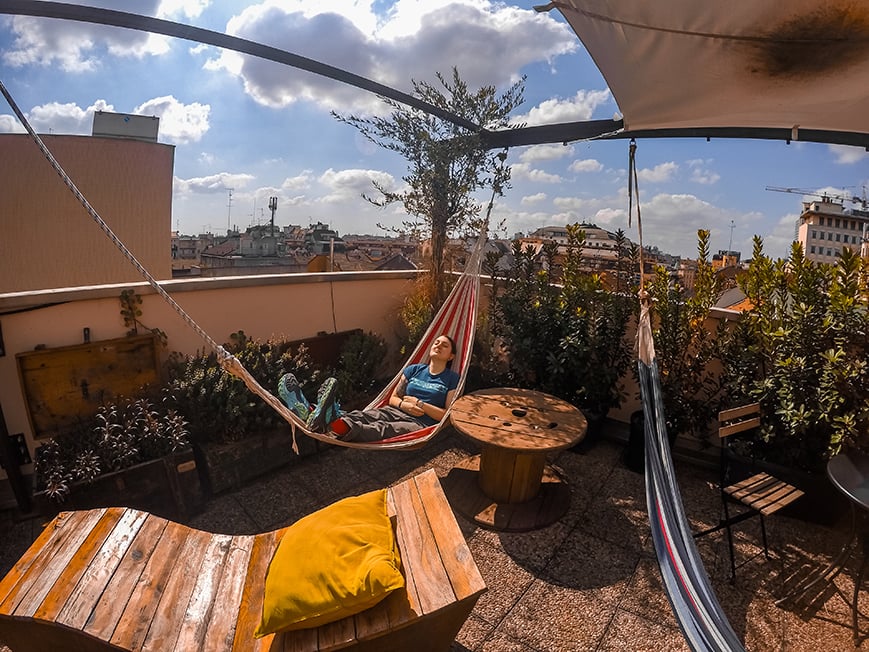
But not all of them are dedicated to parties. You’ll also find loads of boutique hostels for flashbackers, quiet rooms for families, and even some female-only hostels for solo female travellers .
Well, back to the good stuff. When you’re backpacking Europe, you find accommodation is generally very safe, clean, and fun. Pub crawls and get-togethers are a staple in almost any hostel.
But if you’re wanting to plan a trip to Europe on a budget… well, you’ll have to make do with sharing the bigger dorms. Even hostels can sometimes be a bit pricey in Europe, especially in France or Switzerland. Still, they’re way cheaper than Airbnbs or hotels.
Airbnb is a great option if you want some space away from travellers and a more authentic experience. Though they’re not always the cheapest way. If you’re in a group, the prices can be more reasonable.
- Where to Stay in Spain
- Where to Stay in Portugal
- Where to Stay in France
- Where to Stay in Italy
- Where to Stay in Scotland
- Where to Stay in Ireland
- Where to Stay in Switzerland
- Where to stay in Greece
Backpacking Europe does not have a reputation as a budget-friendly place for travellers . The prices in the popular tourist destinations have sky-rocketed in recent years, and it doesn’t look like they’re slowing down any time soon.
It’s pretty cunning actually. The cheap flights entice you in and BOOM: you’re stuck paying the price for it – literally.
For most travellers, booking hostels is your cheapest option. Cheap hostels range from around $25 – $50+ a night for a bed. If you’re in a group, Airbnbs can (but not always) be cheaper.
Though, where there’s a will, there’s a way. There is, and always have been, savvy travellers making their way around Europe with clever tricks to save money.
I recommend both of these options over hotels mainly because you usually get a kitchen to prepare your own food. Doing this can bring your food bill down to around $10 – $15 a day. You could easily spend more than this on one meal of you eat out. You can find street food for around $6 but it’s not always the best quality.
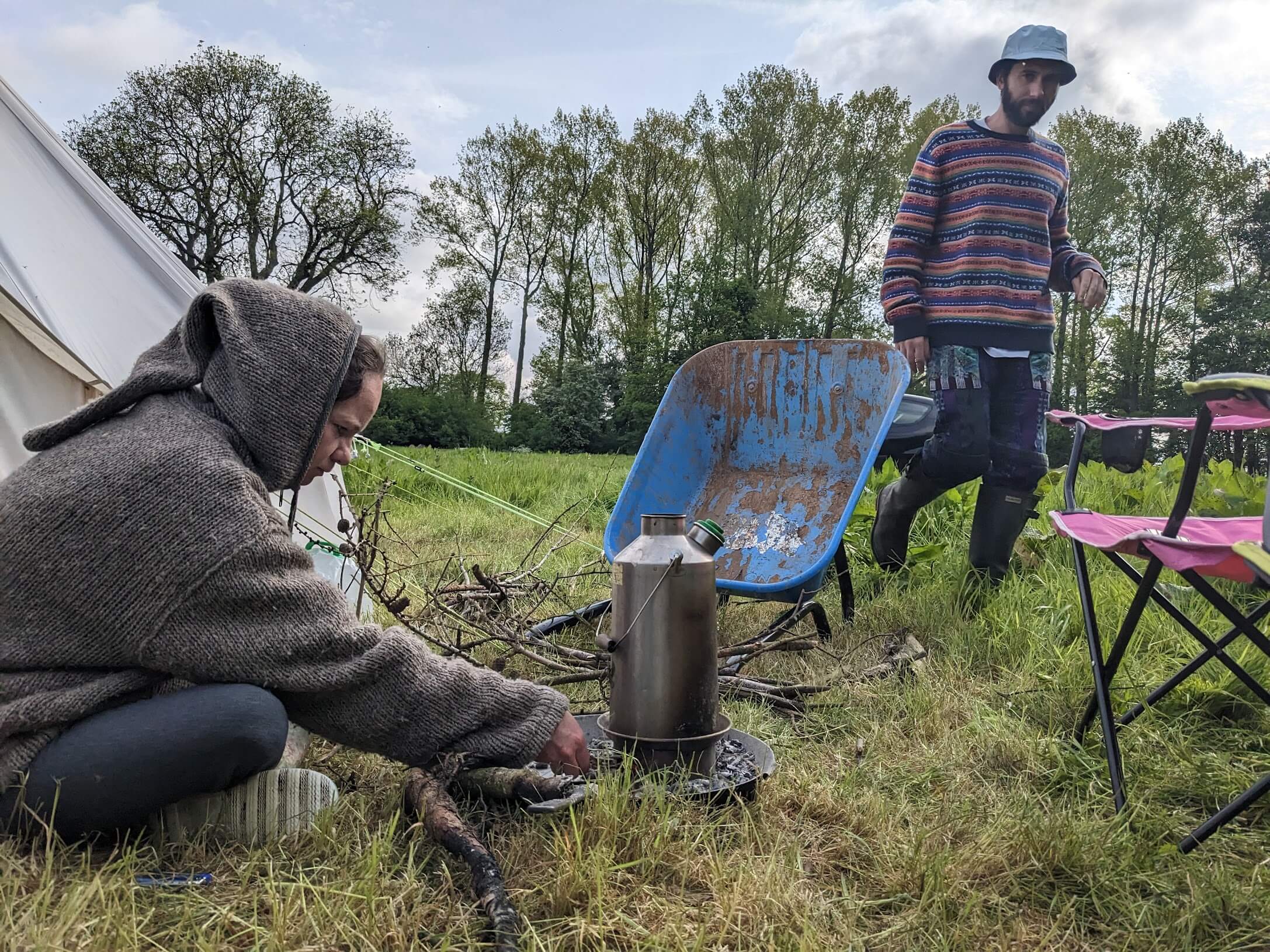
Booking flights, trains, and buses in advance is the best way to save money. That way, flights go for as little as $20 and buses $10. The same goes for accommodation: the sooner you book, the better deal you will get.
If you want to let loose a bit, drinks in bars are generally quite expensive which can be up to around $10 in some places! So most people in Europe pre-drink (buy cheap drinks from the supermarket to drink a home before they go out) . Hostel bars usually have the most reasonable prices.
One budget-saving tip for first-time backpackers is to sort out your travel banking . Currency conversions and ATM fees stack up.
Get a travel card like Wise (formerly Transferwise) . With this, you can easily combat extra charges. Especially if you’re backpacking trip through Europe has many countries, this will make things much cheaper.
A Daily Budget For Europe
I have broken down the average daily travel costs in Europe you can expect in order to help you get to grips with your own Europe backpacking budget.
Travel Tips – Europe on a Budget
Okay, so now that you got an idea of the average costs for backpacking in Europe… What if I told you that you could save even MORE? Here are some of the best money saving tips for travelling Europe on a shoestring budget.
- Camp : With plenty of awesome beaches, forests, stunning countryside, and far-flung mountains, camping whilst backpacking Europe on a budget is a great option. Grabbing a solid backpacking tent is never a bad idea! Just be aware that wild camping is illegal in most of Western Europe. So if you want to do it, you gotta be a little sneaky about it.
- Cook your own food: Travel with a portable backpacking stove and cook your own food to save some serious cash whilst backpacking across Europe. If you are on a tight budget, cooking grocery store food is your best option to save. With a stove in tow, you can do this even without a kitchen.
- Hitchhike : Hitchhiking is a 100% free and adventurous way to get around. In Europe, it’s pretty safe and easy although some countries are tougher than others.
- Couchsurf: The Portuguese, Greeks, Spanish, Germans — they are all awesome folks. Get to know some! Check out Couchsurfing to make some real friendships and see a country from the perspective of locals.
- Dive some dumpsters: Dumpster diving helps if you’re a little broke for a store-bought meal, too. There’s an art to it but you can soon get the hang of it.
Why Should You Travel to Europe with a Water Bottle?
Plastic washes up on even the most pristine beaches… So do your part and keep the Big Blue beautiful!
You aren’t going to save the world overnight, but you might as well be part of the solution and not the problem. I hope you become more inspired to continue being a responsible traveller .
Plus, now you won’t be buying overpriced bottles of water from the supermarkets either! Travel with a filtered water bottle instead and never waste a cent nor a turtle’s life again.

Drink water from ANYWHERE. The Grayl Geopress is the worlds leading filtered water bottle protecting you from all manner of waterborne nasties.
Single-use plastic bottles are a MASSIVE threat to marine life. Be a part of the solution and travel with a filter water bottle. Save money and the environment!
We’ve tested the Geopress rigorously from the icy heights of Pakistan to the tropical jungles of Bali, and can confirm: it’s the best water bottle you’ll ever buy!
So precisely when is the best time to visit Europe on a budget?!
Western Europe is a total madhouse in the summer; millions upon millions of tourists descend on the continent. Cruise ships fill the harbours, tour buses clog the road, and flight prices increase.
Whilst the middle of the summer can be a very beautiful time to visit, the summertime is the most crowded season and it is also the hottest. Portugal, Spain, France, Italy, and Greece can be so hot in July and August that all you want to do is switch places with that white wine bottle sitting in the bucket of ice.
Europe is also very prone to seasonal pricing. Prices rise with the temperatures in the summer.
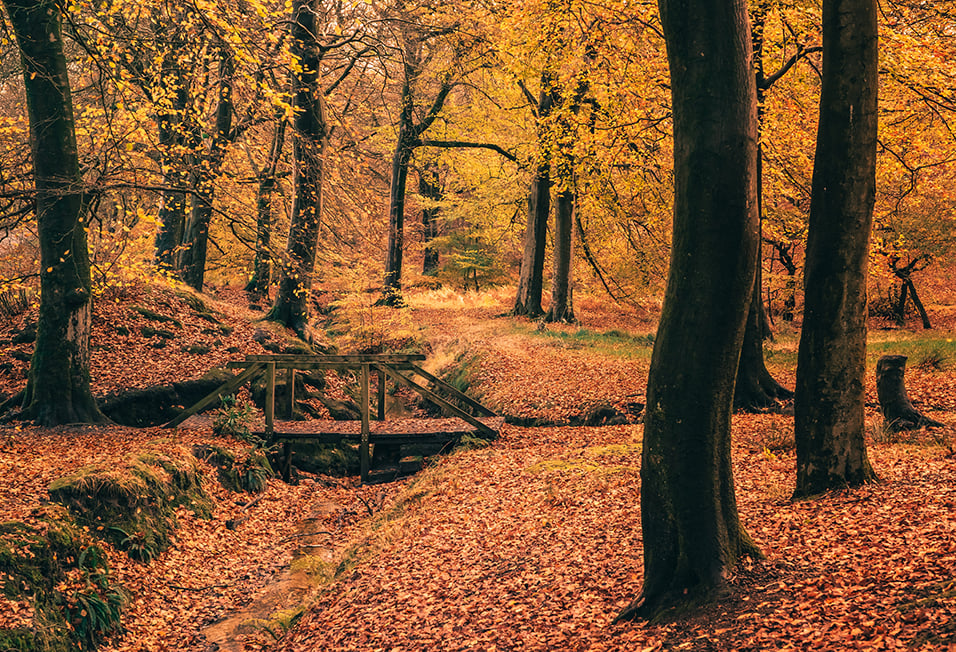
Point being, come in the summer if you must, but I don’t recommend it. The spring and the fall seasons are the best time to visit Europe on a budget. The temperatures are mild, and a majority of the people who were here on summer holiday have now sulked back to their offices and suburban hells.
Springtime in Paris and other European cities is as romantic as it sounds. Flowers are blooming and the birds are out. You can go in a t-shirt during the day without having the sun cook you alive.
You will find the lowest prices in most regions in the winter. Southern Europe – Algarve in Portugal, Andalucia in Spain, and Greek islands – is still pretty warm in the wintertime.
If you love winter sports, a winter visit is an obvious choice to explore the French, Swiss, or Italian Alps. Just note that pricing in ski destinations goes heads-up in the winter. The snow season is hugely more expensive than the summer.
Also, note on common European holidays: Europeans get around on their own continent a LOT during peak school holidays. This doesn’t necessarily mean higher prices but it DOES mean impenetrable crowds. Times to avoid outside of the peak summer season are usually mid-September, mid-February, Easter, and New years/Christmas.
What to Pack for Europe
When you’re backpacking Europe, depending on where you’re going and WHEN you’re going will change your packing list. Spain in the summer looks very different from Germany in the winter. But on every adventure, there are some things that are an excellent addition to your backpacking packing list that will really help your Europe backpacking trip.
On every adventure, there are 6 things that are an excellent addition to your backpacking packing list. They will greatly enhance your Europe backpacking trip too.

Snoring dorm-mates can ruin your nights rest and seriously damage the hostel experience. This is why I always travel with a pack of decent ear plugs.

Hanging Laundry Bag
Trust us, this is an absolute game changer. Super compact, a hanging mesh laundry bag stops your dirty clothes from stinking, you don’t know how much you need one of these… so just get it, thank us later.

Sea To Summit Micro Towel
Hostel towels are scummy and take forever to dry. Microfibre towels dry quickly, are compact, lightweight, and can be used as a blanket or yoga mat if need be.

Monopoly Deal
Forget about Poker! Monopoly Deal is the single best travel card game that we have ever played. Works with 2-5 players and guarantees happy days.

Grayl Geopress Water Bottle
Always travel with a water bottle! They save you money and reduce your plastic footprint on our planet. The Grayl Geopress acts as a purifier AND temperature regulator. Boom!
In order to get the most of your backpacking trip around Europe, you want to ensure that you get your phone plugged in and connected to a local network as soon as possible. That way you can use map apps to save yourself hours of being lost in city streets, get on Tinder to find yourself some company, and order in food on those days when you just can’t be bothered to go outside.
Note that if already have an EU SIM then it will work seamlessly in all over EU member states. However it will stop working when you leave the EU (such as when you cross from Eire to Northern Ireland or Montenegro to Serbia) . Likewise if you are visiting Europe from the US or Australia, you may find yourself having to change sims multiple times during your trip…unless…
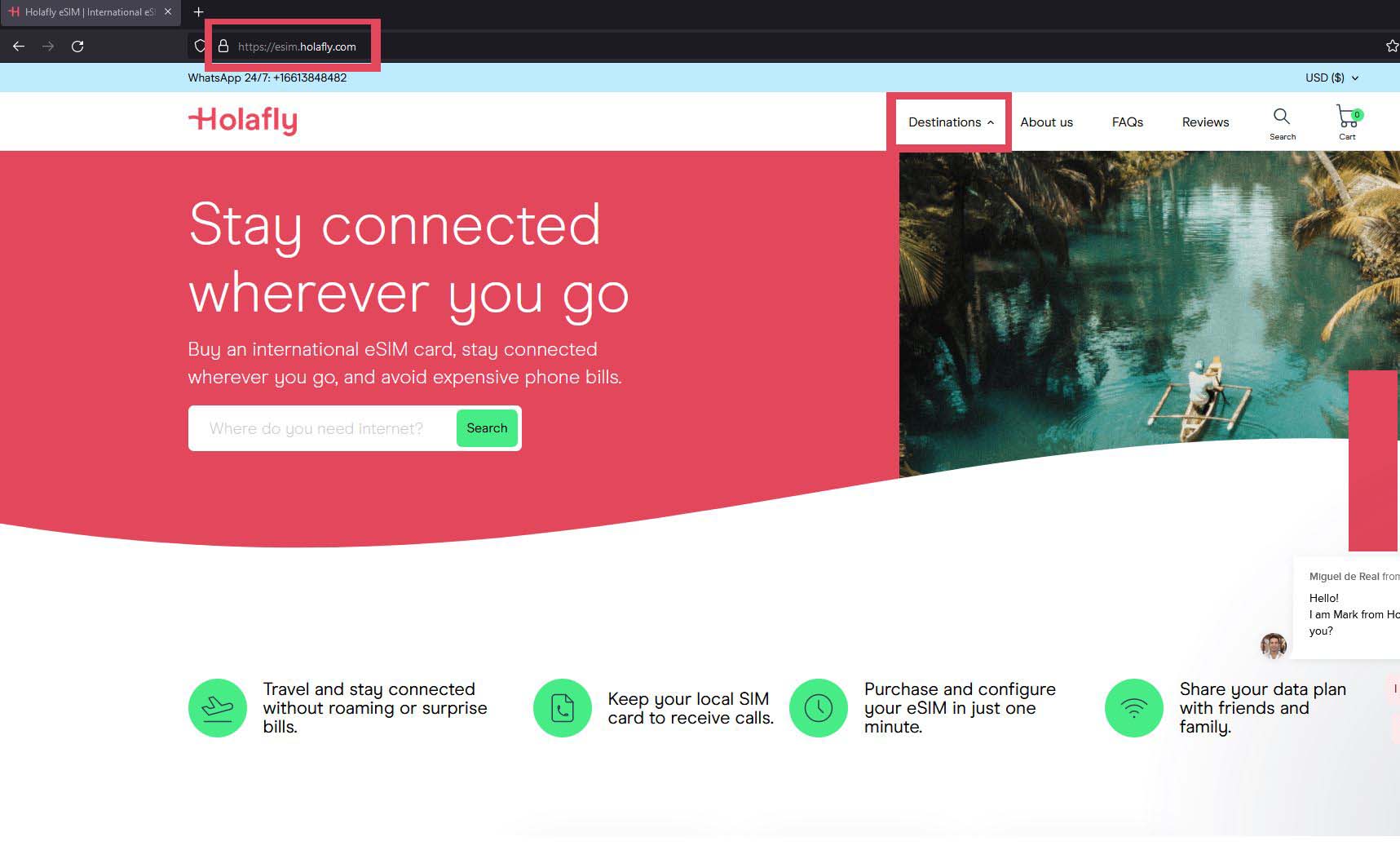
Our recommendation is to get yourself the HolaFly e-SIM Europe package . It works in 32 different European countries and offers unlimited data. There are a number of different packages available and the 30-day one costs $64 USD. What we particularly love about e-Sim is that you don’t need to remove your native sim, and can download your e-Sim package before you even leave home!
We have previously written a full HolaFly eSIM review which you can check out or else you can just hit the button below and check out the European Packages.
So how safe is Europe ? Very, very safe, actually.
There’s very little violent crime in Europe, traffic is mostly organised, and there are few natural disasters… The possibility of something bad happening to you on your journey backpacking Europe is slim, to say the least.
Your biggest concern is probably pickpockets and thieves. They particularly target crowded markets and train stations. Always be alert when moving about in big cities especially if you have all of your gear with you.
And those operating in big European cities are true pros – it’s not always enough to just keep your wallet in a purse instead of a back pocket. Keep a keen eye out, especially in Paris, Barcelona, and Rome.
The most popular European tourist sites are also teeming with scammers. With a little research on the most common tourist scams in Europe, it’s not hard to avoid them at all.
It is never a good idea to be out shit-faced drunk, alone, and loaded with cash – especially not at 3 am. Be smart, make good choices and it shouldn’t be too difficult to guard yourself and your belongings.
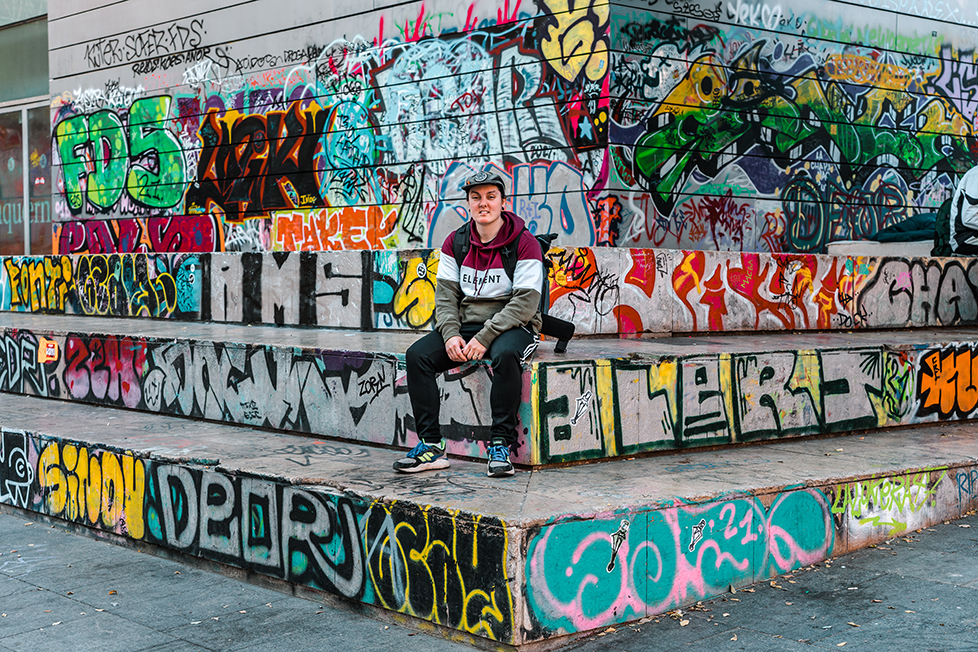
A few years back, Europe faced a string of terrorist attacks. Nothing new has arisen in the past few years so travellers shouldn’t feel worried about terrorism… And besides, unfortunately, we now know that these kinds of attacks are not only happening in Europe.
These events were rare but they did receive a lot of attention and negative press. That led to a lot of pro-nationalist anti-Muslim rhetoric across Europe even though plenty of other groups were also committing acts of violence.
And as diverse as a lot of cities in Europe are, Europeans, in general, are pretty damn white, and everyday racism is still well and alive. This doesn’t necessarily make Europe unsafe, it just means that it’s not impossible that ethnically diverse travellers might hear some snide commentary.
However, there are some happy news for other possibly-vulnerable backpackers: solo female travellers and LGBTQ+ travellers can thrive in Europe since Western Europe is generally safe for them.
- Is Amsterdam Safe?
- Is London Safe?
- Is Barcelona Safe?
- Is Naples Safe?
- Is Berlin Safe?
- Is Paris Safe?
Sex, Drugs, and Rock n’ Roll in Europe
Europe likes to party, a lot .
And not just one kind of partying, but all kinds of European Backpacking trip debauchery. There are your squats in Paris, beach clubs in Ibiza , warehouse raves in Berlin, music festivals in the Netherlands, all of that, and then some. You can’t beat chilling on some church steps at 3 am sipping negronis with friends either.
When it comes to partying, each culture has its own way of doing things. The Italians like the slow burn, starting with a spritz at aperitivo, then a nice dinner with wine, a cocktail at a local bar, before finally moving on to shots at the bar.
The Spanish are similar except they start all of this at 9 pm and go until 4 am. The Dutch appear to be hydrating all the time, but don’t be so sure; they’re big fans of the molly water.
You get the gist though. If you’re going to tour the party cities in Europe , you need to choose your parties well .
There are a couple of parties that shouldn’t be missed:
- Staying at one of the legendary party hostels .
- Going to a nightclub in Berlin. (Berghain is overrated – there are multiple that stay open 24/7!)
- Drinking in the piazzas of Rome.
- Dipping into a baggy in Amsterdam.
- A night in the Delirium Brewery in Brussels.
Also, be aware that not all European cultures take kindly to drunkenness. The Mediterranean cultures tend to frown upon people who can’t handle their shit. The further north you go, the less people care about your state of mind.
Getting Insured BEFORE Visiting Europe
Europe is a safe place to travel but that doesn’t mean you’re completely invulnerable. Sometimes you fall down the stairs in a club in Athens… or get your iPhone nicked on the Paris metro…
Going anywhere without travel insurance is too risky – so do consider getting good backpacker insurance sorted before you head off on an adventure. The best kind of travel insurance will cover both your material stuff as well as your physical self. Backpacking Europe can be a dangerous occupation.
ALWAYS sort out your backpacker insurance before your trip. There’s plenty to choose from in that department, but a good place to start is Safety Wing .
They offer month-to-month payments, no lock-in contracts, and require absolutely no itineraries: that’s the exact kind of insurance long-term travellers and digital nomads need.

SafetyWing is cheap, easy, and admin-free: just sign up lickety-split so you can get back to it!
Click the button below to learn more about SafetyWing’s setup or read our insider review for the full tasty scoop.
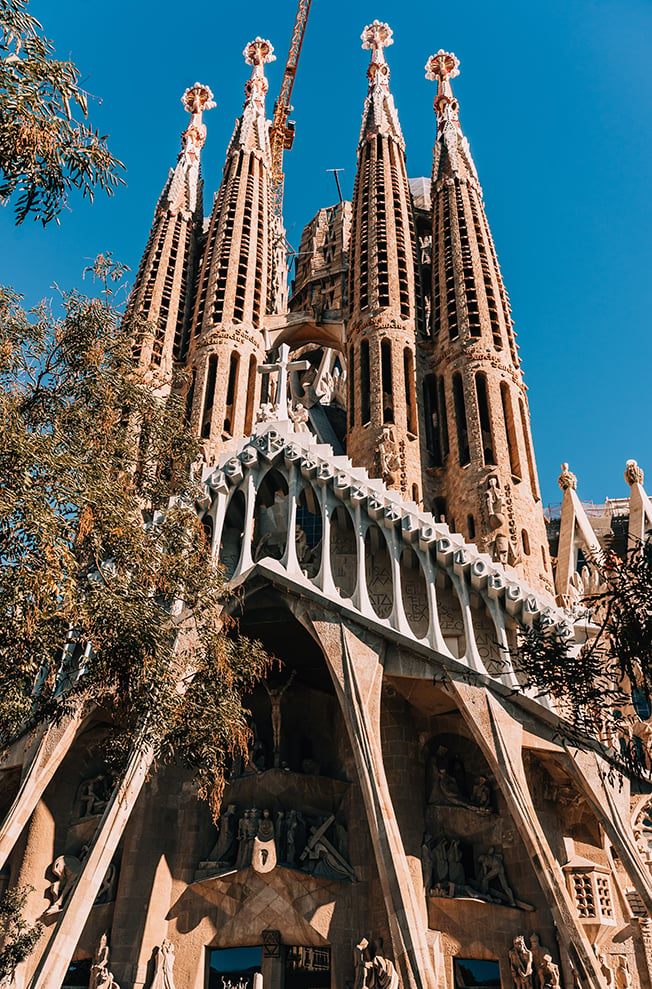
Of course, there is no one answer to this question. Where do you want to go backpacking?!
Once you dial in where you plan to go, it is only natural to start your backpacking Europe trip in the country first on your list. Easy!
Whilst looking for cheap airfare to your destination, I advise that you look at multiple cities and find cheap flights – even if that city isn’t in your targeted country. You can easily fly between capitals in Europe on the cheap, or take a super-cheap bus.
For example, if you want to begin your backpacking Europe adventure in Spain but the tickets to Paris are going for $200 less, odds are you can score a budget flight to Madrid or Barcelona from Paris for less than you would have paid flying directly to Spain.
Be wary that the Schengen zone is threatening to introduce a nice new piece of red tape for anyone outside of the EU for 2024. Keep up to date on the ETIAS website , where the EU are concocting new ways of making it hard to travel.
Insider tip : Those budget-friendly flights often charge an arm and a leg for baggage. If you just travel with hand lugagge, you’ll save money and spend less time in the airports. That means more time to actually visit Europe.
Entry Requirements For Europe
If you want to travel long-term in Europe , then you may need a Visa. Entry and Visa requirements vary between different European countries although many of them do follow broadly similar criteria.
For travel in EU countries, a Schengen Visa is required (unless you are from another EU country in which case all you need is your passport/ID). Note that some EU countries are not part of the Schengen agreements and separate visas are required for visiting. Thanks to almost borderlessness of the EU though, travelling between EU/Schengen countries is usually super easy.
The ETIAS system will begin working in 2024, so make sure you stay prepared for that!
Out of the countries covered in this guide, countries that are not part of the EU are the UK, Ireland, Switzerland, and Liechtenstein.
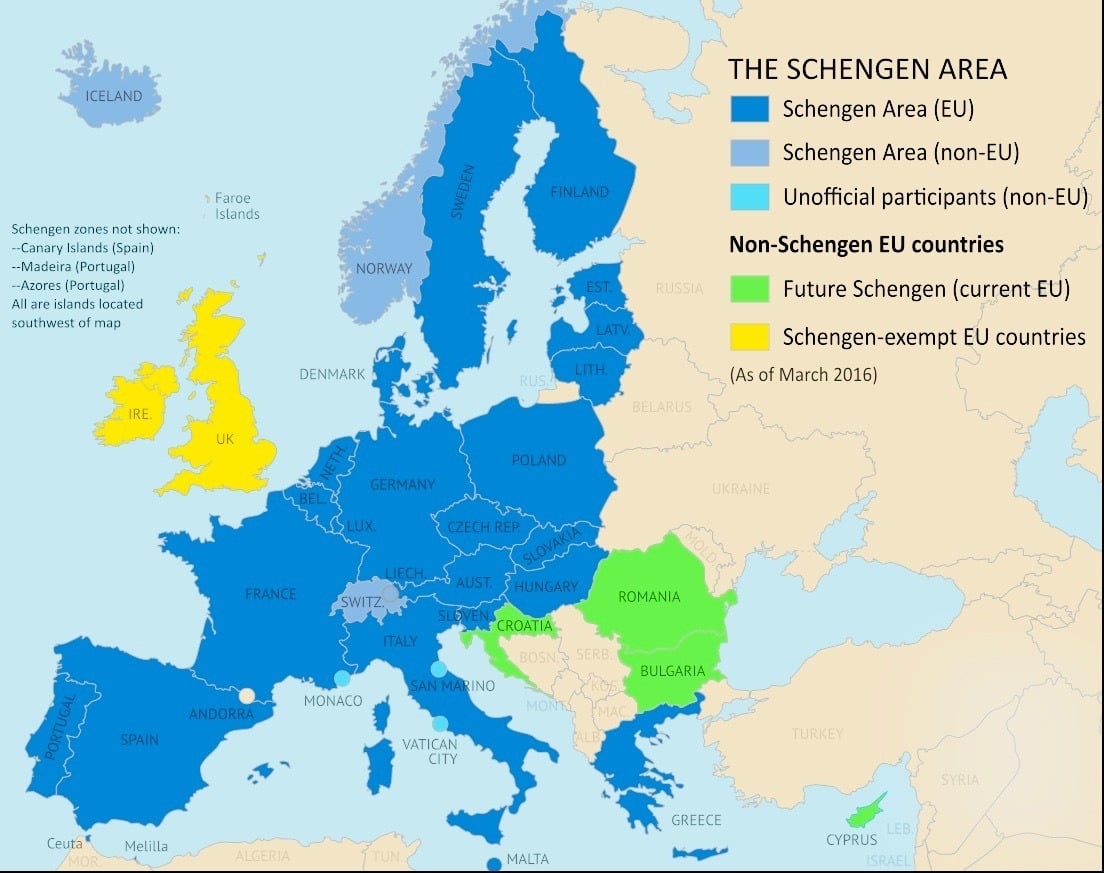
Citizens of the US, Canada, Australia, New Zealand, and Singapore can usually obtain visas for most European countries on arrival. It can be significantly harder for everybody else. Overstaying visas is not recommended.
It is very wise to work out which countries you wish to visit and check their individual entry requirements before you set off. Regarding overland travel, note that even if you are only passing through a country en route to another, entry requirements will still apply.
There are many great ways to get around Europe – and it’s super easy! Western Europe has excellent transportation networks and usually booking tickets online is hassle-free.
The cost of travelling around Europe CAN lighten your wallet though, especially if you travel a lot. To be able to travel Europe cheaply, you have to know the tricks to do it.
Here’s a quick breakdown of the best ways to travel Europe.
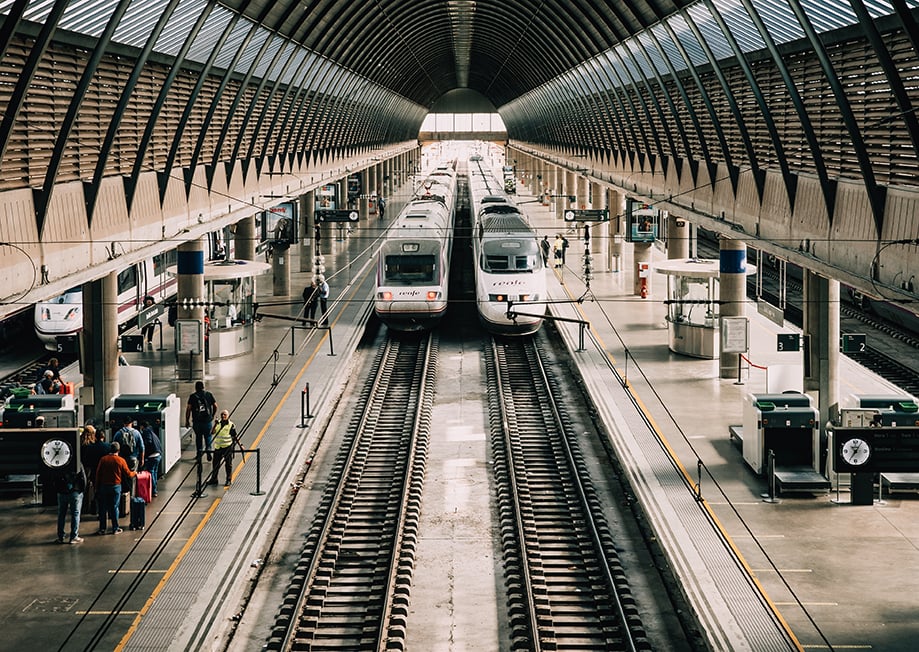
Long-distance buses are probably the cheapest option, though they tend to be the most time consuming as well. A 9-hour journey with a company like Flixbus is likely to cost you between 25-50 Euros depending on when you book.
I like Flixbus because, if plans change, you can cancel for a small fee and re-book when you’re ready. You can score long-distance buses for as little as 10 Euros if you’re really on it.
Many Western European countries might also have their own national budget bus lines.
Train travel is an awesome way to backpack Europe. Many backpackers specifically build their backpacking Europe itineraries around travelling on a train – this is called interrailing.
They’re really easy to use and there are all different kinds. Smaller domestic trains connect all corners of the countries.
High-speed trains and sleeper trains connect countries. The central train stations are usually right in the middle of the major European cities, often making it more convenient than flights.
If you plan on hitting up multiple countries in Europe, the Eurorail Pass is a great option. You can buy a rail pass for one country or for all of Europe. Buying train tickets individually adds up fast, so buying a pass is a great trick to travel Europe on a budget.
Renting a car is surprisingly affordable in Europe and will give you unrestricted freedom to go and do what you want. And finding a car rental is no trouble at all.
Booking in advance is the best way to ensure you score the lowest price and your choice of vehicle. Often, you can find the best car rental prices when you pick up the rental from the airport. You can easily rent a car from any major city in Europe.
Driving in Europe is also pretty easy with lots of well-maintained highways and clear signage ahead!
You don’t feel like driving yourself? BlaBlaCar is a great website for connecting drivers with people interested in carpooling. You do have to pay for the ride. However, it’s usually cheaper than a train, faster than a bus, and more fun than travelling alone!
Travelling by campervan is the most classic, most awesome option. You have unparalleled freedom and access to places you would not otherwise have. You also eliminate the need to pay for accommodation every night.
If you’re travelling long term, it can be a great way to travel Europe on a budget if you buy your own campervan. For shorter term travellers, renting a campervan is easy to do all across Europe. Then you get complete freedom within the contient.
Those long, long highways of Europe are just begging for someone to get on them on two wheels… Europe is an excellent destination for long-distance motorbikers and bicyclists.
For motorbiking, France and Germany are particularly popular. For bikepackers , the Netherlands is pleasantly flat to cycle around.
Europe is one of the best places in the world to hitchhike, even long distances. I recommend studying a map before sticking your thumb out there.
Try to get an idea of which roads you need to take to get to your destination. Europe is full of tiny, winding backroads that splinter off in all directions.
It goes without saying that you should not try hitchhiking in major cities. While hitchhiking in Europe is safe generally, it is important to be on your guard and use good judgement when accepting rides.
From personal experience, hitching rides in Western Europe can be tricky. Finding rides along major highways – that Western Europe is full of – can be hard as there aren’t good places for cars to stop (looking at you, Germany and Northern Greece).
In other places, like Spain, I struggled to find rides because lots of people (falsely) seemed to think that hitchhiking was illegal. Plus, Western Europeans’s got places to be and might not be receptive to picking up a stranger.
The best hitching luck I had was in Switzerland, Austria, and France. I highly recommend trying it everywhere though!
Onwards Travel from Europe
Europe is home to many major global travel hubs and international airports. This means you can get anywhere in the world – often with a direct flight – depending on where you’re going. If you are on a grand European or world tour, heading to Eastern Europe and making your way into Turkey and beyond is a straightforward affair.
In fact, you can fly from London or Paris to Istanbul for as little as 20 Euros with some forethought (although rare). Plus, you’ll find lots of train options going to Istanbul from all over Europe.
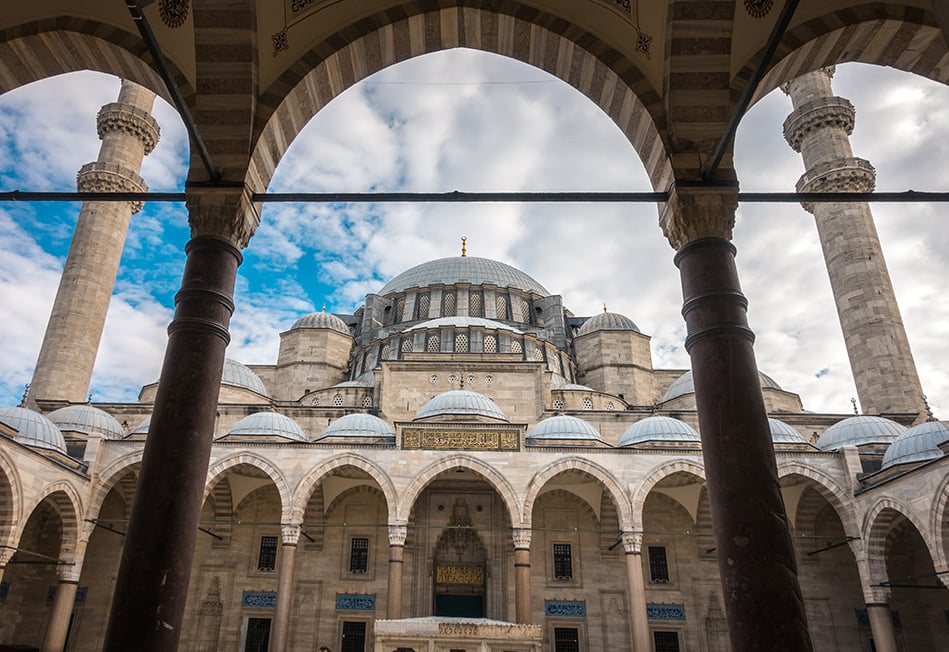
Keep in mind as well that countries in North Africa are sometimes just an hour or two flight away. Backpacking Morocco and Tunisia are great options after travelling Europe on a budget. There are also daily boats from Southern Spain to Morocco for about $40 USD – not too pricey at all!
Boats run to North Africa from Sicily too, so if you fancy marauding in Tunisia , you can easily hop over from Italy. I would strongly advocate for this, because backpacking Europe is not complete without a little Africa.
Want to spend more time in Europe? No problemo!
While the cost of living in most Western European countries is quite high and work visas can be tricky to navigate, there are lots of options available for industrious backpackers. (Though you DO need a work visa pretty much everywhere.)
The UK and Ireland are especially popular for native English speakers; there are tons of Aussies living in London.
EU nationals don’t usually need visas to work in other EU countries so things are easier for them.
And you didn’t hear this from me… but there might be a chance for backpackers to do a bit of work under the table as well. Get chatting with locals, stay open, and keep your ears perked. There are lots of backpackers earning a bit of extra cash from helping out in bars, farms, and festivals, especially in the summer travel season.

A new country, a new contract, a new piece of plastic – booooring. Instead, buy an eSIM!
An eSIM works just like an app: you buy it, you download it, and BOOM! You’re connected the minute you land. It’s that easy.
Is your phone eSIM ready? Read about how e-Sims work or click below to see one of the top eSIM providers on the market and ditch the plastic .
The Digital Nomad Scene in Europe
Despite certain weather challenges, Europe is HUGE for digital nomads. Sure, most countries in Western Europe are real expensive to live in. That doesn’t mean they wouldn’t attract digital nomads.
London, Berlin and Amsterdam all have massive digital nomad communities. However, these nomads may not stay in the city all year. They are also usually more high-earning nomads.
Those just starting to learn how to be a nomad prefer to head to eastern Europe – Bulgaria, Ukraine, Romania, and Hungary are all top destinations for broke nomads.
Portugal is hands down the best country for digital nomads in Europe. It’s one of the more affordable countries (although getting more and more expensive), extremely nomad-friendly both in terms of community and locals’s attitudes towards nomads, and super fun. The weather also isn’t half bad! In the Algarve, you can get +30 Celsius temperatures even in the winter.
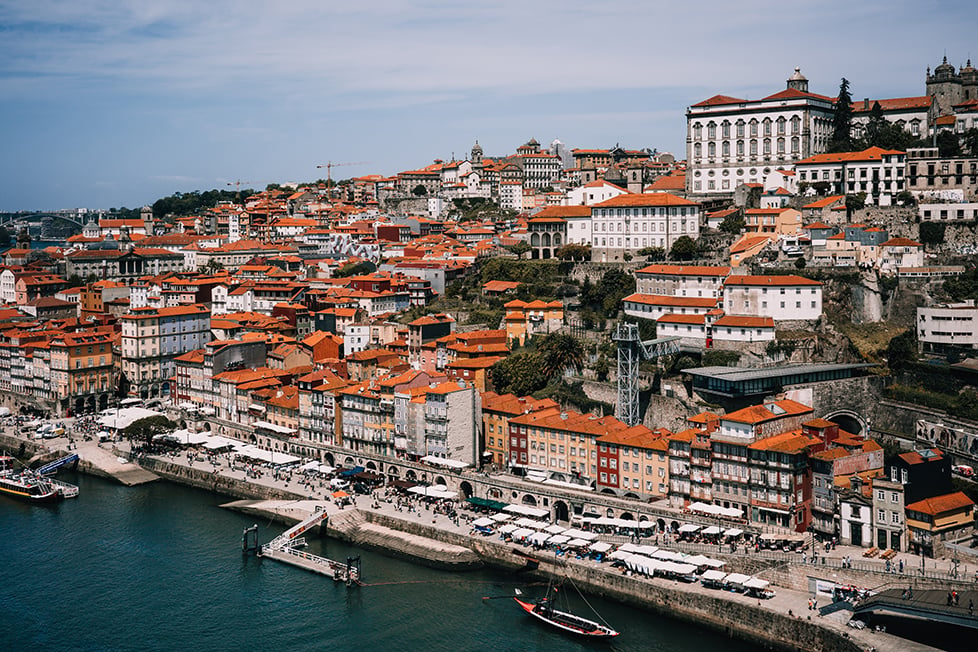
If Lisbon and Porto are not your speed, definitely consider staying in Madeira . The Portuguese island is rapidly becoming one of the top destinations in the world for digital nomads.
Other cool places for nomads are Greece (especially Athens) and the Canary Islands in Spain. Both are affordable on Western European standards.
Internet is pretty much a non-issue in Europe . Most of the major cities have high-speed fiberoptic cables lain and the more remote villages have decent coverage. Whilst hiking the Dolomites, I even got 4G using my local SIM card. I could’ve worked in a local rifugio for a few days!
Is this the best digital nomad-friendly hostel in the world?

Come visit Tribal Bali – Bali’s first specially designed, custom-built co-living hostel…
Bali’s most special backpacker hostel is finally open…. Tribal Bali is a custom-designed, purpose-built co-living hostel – a place to work, rest, play and stay. A place to find your tribe and hands down the best place in Bali to hustle hard and make new friends…
Volunteer in Europe
Volunteering abroad is an amazing way to experience a culture whilst helping your host community. There are plenty of different volunteer projects in Europe including teaching, construction, agriculture, and pretty much anything.
The list of volunteering opportunities in Europe is pretty much endless. Will you run pub crawls at a hostel in Spain? Help herd sheep in the French Alps? Give hand to a music festival in the UK? The sky’s the limit.
Short-term volunteers usually won’t need a permit, but anyone from outside the EU will need a Schengen Visa to volunteer in Europe for over 90 days.
There are many ways to find volunteer opportunities but the best way is to start online. Check out some of the best work exchange websites to get started.
The team at The Broke Backpacker have used and can personally recommend Worldpackers . I feel like Workaway is the biggest platform but that doesn’t make it the best.
A heap of the European cultural identity is built on its history. Italy and Greece are home to some of the most brilliant ancient cultures; France is considered the origin of enlightenment; Portugal has a strong (although complicated) history in seafaring and exploration.
It’s no coincidence that Europe has more UNESCO World Heritage sites than any other continent. When it comes to art, heritage, sports, and music, Europe is considered by many to be the heart and origin of Western culture.
The first and absolutely most important thing that you need to know about culture in Europe is that people are not “just European”. In fact, using “European” as a blanket term for everyone who lives on the continent is pretty ridiculous since it doesn’t really begin to describe anything.
According to Britannica , there are over 160 distinct cultures in Europe, though if we’re being honest this number could be higher. Within each of these cultures are sub-sections and divisions with their own national, religious, and historical identities.
There are over 160 distinct cultures in Europe , though if we’re being honest this number could be higher. Within each of these cultures are sub-sections and divisions with their own national, religious, and historical identities.
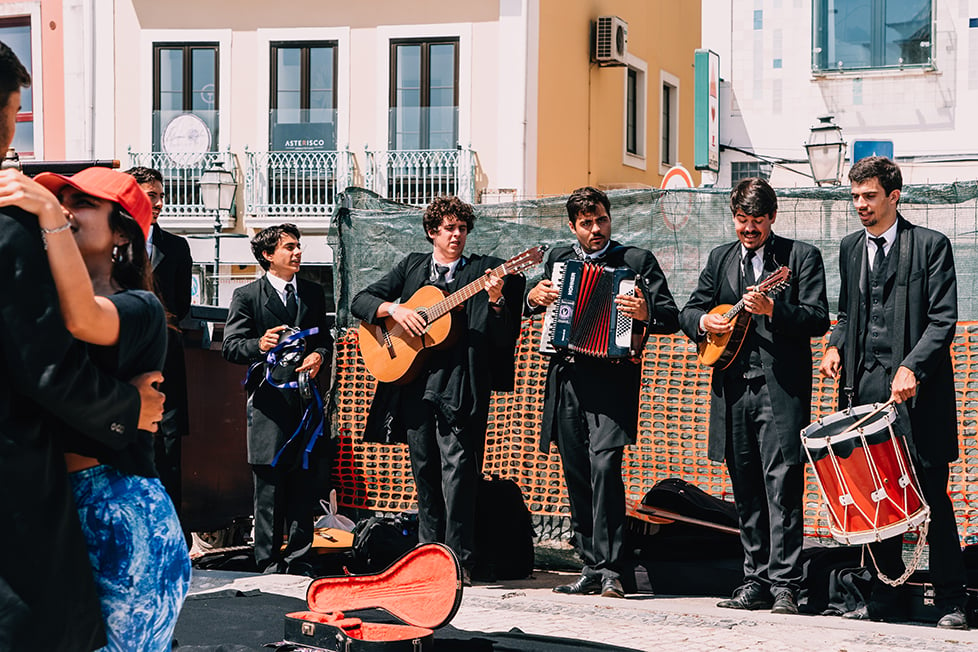
What this means is that many people are very proud of their cultural identities and can be mildly offended if you try to paint everyone in the same colour. For example, the Scots are very proudly Scottish, and you definitely shouldn’t try to call them English.
At best, culture in Europe shows in celebration. At worst, rising tensions related to immigration have given wind to some ultra-right nationalist ideals. (Yikes.)
Europe is also, overall, very modern. Expecting “traditional” stereotypes is a bit silly. People mostly don’t dress in national costumes; at Oktoberfest, the people wearing the fake lederhosen and dirndl are tourists. Not everyone knows flamenco in Spain – in fact, it’s a dance that originated from the Romani community especially in Southern Spain.
Football fans are crazy everywhere though, that much is true.
What to Eat in Europe
The food in Europe is so varied that my mind reels just trying to think about it. Where do I even begin?
First off, people are extremely proud of their culture’s cooking. Italians sing praise about the quality of ingredients and the simplicity of their style. The French boast about their prowess in the kitchen and complex techniques. The Spanish of course love to talk about their tapas culture.
Secondly, though European culinary traditions have very long histories, most changed completely in the last few centuries. The introduction of new ingredients from the new world was nothing short of revolutionary. The Italians received the all-important tomatoes, the English imported curry, and the Germans got the Turkish kebab.

Most European culinary traditions have very multicultural pasts. North African traders and immigrants have had a profound effect on the Mediterranean diets and cultures as distant as China have purportedly influenced the creation of pasta.
All I can say is that a backpacking trip through Europe will be like a tour of heaven for your stomach. There are so many different kinds of food to try and a staggering amount of diversity. My best advice: try the usual suspects but be sure to experiment a bit.
Must-Try Dishes in Europe
Here are some of the best foods you have to try while backpacking in Europe:
- Pasta (Italy) – A VERY general term: pasta can mean a lot of things. Be sure to have more than just spaghetti.
- Coq Au Vin (France) – A simple, yet delicious stew made from chicken, wine, mushrooms, and garlic.
- Pies (UK) – A staple of just about every pub and inn in the UK. Simple and satisfying.
- Haggis (Scotland) – A slightly spicy mixture of internal organs cooked in a lamb’s stomach is actually really delicious.
- Pastel de Nata (Portugal) – A small, custard-filled egg tart that originates in Lisbon.
- Paella (Spain) – Rice prepared in a special pan and often prepared with seafood.
- Moules Frites (Belgium) – Mussels prepared in different kinds of sauces and served with fried potatoes.
- Souvlaki (Greece) – What most people imagine to be “gyros” when gyros is just a general term for shaved meat.
- Schnitzel (Germany) – Meat flattened, breaded, and fried.
- Sachertorte (Austria) – A delicacy of Vienna and perhaps one of the best cakes in Europe.
- Stroopwafel (Netherlands) – The best sweet treat ever.
Europe’s super-varied landscape and wealth of cultures mean that there are heaps of cool new experiences to have. Go beyond your regular pub crawls and walking tours and check out some unique experiences you can only have in Europe.

Things go wrong on the road ALL THE TIME. Be prepared for what life throws at you.
Buy an AMK Travel Medical Kit before you head out on your next adventure – don’t be daft!
Hiking in Europe
Europe is a land blessed of incredible hiking opportunities with trails both for expert trekkers and beginner hikers . Each country has a wide range of day hikes and multi-day treks on offer. Trekking is a great way to get to know any country by experiencing its wild side.
In addition to well-maintained trail systems, many regions in Europe have a network of mountain huts. For a fee, you can enjoy these super comfortable and unique fixtures of the European mountains.
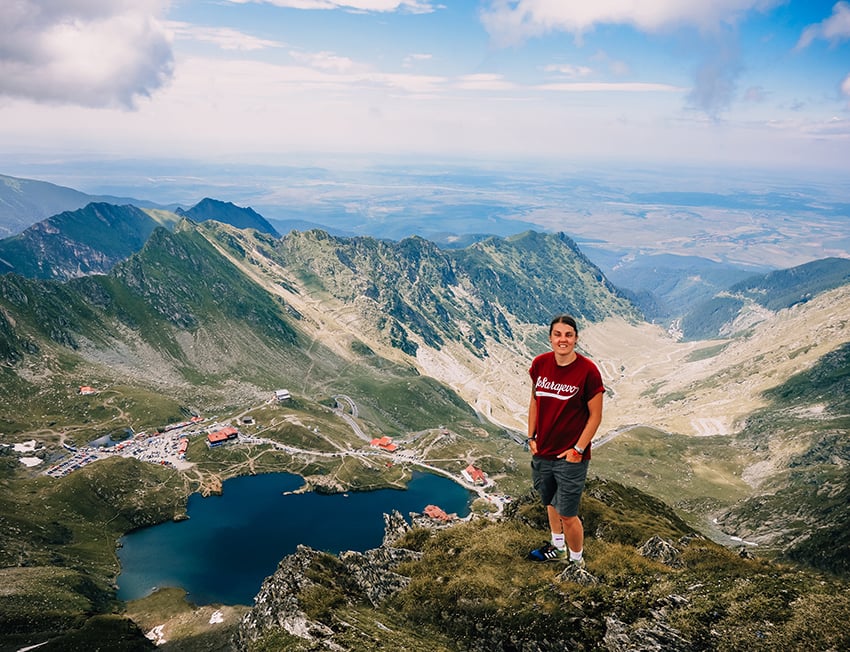
Here are a few of the best hikes in Europe to get you psyched for an outdoor adventure of your own.
- Mt. Etna Trek, Sicily, Italy : Climbing an active Volcano in Sicily is as much fun as it sounds.
- Walkers Haute Route, France-Switzerland (Chamonix to Zermatt): A famous high route from Chamonix to Zermatt. The trek features absolutely classic alpine scenery, snowy peaks, glaciers, high meadows and deep valleys, and close-up views of such icons as Mont Blanc and the Matterhorn.
- Tour Du Mont Blanc, France: The unforgettable circuit around the Mont Blanc massif. Outstanding views up to Mont Blanc, Western Europe’s highest at 4,810m, and out across the dramatic peaks, glaciers, and deep green valleys of the high Alps. If you have the time, this might just be the most scenic (and most trafficked) hike in Western Europe.
- El Camino de Santiago, France – Spain: Perhaps the most popular long-distance trek in the world , El Camino is an important trek in the hearts of religious pilgrims and outdoor enthusiasts alike. The Camino is actually multiple trails leading to Santiago de Compostela and eventually Finisterre, “the end of the world”.
- Mount Olympus, Greece: The fabled mountain where the ancient Greek Gods were supposed to have lived is very climbable in just one day.
Surfing in Europe
Many backpackers are unaware that there is some killer surf to be found all across Europe. Portugal is certainly famous for having massive waves and the associated surf competitions.
That said, if you are keen on surfing at some point as you’re backpacking through Europe, you do have some options. Below I have provided a shortlist of surfing hotspots in Europe.
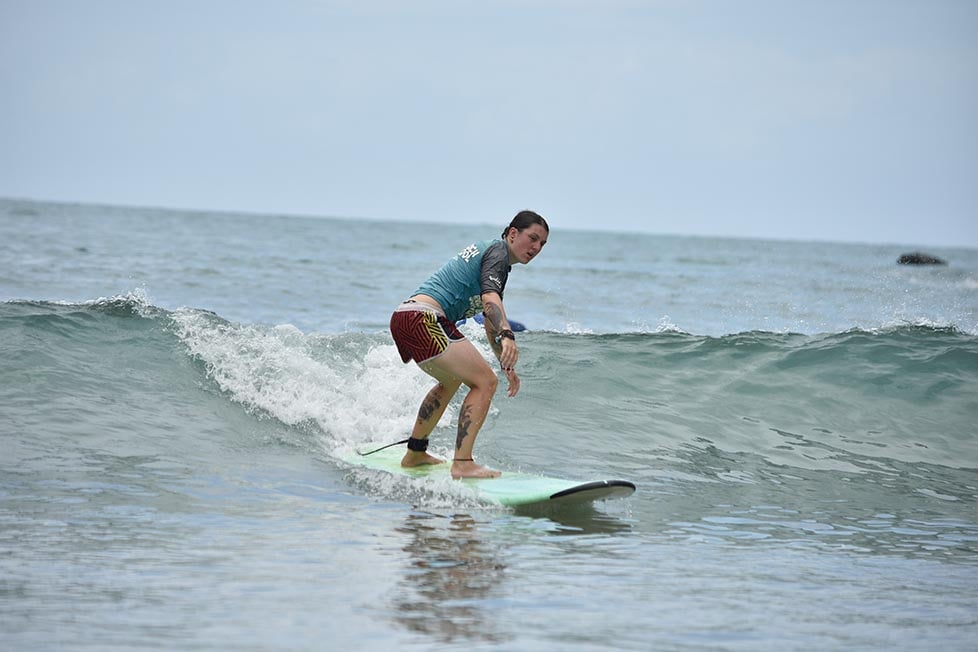
- Biarritz, France : One of the oldest known surf meccas of Europe. The surfing here is great for beginners as well as seasoned rippers.
- Newgale, Wales : Surfing on this beautiful stretch of coast facing out towards the Irish Sea; the waves here are powerful and the views are epic.
- Belhaven Bay, Scotland : This surf spot is only an hours drive from Edinburgh! Make sure you have a good wetsuit. Not the warmest water in the world, but the waves are good at times.
- San Sebastian, Spain : When not eating and drinking, it is easy to hit the beach and catch a few waves before resuming the former.
- Lagos, Portugal : Probably the unofficial capital of surfing in Portugal. There are many surf schools across Lagos that will help you tune up your surfing game in no time.
Museums in Europe
Europe is the world’s best continent to tour museums, both art and history adjacent. (That might have something to do with plundering other countries’ national treasures and refusing to return them… But uh, let’s not focus on that.)
Europe’s best museum city is London. Most of London’s museums are free to visit, and they have some of the best collections of art and historical relics from everywhere in the world. (Again, for certain reasons…) My favourite museums in London are The National Gallery, The Natural History Museum, The British Museum, and Victoria and Albert Museum.

Paris is strong in the museum game too. Definitely visit the Louvre and its most iconic resident Mona Lisa. Don’t grumble about it being small, it’s still awesome. For more morbid explorers, the Paris Catacombs offer a cool glimpse into the city’s history.
More honourable mentions to go Reina Sofia in Madrid, Rijksmuseum and Anne Frank House in Amsterdam, and Dachau concentration camp in Germany (it counts).
Bring your ID – some places, like the Louvre, have free admission to students and people under 25.
Got questions about backpacking Western Europe? I’ve got the answers!
Where should I start backpacking through Europe?
Backpacking through Europe is a momentous task, but starting in Britain or Portugal will stop you having to make tedious back and forth journeys. You don’t want to be doubling back on yourself when distances are so large! That said, you can really start anywhere, just make sure you’ve got enough cash to fly home 😉
How long is the average backpacking Europe trip?
On average, backpackers make a 2-3 week route travelling around Europe. If you want to visit Europe properly, you can easily spend 6 months or more pedalling around. Try going for 2-3 months if you want to get a much fuller picture of what it is like.
What is the Cost of Backpacking Through Europe?
As with anywhere, the cost of backpacking Europe will be down to you, where you go, and how you spend. Western Europe is more expensive and will most likely require $50-$90/day, whilst heading east can put your budget lower, at around $30-$60/day. On top of transport and flights, Europe can seriously add up…
Where are the hottest people in Europe?
I’d say Finland. Source: I’m Finnish. Apparently Nordic people are, statistically, very sexually liberated on a global scale. But I would personally like to guide your attention towards Southern Europe… Greek Tinder is something else, hey.
Who feeds the Loch Ness monster in Scotland?
The park rangers feed the sea snake with tourists that behave badly and/or ask stupid questions. There’s also a bloke who has been on the lookout for years and never seen it. Take from that what you will.
Congratulations! You made it to the end of my Europe travel guide!
I hope the information I have provided will help you navigate the exciting European journey you have decided to embark on. Backpacking in Europe will be one of the most fun experiences of your life, I have no doubts about that.
Europe can be one hell of a place to let loose and have a good time. Between the party-hearty music festivals, discotheques, rave scenes, pub crawls, and other venues of hedonistic tendency, there is ample opportunity for backpackers to get down.
Have fun on your Europe backpacking journey – but like my mum would say, not too much fun! Partying every day is one of the most common backpacker traps that travellers fall into.
When visiting historic sights or religious monuments, be respectful. Certainly do not climb on old ruins or touch priceless paintings. Europe is full of historical treasures. Don’t be that dickhead that contributes to their demise and destruction.
When you can, make an effort to learn at least a few words of the local language of the country you are backpacking in. It’s a challenge as every country has a different language, but a little effort goes a long way. The world need not revolve around us native English speakers!
Do your best to support local artisans, organic farmers, and craftspeople while travelling around Europe. Keep your dollars local, especially in small villages or towns.
Never take it for granted that you are healthy and financially able to go travelling. Show the world around you some gratitude and help to make a positive impact on it.
Most of all, have the time of your life and spread the love!
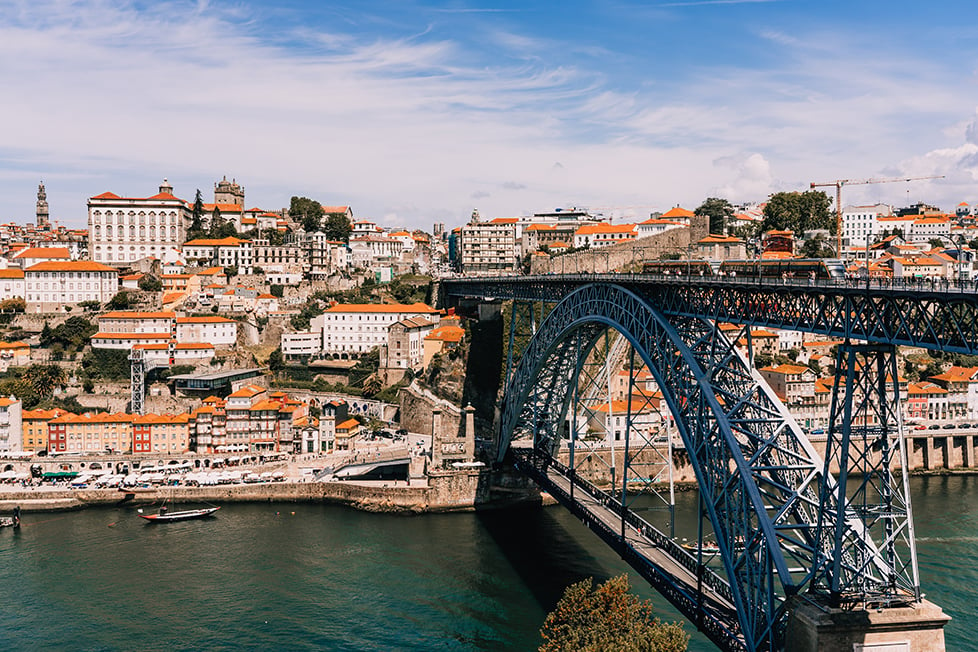
Updated May 2023 by Abe Lea

And for transparency’s sake, please know that some of the links in our content are affiliate links . That means that if you book your accommodation, buy your gear, or sort your insurance through our link, we earn a small commission (at no extra cost to you). That said, we only link to the gear we trust and never recommend services we don’t believe are up to scratch. Again, thank you!

Nic Hilditch-Short
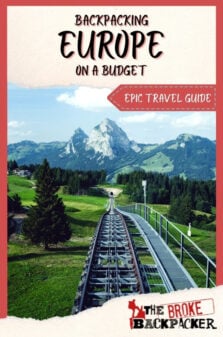
Share or save this post

Nomadic Matt's Travel Site
Travel Better, Cheaper, Longer
My Step-By-Step Guide to Backpacking Europe
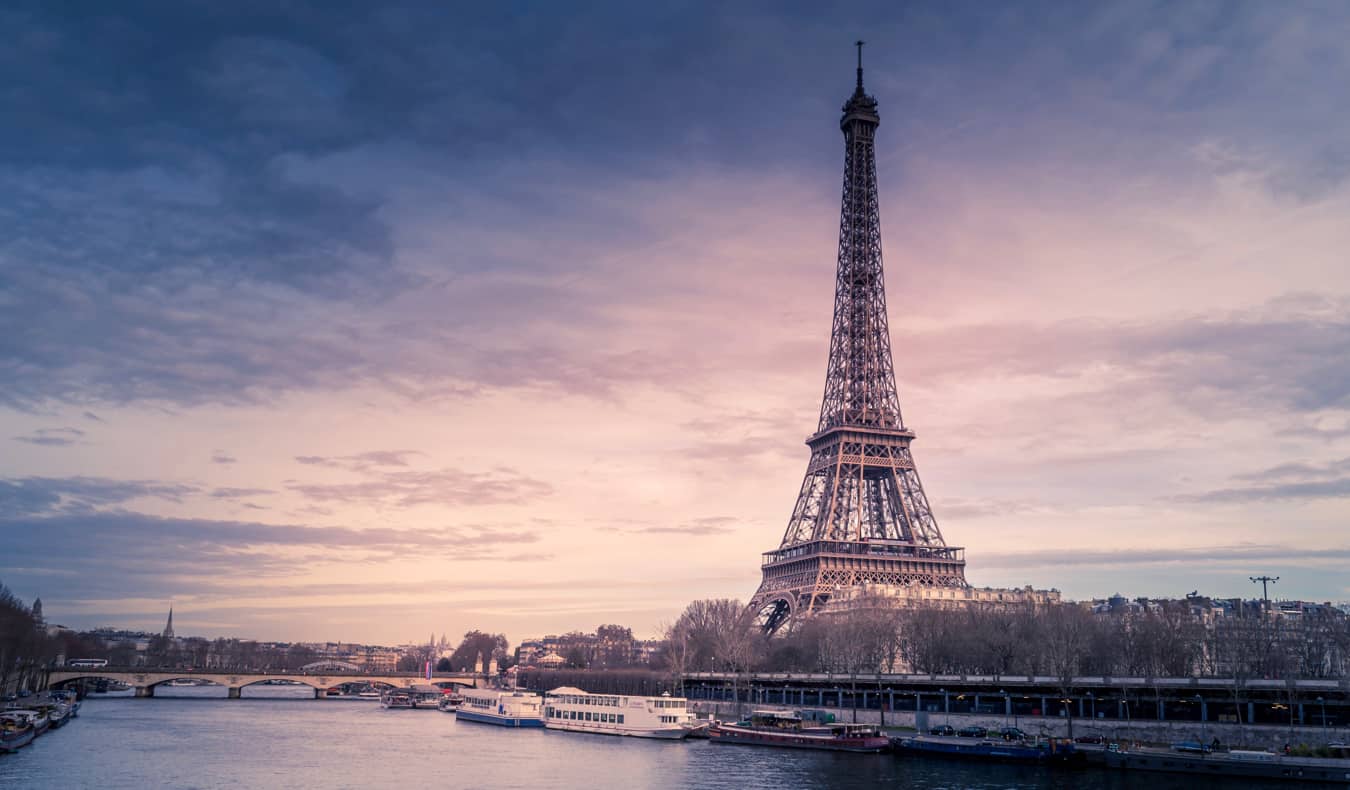
Backpacking Europe is still one of my favorite things to do as a traveler. There isn’t a year I don’t criss-cross the continent (except 2020 when no one was crossing Europe).
During the summer, hostels burst with life, the Mediterranean sparkles, streets fill with people slowly drinking wine and enjoy the day, and the late night setting sun leads to long wonderous days. Winter brings Christmas markets, skiing, fewer crowds, and lower prices! And Spring and Fall bring the right mix of people, temperatures, and prices that make these two my favorite seasons to travel Europe.
Since starting this website in 2008, I’ve written a lot of posts on Europe. I visit Europe multiple times a year, have been all over the continent, lived there on multiple occasions, and even run tours there .
With so much content on the blog, I wanted to create a resource page that will help you plan your backpacking trip to Europe with ease. That way you don’t miss anything! In this post, you’ll find all my best resources on planning a backpacking or budget trip to Europe, including destination guides, transportation tips, accommodation information, ways to meet people, and so much more!
So, without further ado, here’s everything you could ever want to know about backpacking Europe:
Table of Contents
Step 1: Plan Your Backpacking Europe Trip
Step 2: get your gear for backpacking europe, step 3: how to get amazing accommodation in europe, step 4: get around europe on the cheap, step 5: save money while backpacking europe, step 6: find out what to see and do in europe, get your in-depth budget guide to europe.
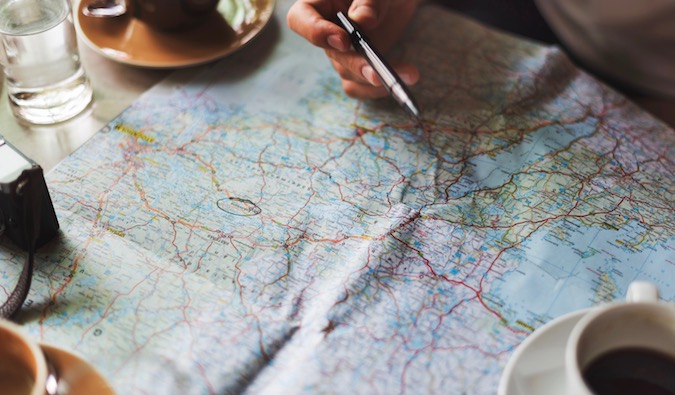
How to Save for Your Trip – Is money stopping you from taking the trip of your dreams? Here are 22 easy ways to cut down on your daily expenses so you can save money to backpack Europe.
How to Find a Cheap Flight – Getting to Europe can be half the challenge. Luckily, there are a ton of flight deals to the continent now if you know when and how to look for them. This article will show you how to always get a cheap flight to Europe.
How to Earn Points for Free Flights and Hotel Stays – Free travel is my favorite kind of travel! This post shows you eight strategies I use to get over a million frequent flier points. These will get you out of your house faster, cheaper, and in comfort!
How to (Legally) Stay in Europe for More Than 90 Days – Every year, thousands of travelers wonder how they can stay in Europe for more than 90 days, which is the limit in the Schengen Zone. The good news is that there are a few different ways to stay. In this post, I share what you can do to stay legally beyond 90 days and on the continent in general.
How to Avoid Paying ATM Fees – You should never have to pay any bank fees while you are accessing your money in Europe! Here is my advice on how to avoid bank fees as your backpacking Europe.
Is Europe Safe to Visit? – Here is how to ensure you stay safe while traveling across the continent.

What to Pack for Your Trip – What should you pack on your trip? Well, there is no one right answer, but this list will give you a good place to start. It’s what I take on my trips with me (though you’ll need to make some seasonal variations, I’m sure!).
The Ultimate Packing List for Female Travelers – In this post, Kristin Addis shares her packing insights for women, so that you can travel just about anywhere without spending a fortune on gear.
How to Buy Good Travel Insurance – Travel insurance is one of the most important things you’ll need for your trip. You wouldn’t have a car without car insurance or a home without home insurance, and you can’t have a trip without travel insurance!
The Best Travel Cameras – Wondering what kind of camera you should get for your trip? This post will show you exactly what you need — no matter your budget!
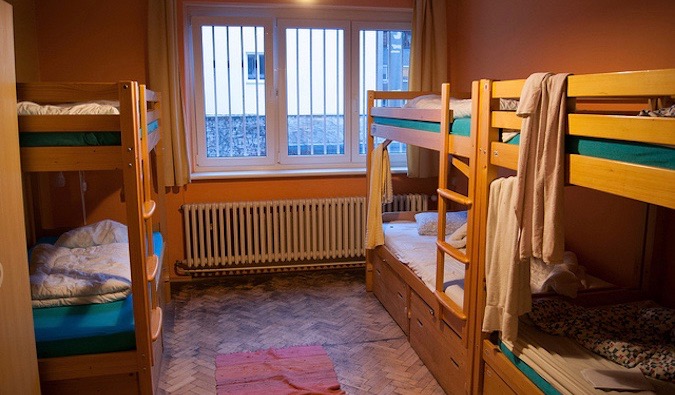
How to Find a Good Hostel – This article features my best tips on how to find an affordable, clean, and fun hostel where you can meet a lot of amazing people.
The Best Hostels in Europe – This is a list of European hostels that I would definitely use again if I have the chance. Hope this helps with your next European backpacking adventure!
How to Become a House Sitter – This is a how-to guide to house-sitting, a wonderful opportunity that allows you to stay in a location rent free in exchange for watching someone’s house.
For more budget accommodation suggestion, check out my hostel hub page . It has all my favorite hostels around Europe!
And to find out where to stay in each city, visit my list of the best neighborhoods in Europe!
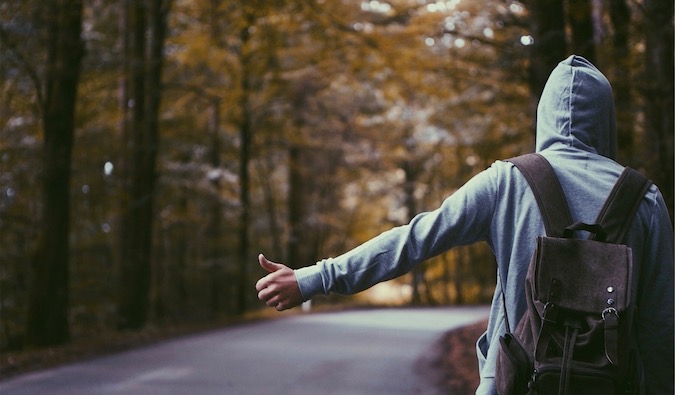
The Ultimate Guide to Saving Money with Eurail Passes – Everyone traveling to Europe wonders if they will save money by buying a rail pass or if it’s cheaper to buy tickets as they go. This detailed post outlines everything you need to know buying a rail pass!

How to Use the Sharing Economy to Save Money – The rise of the sharing economy has made backpacking Europe so much easier and cheaper. This post lists all my favorite ridesharing, house sharing local meeting websites so you can get off the tourist trail and experience day-to-day life with locals!
61 Tips to Make You the Savviest Traveler – These 61 travel tips will help you become an expert traveler who gets around Europe cheaper, better, longer, and smarter!
14 Major Travel Scams to Avoid – Losing money to a preventable travel scam sucks. Learn what scams to look out for in Europe and save yourself a potential headache!

I have over 100 guides to places in Europe! Everything you ever need to know about where you are going can be found in these articles!
In addition to the country guides above, I’ve created tons of cool itineraries for cities all around Europe. You can find my best Europe itineraries here!
This massive resource list will help you plan your trip to Europe in an easy-to-follow, step-by-step pattern so you won’t get lost, overspend, or stress out about your upcoming dream trip. Europe is one of my favorite regions of the world (which is why I spend so much time there). There’s so much variety in food, culture, and language, as well as so much history. I love the continent and hope you use these tips to plan your ultimate backpacking adventure in Europe!

My detailed 200+ page guidebook is made for budget travelers like you! It cuts out the fluff found in other guides and gets straight to the practical information you need to travel while in Europe. It has suggested itineraries, budgets, ways to save money, on and off the beaten path things to see and do, non-touristy restaurants, markets, bars, safety tips, and much more! Click here to learn more and get your copy today.
Book Your Trip to Europe: Logistical Tips and Tricks
Book Your Flight Use Skyscanner to find a cheap flight. They are my favorite search engine because they search websites and airlines around the globe so you always know no stone is left unturned!
Book Your Accommodation You can book your hostel with Hostelworld as they have the biggest inventory and best deals. If you want to stay somewhere other than a hostel, use Booking.com as they consistently return the cheapest rates for guesthouses and cheap hotels.
For suggestions on where to stay during your trip, here are my favorite hostels in Europe !
Don’t Forget Travel Insurance Travel insurance will protect you against illness, injury, theft, and cancellations. It’s comprehensive protection in case anything goes wrong. I never go on a trip without it as I’ve had to use it many times in the past. My favorite companies that offer the best service and value are:
- Safety Wing (best for everyone)
- Insure My Trip (for those over 70)
- Medjet (for additional evacuation coverage)
Looking for the Best Companies to Save Money With? Check out my resource page for the best companies to use when you travel. I list all the ones I use to save money when I’m on the road. They will save you money when you travel too.
Want More Information on Europe? Be sure to visit our robust destination guide to Europe for even more planning tips!
Got a comment on this article? Join the conversation on Facebook , Instagram , or Twitter and share your thoughts!
Disclosure: Please note that some of the links above may be affiliate links, and at no additional cost to you, I earn a commission if you make a purchase. I recommend only products and companies I use and the income goes to keeping the site community supported and ad free.
Related Posts
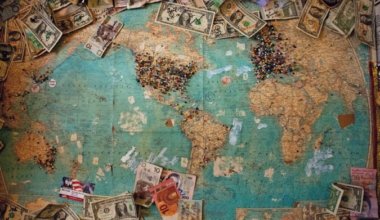
Get my best stuff sent straight to you!
Pin it on pinterest.
The Backpacker Network
Backpacking Europe Routes: 4 Epic Itineraries!
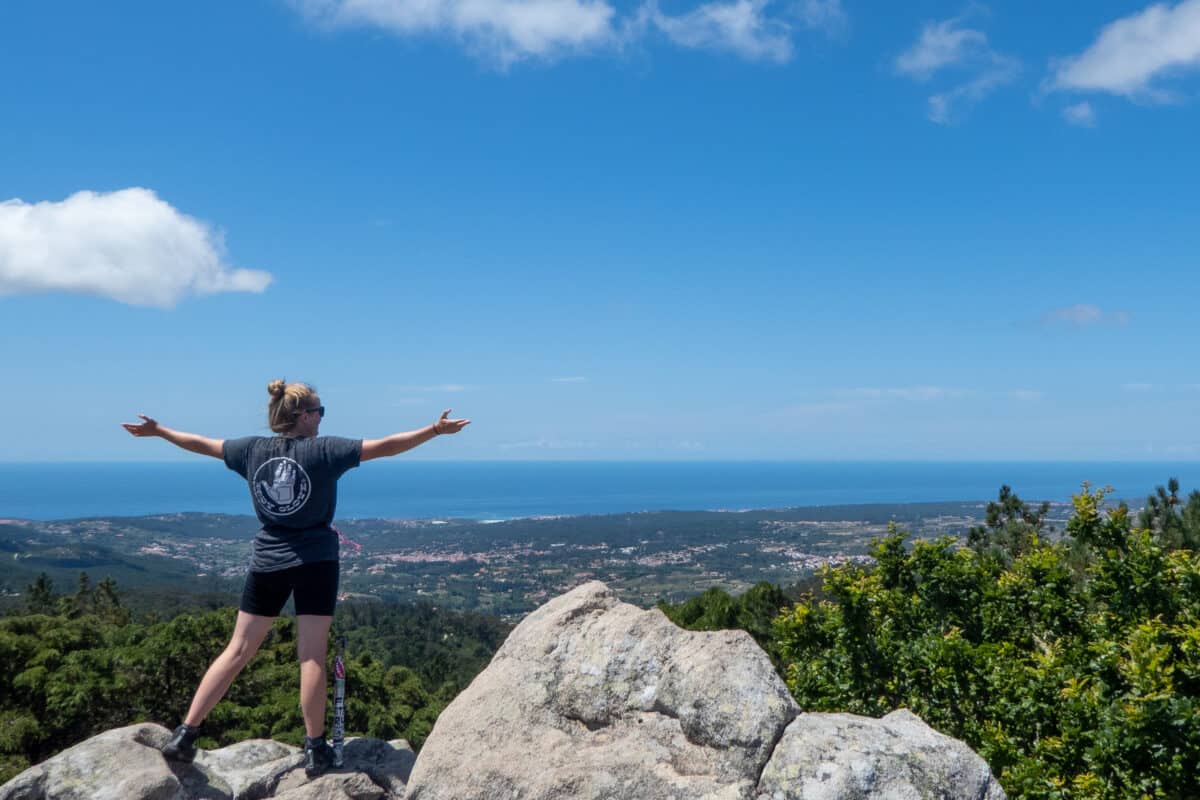
If you’re planning the Euro backpacking trip of your dreams but don’t know where to start, fear not! We’ve put together four Europe backpacking routes that appeal to different interests and types of travelers – the ‘Grand Tour’ of most commonly-visited places; a history buff’s guide to Southern Europe, a budget guide to Eastern Europe and for those of you who just can’t stop traveling, an epic around the continent route at the end!
These handpicked Europe itineraries will suit all kinds of travelers, from those on a blow-out gap year to backpackers who want to get the most adventure for their buck. Sit back and grab a cuppa as we’re about to take you on a whirlwind tour of Europe.
Related: (opens in new tab)
- How Much Does it Cost to Backpack Europe?
- A Guide to Visas for Europe
- Amazing Hostels in Europe for Backpackers
Top Europe Backpacking Trips: 4 Travel Itineraries
While you may associate backpacking through Europe with train travel and dormitory-style hostels, it’s been a rite of passage since the 18th century, when young people (mostly men) would spend a few years traveling around ‘The Continent’ prior to fully joining society. This was seen as a capstone educational experience – both in terms of seeing classical antiquity up close and interacting with new and different situations, people, and challenges.
This is still the case today too. While Europe’s countless museums , cuisines, and cultural contributions make it a premier travel destination, long-haul travel is also a fantastic way to learn about yourself.
There are countless combinations of countries, sights, and transit options for a backpacking trip in Europe, and it can be easy to get overwhelmed. The itineraries we’ve mapped out below are very customizable for this very reason. You can add more destinations, or stop a route partway through depending on how much time you have.
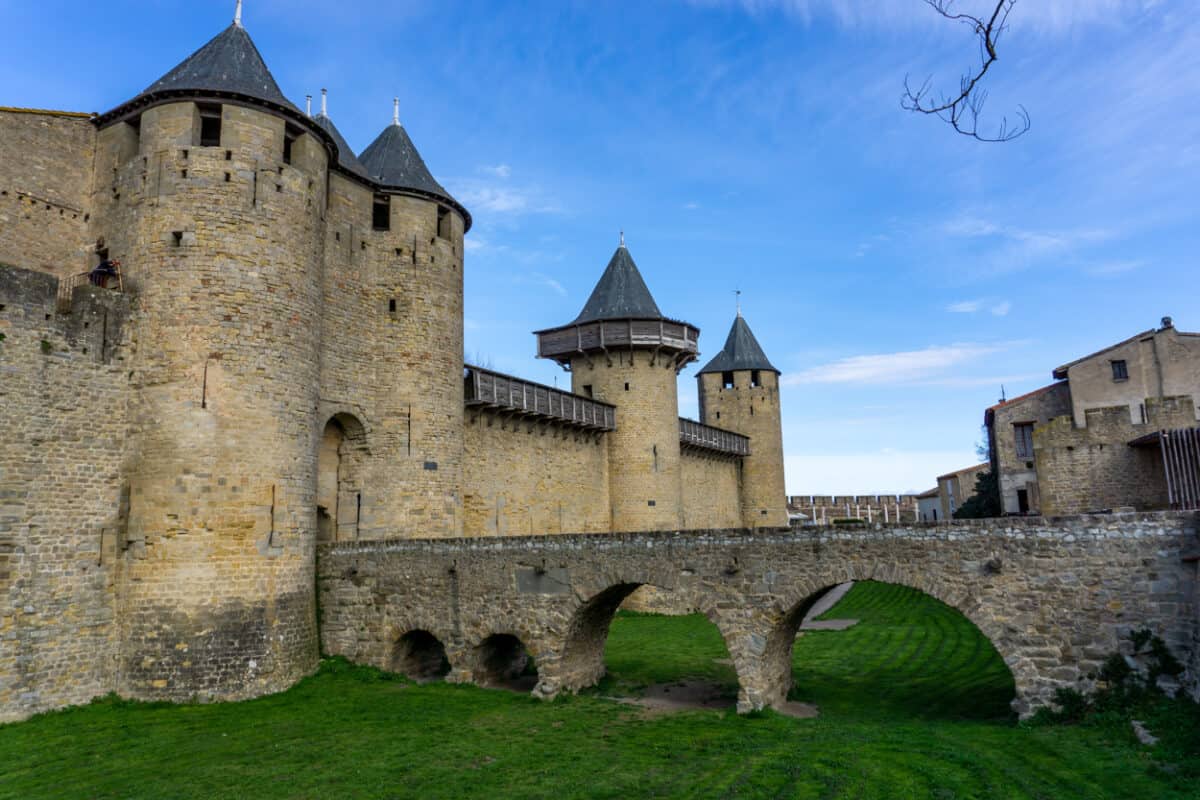
We recommend not squeezing in too much as things will start to blur together and you may find yourself getting fatigued. If you’re limited on time (say, you only have a month or so), pick your favorite neighboring countries to explore in-depth. That way, you’ll still get a bit of the backpacking experience, but you won’t run yourself ragged.
As you plan your Europe backpacking route, consider the best time to visit each place . Southern Europe in particular gets very hot and very busy in the summertime but is very comfortable in the winter. The Low Countries are very gray and rainy in the fall and winter but have mild and lovely summers.
Relatedly, countries like Austria and Switzerland, as well as the Scandinavian region, are typically not considered budget-friendly destinations. Depending on your funds, you may want to plan to spend a bit less time in these countries or forgo them entirely if you’re sticking to shoestring style travel. Off-season travel can also be a way to save if you can be flexible with dates!
If you’re travelling solo and are nervous about the safety aspect of your trip, we urge you not to worry. There are a number of really safe European countries with excellent tourist infrastructure in place. This means that you can backpack worry-free!
1. Western Europe Backpacking Route: The ‘Grand Tour’
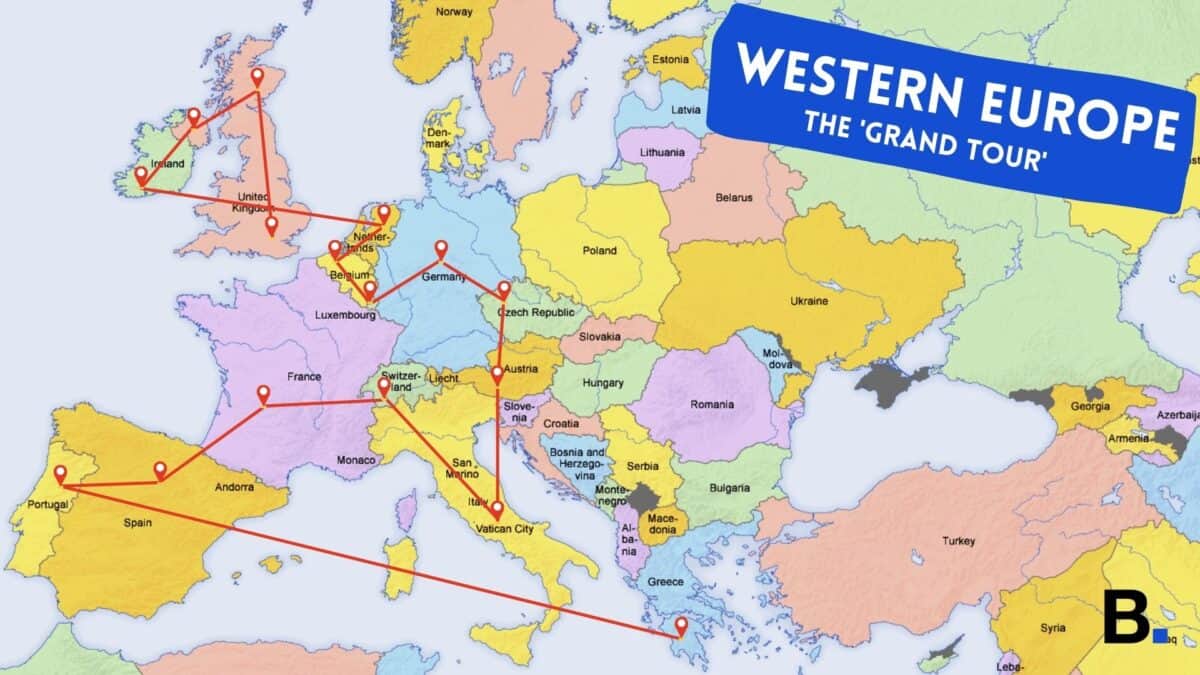
This tour starts in London because Heathrow is a great international hub for incoming flights, but we encourage you to shop around a bit and see if another city (like Paris, Frankfurt, or Amsterdam) is a cheaper place for you to start.
London is one of the world’s premier cities. It’s absolutely massive and would take months to explore in full. As such, it’s good to prioritize based on your budget and interests. First-time visitors usually hit the following sites:
- Westminster Abbey
- Buckingham Palace (the residence of the Queen) and its changing of the guard ceremony for royal enthusiasts
- The Houses of Parliament
- Number 10 Downing Street
- The Churchill War Rooms for fans of politics
- Big Ben clock tower
- The (free!) British Museum
- The Victoria and Albert Museum
- The Tower of London (home to the Crown Jewels)
- The National Gallery
- Covent Garden and Neal’s Yard
- Piccadilly Circus
- Notting Hill for its Portobello Road Market
If you’d like to stay in England a bit longer, consider some cozy cottage time in the Cotswolds , a football match and a few pints in Liverpool or Manchester , or some seaside charm in Brighton . You can also visit famed educational institutions at Oxford and Cambridge , as well as Roman-era baths in Bath .
Glasgow has great art galleries, like the notable Kelvingrove Art Gallery and Museum. It’s the largest city in Scotland, particularly known for an architecture style that mixes Art Nouveau and Victorian styles.
Edinburgh , Scotland’s capital, is a great student city, with all sorts of things to do. Trek up Arthur’s Seat or Calton Hill, visit the Edinburgh Castle and don’t forget to check out both the Old Town and New Town.
See more: Edinburgh itineraries.
Other great places to backpack in Scotland include Inverness , Dundee , and of course, Loch Ness where you can go monster hunting! The Cairngorms and Glencoe have beautiful mountains for hiking, and fans of critters will love the puffins, ponies, and otters on the Shetland Islands .
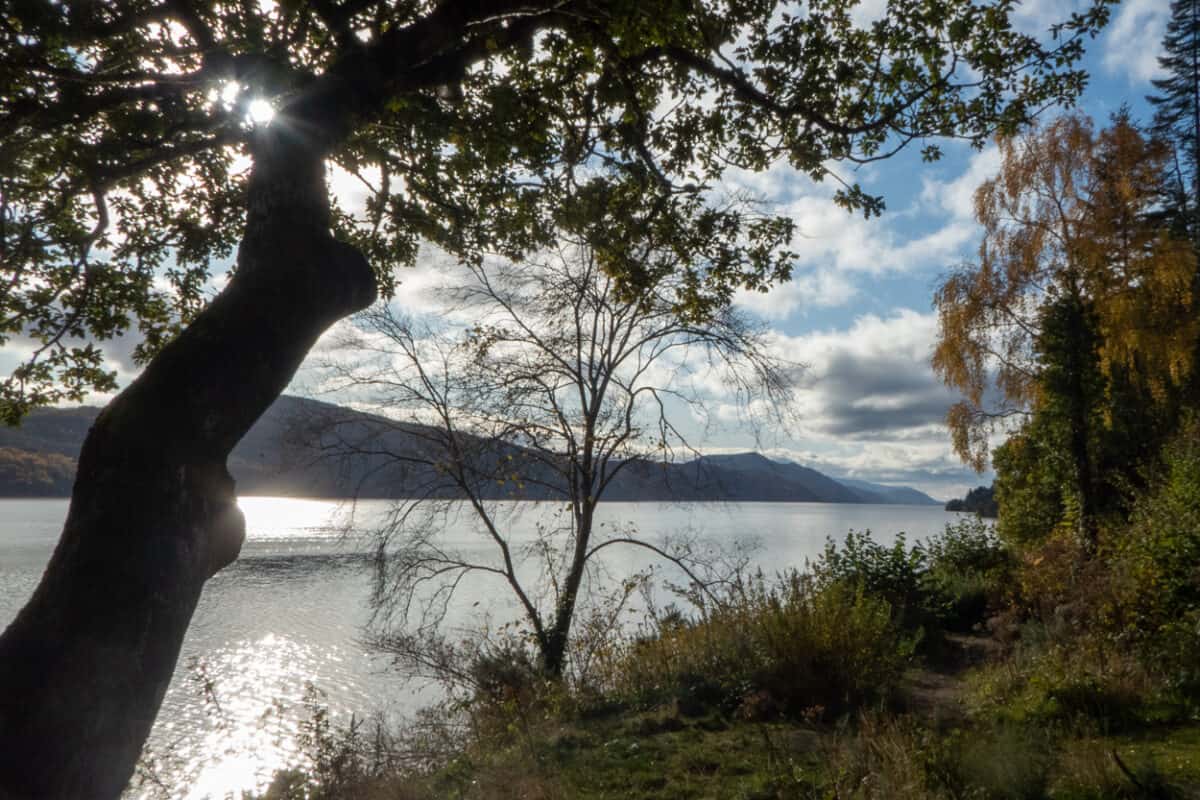
Ireland and Northern Ireland
Dublin , Ireland’s capital, has castles, museums, cathedrals, universities, and of course, great pub culture in the Temple Bar area. St. Stephen’s Green and Phoenix Park are beautiful emerald green spaces, and the Guinness headquarters is here as well.
Galway is an easy day trip from Dublin by bus and is a great example of relaxed, charming Irish life. The home to the Claddagh ring, its Latin Quarter still has medieval city walls, and the city is quaint and adorable.
Many visitors flock to the astounding Cliffs of Moher in County Clare, which offer 14 kilometers of sea cliffs along the Wild Atlantic Way.
If you’d like to spend more time in Ireland, the Aran Islands , or smaller cities or counties like Cork , Killarney , and Sligo are good options. Ireland also has fabulous nature to explore and ample national parks for hiking, swimming, and outdoor fun.
Northern Ireland is also a destination to consider, famous for the gorgeous Giant’s Causeway. A quick stop at the beautiful capital of Belfast is also highly recommended.
The Netherlands
Amsterdam is perhaps best known for its tolerant attitude towards partying, prostitution, and recreational drug use, but it’s so much more than that.
The canal area (Grachtengordel) is like stepping into the Golden Age, the museum district (home to the Rijksmuseum, van Gogh Museum, and more) is world-class, and the funkier Noord and West districts allow you more of a taste of local life. Haarlem is just 15 minutes away by train and offers much of what Amsterdam does so well (in terms of cute houses, cute canals, and cute cafes) with a lot less chaos.

Rotterdam was bombed almost to nonexistence in World War II, so it’s one of the only cities in the Netherlands that doesn’t have the Golden Age architecture. Instead, it is modern and utterly cool, a stark departure from the rest of the country.
If you’re visiting in the spring, don’t miss the world-famous tulips in bloom at the Keukenhof or other family-owned farms in the Lisse area.
Other lovely day trips in the Netherlands include Giethoorn , called the ‘Venice of the Netherlands’ for its extensive canal system; the cheese market in Alkmaar ; the collection of windmills in Zaanse Schans ; Utrecht , a quaint college town with ‘double-decker’ canals; the hub of human rights in The Hague ; pottery and history in Delft ; or the North Frisian Islands on the Wadden Sea for super-cool seascapes and sand dunes, namely Texel .
Don’t miss these Amsterdam itineraries written by our resident writer!
The capital of Belgium , Brussels has a chic and cosmopolitan vibe. You can’t miss the Grand Place with its stunning guildhalls, as well as the Town Hall. Belgians are also well-known for fries and waffles, treats to indulge in on any visit!
History enthusiasts will enjoy visiting the historic diamond district in Antwerp , as well as the Ardennes , the site of the Battle of the Bulge in World War II. For your dose of medieval charm, check out Ghent or Bruges , which aren’t too far from Brussels.
Luxembourg is a great day trip if you’re passing through en route to France or Germany. It has medieval fortifications, a cute old town called the Grund, and a fascinating interconnected tunnel network called the Bock Casemates. You can see the city from above from the Chemin de la Corniche viewpoint.
If you’d like to stay longer, other cute cities include Clervaux , the medieval castle in Vianden , and the historic abbey at Echternach .

Berlin has fantastic clubs and nightlife, a wide range of museums on Museum Island, and a variety of historical monuments, including the Brandenburg Gate and the Memorial to the Murdered Jews of Europe.
It has a very different vibe to other German and European cities, much grittier and more modern, and is also quite budget-friendly. Close by on the metro, visit Potsdam for your dose of royal life, with its beautiful Sanssouci Palace and park.
Munich is a popular destination for tourists, and for good reason. Bavarian culture is perhaps what most foreigners associate with Germany , and you can have your fill of beers, pretzels, and German pub culture here. While away an afternoon at the English Garden, and don’t miss the Nymphenburg Palace and Gardens.
Frankfurt is a banking capital and financial center, as well as being the home of the European Central Bank. It also has a lot to offer tourists in terms of museums and culture. Note that this may be a good hub to fly into, as it is home to one of Europe’s largest airports.
As you can see on a map, Germany is quite large! If you like German culture or want to brush up on your German language skills, this is a great place to spend some extra time if you have it.
Other popular cities in Germany include Hamburg , Düsseldorf, Stuttgart, Nuremberg, Heidelberg, and Hanover. Baden Baden and Freiburg in the Black Forest are beautiful as well, and there are myriad quaint small towns in the countryside to enjoy.
Czech Republic
Prague is nicknamed ‘the City of a Hundred Spires,’ due to its baroque Old Town and surrounding Gothic churches. While a relatively small city, it’s one of the most popular tourist destinations due to its quaint and compact center. Don’t miss the Astronomical Clock show and the iconic Charles Bridge, which dates back to the 1400s.
Český Krumlov is best known for its castle and mix of baroque, Renaissance, and Gothic styles. For more modernist architecture, check out Brno . If you’d like to visit the home of one of the world’s most popular beers, check out Pilsen .

Vienna is another historical heavyweight, with loads of cultural contributions and museums. It is very calm and quiet for a large city, and you’ll enjoy strolling through its parks and gardens, including the Hapsburg summer residence at Schönbrunn.
Salzburg packs quite a punch for a small town. While perhaps most famous as the setting for the iconic film The Sound of Music , it is also the birthplace of Mozart and has a fantastic medieval fortification called the Hohensalzburg Fortress. Don’t miss the great vegan food available here !
Fans of winter sports will enjoy skiing at Soelden , Saalbach , and Lech , in addition to the winter dreamland at Innsbruck . Many visitors also flock to Hallstatt for the classic view of the church reflected on the water.
Milan is one of the world’s fashion capitals and home to the Duomo of Milan, one of the world’s most iconic churches. Nearby Lake Como is a haunt of the rich and famous during the summer months, but is lovely off-season as well (and cheaper!)
Rome is a must-stop on any European backpacking route, for fantastic cuisine, awe-inspiring history, and beautiful fountains. Don’t miss the Colosseum, the Roman Forum, and the Pantheon for history, and the Trevi Fountain, Piazza Navona, and Spanish Steps for iconic photo opportunities. St. Peter’s Square and Basilica are iconic Catholic sites, and the Vatican Museums hold many treasures.
Venice is a one-of-a-kind place, built exclusively on canals. The Doge’s Palace, St. Mark’s Basilica (and its resident pigeons), and yearly Carnival celebrations attract a lot of visitors, and you can’t miss the Grand Canal and Rialto Bridge. Keep in mind it gets very muggy (sometimes stinky) and crowded in the summertime.
Florence, San Gimignano, Lucca, Siena, and broader Tuscany are in a class all their own, with rolling countryside, Renaissance icons like Michelangelo’s David and the Duomo cathedral, and wonderful cuisine and wine. A quick pit stop in Pisa to see its iconic Leaning Tower is never a bad idea while you’re in the area.
In the south, check out Naples, Sorrento , and the Amalfi Coast for a bit of a seaside escape. Neapolitan pizza is arguably the world’s most famous and originated here. Nearby Pompeii is quite a sight to behold, totally buried under the eruption of Mt. Vesuvius in 79 AD. Alternatively, consider Cinque Terre for a similar vibe to the Amalfi Coast.
There are countless things to do in Italy , and it may be best to prioritize based on what you like best – history, the outdoors, the coast, etc. as well as your budget. While cities like Rome, Florence, and Venice are considered must-sees, customize the rest of your time in Italy with a mix of other things.

Landscapes, cultural contributions, weather, and dialects vary hugely depending on where you are, and you’ll want to get a good mix in order to make the most of your trip. In general, southern Italy is much cheaper than northern Italy.
Switzerland
Switzerland is a very pricey location, and as such, may be a country to skip unless you have your heart set on certain destinations. Geneva and Zurich are its most popular destinations, for beautiful lake views and glamorous city life. Its smaller cities, like Basel , Lucerne , and Lausanne are lovely as well, with Interlaken a hub for winter sports fans.
Paris is another of the must-sees on any Europe backpacking itinerary. Similarly to London or Rome, you could spend months in Paris easily, so it’s important to prioritize based on your budget and preferences. Don’t forget, there are plenty of free things to do in Paris too!
Alongside its most popular attractions like the Eiffel Tower, the Louvre, the Arc de Triomphe, and the Notre-Dame Cathedral, don’t miss Sacre Coeur and the Moulin Rouge in the iconic Montmartre neighborhood; the Latin Quarter; shopping (or window-shopping) along the Champs-Elysées; the Luxembourg and Tuileries gardens; and its variety of other museums, like the d’Orsay, the Orangerie, and the Pompidou.
Versailles is an easy day trip from Paris as well. If you’re spending a lot of time in museums, consider buying a museum pass. It includes a surprising wealth of museums, and if you plan accordingly it will save you a lot of money.
To get out of the big city, consider spending some time in Provence on the Cote d’Azur or Nice on the French Riviera. Both are fairly posh locales, but possible to do on a budget with some planning.
Wine fans can flock to Burgundy or Bordeaux , and film aficionados to Cannes . The beaches at Normandy are a sobering and reflective place, and in the intriguing Alsace-Lorraine region, don’t miss the half-timbered houses in quaint Strasbourg , Kaysersberg , or Colmar .
Also read: Top Destinations for Wine in Europe .
Madrid is a hub of culture, from the amazing art museum El Prado to its wide boulevards and romantic Buen Retiro park. You can also check out the Royal Palace, home to Spain’s royal family, the main square in Plaza Mayor, or catch a Real Madrid game at Santiago Bernabéu Stadium. Don’t miss the delicious ‘Chocolate y Churros’ at the San Miguel Market.
Barcelona , the capital of the semi-autonomous Catalonia region, is home to whimsical architecture from native sons Gaudí and Miró , like the Park Guell, Casa Batlló, and Sagrada Familia church. Another church you shouldn’t miss is the iconic Cathedral of the Sea or Maria del Mar. The famous shopping area La Rambla is home to Mercado de la Boqueria, where you can get lots of fresh juices and other goodies.
Sevilla is a regal place, boasting the sprawling Plaza de España, a massive gothic cathedral, and Royal Alcázar palace. The former Moorish presence is quite felt here in converted architecture like La Giralda, a former minaret-turned belltower. Sevilla is also the birthplace of flamenco dancing, so be sure to catch that while you’re in town.
Overall, the south of Spain is a particularly wonderful part of the country, with a relaxed vibe, amazing cuisine, and the bonus of being a bit more budget-friendly.
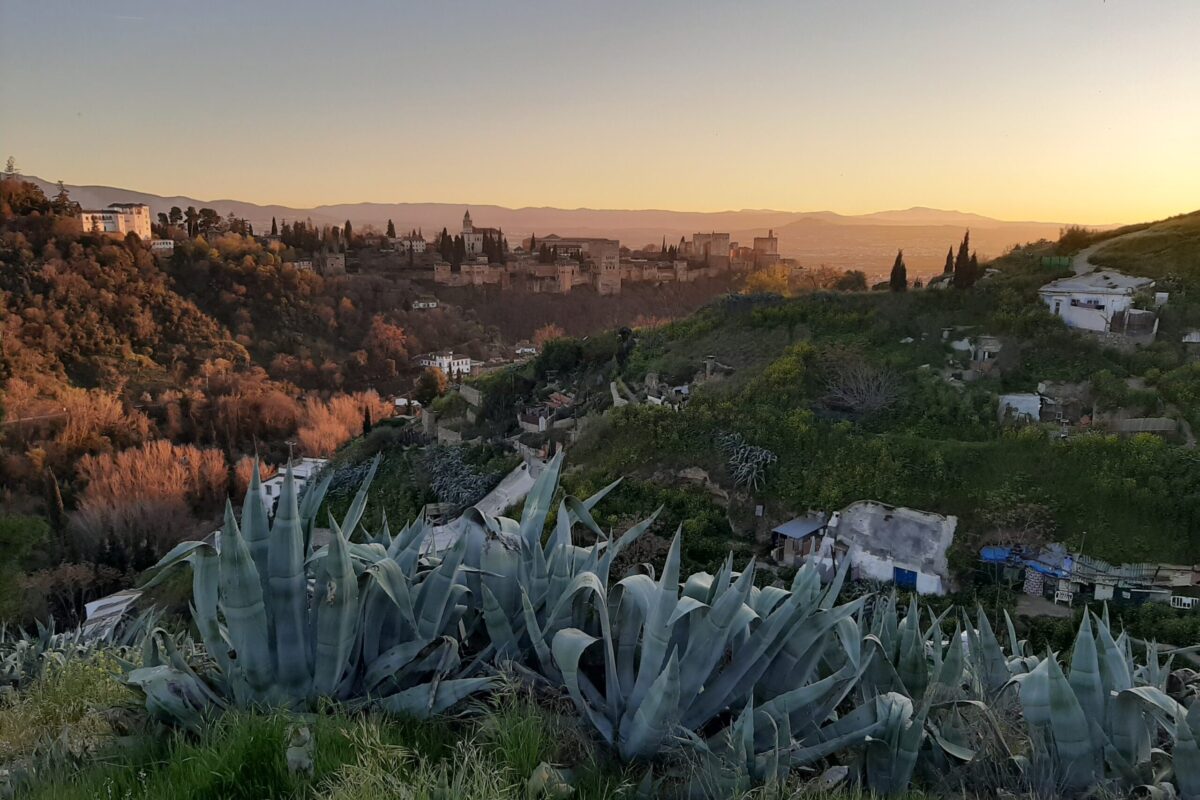
Check out Valencia, Córdoba, Granada , Ronda, and Málaga for sunshine, citrus fruit, and stunning historical sites like the Mezquita in Córdoba and the Alhambra in Granada .
For something different, consider spending some time in Bilbao and San Sebastián in the Basque Country, beautiful and modern cities with museums and skyscrapers. Relatedly, one of Europe’s most popular hikes is in this area: the Camino de Santiago . While formerly a religious pilgrimage, many people undertake this journey for non-religious reasons. There are places to stay each night and you can walk anywhere from a day to several weeks.
If you’re seeking a beach-and-partying break, the beaches in the Canary Islands or the Balearics, like Ibiza, Tenerife , and Majorca . can’t be beaten. Keep in mind transport and lodging can get very pricey in the wintertime, as these boast some of the warmest temperatures in the region.
Lisbon is a fantastic budget destination, with great weather, delicious cuisine, and a laid-back vibe. The iconic yellow streetcars are a quaint way to travel, or you can trek up the hills to the breathtaking São Jorge Castle for sweeping city views. Don’t miss the lovely azulejo tiles adorning the buildings, and the cool fortifications at Belem Tower and Jerónimos Monastery.
Close to Lisbon, don’t miss the unbelievable castle and gardens at Sintra . Porto has a cute, cobblestoned medieval district and (of course) fantastic port, and Faro boasts Moorish walls and a great gateway to the rest of the beautiful Algarve region.
Athens is a vibrant ‘old-meets-new’ place, boasting ancient relics like the Acropolis complex and the Parthenon, amid a great food scene, parks, and gardens.
The Greek Islands are a really special destination suitable for all sorts of backpackers. Party animals will love Mykonos, while Santorini’s white-and-blue buildings are a common bucket-list destination. Milos and Paros are a bit more off-the-beaten-path, and Crete is quite large, perhaps giving you more bang for your buck. Keep in mind the Greek Islands are not often a budget destination, so if you’re traveling shoestring consider planning ahead and comparing transportation options.

2. Southern Europe Backpacking Route: The ‘History Buff’
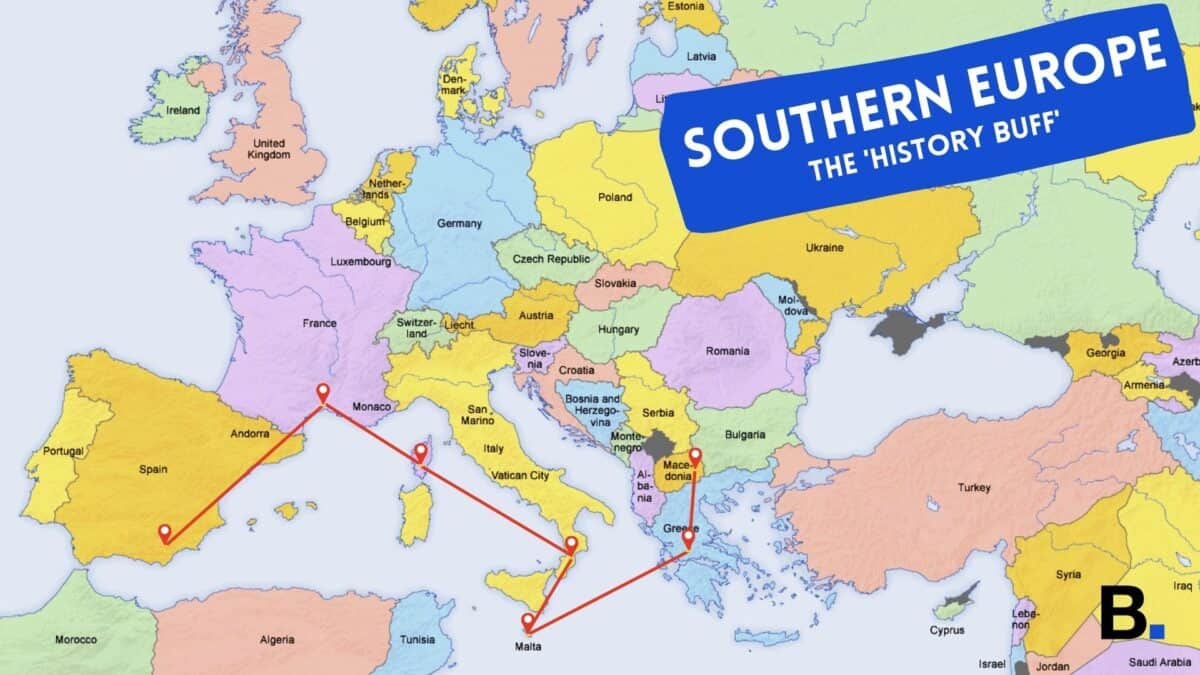
History buffs will love Southern Europe for its jaw-dropping array of ancient ruins, medieval fortifications, art, and beyond.
Southern Spain has a wealth of historical attractions. In Andalucía alone you have the Mezquita in Córdoba , the Alcazaba in Málaga , the Real Alcazar in Sevilla , the Alhambra in Granada , and Baños Árabes and Puente Nuevo in Ronda . Outside of Andalucía, Tarragona has a Roman Amphitheare, and Cádiz has the Castillo de Santa Ana, as well as a storied naval history.
Southern France has Roman history, Gallic history, papal history, and beyond, with innumerable sites to check out. Visit the iconic double-walled medieval fortifications in Carcassonne ; canals and chateaus in Annecy ; scenes of papal intrigue in Avignon and Orange ; the site of a 2nd-century fortified town in Uzès ; the ‘red city’ of Albi ; Roman ruins in Nîmes ; and The Calanques from the fortifications of Cassis .
Larger cities in southern France are chock-full of history as well. Arles is one of the oldest cities in France and pre-dates the Romans. Marseilles was originally founded by the Greeks and is thought to be the oldest city in France. Toulouse changed hands from the Visigoths to the Merovingian and Carolingian Franks, originally known as Tolosa in Roman times.
Check out the Bonifacio Citadel and Citadelle de Calvi, as well as Napoleon’s birthplace in Corsica (part of France.)
Italy has a wealth of historical attractions, and not just in Rome. After you’ve seen the Colosseum, the Appian Way, the Forum, and beyond in Rome , be sure to check out some sites in the rest of the country.
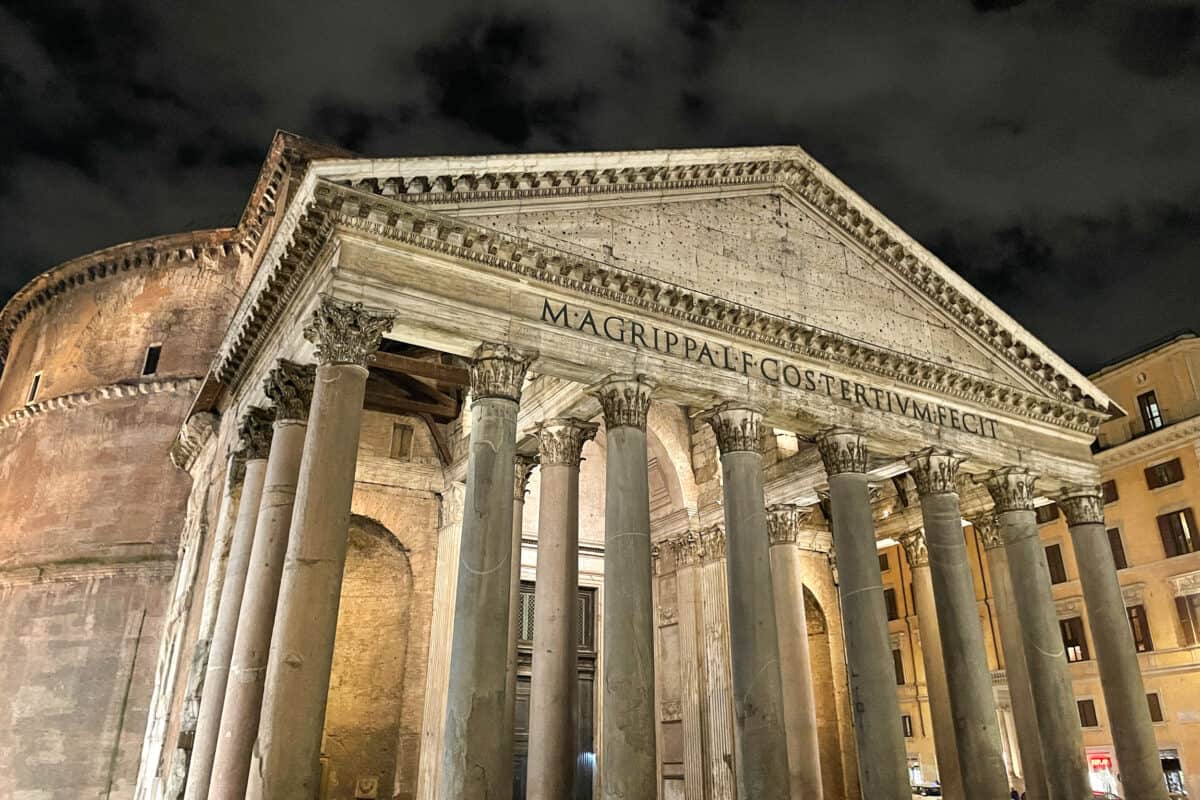
In southern Italy, check out the scene of the volcanic eruption at Pompeii and Herculaneum, lovingly-preserved Doric-style temples at Paestum; ancient cave dwellings at Matera ; and intriguing stone huts in Alberobello . For Napoleon buffs, you can also visit Elba , where he was exiled in 1814.
Sicily has a wealth of ancient sites and offers a great bang for your buck for a Euro backpacking trip. Agrigento is famous for its Valley of the Temples, and the Villa Romana del Casale outside Piazza Armerina boasts one of the most complete mosaics collections in existence today.
Siracusa and nearby Ortigia Island also have large complexes of ruins in excellent conditions, well worth at least a day or two to explore. For other standalone sites on the island, consider the Tempio di Segesta in Trapani , the Cathedral in Palermo ; the Necropolis of Pantalica ; and Taormina’s Greek theater.
UNESCO describes Valletta, Malta as “one of the most concentrated historical areas in the world.” Established by the Knights of St. John, a Catholic order, Valletta has fabulous gardens, churches, and fortifications dating back to the 1500s. Even older than Valletta is Mdina , the capital of Malta before the arrival of the Knights.
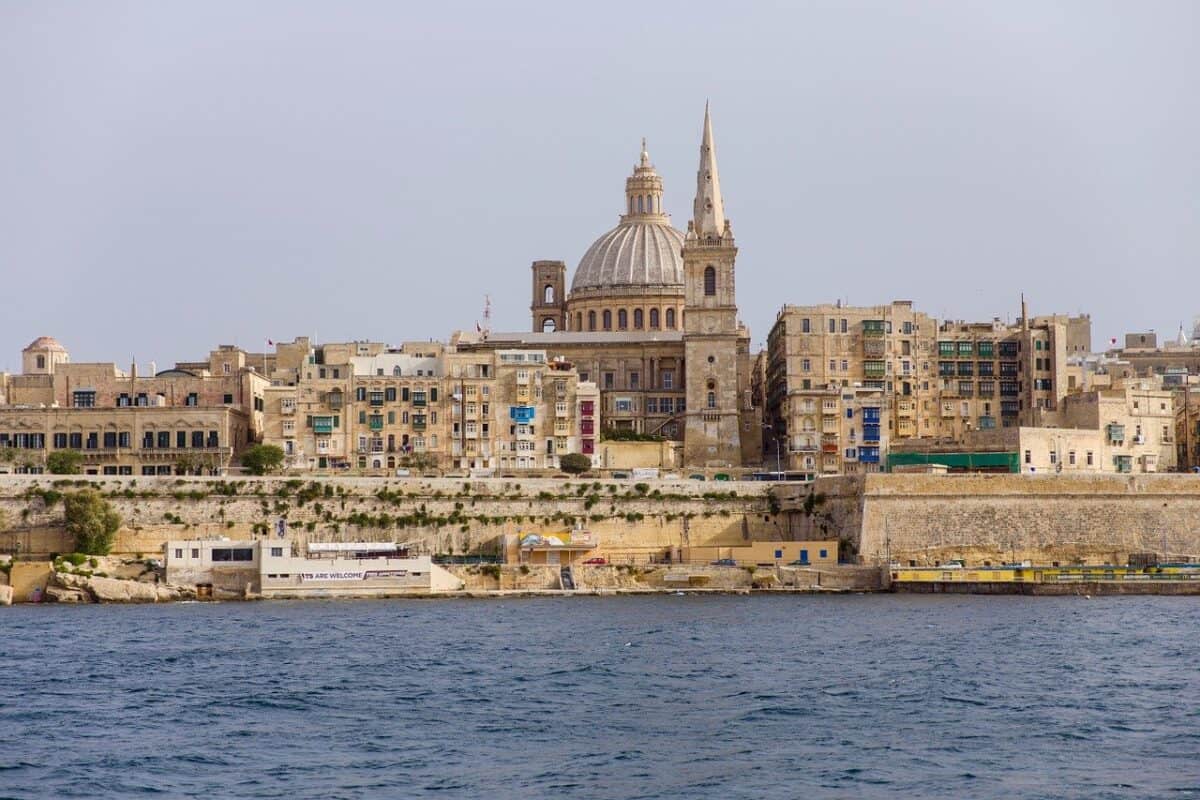
It goes without saying that a large draw of Greece is its historical offerings, similarly to Italy. As mentioned in the itinerary above, you can’t miss the Acropolis and Parthenon complex in Athens , and the country is littered with other ancient sites of interest.
A small selection of your endless historical options include:
- Byzantine frescoes in Mystras
- The Oracle at Delphi
- Eastern Orthodox monasteries atop spindly rock formations in Meteora
- The site of the original Olympic Games at Olympia
- The canals at Corinth
- The world’s oldest city in Knossos , Crete
- The Ancient Theatre at the Sanctuary of Asclepius in Epidaurus
- The Mycenae archaeological site of Trojan War fame
- Delos , the birthplace of Apollo
- The remains of the walled city of Philippi
- The site of the Battle of Thermopylae
North Macedonia
Similar to Greece, North Macedonia has much to offer the history buff. The area around Skopje offers fortresses, bridges, and a market dating back to the 12th century. There is also a Byzantine fortified town at Bargala , the ‘Jerusalem of the Baltics’ in Ohrid , the archaeological site of Tauresium in Gradište , and another fabulous fortress in Isar .
3. Eastern Europe Backpacking Route: The ‘Budget Maximizer’
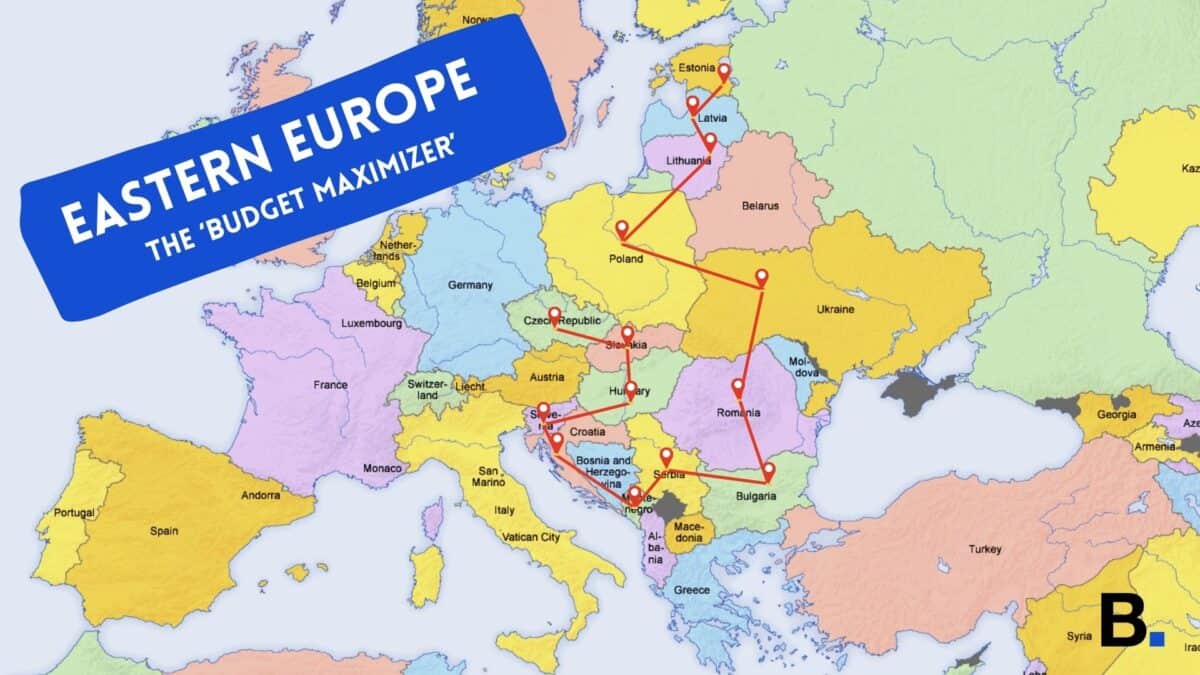
Eastern Europe is known for being a budget-friendly destination, and this is definitely true. The region is also chock-full of amazing cities, nature, and things to do and explore so it’s a win-win for aspiring backpackers!
You can start this tour in the Czech Republic, flying into Prague and following the Grand Tour itinerary for Prague, Český Krumlov, Brno , and beyond . From there, head to Slovakia!
Slovakia has the most castles per capita in Europe, and its capital of Bratislava has a charming old town that is pedestrian-only, lined with cute shops and restaurants. In addition to its castle and castle ruins, it also has majestic churches in different styles.
Košice dates back to the 13th century, and you can still visit the medieval city walls, with the largest preserved historic city center in Slovakia. Today, it is mainly known for steel production, but its historic center is arguably the best in the country.
For some nature, go bear-watching in the High Tatras National Park or hiking in the aptly-named Slovak Paradise National Park .
Hungary is also a great alternative in which to start this Europe backpacking route, flying into the large hub of Budapest . Budapest is an absolutely fantastic city, with a variety of attractions at a great price point.
The city is on a geographic fault line, so you have lots of options for thermal baths: check out Instagram-hyped Szechenyi, avoid the tourists at less popular but equally gorgeous Gellert, or have a truly local experience at Lukacs.
Don’t miss the jaw-dropping Hungarian Parliament building, stroll along the Fisherman’s Bastion and Matthias Church, and explore both Buda and Pest via the Széchenyi Chain Bridge. Have a beer at one of Budapest’s ruin bars, filled with all sorts of oddities, and try some Hungarian goodies at the Central Market Hall.
For a less urban experience, check out serene Lake Balaton , try some local wines in caves in the Valley of the Beautiful Women in Eger , or cycle around quaint Szentendre .
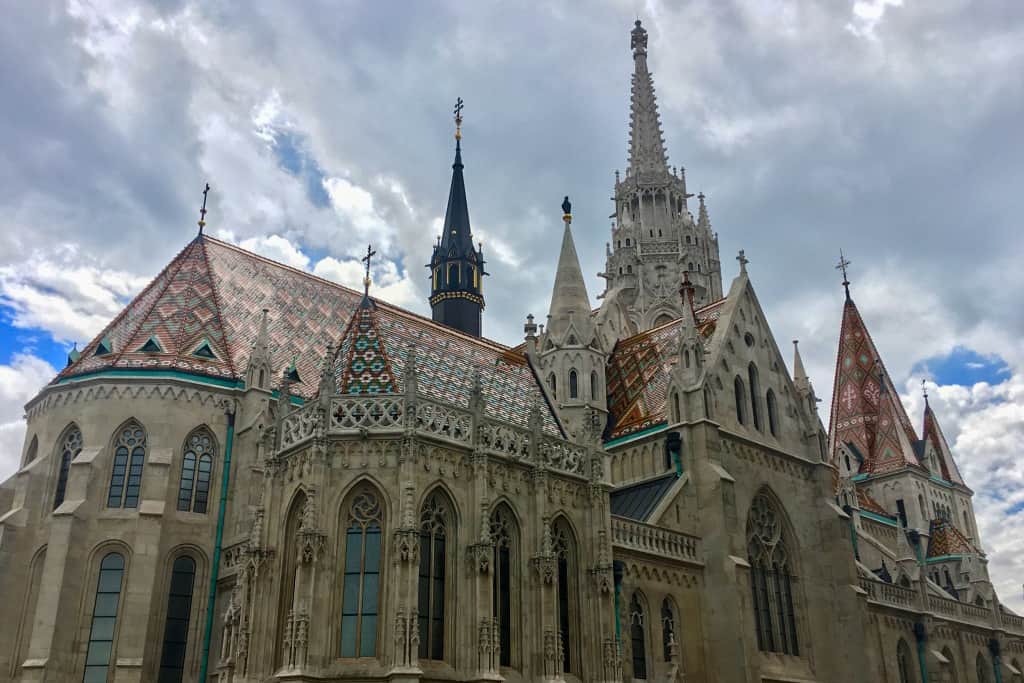
Slovenia is also a great destination for those seeking a mix of smaller, beautiful cities and lots of nature opportunities. Capital Ljubljana has a similar vibe to Prague and Budapest (with lovely castles, parks, bridges, and museums), and Piran is famous for Venetian architecture along the Adriatic coast.
Arguably the most popular location in Slovenia is Lake Bled and its iconic Bled Island and church, surrounded by surreal turquoise water. The Julian Alps surround the lake and are a great, nearby location for hiking.
Croatia has long been a favorite destination for backpackers due to low prices and few tourists. However, Game of Thrones has led to large crowds visiting very small Dubrovnik (AKA Kings’ Landing.)
Split is also on the Adriatic Sea and is fairly similar, but a bit bigger. This can lead to more reasonable accommodation prices and a bit more breathing room. Croatia’s capital, Zagreb , is also worth a visit for very different architecture to Split and Dubrovnik in a more Austro-Hungarian style, and also boasts the beautiful Medvednica area just north of the city.
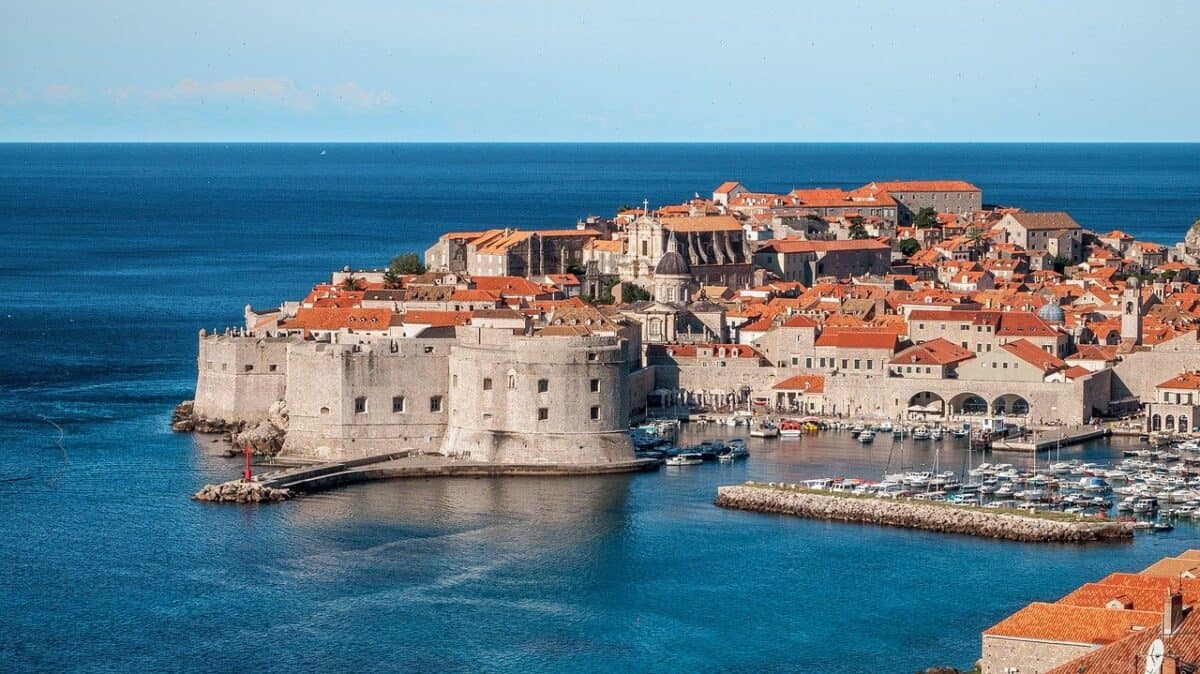
For natural splendor, nothing beats Plitvice Lakes National Park , a series of gorgeous turquoise lakes linked quasi-vertically by waterfalls. There are also all sorts of beaches in Croatia if you’d like to take a few days to relax by the water, like Golden Horn Beach ‘ s world-famous white sand.
Montenegro is a great destination for budget travelers and an ideal place for those seeking something a bit less touristy, but still gorgeous. The area around Kotor resembles a Scandinavian fjord, and the Stari Grad (Old Town) and city walls are fantastic to scramble around.
The capital Podgorica isn’t as exciting as other Eastern European capitals but has a cool clock tower and proximity to Lake Skadar National Park . If you want to splash out a bit, consider a visit to resort island Sveti Stefan , one of the most popular destinations in the country.
Serbia is often overlooked in favor of Croatia and Montenegro but is absolutely worth a visit. Capital city Belgrade is lovely, with competing Roman, Ottoman, Byzantine, and Austro-Hungarian influences as well as great green spaces and cuisine. Novi Sad has the Petrovaradin Fortress and its network of tunnels, as well as very different architecture and vibes to Belgrade.

Bulgaria is a treasure, with a long and storied history displayed in its folklore, like traditional dancing and arts and crafts. It is also said to be the birthplace of yogurt! Capital Sofia is a great place to see all of Bulgaria’s cultural attractions, or you can visit Nessebar on the Black Sea for a completely different vibe, and its world-famous Sunny Beach. For history and archaeology fans, check out Plovdiv in southern Bulgaria for Roman ruins.
Did you know? Bulgaria is one of the cheapest countries in Europe !
Romania is perhaps most famous for its mythical Transylvania region, home to beautiful gateway cities Cluj-Napoca and Brașov , medieval fortified towns like Sighișoara, and world-famous Bran Castle , said to be where Dracula lived.
In the Bucegi Mountains , hike to natural rock formations Babele and the Sphinx, or go underground for salt mine tours at Salina Turda . Capital Bucharest is known for its massive, Soviet-era Palace of Parliament and Old Town Lipscani district.
Ukraine also has a variety of places of interest for budget travelers. Capital Kyiv has beautiful Eastern Orthodox-style churches, museums, and a reconstructed medieval gate. Lviv is a great place to see Polish and Austro-Hungarian culture collide, and has a world-famous opera and ballet that may be worth a splurge for tickets.
For something a bit different, Odesa on the Black Sea is also famous for its opera and ballet, as well as the iconic stairway from The Battleship Potemkin and beautiful sea views. Intrepid travelers may be interested in visiting the nuclear disaster site Chernobyl . A tour to the exclusion zone has been determined to be safe and is possible with an official guide.

Poland has a wealth of cities, attractions, and natural wonders to offer travelers. Similar to other countries in the region, it is a great budget destination, with fantastic food, friendly people, and enough museums and cultural contributions to entertain any tourist for years.
Capital Warsaw suffered a lot of damage in World War II and was almost entirely rebuilt. The Soviet-style buildings aren’t everyone’s cup of tea, but don’t make the mistake of skipping the city! Spend some time eating pierogi, strolling Łazienki Park, visiting the Warsaw Uprising Museum and POLIN Museum, and taking a tour of the Royal Castle as an absolute minimum.
Cute Krakow is much more popular with tourists for its medieval Rynek Glówny quarter, as well as its proximity to underground marvel Wieliczka salt mine and concentration camp Auschwitz . Poland also has a variety of former German cities with a distinct architectural flair, like Wroclaw , Gdansk , and Gdynia , which are all highly worth a visit.
In Lithuania, don’t miss baroque capital city Vilnius and nearby Trakai Island for its fairytale castle. At the Curonian Spit , you can see sand dunes that stretch up to 35 meters in height, and those seeking something a bit spookier can visit the sculpture garden at the Hill of Witches. A popular pilgrimage site is the Hill of Crosses , where over 100,000 crosses have been placed over the years.

Latvia is also an often-underrated country to visit. Its capital Riga has slightly different architecture to its Eastern European contemporaries, with a lot of wood-based and art nouveau buildings at a similarly great price point for budget travelers.
Nearby Rundāle Palace has a similar aesthetic to Versailles, and Jūrmala is a fantastic resort town that is also close to Riga.
The last stop on this Eastern European tour is in Estonia, a small country with over 1500 small islands. Its capital, Tallinn , has a cute old town with various structures dating back to the 13th century, as well as a medieval fortification tower called Kiek in de Kök.
Seaside resort Pärnu is known for its distinctive wooden villa-style houses and the ability to mud-bathe. Bog and wetland enthusiasts will love Lahemaa National Park , the former USSR’s first national park.
4. Around Europe Backpacking Route: The ‘Whole Shebang’

And for those of you who refuse to take your backpack off, we’ve created this final mammoth Europe itinerary. An amalgamation of the Western and Eastern routes (with a couple of tweaks for logistical reasons), this comprehensive Europe backpacking route showcases the best of what the continent has to offer, from balmy beaches, to dramatic castles and everything in between!
The adventure is limitless with this Europe itinerary, you just need to hope that your wallet is too!
Ways to Travel Around Europe
One of the best things about backpacking in Europe is the relative ease of transport between countries. As you plan out your trip, start by analyzing how you can best get between the countries you want to visit.
A tip here is to combine trains, buses, and flights strategically. These vary widely in price, and you may be surprised at what deals you may find.
Overall, the big advantage to buses and trains is that they usually drop you off at a more central location, sparing you transport to and from a farther-away airport. However, sometimes you may find that flights are the best fit for your budget or timeline.
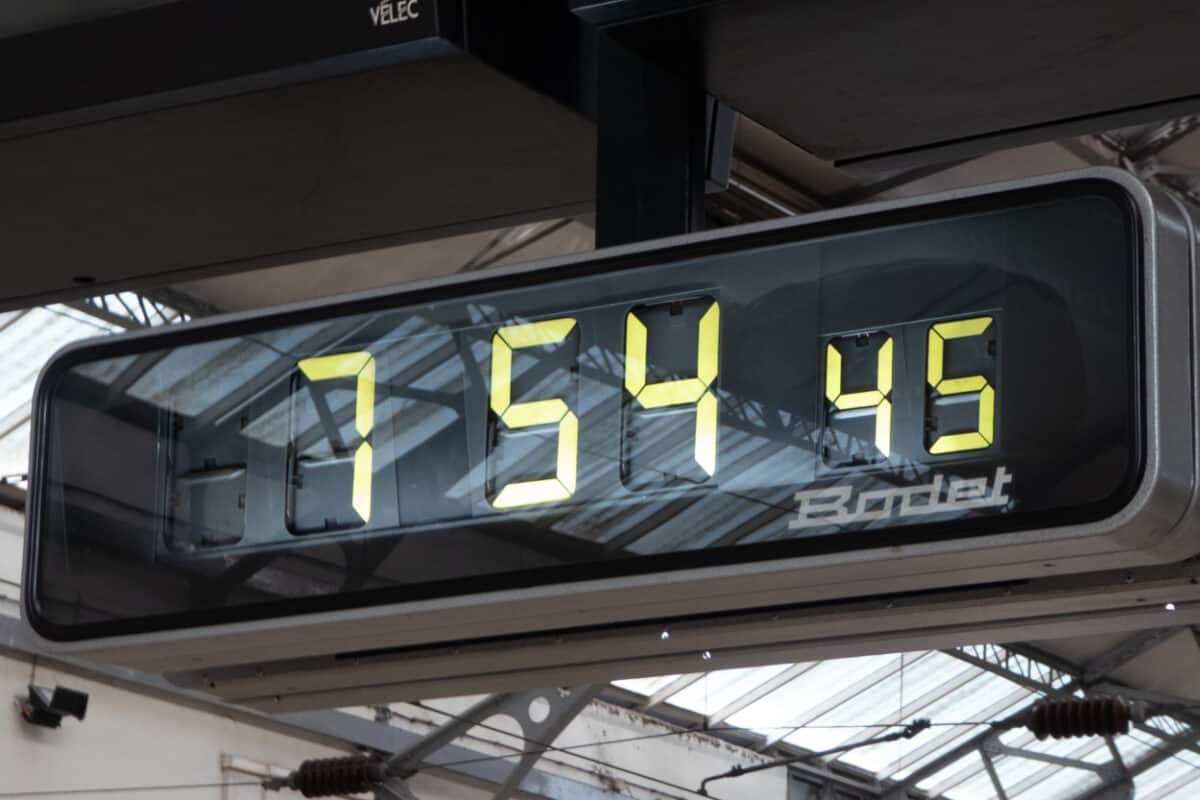
Traveling by train is often considered to be the quintessential way of getting around Europe. Companies like Eurail offer customizable train passes between 33 countries, with regional options and timing options (e.g. 15 days, 30 days, etc.) now on a mobile app.
This ‘all-in-one’ style pass can be as simple as a hop-on-hop-off, where you show your pass to board the train of your choice. However, some places (like France and Germany) sometimes charge supplements or have a limit on how many passengers can board with a pass per train. For that reason, you may want to book tickets in advance during busy seasons, and always make sure that the journey you are taking is included in your pass!
The associated downside to Eurail is that it is quite pricey, so you should do the math carefully to make sure you’ll actually save money with this pass. As a rule of thumb, it is largely worth it if you’re spending a lot of time in countries like Switzerland. Conversely, if you’re doing a trip mostly focused on central or eastern Europe, it’s probably cheaper to buy single tickets.
Although train travel is the most talked-about transport for backpackers in Europe, don’t count out buses ! Companies like Flixbus and Eurolines sometimes have absolutely jaw-droppingly low fares, and charter buses are largely comfortable and reliable.

Like trains, buses also usually drop you off in central locations, and it’s a really economical way to get from place to place. The associated downside is, of course, time. Buses get stuck in traffic and delays can be common, as well as the fact that buses are without a doubt slower than trains and planes.
Like Asia, Europe has a variety of budget airlines that have ultra-low fares, like RyanAir, EasyJet, Wizz Air, and beyond. Be warned though, f the fares seem too good to be true, that’s because sometimes they are.
These airlines are infamous for nickel-and-diming travelers, with add-ons for anything larger than a (small) backpack and hidden fees. However, that said, if you’re at a point in your journey where you have a longer distance to travel, or want to visit an island or somewhere logistically more challenging, you should definitely look into plane travel.
Time to Plan Your Europe Backpacking Trip!
Backpacking through Europe is definitely something that you should take advantage of. It’s totally doable to stick to a budget with some savvy planning, and you will make memories that will last a lifetime.
We hope this article has helped to show you a few ways to put together your dream Europe backpacking trip. Of course, these routes are just a few among infinite options!
In case nothing has tickled your fancy just yet, we’ll leave you with some more food for thought…
- An island tour through the Canary Islands, the Azores, the Greek islands, Sicily, Sardinia, Corsica, and Malta
- A royal jaunt through castles in the British Isles (England, Scotland, Wales, and Ireland) France, Germany, Romania, and Slovenia
- An Alpine ski bum tour through Switzerland, Austria, Italy, France, and Monaco
If you have questions about specific countries not mentioned, or have another idea for cool groupings, we’d love it if you’d share it with us in the comments! Happy travels!

Tegan George & Alex McKenzie
- Tegan George & Alex McKenzie #molongui-disabled-link DIY Norway in a Nutshell: A Budget Traveller’s Guide
- Tegan George & Alex McKenzie #molongui-disabled-link Visiting Lake Como in Winter: A Budget Guide
- Tegan George & Alex McKenzie #molongui-disabled-link Europe Travel Budget: How Much Does it Cost to Backpack Europe?
- Tegan George & Alex McKenzie #molongui-disabled-link Cheapest European Countries To Visit

- Search for:
- The Caribbean
- South Carolina
- Eastern Europe
- Switzerland
- The Netherlands
- Travel Anxiety
- Fear of Flying
- SOLO FEMALE TRAVEL
- PRIVACY POLICY

Beginners Travel Guides , Europe , Solo Female Travel , Travel Destinations
6 (short and easy) europe backpacking routes.
FMTC Affiliate Disclosure: Blond Wayfarer contains affiliate links. If you make a purchase through these links, I earn a commission at no extra cost to you. This disclosure pertains to all affiliate links.
Updated: 15 January 2023
As a solo traveler, I love, love, love exploring Europe so much in my spare time. I mean, why on earth else would I be crazy enough to constantly fly over the Atlantic Ocean when I actually hate flying with a burning passion? Because I LOVE Europe.
In my biased opinion, Europe is (without a doubt) the greatest playground in the world for solo travelers. Sometimes I don’t even know where to begin when it’s time to plan my next European adventure.
Full disclosure, I usually get my inspiration by pulling up Google Flights to see the best flight deals. Traveling solo to Europe in summer isn’t always cheap, and I want to find the best options before all the tickets start to sell out.

The paradox of choice is rough, ya’ll. Europe has so many wonderful backpacking routes available for all types of travelers, and considering we all either have time or money restraints, it’s impossible to see and do it all in the span of a single trip.
As a side note, I could easily spend hours babbling about Europe’s many countries (and the diverse regions within those countries) to all the adventurous solo travelers who want to explore this continent. I offer solo travel planning services for individuals who are ready to go and feel as if they could use the extra help.

Table of Contents
In Summary: Why I Love Backpacking Europe
First and foremost, as you’re exploring Europe, it’s very easy to immerse yourself into the diverse histories, food, and cultures which exist all across Europe – sometimes only a mere border crossing away.
Furthermore, Europe is very popular with budget travelers, especially in more affordable countries such as Poland and Portugal.
Need more reasons why Europe is so desired by travelers? Many European countries offer an accessible and strong tourist infrastructure. Europe’s excellent public transit system makes it easy and reasonable to see many countries on a single trip.
Furthermore, if you stay within the Schengen countries, you don’t even have to worry about crossing border control for the entire duration of your adventure!

However, with so many options out there, I wanted to put together a post describing simple and diverse Europe backpacking routes to make your travel research a little easier.
These routes are mainly designed for short hops to the continent, not month long trips, and I hope they’re helpful to any traveler who also has a busy career at home, We need to wisely use our vacation days.
Now, before I describe the Europe backpacking routes, however, I want to cover two common mistakes that make or break your trip.

Two Biggest Mistakes to Make on Europe Backpacking Routes
Don’t attempt to cover too much ground.
I know you want to see everythiiiiiiiiiing on your backpacking trip in Europe. The internet only makes planning for the future harder.
Too many options, more problems.
And I totally understand your pain!
I’m always eager to squeeze in more cities and towns whenever I’m traveling Europe. Like I said, I understand. However don’t give into temptation!
Instead try to limit the number of stops on your Europe backpacking routes. Yes, trains and buses link much of the continent, but still. Did you come all this way to hang out in train stations? Didn’t think so.
Covering too much ground is a major mistake.

Don’t Only Focus On Big Cities
I love big cities. I’m never moving too far from New York, which is the epitome of the Big City in Capital Letters.
However, even I can admit that many of Europe’s wonders exist in its small towns and natural beauty.
For example, it’d be a shame to go to Madrid and skip over both Toledo and Segovia. And why would you ever in your wildest dreams only visit Edinburgh and ignore the Scottish Highlands? Ridiculous!
Europe’s capitals are great. No denying it. You’re also more likely to find a variety of hostels in bigger cities and as a result, meet more travel buddies.
Regardless, break outside your comfort zone and experience rural Europe. You’ll have a much deeper understanding of the place you’ve come so far to visit.
Now let’s get to the backpacking routes! Most of these routes can be done in 2 Weeks in Europe or less!
Backpacking Europe Routes for The Baltics

Let’s See The Beautiful Baltics
Argh, you guys, I positively loved my experience traveling in the Baltics. Now, full disclaimer, I only visited the three capital cities: Vilnius, Riga, and Tallinn.
Still, these small city hops intrigued me enough to add these fantastic northern countries to this guide. I want to book another trip to the Baltics in the near future and fall in love with the countryside, too.

Vilnius, Lithuania
Vilnius is Lithuania’s capital city. In my opinion, it was also the most fun and cheapest city on my Baltic adventure.
Vilnius has several beautiful buildings such as the Palace of the Grand Dukes and Gediminas Castle Tower. You can also take an easy day trip to Trakai to see a beautiful island castle located in a National Park.
Vilnius has endless options for backpackers. And did I mention it’s affordable? Wait until you see these prices.
Vilnius Hostel Options
- Downtown Forest Hostel & Camping, from $25 on TripAdvisor.com and Booking.com
- Filaretai Hostel, from $27 on TripAdvisor.com and Booking.com
- Jimmy Jumps House, from $31 on TripAdvisor.com and Booking.com

Riga, Latvia
Riga’s popular with backpackers and it’s easy to see the appeal of Latvia’s capital.
Riga’s thriving nightlife appeals to a younger energetic crowd. All hostels offer fun and affordable pub crawls, which makes it a piece of cake to meet with other travelers.
Not a fan of pub crawls? Don’t worry! Latvia’s capital still has a lot to offer travelers who aren’t interested in partying.
If you’re interested in architecture, be sure check out the many examples of Art Nouveau. This type of architecture makes up one third of the buildings in Riga! You’ll have a wonderful time taking photos.
If you’re a foodie, then don’t skip Riga Central Market which was built in the 1920’s and is absolutely huge!
Take a walking tour of Riga to truly appreciate the Art Nouveau, Old Riga, and the Central Market District.
Riga Hostel Options
- Central Hostel, on TripAdvisor.com and Booking.com
- Cinnamon Sally Backpackers Hostel, on TripAdvisor.com and Booking.com
- Naughty Squirrel Backpackers Hostel, on TripAdvisor.com and Booking.com

Tallinn, Estonia
Tallinn is the most expensive Baltic capital and probably the most crowded stop on this backpacking tour, but don’t miss it! Tallinn is so popular, because it’s a medieval wonderland. I was half-expected knights in armor to jump out at me and bring me flowers, haha.
Without a doubt, Tallinn’s Old Town is adorable with plenty of great views and attractions. My personal favorite is Alexander Nevsky Cathedral, built in typical Russian Revival style and a wonder to behold.
As a final note, all the Baltic capitals are linked by the Lux Express. These coaches are reasonably priced yet still provide a high level of comfortable. They’re also much faster than the trains.
Tallinn Hostel Options
- The Monk’s Bunk, on TripAdvisor.com
- Red Emperor and Bar Hostel, on TripAdvisor.com and Booking.com
- Viru Backpackers, on TripAdvisor.com and Booking.com

Bonus: Add in Helsinki, Finland
You can quickly make it to Helsinki from Tallinn. I think Helsinki is worth a visit due to the many gorgeous churches and the day trip you can take to Suomenlinna.
However, if you’re not interested in spending the night in Helsinki due to its higher price, the short ferry ride still makes Finland’s capital a feasible day trip to take from Estonia.
And don’t miss Helsinki’s splendid churches. Sitting on the steps at Helsinki Cathedral is one of my greatest travel memories.
Helsinki Hostels
- Hostel Diana Park, on TripAdvisor.com and Booking.com
- Myo Hostel, on TripAdvisor.com and Booking.com
- The YARD Hostel, on TripAdvisor.com and Booking.com
Backpacking Europe Routes for Scotland & Ireland

Scotland and Ireland: Mystical, Friendly, Unforgettable
Scotland is one of my favorite places in the entire world. My experience changed my life. So I’m sure you’re unsurprised that I’ve included it in this post, haha.
Why take a solo trip to Scotland? Scotland is very safe and friendly. The nature in the Highlands, lush green mountains and mystical lochs, will make your heart soar.
Not to mention, in the summer, this stunning country hosts a variety of festivals that are enjoyable for all backpackers.
Additionally, Ireland rivals Scotland in natural beauty. The Emerald Isle is appropriately named for its beautiful green cliffs and epic national parks.
For a two week trip, you can easily link Ireland and Scotland on the same backpacking route. Visit both countries if your time permits it.

Edinburgh, Scotland
Scotland’s cultural capital has a special place in my heart. And it’s the perfect place to start this next Europe backpacking route.
Although it’s a city, Edinburgh has a really cool hike up Arthur’s Seat that nature lovers will enjoy. Don’t forget to check out the castles, such as Edinburgh Castle and the Palace of Holyroodhouse, either.
For Edinburgh Castle, it’s a good idea to buy your tickets in advance since it’s the most popular tourist attraction in all of Scotland.
Edinburgh is a literary gem filled with museums on writing, as well as pubs that famous authors, such as Robert Louis Stevenson, frequented on a regular basis.
Hostels in Edinburgh
- Castle Rock Hostel, on TripAdvisor.com and Booking.com
- Haystack Hostel, on TripAdvisor.com and Booking.com
- Light House Hostel, on TripAdvisor.com

Tour the Highlands, Scotland
Scotland’s known for its amazing lush natural beauty in the Highlands.
If possible, explore beyond Loch Ness and Isle of Skye, which are popular with tourists (but don’t skip them entirely because they’re great). The Highlands have many hidden gems scattered throughout the countryside.
It’s important to note that it’s a challenge to travel through the Scottish Highlands without renting a private car. Haggis Adventures offers wonderful guided tours for independent backpackers. I highly recommend them!
For the Highlands, having a quality Scotland guidebook is beneficial. You don’t want to miss any attractions while driving throughout the green mountainous countryside.
Best Hostels in the Highlands
- Bazpackers Hostel in Inverness, on TripAdvisor.com and Booking.com
- Corran Bunkhouse in Fort William, on TripAdvisor.com
- Morag’s Lodge in Fort Augustus, on TripAdvisor.com and Booking.com
- Saucy Mary’s Hostel on the Isle of Skye, on TripAdvisor.com and Booking.com

Belfast, Northern Ireland
Next we go to Northern Ireland to learn some history. There are two ferry routes that link Northern Ireland and Scotland so it’s pretty easy for backpackers to make a trip between these two countries. And don’t worry about safety either. Solo travel in Northern Ireland is as safe as the Republic of Ireland.
Belfast is Northern Ireland’s biggest city and worth your time and energy.
What can you do and see in Belfast? Plenty.
Learn all about The Troubles by taking one of the black cab tours.
Then pay a visit to the Titanic Museum to hear more about the tragedy behind the “unsinkable” ship which struck an iceberg and sank on its maiden voyage to New York City.
Finally hit up St. George’s Market, which was established in the late 1800s, and buy food and cool clothing.
Hostels in Belfast
- Belfast City Backpackers, on TripAdvisor.com and Booking.com
- Vagabonds Hostel, on TripAdvisor.com and Booking.com

Dublin, Ireland
Next take a ride down to Ireland’s capital city: Dublin.
As you already know, Dublin has a lot of famous attractions worth a visit.
My favorites are Trinity College and the Book of Kells (which I’m sure shocks no one), Kilmainham Gaol Museum, the Guinness Factory tour ( book tickets in advance so you don’t waste time lingering in line), and Chester Beatty Library. Solo travelers will also appreciate the abundance of pubs and live Irish music.
Trust me, you’ll never feel “alone” in Dublin.
Hostels in Dublin
- Abbey Court Hostel, on TripAdvisor.com and Booking.com
- Isaacs Hostel, on TripAdvisor.com and Booking.com
- Jacobs Inn Hostel, on TripAdvisor.com and Booking.com

Galway / Cliffs of Moher Region, Ireland
Like Scotland, you don’t want to come to Ireland and skip all the natural beauty in this remarkable country. Take the bus or train out to Galway in Western Ireland. Galway is a vibrant university city with a welcoming atmosphere.
Don’t forget your guidebook for planning an Irish road trip!
From Galway, you can take tours to see the Cliffs of Moher, the Burren and other natural wonders in this rugged area of the country.
Hostels in Galway
- Kinlay Hostel Galway, on TripAdvisor.com and Booking.com
- The Nest Boutique Hostel, on TripAdvisor.com and Booking.com
Backpacking Europe Routes for Central Europe

The Land of Onion Domes & Fairytales
Central Europe is such a beautiful area for backpacking.
Need examples? Check out these many places to add on your Central Europe travel itinerary that the amount of options feel overwhelming.
Some of my favorite capitals exist in this region, and it was hard to only pick a select few for this Europe backpacking route.
All four of these cities are easily linked via an extensive train system. Remember to take day trips to neighboring small towns or even switch up this backpacking route to spend the night in them. The choices are yours!

Berlin, Germany
Ahhh, it’s impossible to talk about Central Europe without mentioning Germany’s capital city: Berlin.
Spend as little as two days in Berlin to get a feel for Germany’s incredible capital city. Berlin’s great for an eclectic neighborhood stay in places such as Prenzlauer Berg and Friedrichshain.
I personally loved Berlin’s many museums and historical walks. Seriously, don’t skip the walks even if you normally dislike group tours. Berlin’s complicated recent history is so important to learn.
Finally take a day trip from Berlin to Potsdam to learn even more history and to see a more “laid back” Germany. The choices are yours.
Hostels in Berlin
- The Circus Hostel, on TripAdvisor.com and Booking.com
- EastSeven Hostel, on TripAdvisor.com and Booking.com
- The Grand Hostel, on TripAdvisor.com and Booking.com

Prague, Czech Republic
Lovely Prague is another brilliant capital to add to your Central Europe backpacking route. Is it crowded? Yes, yes it is, especially in the summer months. However, when you explore Prague in the early and misty hours of the morning, you feel as if you’ve been transported to another time. Solo travel in Prague is a delight for smart travelers.
All of Prague’s stunning medieval buildings promise great pictures, and a walk across St. Charles Bridge is a “must do” for any and all visitors.
You can even weave in a trip to charming Cesky Krumlov – though I recommend spending the night in this adorable Czech village.
Hostels in Prague
- Charles Bridge Economic Hostel, from TripAdvisor.com and Booking.com
- Hostel One Prague, from TripAdvisor.com and Booking.com
- Sophie’s Hostel, from TripAdvisor.com and Booking.com

Budapest, Hungary
Budapest is one of my favorite cities in all of Europe. I’ve visited Budapest in summer and winter, and both seasons have their own special charms.
Like Berlin, you can explore Budapest in two days, but, of course, you ought to stay longer if you’re available to swing the extra time. What should you do in Budapest?
Soak in the thermal bathes, learn some dark recent history at the House of Terror Museum, explore scenic Buda on Castle Hill, and take a sunset river cruise on the Danube River complete with wine and dinner.
The options are endless in Hungary’s capital city.
Hostels in Budapest
- Friends Hostel, from TripAdvisor.com and Booking.com
- Maverick City Hostel, from TripAdvisor.com and Booking.com
- Pals Hostel, from TripAdvisor.com

Vienna, Austria
The most expensive of these cities is Vienna, but don’t skip over it if your budget allows you to spend the money here. Vienna’s cafes and palaces are legendary in quality, and you’ll slowly feel like a royal yourself.
Additionally, Vienna is a very safe city so you can walk around day or night without too many worries on your mind.
Of course, like I said earlier in this post, you don’t want to limit your entire stay to big cities. Excluding small towns is a rookie mistake in Europe. Austria has several gorgeous smaller cities and towns, such as Salzburg and Melk, that you can visit for an afternoon.
Hostels in Vienna
- Hostel Ruthensteiner, from TripAdvisor.com and Booking.com
- Wombats City Hostel, from TripAdvisor.com and Booking.com
Backpacking Europe Routes for Spain & Portugal

Soaking Sun in Portugal and Spain
Portugal and Spain create the Iberian Peninsula, as well as a great backpacking route through Europe. If you want sun, come here.
However, I personally wouldn’t recommend taking this path through Europe in the summer. Spain’s temperatures soar in July and August. I went to Spain and Portugal in April, and I thought the weather was absolutely perfect.
But hey! Whatever floats your boat.
Let’s start in the north.

Porto, Portugal
Fly into Porto and savor delicious Port wine while gazing at the Douro River.
I loved strolling Porto’s waterfront, ogling at all the beautiful blue tiles on residential buildings and inside the train stations, and trying new foods in Bolhão Market.
For book lovers, don’t miss Livraria Lello, which I think is one of the most stunning bookstores in the entire world. Just be mindful of real customers.
Hostels in Porto
- Gallery Hostel, from TripAdvisor.com and Booking.com
- Wine Hostel, from TripAdvisor.com and Booking.com
- Yes! Hostel, from TripAdvisor.com

Lisbon, Portugal
Next take the train to Portugal’s capital. It is about a two hour journey from the top to the bottom of the country. Not bad, huh?
Lisbon is one of my favorite cities for solo travel due to the sheer number of award winning hostels in the area. It’s nearly impossible NOT to meet new people here.
You’ll especially want to get lost in the delightful Alfama neighborhood as well as stuff yourself with pastries in Belem.
Spend 2 days in Lisbon , and you’ll discover plenty of history and charm.
Best Hostels in Lisbon
- Home Lisbon Hostel, from TripAdvisor.com and Booking.com
- Lisboa Central Hostel, from TripAdvisor.com and Booking.com
- Lisbon Destination Hostel, from TripAdvisor.com and Booking.com

Head to Andalusia or Madrid or Both!
It’s easy enough to link Lisbon with the southern, Andalusia, region of Spain, or you can opt to take a budget flight to Spain’s capital city Madrid.
Both options have plenty of small towns, museums, and delicious food for backpackers. In particular, Seville and Granada are among Andalusia’s most stunning cities.
Make sure to learn a bit of Spanish prior to your trip. English is not as widely spoken as other European countries, and a few Spanish words make a big, big difference! The locals will appreciate your efforts.
Backpacking Europe Routes for Slovenia and Croatia

Let Mountains and Beaches Blow Your Mind
Slovenia and Croatia have some of the most gorgeous nature wonders in all of Europe. Bold claim, I know, but true. Nature lovers, come here. You’ll experience both quality beaches and mountains on a single backpacking route.

Lake Bled, Slovenia
Ahhhhh, Lake Bled! Seriously, you guys. I could talk for hours about how much I freakin’ adore Lake Bled.
The summer months, in particular, are wonderful for this stunningly gorgeous region of Slovenia.
Hikes, white water rafting, and paragliding are all available to you.
Even if you’re not a pro hiker, Lake Bled has plenty to do and see for backpackers of all fitness levels. Whatever you decide to do make sure to devour plenty of Bled Cake. It’s delicious!
Hostels in Lake Bled
- Jazz Bled B&B, from TripAdvisor.com and Booking.com
- Traveller’s Haven Hostel, from TripAdvisor.com and Booking.com

Ljubljana, Slovenia
Slovenia’s capital city is small and accessible and enjoyable and soooo pretty!
Walk across the Dragon Bridge, and scale up to Ljubljana Castle, a former medieval fortress which provides some of the greatest views in town.
By visiting Ljubljana, you’ll have plenty of transportation options to connect to other places in Slovenia itself and beyond.
Hostels in Ljubljana
- Hostel Tivoli, from TripAdvisor.com and Booking.com
- Hostel Vrba, from TripAdvisor.com and Booking.com
Zagreb, Croatia
Croatia’s capital is often overlooked in favor of the southern cities and islands.
Personally, I think Zagreb is still worth your time as a backpacker. For example, one of my favorite museums, The Museum of Broken Relationships, is located in Zagreb and provides fascinating insights into breakups of romantic relationships as well as friendships and family connections.
Zagreb has a rich history, like all other European capitals, and deserves a walking tour.
Hostels in Zagreb
- Chillout Hostel Zagreb, from TripAdvisor.com and Booking.com
- Swanky Mint Hostel, from TripAdvisor.com and Booking.com

Plitvice Lakes National Park, Croatia
Enjoy the crystal blue lakes and waterfalls in Plitvice Lakes National Park. Here, plenty of camping options exist nearby for backpackers.
Personally, I think Plitvice deserves an entire day of your time to be truly appreciated. Relax. Explore slowly. And, of course, respect Croatia’s natural wonders by not swimming or littering.

Split, Croatia
Finally we’ve reached Split!
This city’s most famous sight is Diocletian’s Palace n ancient palace built for the Roman Emperor Diocletian at beginning of the fourth century AD. Much of Split’s Old Town exists inside the palace walls. Cool, huh?
For backpackers who have more time on their hands, continue past Split to go to Croatia’s stunning islands and famous city of Dubrovnik, or take a ferry to some of Croatia’s picture perfect islands and relax.
Hostels in Split
- Hostel Split Backpackers, from TripAdvisor.com and Booking.com
Backpacking Europe Routes for Belgium and Paris

Chocolates and Wine in Belgium and Paris
Finally let’s head back to northern Europe and check out Belgium and France.
I visited both these countries in autumn, when crowds and prices are low, but both places are great summer destinations too. Just be prepared for an increase in cost if you visit in July or August.

Brussels, Belgium
Begin in Brussels and explore Grand Place or Grote Markt, which is the central square of Belgium’s capital city. Grand Place’s City Hall or Hôtel de Ville is the most iconic building here. Don’t forget to explore the Comic Book Route or sample some delicious Belgian chocolate!

Bruges, Belgium
However, although Brussels is a cool place to visit, I think Belgium’s true gems are the smaller towns.
My favorite town in Belgium is Bruges, although I’m sure that has something to do with Colin Farrell and Brendan Glesson’s 2008 dark comedy film. Go climb the Belfry, take a brewery tour, see windmills, contemplate life at the Basilica of the Holy Blood, and much more!
Visit nearby Ghent if you have the time.
Paris, France
Ahhhh, Paris! I don’t know what I can say about France’s capital that has already been said fifty million times by the masses. Pack a quality guidebook to navigate this epic city. You’ll easily find so many museums, churches, and cafes, that it’s easy to get overwhelmed.
Needless to say, you’ll always find something cool to do in Paris. And don’t worry much about the “rude Parisian” stereotype.
Be sure to learn a few phrases of French ahead of time. This knowledge will considerably help you.
Just be careful with your budget. Paris is similar to New York City in the sense that it’s easy to blow through all your cash and not even realize your mistake until your wallet is empty. Not speaking from experience, of course.
Spend at least three days in Paris to get a true taste of France’s capital.
Hostels in Paris
- Beautiful Belleville Hostel, from TripAdvisor.com or Booking.com
- Le Village Hostel, from TripAdvisor.com or Booking.com
- St. Christopher’s Inn Canal, from TripAdvisor.com or Booking.com

What are some of your favorite Europe backpacking routes? Where are your favorite destinations in Europe? Share in the comments!

Rachel Elizabeth
At 22, I took my first overseas trip to Bermuda. Took a break to follow the "American Dream." Had my self-esteem broken. Embarked on my first solo trip to Scotland at 26. The travel bug dug its way under my skin. I now book multiple trips a year.
One thought on “ 6 (Short and Easy) Europe Backpacking Routes ”
Hi! I am traveling in Germany and new Amsterdam this summer. What small towns do you recommend? Thank you
Leave a Reply Cancel reply
You must be logged in to post a comment.
This site uses Akismet to reduce spam. Learn how your comment data is processed .
Privacy Overview
Username or email address *
Password *
Remember me Log in
Lost your password?

Backpacking Europe Routes for 2 Weeks: Routes & Tips
Whether you are on a limited budget, have a limited amount of time for traveling, or merely want to pack a lot of sights into a short vacation, these ultimate backpacking Europe routes for 2 weeks are the perfect way to fit a lot in on your European getaway!
Backpacking is my personal favorite way of traveling across Europe. With the help of the Eurail , small airlines, and budget-friendly hotels, it’s easier than ever to see multiple countries in a short amount of time.
In this post, you’ll find everything you’ll need to know if you’re considering a backpacking trip across Europe. From the best time to visit Europe all the way to my insider packing tips and more, you can be confident before jetting off to the airport.
Happy Travels!
When is the Best Time to Visit Europe?
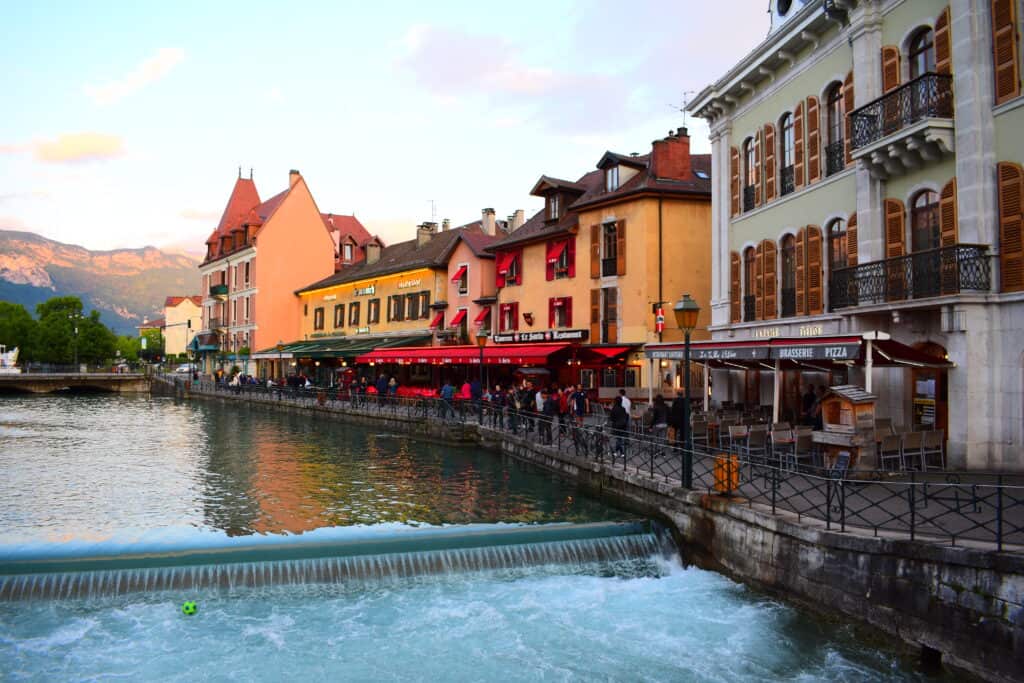
Europe’s climate varies vastly across the continent. From the snowy Pyrenees in Spain to the crystal clear waters of the Mediterranean in Greece, you could come across all four seasons no matter what time of the year you visit.
Most backpackers are trying to travel on a budget, so if you’re in the same boat, then the best time to visit Europe is in the spring or the fall !
The spring months of March through May and the fall months of late September through November provide great deals on flights, trains, accommodations, tours, and even food prices.
You’ll also get to experience everything with far fewer tourists so you’ll have more opportunities to connect better with the locals and get more of an inside look at what life is actually like for them.
This is by far my favorite time to go backpacking in Europe…
However, since you will be backpacking across Europe, there are a few things to keep in mind. While the winters provide an escape from many of the tourist crowds and you can often find extremely affordable accommodations, you’ll need to carry all of your winter gear on your back.
This means winter coats, boots, hats, scarves, gloves, wool socks, and everything in between. This is a lot of weight to carry and trudging through the snow for miles will be extremely exhausting.
So, if you really want to visit Europe in the winter, consider only visiting one or two countries to save on traveling with all of those heavy items.
If you prefer to visit Europe during the peak season (summer months of June through mid-September ), then you’ll usually get great weather. But, be prepared for expensive accommodations, food, tours, and travel methods as well as tens of thousands of tourists and long wait times everywhere you go.
In my opinion, visit Europe during the shoulder seasons for the best experiences!
What are the Best Countries to Go Backpacking in Europe?

Europe is home to over 40 different countries so choosing which ones to backpack through can be overwhelming! If you’re feeling like you aren’t sure where to begin, then keep reading.
If you enjoy backpacking but want to be in close proximity to stunning beaches , then Greece, Italy, Croatia, Portugal, and Spain are the top of the line.
If you want to backpack through the mountains , then northern Spain, France, Switzerland, northern Italy, and Austria make for fantastic destinations.
If you enjoy city life and want to train travel across the continent, then Germany, Poland, Czechia, the United Kingdom, and Denmark should be on your list.
If you want to make your way through medieval villages and across ancient canals via stone bridges, then Belgium, the Netherlands, and Luxembourg are some of the finest countries to visit in Europe.
The best part about visiting countries in Europe is many of them are extremely diverse so you can find mountains, beaches, city life, and medieval villages all in one! Take France, for example. It’s home to luxurious wine vineyards, medieval castles, the great Alps, and the French Riviera.
If this is one of your very first backpacking trips, then I suggest looking into visiting just one or two countries that will provide you with a great range of activities. Then, once you are comfortable getting around Europe, start planning slightly more complex itineraries.
So, what are the best countries to go backpacking in Europe? Coming from an avid backpacker, I believe it depends mostly on your interests, but also on how comfortable you are getting around.
I personally love backpacking through France, Spain, Portugal, Luxembourg, the Netherlands, Czechia, Belgium, and Germany. However, this may change for you.
What You Need to Consider Before Backpacking Europe for 2 Weeks

If you are planning on following one of the below backpacking Europe routes for 2 weeks, then there are a few things you need to consider before booking your flight.
✔️ What’s Your Budget?
If you plan on visiting the UK, Switzerland, and Italy on your trip, but are only budgeting for about $60 per day, that’s not going to work because these are some of the most expensive countries to visit in the world.
Once you have your budget figured out (include flights, train travel, accommodations, and food per day), then you can start thinking about the countries you want to visit.
✔️ Are You Okay With Walking Everywhere?
If you prefer to be close to train and bus stations everywhere you go to alleviate the amount of walking you’ll be doing, then include that in your budget, as well.
If you or someone you are traveling with has limited mobility, then you should consider visiting only one or two countries to reduce the amount of traveling you’ll be doing.
✔️ How Much Will You Pack?
If you thought your school backpack was heavy, just wait until you have two weeks’ worth of clothing, hygiene stuff, electronics, travel documents, and so on on your back!
If you don’t think you’ll be capable of carrying a lot of weight for long walks and hours on end, then it might be best to consider staying in accommodations with a washer and dryer so you don’t need to travel with as much clothing.
✔️ Can You Read a Map?
If not, then you might want to learn how. The tricky part about backpacking, especially solo, is there will occasionally be times where your phone dies and you aren’t sure where the train station is, etc.
This can be problematic especially if you don’t speak the local language and don’t want to pay for an expensive taxi. So, before you jet off to the airport, grab a map of your local town and teach yourself how to read it. If you need help, Youtube is a great place to start!
✔️ Do You Have Travel Insurance or Backup Funds?
This is where travel insurance comes in handy.
I use and LOVE SafetyWing. Practically every trip we’ve ever taken to Europe, we’ve had one or multiple checked bags get lost. SafetyWing was super fast when it came to filing the claims and we were covered when we needed to buy new clothes and travel items.
You can get travel insurance through SafetyWing by clicking here.
In the event that your trip gets delayed or canceled, you get injured or sick, or you need to cut your trip short for a personal or family emergency, you may have to purchase new flights or accommodations without much notice – and these are usually very expensive.
To save on these costs, I suggest purchasing travel insurance so you aren’t left with a hefty bill following your not-so-great vacation.
✔️ Have You Traveled to Europe Before?
If it’s your first time visiting Europe, take a peek at How to Plan a Trip to Europe in 9 Easy Steps and my Greatest Tips for Traveling to Europe for the First Time !
Ultimate Backpacking Europe Routes for 2 Weeks Itinerary Ideas
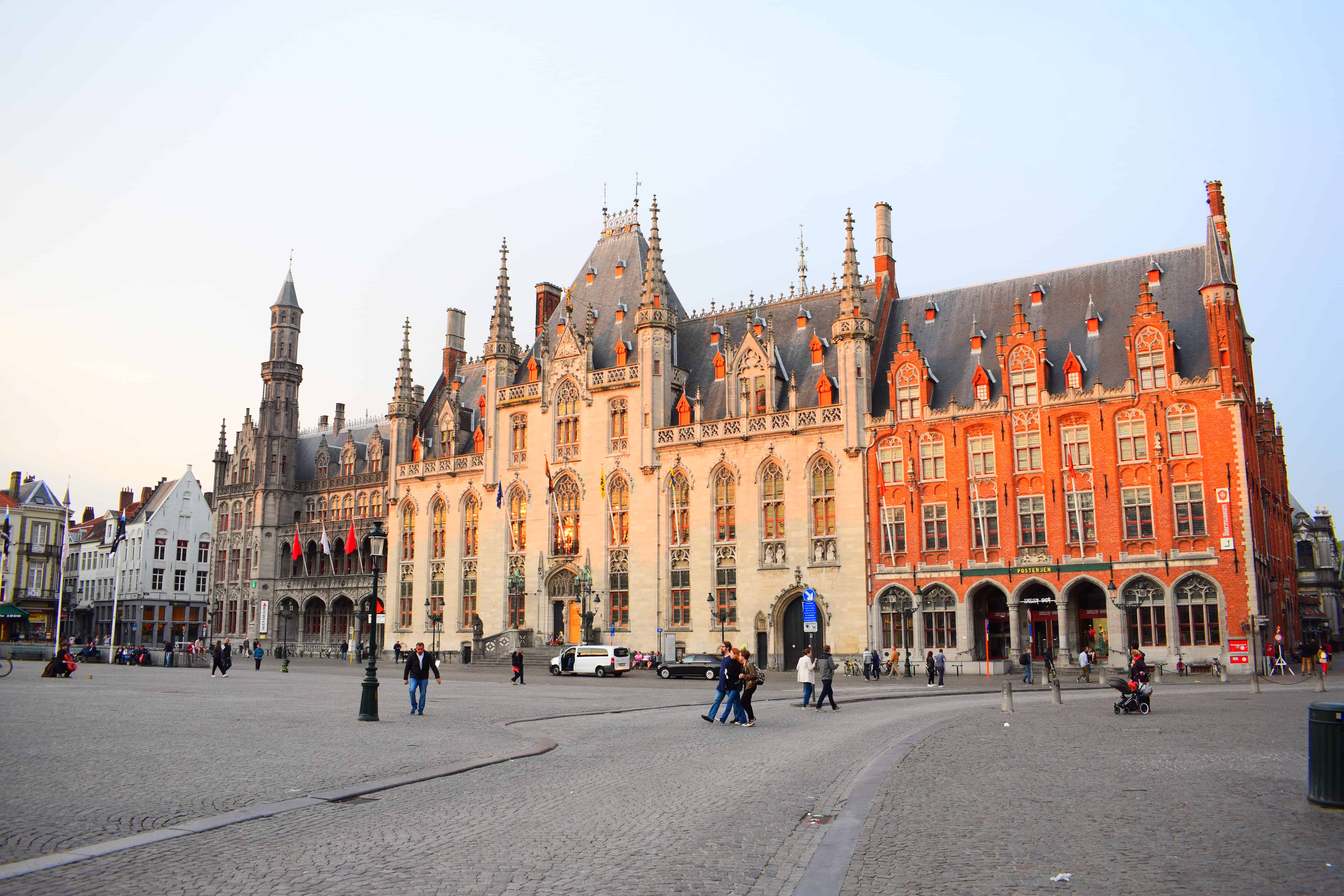
The following backpacking routes have been designed to last around two weeks, give or take a couple of days. Each route follows a different section of Europe such as North, South, East, and my favorite, West!
These are just a few of the limitless possibilities available to you when you go abroad. If you want to combine different regions into one trip, be sure to use Google Maps to map out your itinerary before booking anything to prevent an inefficient journey.
For example:
Paris ➡️ Barcelona ➡️ Berlin ➡️ Lisbon = inefficient
Lisbon ➡️ Barcelona ➡️ Paris ➡️ Berlin = efficient
2 Week Backpacking Europe Route #1: Ireland, Scotland, and the United Kingdom

These three countries are a match made in heaven for backpackers. While they are typically more expensive than many European countries (London being one of the most expensive places in the world), backpacking makes them affordable possible to visit for thousands of people every year!
This ultimate two-week guide will bring you across the best sights and scenic outlooks in these beautiful countries dotted with sheep, rolling hills, and endless beauty!
Day 1: Arrive into Cork International Airport in Ireland
Even though it will be tempting to fly into Dublin, especially if you are coming from the eastern side of Ireland, do your best to fly into Cork Airport. The flights will likely be more expensive, but this will save you a lot of money in train travel and will keep your trip route efficient.
This will be one of the only times I recommend renting a car… Ireland is one of the best road trip destinations in Europe , so it’s only fitting that you share in that experience!
Once you arrive in Cork, check into your accommodation and settle in. Then, spend the night out on the town in Cork – it’s full of lively pubs and colorful townhouses along the Lee River.
Best budget accommodation: Rezz Hotel , $87/night Best mid-range accommodation: Hotel Isaacs Cork City , $109/night
Click here to book the ultimate Cork Culinary Tour
Day 2: Cobh, Killarney, Dingle Peninsula
After a hearty full Irish breakfast, drive yourself down to Cobh (about a 25-minute drive). Walk the streets, especially the one known as the Deck of Cards over on Bandon Hill!
This will give you the best view of the city and the iconic Cobh Cathedral. If you have the time on your way to Killarney , you can try squeezing in Blarney Castle , but keep in mind that this will add about 25 more minutes of driving to your day.
Spend some time walking through Killarney’s vibrant town before moving on to the beautiful rolling hills of the Dingle Peninsula . As one of the most highly photographed regions in Ireland, this is one of my personal favorite spots in the country.
Click here to learn about the 11 Best Dingle Accommodations: Where to Stay in Dingle Ireland
Want to see Fungie the Dolphine on a seafari? Check out this amazing Dolphin and Whale Watching Tour from Dingle!
Day 3: Limerick, Cliffs of Moher, Doolin, Galway
After a morning coffee overlooking the beautiful Dingle Peninsula, make your way up to Limerick for a quick poke around the old town before heading directly for the world-famous Cliffs of Moher !
If you do decide to fly into Dublin on your trip, check out these 9 Best Rated Cliffs of Moher Tours from Dublin or book the top-rated tour below. I also found the 9 BEST Tours from Galway to Cliffs of Moher for 2024 !
Click here to book your Cliffs of Moher and Doolin Day Trip from Dublin
After you’ve walked the edge of these mighty Irish cliffs, head up to the charming fishing village of Doolin . If you have the time and want to explore Galway , it’s a good place to see the wonderful Trad on the Prom show, but if not, ending your day in Doolin is just as good.
Once you make your way to Galway (either on Day 3 or early on Day 4), drop off the rental car and take the train from Galway to Dublin .
Day 4: Dublin
After exploring Dublin for a day (be sure to stay for at least one night so you can experience the lively pubs and live music that happens every night), take a train to Sligo . Spend some time exploring the town’s unique position on the northwest coastline.
Looking to spend a little more time in Dublin? Check out Our Perfect 2 Days in Dublin Itinerary
Best budget accommodation: Hotel St. George by Nina , $86/night Best mid-range accommodation: Celtic Lodge Guesthouse , $120/night

Day 5: Sligo
County Sligo is home to some of Ireland’s most beautiful cliffs, and the country’s tallest, the Slieve League Cliffs ! You’ll also be close to the town of Donegal which produces Ireland’s famous Donegal tweed.
These both make for fantastic day trips from Sligo and can be easily reached via guided tour or a rental car. On your return to Sligo, hop on an evening train up to Belfast, United Kingdom !
Best budget accommodation: The Riverside Hotel , $95/night Best mid-range accommodation: Sligo Southern Hotel , $130/night
Day 6: Giant’s Causeway and Londonderry, United Kingdom
Once you have had some time to explore the infamous town of Belfast located in Northern Ireland, it’s time to hop on a train up to the Giant’s Causeway .
This impressive nature reserve is home to more than 40,000 basalt columns that plunge out of the Atlantic Ocean. It is one of the most remarkable UNESCO World Heritage Sites in Europe and is one of the best places to visit in Europe!
After you have had time to explore this infamous site, hop on a train back to Belfast. If you have some extra time for sightseeing, consider including a train ride to Londonderry before your return to Belfast.
Book your Derrie Danders City Walls Historical Walking Tour in Londonderry Here
Best budget accommodation: Bishop Gate B&B , $88/night Best mid-range accommodation: Maldron Hotel Derry , $104/night
Day 7: Morning flight to Glasgow
Take an early morning flight to Glasgow and explore the town for the day and evening. This port city is known for its excellent shopping and its Victorian architecture.
Book your Loch Ness, Glencoe, and the Highlands Small-Group Day Tour from Glasgow Here
Best budget accommodation: Moxy Glasgow Merchant City , $64/night Best mid-range accommodation: Voco Grand Central Glasgow , $113/night
Day 8: Morning train to Edinburgh
Onto Edinburgh ! Spend the day and evening wandering the medieval Scottish capital. The city is best explored on foot, though renting bikes is quite fun, as well!
If you’re a Harry Potter fan, be sure to book your Scottish Highlands and Hogwarts Express Tour from Edinburgh
Best budget accommodation: Novotel Edinburgh Park , $87/night Best mid-range accommodation: Ibis Edinburgh South Bridge , $111/night
Day 9: Morning train to Inverness
Located in the Scottish Highlands, Inverness is a great place to visit in Scotland. Take some time to explore the Inverness Cathedral , the Inverness Castle , and enjoy some live music at the famous Hootananny Pub .
Book your Isle of Skye & Eilean Donan Castle Tour from Inverness Here
Best budget accommodation: Columba Hotel Inverness , $69/night Best mid-range accommodation: Rowan Guest House , $97/night

Day 10: Loch Ness and Scottish Highlands
While these gothic towns are full of exciting character, ancient tales, and stunning beauty, I recommend spending the majority of your day exploring deep in the Scottish Highlands .
There are plenty of guided day tours that will bring you to the Jacobite Steam train (now famous due to its involvement in the Harry Potter films) and many of the movie’s famous filming locations.
Loch Ness is also wonderful for talking with the locals about the ancient tale of the famed Loch Ness monster!
Book your BMW X5 SUV Highland Whisky Tour Here
Best budget accommodation: Kilmichael House B&B , $63/night Best mid-range accommodation: Loch Ness Inn , $130/night
Day 11: Morning train to Aberdeen
After you’ve explored Inverness, take an early morning train to Aberdeen . This is where you’ll find stunning beauty overlooking the Scottish coastline as well as many great museums, castles, cathedrals, and parks to explore.
Spend the day wandering the small town before taking an evening train down to the Scottish capital of Edinburgh !
Book your Dunnottar Castle and Royal Deeside Small-Group Tour from Aberdeen Here
Best budget accommodation: Mercure Aberdeen Caledonian Hotel , $65/night Best mid-range accommodation: The Craighaar Hotel , $88/night
Day 12: Morning flight to Manchester
Manchester is one of England’s largest cities and is full of character and charm. From endless art galleries and museums to the home of the infamous Manchester football (soccer in America) games, there’s a lot you can fill your day in Manchester with!
Book your Craft Beer Tour around Manchester Here
Best budget accommodation: Ibis Styles Manchester Portland Hotel , $67/night Best mid-range accommodation: Whitworth Locke Hotel , $90/night

Day 13: Morning train to Birmingham
Birmingham makes for a great pitstop on your way down to Bristol and Bath. Spend some time wandering through the museums , visit the famous Cadbury World home to Cadbury chocolates, and visit the 17 th -century Aston Hall mansion .
Book your Shrewsbury Prison Guided Tour Here
Best budget accommodation: Selina Birmingham , $61/night Best mid-range accommodation: Aparthotel Adagio Birmingham City Centre , $91/night
Day 14: Bristol, Bath, and the Cotswolds
Make your way from Birmingham down to Bristol via an early morning train and take in the sights from the Clifton Suspension Bridge before making your way to Bath .
As the name suggests, Bath is famous for its thermal spas and ancient Roman baths ! Take some time to soak in the Thermae Bath Spa and The Roman Baths before checking out Bath Abbey , Pulteney Bridge , and the Royal Crescent !
Book your Stonehenge, Avebury, & Cotswolds Small-Guided Day Tour from Bath Here
Best budget accommodation: Z Hotel Bath , $71/night Best mid-range accommodation: The Devonshire House , $101/night
Day 15: Early train to London
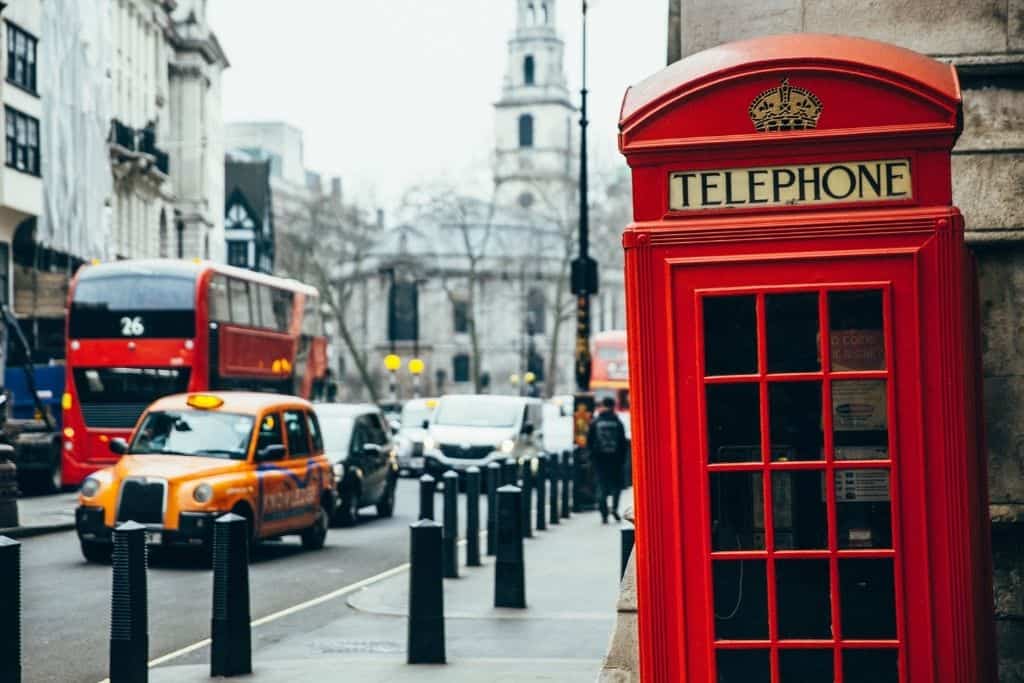
Since many people typically spend at least two days in London , I suggest taking an early train from Bath or Bristol then taking an evening flight home the following day.
This will provide you with enough time to see all of the major sites and attractions as well as take some time to relax and reminisce on your wonderful 2 week backpacking route across Europe!
Book your London East End Food Tour Here
Best budget accommodation: Astor Museum Hostel , $53/night Best mid-range accommodation: Hampton by Hilton London Waterloo , $116/night
Day 16: Fly home from London
Enjoy your last day exploring some museums or just sit back and people watch with some local food before your flight home. As backpacking Europe routes for 2 weeks go, this is by far one of the most scenic and exciting options in my opinion!
2 Week Backpacking Europe Route #2: France, Spain, and Portugal

France, Spain, and Portugal are easily one of the most classic combinations for European itineraries out there. With similar climates, outstanding wine vineyards, vast mountain ranges, and endless beautiful beaches, this trio is easily one of the best backpacking Europe routes for 2 weeks.
This itinerary can be completed in either direction, either beginning or ending in Portugal, but don’t begin it in Spain or you’ll end up backtracking a very long distance!
Please keep in mind that with only two weeks, there will be a lot that you won’t get to see. The itinerary below sums up some of the best places to see in Portugal, Spain, France, but is in no way all-inclusive.
Other fantastic day trips would include the mountains of the Andorra Region and the Caminito del Rey hike in Spain, as well as Normandy , Mont St Michel, Colmar, and the wine regions of France plus many more. Do some research on what you want to see and do most before booking your trip to prevent disappointment in the long run!
Want some more Spain travel inspiration? Check out my list of 33 Wonderfully Unique Places to Visit in Spain !
Day 1: Arrive in Porto
Porto and the Porto Valley are known for their exceptional wineries and limitless vineyards along the Douro River. You can spend your day strolling the city’s ancient streets or taking a wine tour along the river. With dozens of museums, art galleries, and exquisite lookouts to be had in Porto, a day here is sure to start your trip off perfectly!
Spend the night here before moving on to the next small towns on this Portugal itinerary – Coimbra and Obidos!
Book your Douro Valley Small-Group Tour with Wine Tasting, Lunch, and Optional Cruise Here
Best budget accommodation: The Passenger Hostel , $57/night Best mid-range accommodation: Chic and Basic Gravity , $136/night
Day 2: Óbidos and Coimbra
Home to dozens of ancient ruins, Romanesque churches, sky-high cathedrals, and medieval cobblestone streets, Coimbra and Óbidos should be included on any backpacking itinerary through Portugal.
While Coimbra is home to a stunning riverside village covered with vibrant buildings and Roman ruins, Óbidos is known for its beautiful white-washed walls, red terracotta rooftops, and a medieval castle!
Coimbra can easily be reached via train whereas Óbidos may require several bus transfers, a car rental, or a guided tour.
Book your Óbidos Historic Village and Mafra Palace Private Tour Here
Best budget accommodation: Epic Days Guest House , $40/night Best mid-range accommodation: Hotel Ibis Coimbra Centro , $55/night
Day 3: Arrive in Lisbon

Lisbon is one of my favorite cities in Europe with its red clay roofs, exceptional cuisine, and hospitable people. While this itinerary is going to include nearly two days in Lisbon, if you would rather explore outside of the capital for longer then check out my ultimate one day in Lisbon itinerary !
Lisbon is home to museums galore with over 60 in the city alone! Take your time wandering the city streets, eating Pastel de Natas , and enjoying the sights from the several lookouts that have been strategically placed around the city.
Don’t forget to take a ride on the infamous Lisbon trolley !
Book your Lisbon Sunset Cruise Tour Here
Best budget accommodation: Ritz and Freud B&B , $60/night Best mid-range accommodation: LX Boutique Hotel , $113/night
Day 4: Sintra, Cascais, and Estoril
The region surrounding the capital of Lisbon is known for the beautiful Cascais beaches , the castles of Sintra , and even the popular bucket list destination of the Cabo da Roca – the westernmost point in Europe!
In these regions, you’ll find some of the country’s best flora and fauna, rugged coastlines, medieval castles, and gorgeous white sand beaches. Not to mention, charming towns and hospitable locals!
Book your Private Day Trip of Fairy Tale Sintra Here
Best budget accommodation: The Five House , $49/night Best mid-range accommodation: Tivoli Sintra Hotel , $81/night

Day 5: Algarve Region
The Algarves are known for their popular towns of Lagos and Faro home to some of the most beautiful beaches in Europe! Visitors can enjoy swimming at the popular Marinha Beach and Praia do Camilo , boating through the Ponta da Piedade , and kayaking through the infamous Benagil Caves .
If you’re looking to soak up some serious sun on any one of these backpacking Europe routes for 2 weeks, a trip to the Algarves should be in your future!
Book your Dolphins and Benagil Caves from Albufeira Tour Here
Day 6: Seville, Spain,
The Portugal piece of this backpacking itinerary ends in Faro as you take a train over the border into Seville, Spain !
Easily recognized for the Plaza de España , Catedral de Sevilla , and the Royal Alcázar of Seville , there is no end to the beautiful ancient architecture to be explored here.
Book your Cathedral, Alcazar and Giralda Guided Tour Here
Best budget accommodation: Hotel Patio de las Cruces , $124/night Best mid-range accommodation: Hotel Abanico , $181/night
Day 7: Fly from Seville to Valencia, Spain

While Valencia is reachable via train (about 9 hours from Seville), it is far more efficient to fly.
In just over an hour, you’ll land on the beautiful shores of Valencia where you’ll find the famous L’Oceanogràfic aquarium , a 15 th -century mercantile , and the 14 th -century Torres de Serranos which offers unbeatable views overlooking the sweeping Spanish coastline.
While it could also save you time to fly from Valencia from Madrid , the train is much more scenic and slightly more affordable ( most of the time – check prices prior to booking one or the other!)
Book your Valencia Old Town Tour with Wine & Tapas in 11th Century Historic Monument Tour Here
Best budget accommodation: Casual de las Artes Valencia , $66/night Best mid-range accommodation: Hotel Conqueridor , $72/night
Day 8: Madrid onto Barcelona
I suggest splitting your day between Madrid and Barcelona since you can see most of the best parts of them in a few hours, hence my one day in Barcelona itinerary , but if this feels too rushed then consider including an extra day on your itinerary or skipping one of the towns on the itinerary.
Barcelona is home to a unique network of cobblestone streets, medieval architecture, stunning churches, and an array of different neighborhoods each boasting its own unique personality! Take some time at the Arc de Triomf , in the Gothic Quarter , and on Las Ramblas .
Book your Sagrada Familia, Park Guell & Old Town Tour Here
Best budget accommodation: Bruc & Bruc , $69/night Best mid-range accommodation: HCC Monblanc , $88/night
Day 9: Girona and Cadaqués
From Barcelona, hop on a train and head up to the Costa Brava region of Spain. With endless beaches, white-washed villages, and decadent seafood dishes, you really could spend two weeks here alone.
But, since you’ll be short on time, be sure to take a walk on the Platja Gran in Cadaqués and photograph the colorful buildings lining the Ter River in Girona!
Book your Half-Day Game Of Thrones Walking Tour in Girona with a Guide Here
Best budget accommodation: Hotel Ubaldo , $65/night Best mid-range accommodation: Hotel Can Pepín , $70/night

Day 10: Marseille, France
Time to depart Spain and make your way into France! The first stop on this France itinerary will be in Marseille ; a charming, yet sophisticated, fishing town known for its high-end restaurants and shopping as well as beautiful scenery around every corner.
Spend some time swimming (or kite surfing !) in the turquoise blue waters of the French Riviera , strolling through the Old Port , exploring the Château d’If , or even hiking through the Massif des Calanques National Park !
Book your Marseille Shore Excursion: Half Day Tour of Marseille by Electric Bike Here
Best budget accommodation: Ibis budget Marseille Vieux Port , $57/night Best mid-range accommodation: Holiday Inn Express Marseille Saint Charles , $85/night
Day 11: Nice
Known for its iconic coastal promenade, the Promenade des Anglais , Nice is a beach bum’s dream paradise!
Visitors can also enjoy climbing to the hilltop Castle of Nice to take in exceptional views of the French Riviera or wandering the streets of the bustling Cours Saleya which overflows with flowers and goods.
This will be your last full day on the French Riviera before moving on to the French Alps ! If you enjoy wine tours, be sure to check out some of my favorite wine tours in France or simply book the top-rated tour below!
Book your Provence Wine Tour – Private Day Tour from Nice Here
Best budget accommodation: Hôtel Relais Acropolis , $68/night Best mid-range accommodation: Hotel Villa Rivoli , $104/night
Day 12: Fly Nice to Lyon – train to Annecy

Take an early morning flight, if possible, to Lyon where you’ll board directly on a train to Annecy . While Lyon is a great spot to poke around and has its own unique sights and activities, you’ll likely have more fun in the alpine towns of Annecy and Chamonix .
After a one-hour flight from Nice to Lyon and a 2-hour train ride from Lyon to Annecy, you’ll be ready for some authentic cheese fondue and raclette!
Once you have eaten your weight in French dairy goodness, it’s time to explore Annecy’s Old Town – in particular, the Palais de I’Île . This iconic former prison is the centerpiece of the town. From here, wander over the romantic Puente de los Amores and rent paddleboards or pedal boats to explore Lake Annecy !
Book your Annecy Segway Tour Here
Best budget accommodation: Hôtel du Palais de l’Isle , $98/night Best mid-range accommodation: Atipik Hôtel Alexandra , $105/night
Day 13: Chamonix
The average bus ride from Annecy to Chamonix is only about an hour and 35 minutes, whereas the train will take you about 2 hours – and boy, is it worth it!
The French Alps are world-renowned for their cheese, wine, and, of course… mountain sports! Here, a small village is nestled between ranges of skyscraping snow-capped peaks and the infamous Chamonix Mont Blanc .
Year-round, you can enjoy hiking, paragliding, mountain trekking, rock climbing, white water rafting, rappelling, and more. In the winters, the alpine village transforms into the ultimate ski resort boasting incredible trails from both the Aiguille du Midi and Le Brevent cable cars.
Though Chamonix is a small town , try to include it on any of these western backpacking Europe routes for 2 weeks! It is a cultural hub, quaint mountainside village, and adrenaline sport central all in one!
Book your Paragliding Tandem Flight over the Alps in Chamonix Here
Best budget accommodation: Chalet Hôtel Le Prieuré , $70/night Best mid-range accommodation: Chalet hôtel le Whymper , $73/night
Day 14: Paris

The moment you have probably anticipated your entire life is here… you’re going to Paris ! Full of romance, high-end shopping, and Michelin-star cuisine, the City of Lights is on most people’s bucket lists and it would be a shame not to include it in your itinerary if you’ve never visited.
Of course, there is the Arc de Triomphe , Notre Dame , Les Champs -Élysées , the Sacré-Cœur , and the Eiffel Tower , but any Paris itinerary should also include cruising along the Seine River , exploring a few of the dozens of museums like Le Louvre or the Musée d’Orsay !
Book your Louvre Museum Skip-the-line Access Private Guided Tour Here
Best budget accommodation: Pavillon de Montmartre , $89/night Best mid-range accommodation: Le Regent Montmartre , $102/night
Day 15: Depart from Paris to go Home
Enjoy a croissant and a cup of coffee in the Luxembourg Gardens or the Tuileries Garden before heading off to the train station or airport to return home.
While any one of these itineraries for backpacking Europe routes for 2 weeks would be amazing, this one, in particular, is a true gem. Full of fairytale castles, medieval villages, and adrenaline-pumping activities, this trio is one of my personal favorite backpacking combinations in all of Europe!
If you run out of time and only have the option between Barcelona or Lisbon, check out this guide: Barcelona vs Lisbon: The Ultimate City Comparison . Likewise goes for Paris and Amsterdam !
2 Week Backpacking Europe Route #3: Italy and Croatia

When it comes to choosing between any of these backpacking Europe routes for 2 weeks, this one is the ultimate getaway! From romantic gondola rides in Venice to strolling the Old Town and ancient ruins of Dubrovnik, visitors are exposed to a range of budget to luxury experiences that are unparalleled across Europe.
While you could easily spend a couple of months in these destinations, the next two weeks will bring you across some of the best places to see in these beautiful countries!
Day 1: Arrive in Naples
Italy has several international airports and while it will usually be cheaper to fly directly into Rome or Milan, flying into Naples will prevent you from having to retrace your steps with this itinerary.
Try to land early in the morning so you have a full day in Naples before moving on to Pompei and the Amalfi Coast ! Naples is the birthplace of pizza … so go grab yourself a classic margherita and enjoy the view!
Book your Naples Street Food Tour With Local Expert Here
Best budget accommodation: B&B Hotel Napoli , $51/night Best mid-range accommodation: Casa Mariella , $70/night
Day 2: Pompeii and the Amalfi Coast

Pompeii is overflowing with ruins from the ancient city including the House of the Faun and a former Roman amphitheater which was once home to gladiator fights and grand events!
The ancient city is also home to the active volcano of Mount Vesuvius and endless archaeological ruins.
Nearby Pompeii sits the popular Amalfi Coastline – home to beautiful the beautiful seaside village of Positano which is known for its vibrant, mountainside homes overlooking the sea!
This is by far one of the most scenic coastlines in Italy and should be included on any Italian itinerary. If you have extra time and are planning on skipping Bari, take a boat ride around Capri !
Book your Pompeii Small-Group Tour with an Archaeologist Here
Best budget accommodation: Pandora B&B , $38/night Best mid-range accommodation: Il Vecchio Fauno , $57/night
Day 3: Train to Bari
If you are a lover of the sea and beautiful seaside villages, then jump on a train to Bari . Known as the capital of Puglia , this village is home to hundreds of white-washed homes that have been situated around the inlets of the beautiful, turquoise blue Adriatic Sea !
Have fun exploring the iconic Old Town before checking out the 13 th -century castle and the Piazza Mercantile !
Including Bari on your itinerary will add about 7 hours of traveling time versus if you were to just take a train directly to Rome , but since it is so beautiful we believe it is worth the journey. If you would prefer to have more time in Rome, then skip Bari.
Book your UNESCO’s Alberobello and Matera from Bari Tour Here
Best budget accommodation: Olive Tree Hostel , $51/night Best mid-range accommodation: San Nicola D’Amare B&B , $61/night
Day 4: Train to Rome
Whether you are departing Naples or Bari won’t change the fact that I suggest taking an early train to Rome, if possible.
We have only included one day in Rome since much of the sights and attractions are quite touristy and there are far better ones outside of Italy’s capital.
For this reason, we suggest getting an early start so you have at least one full day there to see the Colosseum , Trevi Fountain , Sistine Chapel , and the Vatican Museums .
But, if you really love museums and could spend an entire day exploring the Colosseum alone, then I suggest adding an extra day in Rome to your itinerary.
Book your Small-Group Tour of Colosseum Underground, Arena, and Forum Here
Best budget accommodation: The RomeHello , $76/night Best mid-range accommodation: Napoleon Hotel , $114/night
Day 5: Florence and Pisa
Day 5 of this backpacking Europe route for 2 weeks will take you on a train to Florence and Pisa !
Home to the iconic Cathedral of Santa Maria del Fiore , Michelangelo’s David statue , the Ponte Vecchio , and the Piazzale Michelangelo , Florence is one of the most visited places in Europe!
A day trip to the leaning tower of Pisa is simple with either a guided tour from Florence or a self-guided tour via train! Since this journey from Florence to Pisa is only about 50 minutes, we highly suggest including it in your trip.
Book your Tuscany in One Day Sightseeing Tour from Florence Here
Best budget accommodation: Hotel La Torre , $65/night Best mid-range accommodation: Relais Centro Storico Residenza D’Epoca , $67/night

Day 6: Cinque Terre
In just 3 hours from Florence, a train ride will bring you to the quintessential Italian Riviera: Cinque Terre ! While there are a plentiful amount of sights to be seen in this gorgeous seaside region, the best part of visiting Cinque Terre is to walk through the 5 villages that make up this hillside town.
Each one has its own distinct characteristics and is home to stunning scenery as far as the eye can see. The villages are known as Vernazza, Manarola, Monterosso, Corniglia, and Riomaggiore and are all connected by dirt and cobblestone walkways.
Be sure to buy a bottle of freshly made limoncello while walking around! There are also plenty of great hiking trails between the villages with sweeping views of the coastline so if you like to hike , Cinque Terre is the perfect place to visit!
Book your Cinque Terre Half-Day Kayak Trip from Monterosso Here
Best budget accommodation: Santa Marta Rooms , $136/night Best mid-range accommodation: Hotel Gianni Franzi , $146/night
Day 7: Milan
Another 3-hour train ride from Cinque Terre will bring you into the heart of downtown Milan.
Home to the infamous Duomo di Milano , the iconic cathedral that dominates this vast city, as well as the Sforzesco Castle and several museums and art galleries , Milan deserves one full day on this backpacking Europe route for 2 weeks!
Milan is also famous for its gelato , so be sure to try a scoop… or two… or three during your visit!
Book your Secrets to Learning How to Make Fresh Pasta and Tiramisù Food Tour Here
Best budget accommodation: Hotel Sanpi Milano , $101/night Best mid-range accommodation: Ibis Milano Centro , $95/night
Day 8: Venice
To get to Venice, you can hop on another 3-hour train ride or a quick 55 minute fly from Milan. Though flying will typically be more expensive (not always – compare pricing before booking!), since you’ll only have one day in Venice I suggest flying to get the most out of your day.
Over your 24 hours in Venice, be sure to stroll through St. Mark’s Squar e, take a gondola ride down the Grand Canal , walk over the iconic Bridge of Sighs , and if you get the chance, visit Saint Mark’s Basilica during sunset!
Even if you don’t get to all of these things, Venice is a breathtaking city to visit nevertheless. So, consider taking a day to people watch and eat as much gelato, pasta, and pizza as you can on your last day in Italy !
Book your Venice In a Day: Basilica San Marco, Doges Palace & Gondola Ride Here
Best budget accommodation: Hotel Carlton On The Grand Canal , $126/night Best mid-range accommodation: Ai Mori d’Oriente , $149/night
Day 9: Fly Venice to Zagreb, Croatia
You’re off to Croatia ! Spend the morning in Venice visiting any last-minute sights before jetting off to the airport. Croatia’s capital is home to an impressive Neo-gothic 12 th -century cathedral , the Ban Josip Jelačić Square , and a plethora of museums making it the perfect pitstop on your backpacking Europe route for 2 weeks!
Book your Slovenia, Ljubljana, and Lake Bled Full-Day Small-Group Excursion from Zagreb Here
Best budget accommodation: Hotel Jadran , $58/night Best mid-range accommodation: Hotel Dubrovnik , $88/night
Day 10: Plitvice Lakes National Park
Just over two hours southwest of the capital sits the breathtaking Plitvice Lakes National Park !
Home to dozens of tranquil blue waterfalls perfect for swimming, endless dense forestry with hiking trails galore, and long wooden bridges for crossing over crystal clear lakes , this is a nature enthusiast’s paradise!
Spend the day jumping into the deep, cool toppling waterfalls and enjoy a picnic on a mossy rock. To reach the national park without a car, hop on a bus in the center of town for a carefree journey!
Book your Plitvice Lakes and Rastoke, Small-Group Tour from Zagreb Here

Day 11: Zadar
Once you have swum until your heart’s content, jump back on the bus and get off at the nearest town with connections to Zadar .
This stunning seaside city is home to turquoise blue waters , endless white-sand beaches , the iconic People’s Square full of shopping, as well as the central Five Wells Square .
Book your Full-Day Sailing Tour in Zadar Archipelago Here
Best budget accommodation: Downtown Boutique Hostel , $29/night Best mid-range accommodation: Villa Triana , $67/night
Day 12: Split
From Zadar, there is a 3-hour bus journey down to Split . Technically, you could spend days here just exploring all of the ancient ruins and hundreds of charming corners of this terracotta-roofed city, but since you’ll be a little short on time, here’s what you should do.
First, take some time to explore the Diocletian’s Palace (it once housed a Roman emperor!) and then move on to the 4 th -century Saint Domnius Cathedral .
Once you have taken some time to explore the Old Town and stick your feet in the crystal clear waters on one of the dozens of beaches , then it’s time to start strolling Riva ; a lively boardwalk overflowing with great bars and restaurants serving up authentic dishes focused on using fresh, local ingredients!
Book your Krka Waterfalls and Sibenik Day Trip Including Wine Tasting from Split Here
Best budget accommodation: Hotel Garden Apartment , $50/night Best mid-range accommodation: Royal Suites Hotel , $95/night
Day 13: Dubrovnik
The last leg of your backpacking journey includes a 4.5-hour train ride down to the stunning coastal town of Dubrovnik . As one of the most popular destinations in the entire country, I suggest spending at least a day and a half here, but more would be best if you can swing it!
The city is easily recognized across the globe for the El hotel Stari Grad – Casco Viejo ; the medieval Old Town full of history and culture.
Along your Dubrovnik travels, you can stop in to see the Lovrijenac fortress which offers panoramic views of the city and sweeping coastline, as well as the Rector’s Palace , the Dubrovnik Cable Car , the Franciscan Church and Monastery , and the city’s main street of Stradun which offers great shops, bars, and restaurants!
There are endless possibilities for visiting Dubrovnik, so be sure to leave some of your energy for the end of your trip… we’ve left one of the best destinations for last !
Book your Blue Cave Small-Group Boat Tour from Dubrovnik Here
Best budget accommodation: Hotel Dubrovnik , $71/night Best mid-range accommodation: Villa Katarina Dubrovnik , $92/night
Day 14: Dubrovnik and Return Home
As far as backpacking Europe routes for 2 weeks go, this one is a popular favorite! Finish up this incredible journey in Dubrovnik before returning home.
Be sure to stuff as much local seafood in before leaving, as possible – I suggest trying the Black Risotto (made with squid ink)!
2 Week Backpacking Europe Route #4: Switzerland, Austria, and Czech Republic

There couldn’t be a more luxurious combination for a backpacking trip! From the iconic pedestrian bridge in Lucerne to the halls of Mozart in Salzburg and the Old Town Square of Prague, there is hardly a more sophisticated route across Europe!
Since you’ll be following this 2 week backpacking Europe route from west to east, it’s best to start in Geneva. However, you can also start the itinerary in Czechia, but don’t begin in Austria as you’ll need to backtrack across the country twice if you do.
$ Keep in mind that if you’re trying to backpack Europe on a budget, this itinerary may be difficult for you. Switzerland and Austria are quite expensive, so be sure to do some research on accommodations and train travel prices before setting your trip in stone!
Day 1: Geneva
Geneva is gratifying to say the least! From its exotic location on Lake Geneva (also known as Lac Léman) to its dramatic water fountain and a plethora of sophisticated museums , Geneva is a backpackers heaven!
Owing to the region’s vast beauty and endless, beautiful streets, backpackers can enjoy roaming here for days one end. However, even the hostels here can sometimes start around 80 USD per night for a single traveler, so I suggest spending only a night or two here if you’re on a budget.
Book your Chocolate Flavours Tours Geneva: 3-hour Chocolate Tasting and Old Town Visit Here
Best budget accommodation: Ibis Geneve Centre Lac , $115/night Best mid-range accommodation: Hotel Bernina , $154/night
Day 2: Zermatt and the Matterhorn

Once you’ve had time to settle in in Geneva, it’s time for the first leg of your journey: visiting the Swiss Alps town of Zermatt which offers exceptional views of the Matterhorn !
The town is world-renowned for its winter sports and exceptional hiking trails up some of the tallest mountains in the Alps ! A trip here is high on most travelers’ bucket lists so whatever you do – don’t skip a trip to Zermatt!
Book your Tandem Paragliding Tour in Zermatt, Switzerland Here
Best budget accommodation: Youth Hostel Zermatt , $97/night Best mid-range accommodation: Hotel Adonis , $149/night
Day 3: Lucerne
Next, we’re off to Lucerne . In just under 4 hours via train, you’ll be surrounded by the stunning Lake Lucerne , the iconic Chapel Bridge , and the Spreuer Bridge .
The region is known for its exceptional beauty coming from the surrounding mountains and crystal clear lake, making it the perfect place to sit back and rest your feet during your long journey.
Book your Lucerne Walking and Boat Tour: The Best Swiss Experience Here
Day 4: Zurich
The city of Zurich is known for its exclusive business and finance districts, the 12 th -century Grossmünster cathedral , top-of-the-line shopping on Bahnhofstrasse , and all of the water sports found on Lake Zurich !
If you can’t tell by now, many of the major destinations in Switzerland are situated on their own lake and surrounded by snow-capped mountains ; there is truly nothing more beautiful and elegant!
Book your Day Trip to Swiss Villages (Interlaken-Grindelwald) with a Local from Zurich Here
Best budget accommodation: Astor Museum Hostel, $53/night Best mid-range accommodation: Hampton by Hilton London Waterloo, $116/night
Day 5: Fly from Zurich to Salzburg, Austria
Time to move onto Austria! Salzburg was the birthplace of the famed musical artist, Wolfgang Amadeus Mozart , so attending a musical event here is practically required.
After a show, take a hike up to the 11 th -century Fortress Hohensalzburg before exploring the famed Schloss Hellbrunn and picking out a souvenir on Getreidegasse (this is also where you can see Mozart’s birthplace!)
Book your Austrian Apple Strudel Cooking Class including Lunch in Salzburg Tour Here

Day 6: Hallstatt
The alpine village of Hallstatt rests directly over the Hallstätter See in a most enchanting cliffside. Nestled between mountains on all sides, Hallstatt is by far one of the most beautiful places to visit in Europe!
Take some time to explore the Salzwelten Salt Mine or do some hiking on one of the hundreds of trails ranging from beginner to advanced. If you’re looking to include some time in nature on your 2 week Europe backpacking route, then be sure to include Hallstatt on your trip!
Book your Guided e-bike Tour of the Alpine Pastures in the Salzkammergut Here
Best budget accommodation: Pension Bergfried , $110/night Best mid-range accommodation: Heritage Hotel Hallstatt , $180/night
Day 7: Vienna
In just under 4 hours via train, you’ll arrive in Austria’s capital of Vienna ! Wander the Stephansplatz Square , St. Stephen’s Cathedral , and the Schönbrunn Palace , or choose to relax at one of the dozens of streetside cafes and do some people watching.
Vienna is packed full of culture and immaculate architecture , so take some time to slow down and enjoy this stunning city!
Book your Vienna Classical Concert at St. Peter’s Church Tour Here
Best budget accommodation: Ibis Wien Mariahilf , $61/night Best mid-range accommodation: Hotel Mercure Wien Westbahnhof , $75/night
Day 8: Fly from Vienna to Brno, Czechia

Next, you’re onto the last leg of your backpacking journey – the Czech Republic (also known as Czechia)!
Recognized for its arched stone bridges , Špilberk Castle , Old Town Hall , and Moravian Museum , Brno is full of history and medieval charm .
Best budget accommodation: Hotel Amphone , $40/night Best mid-range accommodation: Jacob Brno , $56/night
Day 9: Český Krumlov
Next on the list is the magical Český Krumlov ! We decided to include two days in this exceptional, fairytale town owing to its enchanting envelopment along the Vltava River .
The town has been recognized as a UNESCO World Heritage Site for its exceptional Castle , cathedrals , and unique design within the southwest regions of Czechia.
Best budget accommodation: Hotel Ebersbach , $79/night Best mid-range accommodation: Monastery Garden , $107/night
Day 10: Český Krumlov
If you plan on taking part in this particular backpacking Europe route for 2 weeks, we suggest spending the second day of your time in Český Krumlov walking along the river, enjoying the local food, chatting with the hospitable locals, and taking in all of the astounding scenery that will surround you!

Day 11: Pilsen
Made famous to tourists by the original Pilsner Urquell Brewery , Pilsen is a great place to enjoy a pint or two!
The town is also home to the Cathedral of St. Bartholomew and the Great Synagogue – it’s the second largest in Europe! Spend some time wandering the Old Town before prepping for your trip to Karlovy Vary.
Book your Pilsen Highlights Small-Group Tour and Pilsner Brewery Tour including Lunch and Beer Tasting Tour Here
Day 12: Karlovy Vary

Recognized as one of the most special spa towns in all of Europe, Karlovy Vary is the ultimate place to unwind.
The Western Bohemian town is famous for its striking colonnades and endless thermal springs bringing relaxation and rejuvenation to visitors.
On any backpacking journey through the Czech Republic, a trip to Karlovy Vary is surely in order!
Best budget accommodation: Dvorak Hotel and Spa , $93/night Best mid-range accommodation: Grandhotel Pupp , $148/night
Day 13: Prague
Finally, we’re off to Prague ! Czechia’s capital is the queen of fairytale, medieval towns in Europe!
Captivating its visitors with its breathtaking Old Town Square , Charles Bridge , Lesser Town , Prague Castle , St. Vitus Cathedral , bustling Wenceslas Square , and 600-year-old functional Astronomical Clock , there is no other town in Europe that compares to the gothic charm of Prague!
Be sure to spend some time enjoying the local cuisine – especially that of Trdelník , a slow-roasted dough that’s been rolled in cinnamon sugar and oftentimes filled with hazelnut chocolate!
Book your Best of 2 Countries in 1 Day: Bohemian and Saxon Switzerland from Prague Tour Here
Best budget accommodation: K+K Hotel Central , $104/night Best mid-range accommodation: Grandium Hotel Prague , $116/night
Day 14: Return Home from Prague
If possible, try to take an evening flight so you have another whole day to enjoy Prague’s sights, attractions, and charming Old Town!
How to Get Around for 2 Weeks in Europe

You might be thinking, “if I’m backpacking, won’t I be walking most of the time?” and the answer to that question is yes – but within reason!
It wouldn’t be possible to follow one of the above backpacking Europe routes for 2 weeks if you actually tried to walk everywhere. In fact, you probably wouldn’t make it out of a single country.
While walking will be your primary method of transportation in both rural and urban areas, you will need other modes of transportation to get between cities and countries.
✔️ Unless you get lucky and find a spectacular deal on a car rental where the company also lets you cross several international borders, don’t rent a car .
This purchase typically blows most budgets out of the water and often leads to headaches and frustration in the end.
Europe is known for its busy city streets and heavy pedestrian traffic, so trying to find a parking spot outside of the Eiffel Tower is just going to waste your time.
✔️ Bus, train, and budget airline travel is going to become your new best friend!
If the countries you have chosen for your backpacking trip aren’t sharing a border, check to see what flights would cost. On occasion, you can save a lot of money by flying versus taking the train.
In contrast to this, however, the Eurail is often times the most efficient and affordable method of transportation in Europe. This railway connects thousands and thousands of destinations across the continent and provides everything from economy to first-class tickets.
If you aren’t going to be crossing international borders for a specific leg of your journey (i.e. Annecy to Paris), then compare the local bus and train pricing. Often, you can book these journies online up to 90 days in advance and save up to 15% on pricing for booking early!
✔️ Try to avoid taking taxis altogether
This is by far the worst deal you can get on transportation in Europe since many major cities have highly developed metro and bus systems.
If you really need a ride, order an Uber. Most European cities are equipped with Uber and Lyft, and this is a much more affordable and safe travel method.
Important Tips for Backpacking Europe for 2 Weeks

So, you’ve decided to take on one of my backpacking Europe routes for 2 weeks (or another route that you have skillfully designed) – how exciting!
Backpacking across 4 countries in 9 days was one of the greatest experiences of my life and it led me on to start designing dozens of more trips just like it. I hope you find your backpacking experience to be a happy one and it motivates you to continue your travels across Europe and the world!
But, before you run off to the airport, make note of these few tips below first.
✔️ While visiting more countries can oftentimes save you money in the long run, don’t try to squeeze too much into your two-week European itinerary . Try to be reasonable when planning your trip!
For example : backpacking from the south of Spain up to Amsterdam in two weeks: reasonable! Trying to include Paris, the Algarves, Italy, Croatia, and the Greek Islands in a two-week trip: not reasonable!
✔️ Don’t stay in one place for too long.
If you’re trying to use a backpacking journey as a method of seeing a lot of places in a short amount of time, don’t spend more than two days in each place. This is usually plenty of time for most major cities, but it won’t be nearly enough for places such as the Greek Islands or the European Alps.
Unfortunately, if you only have 2 weeks for traveling, you’re going to be limited on where you can go and how much you can see.
So, instead of choosing a lot of destinations and only visiting them for a day or so, pick two or three countries and see the best spots in all of them!
✔️ We’ll touch on this more below, but remember that whatever you pack you have to carry on your back!
So, leave the heels, hairdryer, and 9 different dresses at home!
✔️ I have said it before and I’ll say it again, travel to Europe in the shoulder seasons.
This will save you money, significantly reduce your wait times at attractions and restaurants, and you’ll get to experience each destination with far fewer tourists.
✔️ Invest in a good backpack.
This one is absolutely essential…
If you take a quick peek at the packing list below, you’ll notice that I have included a link to the 50-liter Osprey backpack . Yes, it typically costs around $250.
Even if you’re going to try to stay on a budget for your backpacking trip across Europe, don’t skimp on the backpack you use. It is the single most important item on your packing list and it will make or break your trip .
For a good backpacking experience, you need a high-quality backpack with a lifetime guarantee. It’s not going to be cheap, so plan to budget some money for it well in advance of your trip!
✔️ Lastly, decide if you want to go backpacking solo in Europe or with a friend or loved one.
This one is tough because while many of us would love to have our friends and family join us on a vacation, a backpacking trip can be a little bit more – tiring.
Keep in mind that walking several miles each day, moving between accommodations, and endless train travel can strain any relationship.
So, just be mentally prepared for the bumps in the road and consider traveling solo if this doesn’t seem like a good fit for your travel style .
What to Pack for 2 Weeks in Europe

There is a little saying that Sean and I use when we go backpacking, camping, etc…
“ Ounces equal pounds and pounds equal pain “
This means that when you pack something just because it is only a few ounces, those ounces are going to add up – fast! The more ounces you have, the more pounds you’re carrying, and the more pounds you carry… well, the more you’re likely to be in pain.
So, when beginning to pack for one of the above backpacking Europe routes for 2 weeks, be sure to only pack the items that you know you will use, wear, and actually need. This is essential for a successful backpacking trip to Europe!
In my experience, if you can try to budget for one accommodation with a washer and dryer, you’ll save yourself from carrying a lot of weight in extra clothes.
✔️ The packing list below has been designed for visiting Europe in the shoulder seasons and having at least one accommodation with the means of doing your laundry.
Packing List for Backpacking Europe for 2 Weeks
Since this is a lot to look at, let’s go over it a little bit…
Layers are going to be your best friend in Europe . The weather can change in a matter of hours from a balmy 75 degrees Fahrenheit (24 degrees Celsius) to a chilly 50 degrees (10 degrees Celsius) after the sun goes down.
You’ll be happy when you have a sweater and a warm coat right there in your bag or when the skies decide to open up and your rain jacket is a quick unzip away!
Next, try to book an accommodation with a washer and dryer about halfway through your trip. This will allow you to wear a variety of outfits then restart the lineup during the second week.
This way, you won’t have the same clothes on in all of your pictures across different countries and you won’t need to carry as many clothes with you.
Also, good walking shoes are essential to a happy trip ! Comfortable, supportive shoes that prevent blisters and early fatigue will make or break you along your travels. Opt to break in any new shoes before departing to prevent the wearing and tearing of your feet.
If you are planning on doing a few of these backpacking trips, do yourself a favor and purchase some TSA-approved travel bottles and a TSA-approved clear bag . This set here combines the two, making it simple to keep all of your lotions and liquids together without the mess!
Next, if you aren’t sure what Dramamine is, it’s a motion sickness relief tablet. These have saved my life on numerous bus, train, flight, and ferry rides, and I highly recommend them if you are prone to motion sickness.
Since you’ll be on the road rather frequently, charging outlets can sometimes be difficult to find (unless you want to sit in a McDonald’s for a few hours). I never travel without my backup battery pack since I use my phone as my only camera which can kill my battery rather quickly.
The backup battery pack is perfect for on the go and it fits perfectly inside my Himawari Day Ba ckpack! It comes with its very own USB charging port, a large pouch for my laptop and extra layers, and plenty of inner zippers to hold my important documents.
It’s perfect for when you want to leave your 50-liter pack back at your accommodation and walk around with a lot less weight on you.
I personally bring this backpack everywhere with me including in Europe, so if you’re looking for a good backpack to explore some European cities with, this is the best one I have found!
For a more in-depth look at everything I pack when I travel to Europe, check out my Europe Travel Essentials List !
How Much Money Do You Need to Travel Europe for 2 Weeks?

Since this is going to vary greatly depending on which countries you visit, how long you spend in each country, the activities you do, what you eat, where you stay, and so on, I’m going to give you a list of the average cost of the most popular expenses you’ll have while backpacking Europe.
Keep in mind, that if you’re already in Europe, you can save a considerable amount of money on flights and train travel, whereas if you’re coming from outside of Europe, you’ll likely need to book a flight to get there.
Use the averages below to add up how much money you will be spending per day. The lower end of the averages are for more affordable countries such as Portugal and the higher end of the averages are for expensive countries such as Switzerland.
If your addition comes outside of your budget, consider off-season travel or one of the less expensive backpacking Europe routes for 2 weeks.
Transportation
Travel prices rise and fall with the seasons and major holidays in Europe, just like most places in the world. In the summers and around the winter holidays, you’ll see flights and train tickets skyrocket.
✔️ In the shoulder seasons of spring and fall, you can usually score a great deal on nearly half-priced airfare and train travel.
✔️ Taxis will be expensive regardless of when you visit and you’ll have a higher likelihood of getting scammed year-round by using them (always make sure the taxi is with a reputable company).
✔️ You can occasionally get a good deal on car rentals in the shoulder season , but keep in mind that the chance of poor driving conditions increases outside of the summer months in most European destinations.
In the peak season summer months, car rentals will be expensive (with limited kilometers – extra money for unlimited) and can book up almost a year in advance on some occasions!
✔️ So, overall, the most cost-efficient method of getting around in popular travel destinations is to walk, take the metro, or rent a bicycle !
Bicycles can often be rented for as little as €10 per 24 hours, and can also often be rented for up to a week at a time for good deals, as well. By combining walking and biking around major cities, you’ll save a lot of money.
✔️ 3 Km Taxi Ride: €4.50-24 ✔️ Single Metro Ride: €1.50-2.75 ✔️ 24 Hour Bike Rental: €14 ✔️ One Week Car Rental in France: $155-700+
Accommodation
If you’re trying to stick to a budget but also want to avoid hostels, you’re in luck. Europe is covered in budget-friendly hotels and there are usually at least a few in every country you visit.
These accommodations have been priced to show the difference between the shoulder season (low end) and peak season (high end).
Budget Hostel: €33-55 (per night of single occupancy) Mid-Range Hotel: €83-130 (per night of double occupancy) Luxury Hotel: €240-550+ (per night of double occupancy)
If you choose one of the above backpacking Europe routes for 2 weeks, chances are you’ll likely be eating most of your meals out of food carts and the supermarket, with few meals being saved for sit-down restaurants.
Lunch and dinner are by far the most expensive meals to eat at a sit-down restaurant, so if you’re going to splurge on anything, go for a local breakfast or brunch.
Hot Coffee: €1-3.50 Sandwich and Pastry: €4-6 Meal from a Food Truck: €5-12 Meal at Typical Restaurant for One: €15-25 Dinner for Two at a Nice Restaurant: €40-70
For the most part, outside of museums, ticket prices are similar for many major attractions year-round. So, if you’re trying to stick to a budget, make a list of all of the major attractions in each place your visiting, and choose in advance which ones you want to pay to see.
When I was backpacking through France, I went and saw the Eiffel Tower, but I decided to skip going up it. I really wanted to go paragliding in the French Alps, so I decided to do that instead of going inside all of the sights and museums in Paris.
Choose what means the most to you, then budget for it and book tickets online in advance to save money!
Eiffel Tower (stairs vs. lift and 1st vs. 3rd floor), Paris, France: €10-26 Park Güell in Barcelona, Spain: €10 Sintra Castle in Sintra, Portugal: €10 Belfry Tower in Bruges, Belgium: €12 Casemates du Bock in Luxembourg City, Luxembourg: €6
Other Expenses
Unfortunately, things happen when traveling. Take into account that pickpocketing, scams, petty theft, and losing items are all possible when taking part in any of the above backpacking Europe routes for 2 weeks.
Budget for upwards of €200 in losses over the course of a 2-week trip. Keep in mind that you may not have anything happen, but if your phone gets stolen or you miss your flight, you’ll be happy you at the very least budgeted for the loss.
To help reduce your risk of needing to use this budget, avoid:
Street Games Exchanging Currency on the Street Using Streetside ATMs Taking Taxis Leaving Your Belongings Unattended Walking Home Alone (especially at night) Flashing Your Valuables in Public Spaces (wallet, jewelry, etc.)
How to Backpack Europe for 2 Weeks on a Budget

The first time I backpacked across 4 countries in Europe I was only 20 years old and in college… so, I know what you mean by being on a budget!
From my experiences, I have a few really great tips for following my backpacking Europe routes for 2 weeks on a budget.
✔️ First, you’re going to have to eat food from supermarkets, street carts, and food stands .
Sit-down restaurants can cost you upwards of 25 euros per person or more in Europe, so instead just enjoy the delicious food being whipped up right outside.
✔️ Also, bring your own reusable water bottle .
Beer and wine are far cheaper than bottled water in Europe, so when it’s time to hydrate, you’ll be spending nearly 3-4 euros per small bottle.
I always use my LifeStraw Bottle since it has a 2-step filtering process and I’ve used it all over the world and have never had any issues drinking tap and even stream water.
✔️ Look for budget accommodations .
Airbnb’s, budget hotels, or even hostels can be great options. Just be sure to do some research first and ensure you pick a safe hostel in a safe part of town if that’s the route you choose to go.
✔️ Walking, bike rentals, and the metro will be your new best friend.
Taxis and cabs are super expensive (and dangerous at times), so opt to take a more eco-friendly approach to get around. It’s cheap and it’s better for you and our planet!
✔️ When getting between countries, compare flight and train prices .
Trains are most often cheaper, but can sometimes take far longer than a plane. Compare your options and see what fits best for your itinerary.
✔️ Pro Tip : I prefer to travel on the Eurail since it’s always scenic, affordable, easy-to-use, and comfortable. I highly recommend buying a multi-country or multi-week pass if you plan on getting around primarily by train! It will save you a ton of money in comparison to buying individual tickets, especially if you’re keeping your itinerary flexible.
Unique Experiences to Have in Europe

Whether this is your first visit to Europe or your 10 th , there are seemingly endless experiences that can be had on this beautiful and diverse continent!
✔️ Hiking and Mountaineering
Everything from summer to winter hiking on the tallest mountain in the Alps (Mont Blanc), rock climbing, rappelling, cave exploring, and more is available to adventure seekers looking to hit the ground running.
✔️ Surfing and Water Sports
Surfing, snorkeling, jet-skiing, windsurfing, boating, fishing, sunbathing… you get it.
From the French Riviera to Italy’s Cinque de Terre, there is no end in sight to what you can do on the water in Europe!
✔️ Paragliding and Skydiving
We actually went paragliding on our second backpacking trip through Europe when we were in the southeast of France, and it was easily one of the best experiences of our lives!
You also have the option of going skydiving or even riding in a bush plane or taking a helicopter tour through the Alps.
✔️ Winter Sports
When it comes to winter sports, there really is no shortage in Europe. Skiing, snowboarding, ice climbing, ice fishing, snowshoeing, and hiking!
You can also opt to enjoy your time in one of the thousands of unique spa retreats scattered across the region if that’s more your style.
What to Eat in Europe

As I previously mentioned, if you’re looking to stay on somewhat of a budget you’ll need to primarily eat at street carts and food stands. This is, however, far from a bad thing!
The street food in Europe is some of the best I’ve ever had in my life. From bratwurst and French fries in Germany to homemade spaetzle and sauerkraut in Prague and delicate crepes in France, there is no end to the amazing food to try in Europe on a budget!
Or, if you’re not on much of a budget and are hoping to find the best foods in every country, these street foods should also be on your list… seriously, they’re that good!
Below is a list of some of our favorite street foods and where to try them if you plan on choosing one of our backpacking Europe routes for 2 weeks!
✔️ Doner Kebab – Anywhere ✔️ Sweet or Savory Crepes – France ✔️ Curry Schnitzel Cone – Germany ✔️ Beef Stew – Budapest ✔️ Bratwurst with Mustard, Peppers, and Onions – Prague ✔️ Mulled Wine – Christmas Markets, anywhere ✔️ Pastel de Nata – Portugal ✔️ Steet Tapas – Spain ✔️ Stroopwafels and Bitterballen – Amsterdam ✔️ Chocolate and Waffles – Belgium ✔️ Trdelník – Prague ✔️ Pizza – Naples, Italy ✔️ English Yorkshire – London
Tips for Traveling Europe During COVID

Navigating the challenges of traveling during the COVID-19 pandemic can be very frustrating and overwhelming. Trust me, I’ve been there!
Each country has its own set of rules and restrictions that you’ll need to abide by if you wish to enter and have a pleasant experience, so be sure to thoroughly research current travel requirements for each country on your European backpacking itinerary.
In many cases, you’ll need to show a valid vaccine passport with the second dose being taken at least 2 weeks prior to arrival. Additionally, you will likely need to show a negative RT-PCR OR Rapid Antigen test result that was taken within a specific hourly period before your departure for Europe.
You may also need to fill out health declaration forms, quarantine without notice, have your temperature taken and symptoms checked, and even take additional COVID-19 tests after arrival.
✔️ While we try to keep this page updated as much as possible, travel requirements are changing too frequently to keep up with. Always check your government or local Embassy’s website for the most up-to-date information regarding COVID-19 protocols. Requirements are changing very frequently and sometimes without notice, so you’ll need to be prepared for any changes to your itinerary. This is another big reason that having travel insurance that covers COVID-19 is extremely useful! Keep in mind that most travel insurance needs to be booked within 2 weeks of booking your trip , or it may not cover everything.
Travel Insurance for Europe

If you have plans to follow any of the above backpacking Europe routes for 2 weeks, you should definitely be buying travel insurance. While I don’t want to scare you or make you think that backpacking isn’t a safe idea, there are endless possibilities for things that could go wrong.
Pickpockets, lost luggage, travel delays and cancelations, or worse… injuries, are all possible. We always use SafetyWing since it’s ridiculously affordable (like $42 per month of travel per person…) and it covers practically everything, including COVID.
We have also heard of other travelers being happy with the service from World Nomads , but we haven’t used them so we can’t vouch for them personally.
How to Stay Safe in Europe

I can’t recommend the backpacking Europe routes for 2 weeks above enough – seriously! Backpacking Europe makes up some of my favorite travel experiences to date, and I am notorious for oversharing my fond memories with practically strangers…
But, there are a few things you should know before you jump on a plane, train, or ferry over to Europe to keep you safe. Just like anywhere in the world, Europe is a very safe region but there are things you should be aware of and look out for.
✔️ For example, avoid street games at all costs.
This is a classic “local scams the tourist” scenario, so don’t give anybody on the street your money or show them your wallet.
✔️ Also, avoid using streetside ATMs !
Many of them have a plastic covering over the card reader that you won’t be able to see that will steal all of your credit card information. This is especially true in Prague. Only ever exchange or withdraw money at a local bank or at an ATM behind a locked door with cameras.
✔️ Don’t do what the girls in the photo above are doing… letting their guards down with all of their belongings on them.
Never make your way through a new city with all of your belongings unless you are en route to your accommodation.
✔️ Save all of your sightseeing until you can get your bags to safety .
When you have your bags on your person, look confident and maintain a steady pace to your hotel or dorm room. Otherwise, you become a very easy target for pickpockets and scam artists.
✔️ Furthermore, try to avoid walking alone at night.
If you are strictly traveling solo, only walk through well-lit and densely-populated areas after dark. Avoid residential neighborhoods and “shortcuts.”
✔️ If you would prefer to get a ride, have a bartender or your hotel order you a taxi .
Generally, they will be using reputable companies, but don’t get in if there is already someone inside.
✔️ If you must take a taxi on the street, always pull up the directions before getting in and show the driver. Also, ask the driver how much the ride will cost before they start driving.
Otherwise, you could get scammed out of a lot of money. A friend of mine got scammed for $100 for a couple-mile-long taxi ride in Europe, so take my advice on this!
✔️ Avoid taking any drinks from people at bars or clubs that you didn’t see get made or opened. If you leave your drink unattended for any amount of time, buy a new one.
Date rape drugs are quite common across Europe, sadly.
✔️ Lastly, pickpocketing is very common in Europe , unfortunately.
Do your best to keep your belongings zipped up and on the front of your person. Never leave any bags hanging on the back of your chair or your phone or wallet on a table, etc.
Other Helpful Resources
Check out some of these other related articles – they may have the answers to all of your burning European travel questions!
The Top 40 Hidden Gems in Europe To Visit in 2021 143 Once in a Lifetime Experiences for Your Europe Bucket List Minimalist Packing List for Females Traveling to Europe Packing List for Europe in Winter: A Full Country by Country Guide European Honeymoon Itinerary: 9 Incredible Options for 1 Week, 2 Weeks, + 1 Month 30+ Best Places to Visit in Europe in December 73 Best Places to Visit in Europe in January 2024 25 Best Places in Europe for New Years Celebrations 30+ BEST Places to Visit in Europe in March 2024 30+ BEST Places to Visit in Europe in April 2024 Is Azerbaijan in Europe? The Facts for 2024 Is Norway in Europe? Norway & the EEA EFTA States 11 BEST Wine Tours in Tuscany from Florence in 2024

Europe is full of everything from enchanting castles and medieval villages to white-sand beaches and snowy mountain tops as well as sophisticated cities and small, romantic towns.
With so much to do and see on one of the most diverse continents in the world, it can be challenging to decide where to go!
That’s why I have created these diverse backpacking Europe routes for 2 weeks that cover every region of Europe! Use them to help you plan your ultimate European journey with all of the sights, activities, and food of your wildest dreams.
I hope this post comes in handy when planning your next backpacking trip to Europe and you have the experience of a lifetime!
The Ultimate Guide To Traveling Europe On a Budget!
With just pennies to my name, I figured out how to travel to some of the most expensive countries in Europe!
Get my simple 5-step guide on how I have saved thousands on European travel by subscribing below.
Hey there! I'm Emily Concannon, a seasoned globetrotter who has backpacked her way across over a dozen European countries, immersing myself in the diverse cultures, languages, and cuisines of the region.
My passion for travel transcends personal experiences; I've spent years learning how to transform my globetrotting knowledge into personalized itineraries for fellow travelers worldwide.
With a tally of 26 countries (and counting!) under my belt, my day job involves extensive research on different countries which often leads me to booking a new adventure every chance I get!

Five Great Backpacking Europe Routes
Last Updated on February 14, 2024
by Maggie Turansky
Disclaimer: This article contains affiliate links. That means if you click a link and make a purchase, we may make a small commission. As an Amazon Associate we earn from qualifying purchases. For more information, see our privacy policy.
For many, the act of donning a backpack and wandering aimlessly throughout the European continent is seen as something of a right of passage. Travelling on a budget is becoming easier and more accessible for people of any age with many options available for some non-traditional backpacking Europe routes.
Most people don’t have an unlimited amount of time to set aside for travel, but that doesn’t mean you can’t have a backpack Europe at all. With this in mind, here are some things to keep in mind when planning a budget trip and also some itinerary ideas for any length of time!
Table of Contents
Planning a European Backpacking Route
Before I dive headfirst into all of the possible backpacking across Europe routes you could take, there are a number of things to consider before you begin planning your itinerary. Everything from your own particular travel style, your budget, and the season in which you plan to travel are all significant components that should be appraised prior to booking a flight.
Travel Style
One of the biggest factors that needs to be considered when planning a backpacking Europe trip is how you intend to travel. More often than not, people planning a trip tend to get overly excited and seem to think that it’s a good idea to pack as many places as possible into a short period of time.
This can be one of the biggest mistakes you can make, as it will more likely lead to exhaustion and travel burn-out rather than a fulfilling backpacking experience.
I am definitely a massive advocate for slower-paced travel as I believe that it allows travellers to really experience a city, town, or country while reducing the possibility of overwhelm and exhaustion. This is why, generally speaking, I would recommend spending an average of three nights in each place you intend to visit.
For bigger cities with many points of interest, I would recommend extending this to four or five nights (or more) and for a smaller town or city, I honestly wouldn’t recommend spending fewer than two nights.
While it may seem on the surface that destinations are close by, travel days are a huge time drain and take, at least, half of an entire day and can be tiring. This inevitably leaves less time to adequately explore your destination. A good way to counter this is by staying in one strategically located destination where you can easily access other places for day trips.

Getting Around
How you plan to get around Europe is also another key consideration when planning your Europe backpacking route. Depending on which region you happen to be visiting, there are different transport options that are available to you.
For instance, if you’re planning on spending the majority of your time in the Balkans or the Baltics , you’re not going to want to rely on train travel — trains aren’t well-developed in these regions! No, you’re going to want to take the bus instead.
In fact, if you’re looking to save money in a lot of countries throughout Europe (even if there is a well-developed train system), then the bus might be the best option for you, especially in countries with expensive train networks.
Whether you’re looking to book a bus or a train, however, we recommend using Omio , which compares bus and train routes and allows you to book the best option for you. For buses, we also recommend using Flixbus. They are an affordable bus company that operates throughout Europe and have prices that are particularly friendly to those trying to stick to a budget.
If you are in a country where it makes more sense to take the train or you just prefer it to the bus, then it is worth it to look into getting a rail pass. Depending on where you’re from, purchasing to Eurail pass or an Interrail pass could be one of the smartest financial decisions you could make while planning out your trip.
If you’re interested in visiting a lot of regions around Europe, there are also budget airlines on the continent such as Ryanair, WizzAir and EasyJet. These are not as cheap as they used to be, but you can still find affordable flights on occasion – especially if you’re not checking in any luggage.
It’s likely that you’re going to be trying to be backpacking Europe on a budget and this directly effects what kind of route or itinerary you devise.
Contrary to popular belief, the entire European continent isn’t outrageously expensive and there are certainly a number of regions that can be incredibly affordable for Western travellers. That being said, however, your money can definitely go a lot further in most Central and Eastern European countries than in Western Europe.
When trying to figure out a budget for a backpacking Europe itinerary, it is best to just come up with a general ballpark figure of how much you’re willing to spend and how long you want to travel. This can give you a greater idea of where it would be best to go and when.
The main costs that need to be considered during any number of backpacking through Europe routes are the prices of accommodation, transportation, food, activities, and entertainment.
However, there are also pre-trip expenses to consider like travel insurance. World Nomads offers flexible and simple travel insurance policies with coverage for more than 150 activities that you can buy or extend while on the road.
Another option if travelling long term is SafetyWing . They offer travel medical insurance policies at one of the lowest rates on the market.
To overgeneralise, it’s hardest to stick to a tight budget for backpackers in most Western and Northern European countries. Central Europe is best for a mid-range budget and Eastern Europe and the Balkans tend to be the most affordable regions on the continent. Obviously, there are exceptions to these guidelines depending on the country or city you happen to be travelling in.

The last major thing to consider is which season is best to travel in. The European continent very much experiences all four seasons, with most countries experiencing cold, snowy winters and hot, muggy summers.
Tourist seasons in Europe are broken up into three distinct categories: high season (June – August), low season (December – February), and shoulder seasons (March – May and September – November).
There are definite pros and cons to planning your route through any of these seasons. If you plan to travel during the high season, you can definitely expect some of the best weather.
The days are normally very warm and, due to Europe’s more northern location, also quite long. Most of the tourist facilities will be open and there are also a number of festivals and cultural events that tend to take place during the summer.
Conversely, travelling in the high season does come with its own setbacks. As it is the most popular time to visit Europe, accommodation, restaurant, and tourist attraction prices are often inflated. Popular sites and seaside cities and towns can become incredibly crowded and with that comes a high demand for everything, making it a lot less easy to be flexible.
If you do plan to travel in the high season, it’s generally pertinent that you book most things ahead and plan well in advance. We recommend booking hostels through Hostelworld or budget rooms through Booking.Com which often allows you to book without paying upfront. Another great option, particularly if travelling as a couple is to use Airbnb, which is available throughout Europe.
Travelling in the low season can be an appealing option for those who are looking to avoid tourist crowds and who don’t mind the inevitable cold weather. Travelling around the Christmas season can be especially rewarding, as most cities and towns go all out with cheerful decorations, lights, and wonderful Christmas markets.
Prices are also often a lot cheaper than in the high season and it can be a lot easier to be flexible with your travel plans. Due to low demand, however, you may find that some tourist attractions either have very limited opening hours or are closed entirely and, due to cold weather, a seaside escape isn’t really in the cards if you’re travelling in the winter.
If you were to ask my opinion, I would say to plan your trip in the shoulder seasons. The weather, while sometimes unpredictable, is generally milder and often pleasant and the tourist crowds are few. The inflated prices of the summer aren’t usually in place and also the accommodation demand isn’t as high, leaving more room for flexibility.

Three-Week Backpacking Europe Routes
If you are short on time but still want to experience the travelling mindset that comes with backpacking, then three weeks is the perfect length for an itinerary. Because it is synonymous with travelling on a budget, these routes for backpacking Europe will concentrate on Central and Eastern Europe and the Balkans.
Central European Highlights Itinerary
The best place to begin many Central and Eastern European trips is in Budapest , which is a fantastic and vibrant city for budget backpackers. This itinerary sees you visiting some of the biggest and brightest major cities in Hungary, Poland, Germany, and the Czech Republic.
Budapest – plan to spend at least five days in Hungary’s capital city. This will give you enough time to see all of the great sites, experience its great nightlife and thermal bathhouses and also take a day trip. Budapest is truly one of the best places to visit in Europe so it’s worth taking your time here.
Krakow – plan to spend at least three days in Krakow , which will allow you explore its beautiful Old Town and Kazimierz Quarter and take a day trip to Auschwitz-Birkenau or the Wieliczka Salt Mine.
Wroclaw – this charming student city is one of the most underrated cities in Europe. Spend three or so nights here and take the time to explore the Old Town, enjoy the vibrant nightlife, lounge in the many parks, and hunt for the many dwarf statues scattered throughout the city.
Berlin – Germany’s achingly cool capital deserves to have at least five nights devoted to exploring it. There are so many cool things to do in Berlin , including eating delicious international cuisine, experiencing its legendary nightlife, admiring the street art in neighbourhoods like Kreuzberg, and getting cultured in some of its many museums.
Prague – while Prague’s main tourist spots are easy to explore in just one or two days, it is worth spending about four days in the beautiful Czech capital. This will allow you to get off the beaten path in the city. Alternatively, you could use one of these days to spend a night in nearby Cesky Krumlov.
Balkan Highlights Itinerary
If you’re looking to avoid the tourist crowds that are inevitable in the former itinerary and want to get a little bit off the beaten path, heading to the Balkans is a fantastic option. This is one of the most underrated corners of Europe and the Balkan countries are very much worth exploring. Consequently, Budapest is also a fantastic starting point for exploring this under-explored region.
Budapest – though Hungary is not considered a Balkan country, its capital city is a great place to start. Five nights in Budapest is the perfect amount of time to really get to know this amazing city well.
Pécs – the charming Hungarian city of Pécs is still fairly undiscovered by international tourism, which gives you all the more reason to go! The city itself is wonderful to explore, but it is also surrounded by beautiful nature. Three nights here will give you a taste of a different side of Hungary.
Novi Sad – as Serbia’s second-largest city, Novi Sad is small but charming. It is worth spending at least two nights here in order to explore its lovely Old Town, fortress, and thriving cafe culture.
Belgrade – Serbia’s capital city may seem a bit rough around the edges, but it is easily one of our favourite European cities and it is well worth taking a fair amount of time getting to know it. It is becoming infamous for its incredible nightlife, but the cultural and historical significance are worth learning about as well. Spending five or so nights here would be ideal.
Sarajevo – the capital of Bosnia and Herzegovina has a long and troubled history. Today, it is a wonderful city that has a definite east-meets-west feel. Three days in this city will allow you to enjoy it’s laid-back lifestyle while also giving you time to go to some museums to learn about BiH’s history.
Mostar – Mostar is probably one of the most popular cities to visit in Bosnia and Herzegovina, but many treat it solely as a day trip. While the city itself is small, it has quite a tumultuous history that is worth learning about. There are also some great day trips and tours to take from Mostar, including to the Kravice Waterfall and Blagaj Monastery. Three nights in Mostar is a great way to end this trip.
6 Week Backpacking Europe Routes
If you have more time, six weeks is really the ideal trip length. Especially if you’re travelling in the low or shoulder seasons, six weeks allows for more flexibility in your trip planning as well.
Central European Greats Itinerary
If you’re keen to explore more of Central Europe, this is a fantastic route to follow. It sees you exploring both the capitals and smaller towns and cities of Hungary, Poland, Germany, and the Czech Republic.
Budapest – The best starting point for any Central Europe trip , if you have six weeks for your backpacking Europe itinerary, I would recommend spending one of them in Budapest. Seven days in the Hungarian capital will give you a solid amount of time to really get to know and appreciate this fantastic city.
Krakow – Krakow is a good place to begin exploring Poland. Three to four days here is probably enough to see the sites and take a day trip or two.
Wroclaw – spend three or four nights in this charming student city
Warsaw – it is worth spending at least three nights exploring the Polish capital
Poznan – another beautiful Polish city, Poznan’s Old Town is worth spending one full day exploring and it is also a great idea to head to nearby Wielkopolska National Park. Three nights is ideal.
Berlin – the German capital is another great city to spend at least a week in. This way, you can see the main sites while also getting a bit off the beaten tourist path.
Dresden – a lesser-visited East German city, there are two unique sides to Dresden . Spend three or so nights here to get to know it.
Prague – the main sites of the Czech capital can easily be seen in two or three days, but spend four or five days here so you can explore other quarters, such as Zizkov. Despite its popularity, there are definitely ways to get off the beaten path in Prague.
Cesky Krumlov – while this city can be visited as a day trip from Prague, it can be worth spending one or two nights here to see with when the hoards of day tourists go home for the day.
Olomouc – we are sure that Olomouc is going to become a tourist hotspot in the years to come, so it’s worth spending three or so days exploring this laid-back city before it’s discovered by the masses.
Obviously, there are several other places you could put on a Central European trip, but this is a good outline to follow.
Balkan Greats Itinerary
As I said earlier, the Balkans are a fantastic place to get off the beaten path in Europe. Travellers could easily spend months and months exploring these fascinating countries (we have!), but six weeks is a fantastic length of time to really get an in-depth feel of this wonderful region.
Budapest – 4 to 5 days in the Hungarian capital is a great way to kick off this Europe backpacking trip
Pécs – three nights is a great amount of time to explore this Hungarian city
Novi Sad – two or three nights is ideal to get to know the second-largest city in Serbia
Belgrade – spend a few days getting to know this truly underrated European capital
Sarajevo – three or so days is a good amount of time to explore the capital city of Bosnia and Herzegovina
Mostar – spend two to three days in this city in the south of BiH
Kotor – two or three days is perfect to explore this beautiful Montenegrin city
Albania – Albania is a really fascinating country to explore, you could spend a couple of days in its capital of Tirana and then a couple more visiting the UNESCO-listed sites in Berat and Gjirokaster. Albania also has miles of pristine Adriatic coastline — Sarande is a great city to enjoy the beach.
Ohrid – a charming Macedonian city on the banks of Lake Ohrid . Two or three days is perfect to see all of the sites.
Skopje – North Macedonia’s capital can be seen and explored in three or so days
Sofia – the capital of Bulgaria is often overlooked by tourists , but it is worth spending at least four days exploring this ancient metropolis
Plovdiv – Europe’s oldest continuously inhabited city, Plovdiv has a number of ancient ruins and cool things to do . Three days at least is a good amount of time to spend here.
If you have more time, I would recommend travelling to Kosovo and visiting cities such as Prizren or Pristina. Heading into Northern Greece can be very much worth it as well, especially to see the stunning monasteries at Meteora .
Eastern Europe Itinerary
If you want to stay off the beaten path but would prefer to head north rather than south, consider adding the Baltic States onto your six-week backpacking Europe route. This itinerary sees you starting in Berlin and travelling north through Poland up to Lithuania, Latvia and Estonia.
Berlin – spend a few days in the effortlessly cool German capital
Wroclaw – three days is the perfect amount of time to spend is this cool Polish city
Krakow – three days in Krakow gives you enough time to experience the best of the second-largest Polish city
Warsaw – spend two or three days exploring the Polish capital
Vilnius – the severely underrated capital of Lithuania deserves at least four days to explore. Consider taking a day trip to nearby Trakai with its charming lake and castle.
Kaunas – the second-largest city in Lithuania can be explored in two days
Palanga – enjoy the beautiful Baltic coastline from this popular Lithuanian coastal town. It is also possible to head to the Curonian Spit from nearby Klaipeda .
Liepaja – Latvia’s third-largest city boasts an interesting history, wonderful art nouveau architecture, a former Soviet prison that you can actually spend the night in, and a beautiful beach. Spend at least three nights enjoying this Baltic gem.
Riga – try to spend at least four full days in Latvia’s vibrant capital city
Tartu – Estonia’s second-largest city has a large student population and many cool things to see and do. Two or three days here should allow you to experience the highlights.
Tallinn – Estonia’s beautiful medieval capital is a popular cruise ship port. The city itself is quite small, however, and can easily be explored in two or three days.
There are so many routes you could take whilst backpacking in Europe, but these five will see you getting a little off the beaten path. They will also allow you to get better value for money than other routes through some Western European countries.
Are you looking for routes for backpacking in Europe? What does your itinerary look like? Let us know in the comments!

Related Posts:

Backpacking Europe Packing List & Pre-Trip Checklist

How Much Does Backpacking Europe Cost in 2024?

18 Must-Have Backpacking Europe Essentials

About Maggie Turansky
Maggie is a co-founder and writer for The World Was Here First. Originally from the US, she has lived in five different countries and has travelled to dozens more, both solo and with her partner, Michael. She particularly loves exploring Spain and spending time in the Caucasus and the Baltics. Read more about Maggie
hey, if you backpack in Budapest, make sure you come and visit Bucharest, Romania too… it’s next to us! 🙂
Hey Maggie. Thanks for the awesome article! Im currently in Amsterdam (Hague now actually) but leaving from Amsterdam. I have around 4,000 Euros saved. Im quite a budget /self cooking/ not into touristy sites but am a semi professional portrait /street photographer.
What route would you recommend? Im super interested in the Baltics,Germany, Italy, Spain, Greece, France, Hungary. I’ve cancelled Scandinavia as too expensive as its much too expensive.
is 4,000 Euros enough for 1-3 days I each of the main cities in those countries? Lyon(France), Dresden, Ansbach, Berlin, Santorini, Prague, Budapest, Andalusia/Grenada/Madrid/Barcelona, Milan/Sicily.
Im trying to get some online web design work / Couchsurfing as much as possible.
Whats your advice please? This is the first time ive left New Zealand -my home. I really want to do as many countries as possible before 2020 hits.
Many thanks! Love your blog
Hi Aly, it really depends on your interests which route you should take. It sounds like you want to hit a lot of places in Europe, so I would recommend that you go where the road takes you. As per budgeting, it depends on how long you plan to travel for, but I think that €4000 should be plenty for at least a couple of months of travelling on the cheap. If you want a better idea on prices, check out our backpacking budget article here: https://www.theworldwasherefirst.com/cost-of-backpacking-europe/ Hope this helps and you have an amazing time!
Highly recommend Estonia! I spent a whole semester in Tartu and it’s a beautiful place. Saaremaa is also great, with a unique culture and beautiful scenery. Stay in the cottages/cabins for the perfect stay. Also if you can, try the local bread in Muhu. 🙂 It’s a whole thing. Best rye bread ever, and Estonia loves their rye!
Tere õhtust!
Thanks for your comment, Madison! Tartu is one of our favourite cities – highly recommend it, as well! We haven’t made it to any of the islands yet, but it’s on our list as soon as we can. Estonia has so much to offer!
Leave a Comment Cancel reply
While I'm Young

- Netherlands
- Switzerland
- New Zealand
- North America
- South America
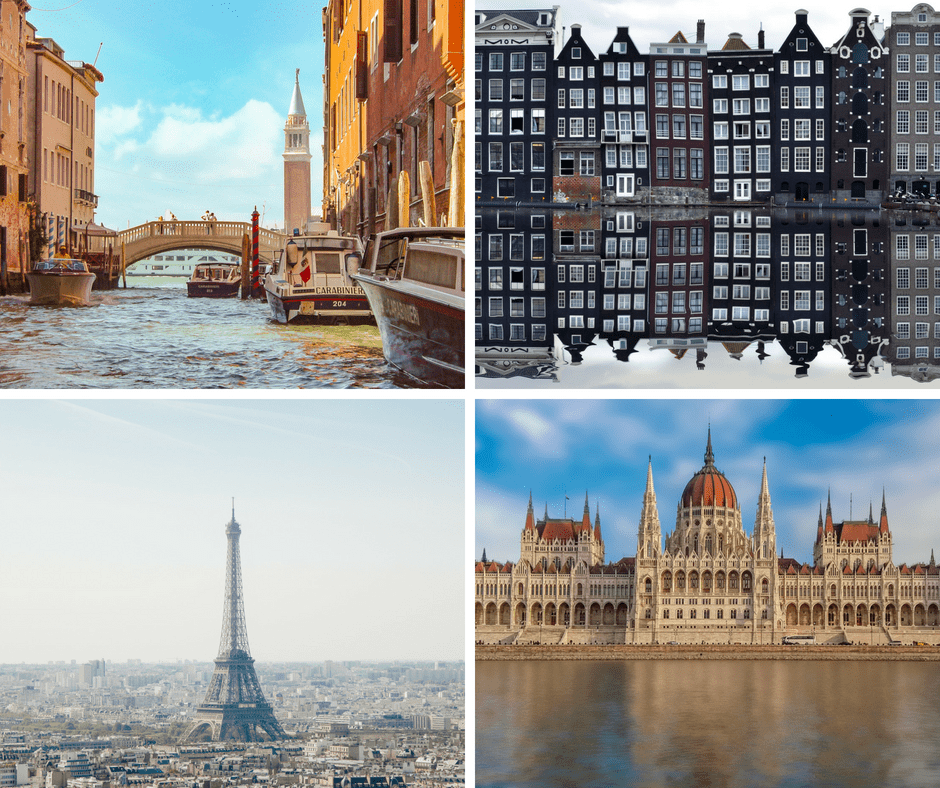
10 Day Europe Itinerary For First Time Backpackers
Adventure Travel , Europe , Travel Inspiration & Tips | August 15, 2018
This post contains affiliate links, which means I may make a small commission if you buy anything mentioned here. It doesn't cost you anything extra.
Visit seven countries and ten destinations in ten days with this Europe backpacking itinerary.
Backpacking in Europe should be a rite of passage for young, wanderlust-stricken souls, if you ask me. The continent has so much to reveal to travellers: from the terracotta rooftops of Dubrovnik to the colourful bays of Malta ; Austria’ s rugged peaks and Spain’ s soft shores.
Europe’s vast and varied landscape is matched by its smorgasbord of cuisines, local tongues and cultures. If you have ten days to travel around Europe, you’ll want to see the best cities and tourist attractions (and bars, obviously), so you’ll need a Europe trip itinerary that packs a lot in to a short space of time.
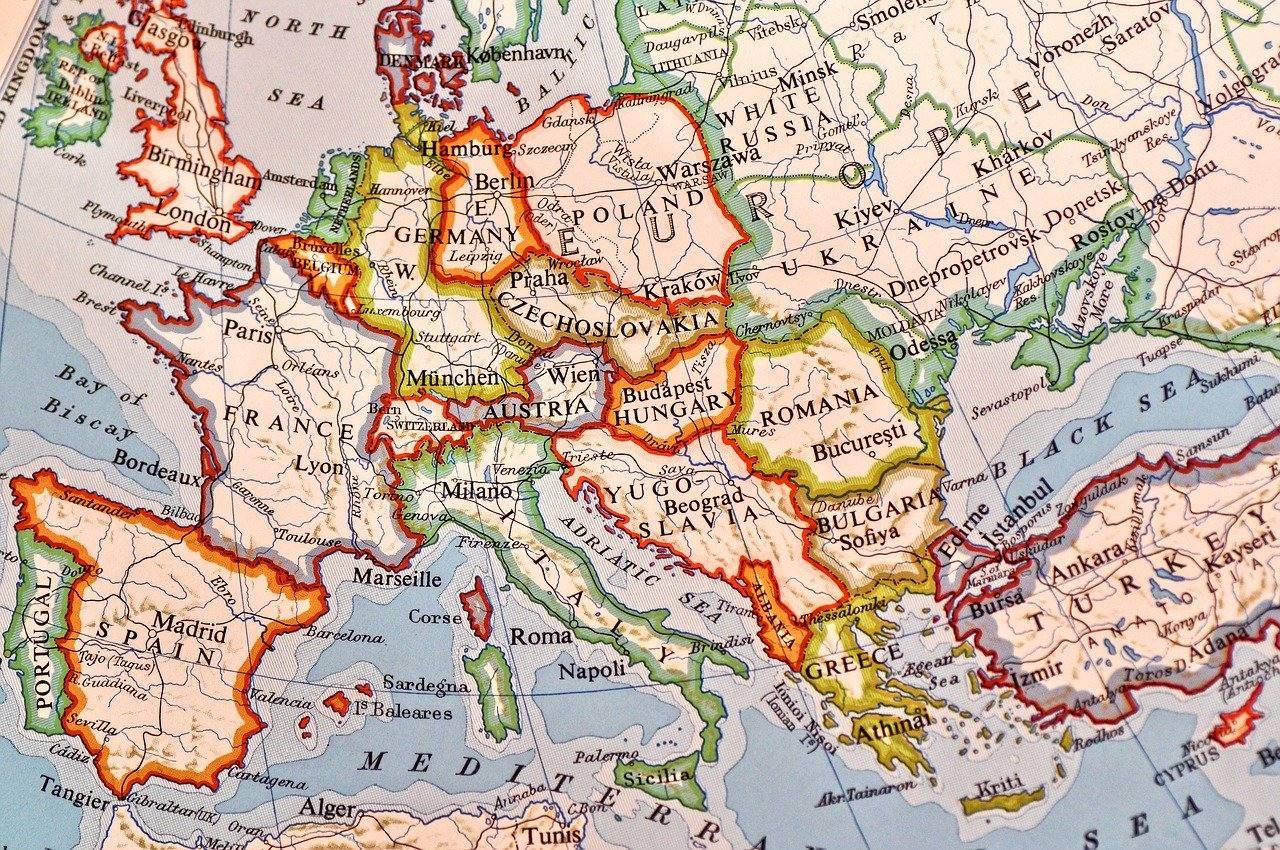
This jam-packed Europe backpacking itinerary will take you to the top of Paris’ teetering Eiffel Tower, along Switzerland’s Rhine, and inside Rome’s iconic Colosseum.
It will show you Venice from its romantic waterways, and have you wandering grand palaces in Vienna, then partying in Budapest. It will also let you taste real Belgian chocolate-topped waffles and see Amsterdam’s Red Light District for yourself – all in less than a fortnight.
You can plan and book your entire ten day Europe adventure with an Interrail pass . If you’re from outside of Europe, you’ll want to go with Eurail . Of course, it’s always worth comparing flight prices on Skyscanner before you book a train – sometimes you can fly for just as cheap (and it’s always an infinitely shorter journey).
A suggested 10 day Europe itinerary: 7 countries, 10 destinations
I’ve included some of the best destinations to see on your first backpacking tour of Europe (no offence to those I couldn’t fit in) and, where possible, found overnight journey options to help you save money on accommodation. It’s one of the simplest and best budget backpacking hacks in the book, and one I’ve used many times while travelling to over 40 countries.
Is this the ten day Europe tour for you?
Day 1: london to paris.

If you’re starting your Europe trip in the UK, it’s usually cheapest and easiest to kick off in London . Take a crack of dawn train to Paris , which takes just over two hours.
When you arrive in the French capital, make a beeline for the Eiffel Tower (you should check the cheapest tickets and tours before you go), cruise along the Seine and try to see other famous Paris attractions.
Because you only have one day to see as much of Paris as possible, it’s a good idea to buy a hop-on-hop-off bus ticket , to whip around the main tourist attractions without wasting time.
Paris tours and activities
Day 2: basel & bern.

Depart Paris late in the evening to catch an overnight bus or train to Basel , Switzerland. You can sleep on the bus, which will save you a night’s accommodation fee, and arrive in beautiful Basel refreshed and ready to explore.
If you’re in need of a proper wake-up, have a dip in the Rhine with the locals before you visit the tiny city’s many museums.
Get inspired: My Basel travel guide
Around lunchtime, take a bus or train from Basel to Bern , the capital of Switzerland. It’s an expensive city so you won’t want to hang around for too long there, but a few hours should be enough time to saunter around the old town and see the Swiss Federal Assembly, one of the world’s oldest democracies.
If you’d like to make sure you see the main sights, you can book an express tour of Bern .
Swiss sightseeing done, catch a late-night flight to Rome and get some sleep in a hostel there. You’ve got a lot of walking to do tomorrow!
Basel and Bern tours and activities
Day 3: rome.
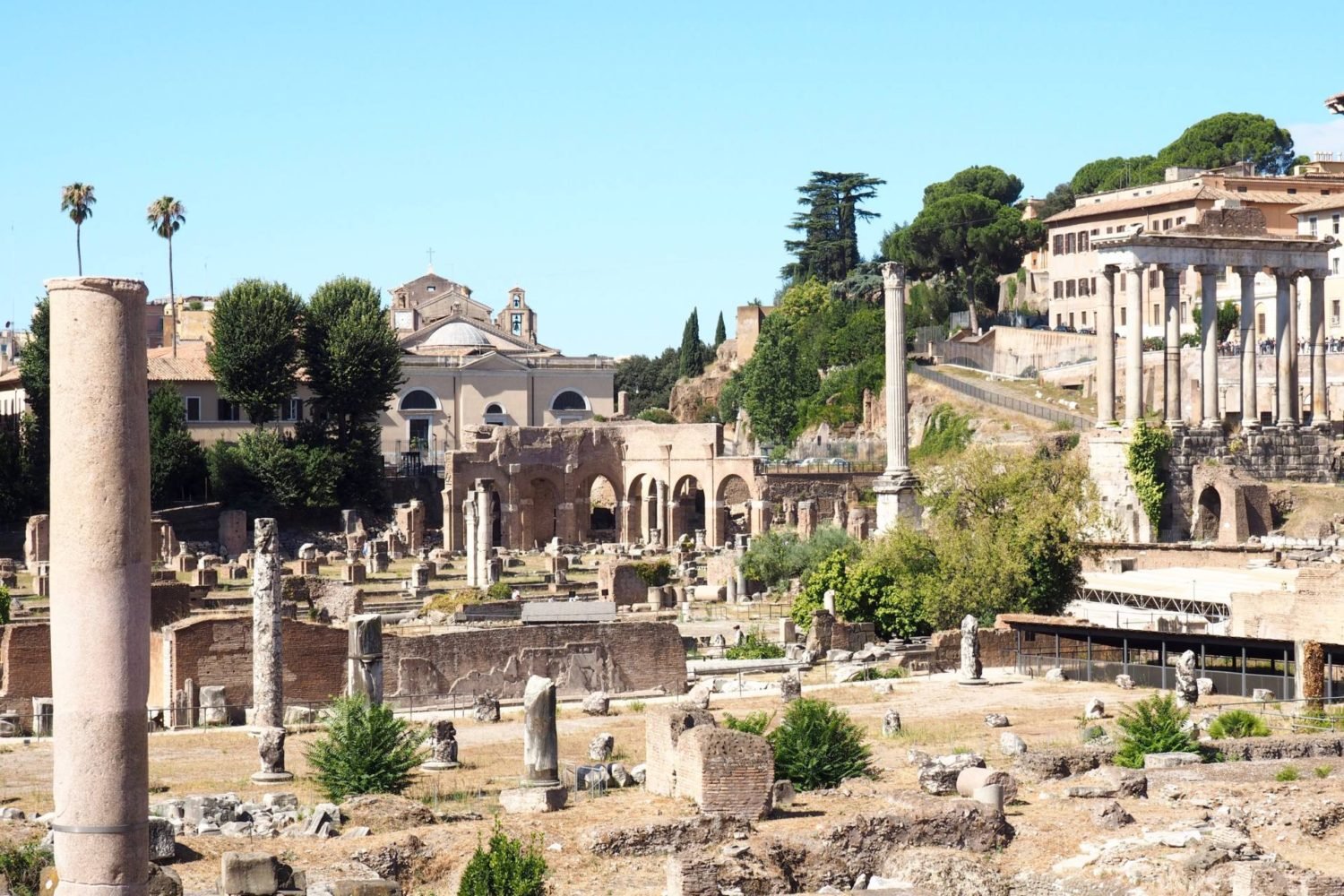
Day three of your whirlwind ten day tour of Europe should be dedicated solely to exploring Rome. Walk its cobbled streets and crane your neck to see the city’s beautiful facades, visit the Colosseum, and gorge on gelato, pizza and pasta at every stop.
If you have time, tick another country off your travel bucket list: The Vatican . The best way to squeeze this in is to book a skip-the-queue tour .
Get inspired: My two day itinerary for Rome
Grab a drink in Trastevere and then, in the late evening, you can then make the journey to Italy’s jewel: Venice .
It’s quickest to fly but if you’re on a tight budget, take an overnight bus, which takes around seven hours. Use those seven hours to sleep. Another night’s hostel fee saved!
Rome tours and activities
Day 4: venice.

When you arrive in Venice, grab a bite to eat and then do the tourist thing: jump in a gondola and watch the world pass by, being sure to stop at Doge’s Palace and St Mark’s Basilica.
You could also do a boat trip to colourful Murano, Torcello & Burano Islands , which takes around half a day.
As the sun sets on your day in Venice, catch another overnight bus or train, this time to Austria’s capital city.
Venice tours and activities
Day 5: vienna.

Vienna is a beautiful city, and while you’ll never see all of its highlights in a day, you shouldn’t miss the incredibly regal Schönbrunn Palace , with its endless decadent rooms and pristine gardens.
Eat some apple strudel, go to the opera and climb to the top of St Stephen’s Cathedral for a truly awe-inspiring view over the city. In my opinion, this is one of the most inspiring European cathedrals .
Vienna is another city where you’ll benefit from buying a hop-on-hop-off bus ticket , because the city sprawls.
Get inspired: My two day itinerary for Vienna
Spend the night in a hostel in Vienna – I recommend Wombats .
Vienna tours and activities
Day 6: budapest.

Next morning, take a train or bus from Vienna to Budapest . Stroll along the Danube and go to Fisherman’s Bastion for the best view.
Budapest’s most unmissable attraction is of course, its outdoor baths and Széchenyi Bath is said to be the best.
If you plan ahead, your night in Budapest might coincide with one of their crazy ‘sparties’ in Szechenyi Spa & Baths. If not, book a late night dinner cruise and then hit the famous ruin bars like Szimpla Kert. Alternatively, meet fellow backpackers on a pub crawl .
Get inspired: My guide to a short break in Budapest
Budapest tours and activities
Day 7: brussels.

On day seven of your trip, spend the morning in Budapest and then jump on a cheap flight from there to Brussels . See the impressive Grand Palace and its neighbours, the six guild halls, then munch on some proper Belgian fries, served with mayo.
No backpacker can visit Belgium without sampling one of its other famous products: beer. Spend your night in Belgium’s capital sipping the amber nectar, and book a beer tasting if you’d like to learn about it as you sup. Not interested? A four hour pub crawl will do the job.
Brussels tours and activities
Day 8: bruges and/or ghent.
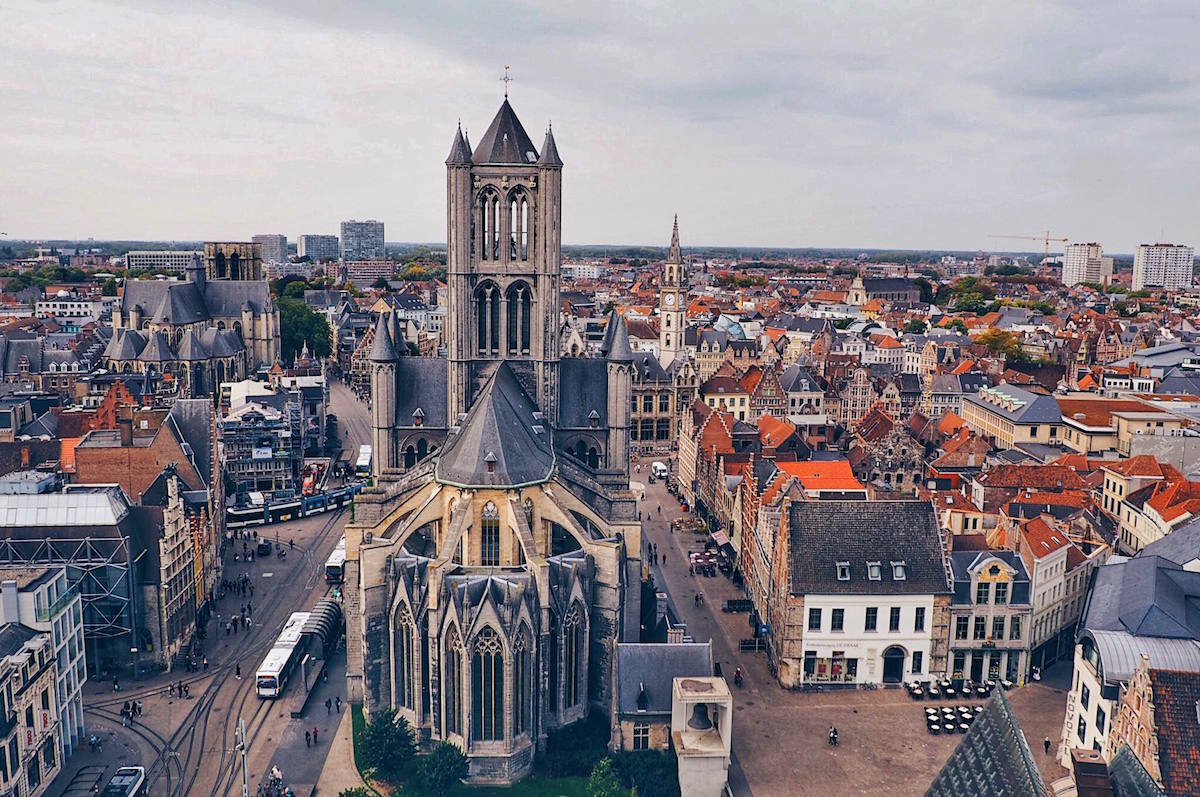
I highly recommend travelling within Belgium while you’re there. It’s one of the countries that I didn’t expect to love as much as I did, and my two favourite spots are Bruges and Ghent . They’re both fairytale places, but Ghent is slightly less touristy than Bruges.
Get inspired: My two day itinerary for Ghent
Ghent and Bruges tours and activities
Day 9: amsterdam.

You can take the bus from either Bruges or Ghent to Amsterdam , the final stop in this Europe itinerary – though it’s a shorter travel time if you go from Ghent.
Spend your last day cruising on Amsterdam’s canals, visiting their famous coffee shops and reflecting on your adventure. Still thirsty? There’s always the Heineken Experience .
By this point, you should be exhausted and have memories to last a lifetime – but the fuel in your belly for another trip soon.
Get inspired: My two day itinerary for Amsterdam
Amsterdam tours and activities
Day 10: back to london.

Day ten brings you back to the UK. I used to think that travel meant leaving ‘home’ behind, but now I know that the UK has so much to offer and there are loads of cool places to visit closer to home. Check out my UK travel section for some inspiration.
If I can offer you one tip for the best UK city to visit, I’d direct you to Edinburgh .
London tours and activities
Plan and book your europe adventure.
Use my Travel Resources page to save money
I see this lightning-speed, whistle-stop Europe trip itinerary as a taster tour, a flirtation with Europe if you will. Use it to sample the delights of some of Europe’s best spots, and make a mental note to go back for second helpings of the places you fall for the hardest.
You’ll never see all of Europe, whether you’ve got ten days or ten years, but I think this is a good way to experience some of its best destinations for backpackers in a small amount of time.
Of course, I’ve missed out too many of Europe’s wonders to list. This Europe tour doesn’t take you to Berlin or Bosnia or Bucharest , but it does introduce you to the European backpacking trail. The important thing to know is that you don’t have to stick to an itinerary when you travel. Use this itinerary as a guide and do it your own way!
I hope you find this ten day European backpacking suggested itinerary useful, and that it helps you plan the most incredible adventure. Remember, the world may always be there but you won’t be young forever. Go now, while you’re fresh-faced and have the stamina to tackle a trip like this!
Europe travel tips
If you’re off on a backpacking stint around Europe, the Lonely Planet Europe guide is bound to come in handy.
It’s also super important that you protect yourself with travel insurance – World Nomads are generally hailed as the best option among travellers.
Get a good rate on your Euros by ordering them in advance of your trip.
It’s also always worth checking out budget options for accommodation for each destination on your itinerary on booking.com. Opt for hotels or hostels who offer free cancellation, in case your plans change.
What are your favourite spots in this itinerary, if you’ve already travelled to them? Any top tips for first time backpackers who only have ten days to see as much of Europe as possible? Share the knowledge in a comment and please share this post with anyone planning their own Europe backpacking tour.
Want more travel inspiration? Follow me on Facebook , Instagram , Twitter and Pinterest .

TeaPartyPrincess says
August 15, 2018 at 10:35 am
OK that’s incredible. Actually incredible. You’ve fit so much in! Cora
August 25, 2018 at 1:49 pm
that´s a pretty cool trip, especially, when you want to see as much cities in less time! Good to hear that Wombats hostel in Vienna is still there and be recommended. I stayed there on my Vienna trip in 2013 or so… damn, such a long time!
The Gallivanting Spoon
A Custom Travel Planning Service

The Ultimate 2-Month Europe Backpacking Trip

This post contains affiliate links. If you use these links to buy something I may earn a commission at no additional cost to you. Thank You and Happy Gallivanting!
Table of Contents
2-Month Europe Backpacking Itinerary & Tips
Europe is one of the most popular travel destinations in the world. It is made up of 44 countries, all connected with a system of trains making it one of the easiest places to travel. Whether you are backpacking through Europe on a budget or no budget at all, you will get to see the same stunning landmarks. We spent two months backpacking through Europe in the Fall of 2021. Planning a trip like this does take some time, but that’s where this guide comes in. This guide will give you tips on backpacking, what cities to visit, what to pack, transportation, and more!
Europe Trip Highlights
- Wandering the Charming Streets of Prague, Czechia
- Scirocco Restaurant Collaboration in Naxos
- Blue Caves Boat Tour in Zakynthos, Greece
- Eating Endless Authentic Cheap Greek Gyros
- Seeing Venice, Italy for the First Time
- Staying at a 5-Star Luxury Hotel in Florence
- Hiking the Amalfi Coast
- Relaxing by the beach in the Surf Town of Ericeira, Portugal
- Touring Barcelona for just One Day
Europe Backpacking Route
Backpacking Tips:
- Time of Year: I recommend visiting Europe in the Spring or Fall to avoid the crowds and cold weather.
- Main Forms of Transportation : Europe offers great transportation services that allows you to travel on a budget. We took advantage of the metro and public transportation services in each city. Planes, buses, and trains are a great way to travel long distances.
- Be Flexible: If you are a Type A Planner like me you will most likely have your entire trip planned out, before leaving. Not everything always goes to plan! If you are visiting Europe for an extended time, I recommend having a rough layout of where you want to visit and for how long. Some places you may love and want to extend your stay!
- Always have Extra Water and Snacks : You never know when hunger might strike, so pack some extra snacks and water. Protein bars are my go to. Many cities throughout Europe have FREE drinking water spouts, bring your reusable water bottle to fill up.
- Accomodation : We stayed in a variety of accomodations. Hostels are very budget friendly and a great place to meet people. Depending on how many people you travel with, Airbnb can be a great option with a full kitchen and extra living space. If you have the extra money, don’t be afraid to splurge on one luxury stay even if it is for just one night!
- International Drivers Liscense: Get your international driver’s license before heading to Europe. Rental shops will ask for it and if you are renting a scooter you may want to look into getting your motorcycle license as well.
- Currency: I highly recommend exchanging USD for a couple hundred Euros with your bank before crossing the pond. Europe is very credit card freindly but it is always a good idea to carry the local currency.
Europe Packing Guide
- Carry On Backpack
- Tripped Travel Gear Day Pack
- Walking Shoes
- Travel Sized Curling Iron/Straightener
- Compressable Packing Cubes
- Noise Cancelling Airpods
- Reusable Water Bottle
- Think! High Protein Bars
- USB Portable Charger
- Outlet Adapter
- Power Converter
Subscribe for my Full Packing List Free Download
Email address:
Paris, France
24-hours, 1 night.
Paris, France is one of my favorite European cities to visit. This charming city takes my breath away each and every time. Paris does a great job of making you feel like you are immersed in their culture with the numerous landmarks, stunning buildings, and delicious French cuisine. Paris was the beginning of our two-month Europe backpacking trip, and I couldn’t have been more excited.
Why only 24-hours?
We were not planning on visiting Paris at all during our two-month Europe trip because we had both spent some time in the city prior. We found cheap flights from New York to Paris that we could not pass up. Our plan was to head straight to Prague when we crossed the pound but there were not many flights to Prague until the next day. We thought we would make the best of our one night in Paris.
How Long to Spend in Paris : 5 Full Days
Must-Try Foods : French Dinner at Brasserie Dubillot , Warm Flakey Croissants, French Macarons, and Duck Confit

Prague, Czech Republic
3 days, 2 nights.
Prague is the capital of the Czech Republic and home to colorful baroque-styled buildings, the Vltava River, and the stunning Charles Bridge. Prague is very traditional with its rich and hearty cuisine. At most restaurants, you will find goulash, Svíčková (braised beef) with dumplings, Grilované klobásy (grilled sausages), and the sweet treat Trdelnik. This was our first time visiting Prague and I quickly fell in love with this romantic city, I cannot wait to return!
How Long to Spend in Prague : 4 Full Days
Must-Try Foods : Trdelnik, Tapas at Fortel , Staropramen Beer, and Svíčková (braised beef with dumplings)

Vienna, Austria
4 days, 3 nights.
Vienna is the capital of Austria and home to some of the most gorgeous buildings. You may also hear the city be called “Wien” this is the local’s way of saying Vienna. Being just south of Germany, the prominent language spoken here is German. Many people will speak English, making it easy to navigate and explore the city. There are numerous things to see in this historic and expensive city. If you are traveling on a budget but still want to get the full Vienna experience then this is the guide for you!
How Long to Spend in Vienna : 2 Full Days
Must-Try Foods : Goulash, Manner Wafers, Sachertorte, Viennese Coffee, Apple Strudel, Wiener Schnitzel

Budapest, Hungary
4 days , 3 nights.
Budapest is separated into two cities by the large winding Danube River. On the east side of the river is Pest which is known for a lively experience for tourists with bustling cafes and modern shops. Buda lies directly opposite of Pest and is home to the Buda Castle and Castle Hills. You may notice things are a little bit quieter and more relaxed here. I highly recommend visiting both sides, as they are just one mile apart with the famous Chain Bridge connecting the two.
How Long to Spend in Budapest : 4 Full Days
Must-Try Foods : Goulash, Drinks at the Ruins Bars, and Töltött káposzta (Stuffed Cabbage)

Zakynthos, Greece
6 days , 5 nights.
Zakynthos is a large northern Greek island known for its stunning Navagio beach and bright blue waters. This is a hidden gem that you may have not heard of but I highly encourage a visit! Zante (what the Greeks call it for short) is an exotic island with a natural landscape of olive trees, beaches, large cliffs, and rolling hills. We stayed in Zakynthos, Greece for one week and absolutely loved our time. If you love adventure as much as us I highly encourage a visit to this stunning Greek island.
How Long to Spend in Zakynthos : 4 Full Days
Must-Try Foods : Greek Salads, Portokalopita (Orange Cake), Lamb, and Olives

Athens, Greece
3 days , 2 nights.
Acropolis means the city at the top, Athens is home to one of the best Acropolis sites that still stands today. Millions of people visit Athens Acropolis each year, making it one of the top attractions in this large city. The Parthenon is the main building atop the Acropolis with over 60 marble columns built at a small angle. The symmetry and attention to detail is an incredible work of art that dates back to 447 BC. The Athens Acropolis is one place you should visit once in your lifetime!
How Long to Spend in Athens : 1 Full Day
Must-Try Foods : Gyros, Mousakka, Greek Dips with Homemade Bread, and Dolma

Naxos, Greece
4 days , 4 nights.
Naxos, Greece is one Greek island you need to add to your bucket list. This stunning island is home to white-sand beaches, the Temple of Apollo, and charming white stone narrow streets. The port city and capital of Naxos is Chora, Chora is a small touristy town where the ferry meets the island dropping off visitors from around the world. Keeping with the traditional Greek cuisine Naxos has some amazing restaurants, including one of my favorites in all of Europe!
How Long to Spend in Naxos : 3 Full Days
Must-Try Foods : Gyros, Saganaki, Orzo (Greek Pasta), and Naxos Cheese

Santorini, Greece
Santorini is one of the most visited and well-known Greek Islands. Its pristine white-painted buildings, blue domes, and cliff views have been posted all over the internet making this one of the top Greek islands to visit. I first thought Santorini was going to be a bit overrated and overly touristy but it ended up being one of my favorite Greek islands!
*Crete is also a stunning island I highly suggest visiting. It is great for solo travel and adventure.
How Long to Spend in Santorini : 4 Full Days
Must-Try Foods : Gyros, Saganaki, Greek Wine, and Spanakopita (spinach pie)

Venice, Italy
Venice is by far my most favorite city in Italy, with its winding canals, charming streets, and gothic palaces. This unique destination is also called “The Floating City” because it is made up of over 100 small islands. San Marco is the most popular island in Venice with historic landmarks, restaurants, and shops. This charming city will surely feel like a dream with delicious Venetian food and romantic gondola rides through the Grand Canal.
How Long to Spend in Venice : 3 Full Days
Must-Try Foods : Cicchetti, Aperol Spritz, Pasta E Fagioli, A full Italian Dining Experience, and Baccalà (local fish)

Florence, Italy
Florence is the capital of Italy’s Tuscany region and home to many museums and art galleries. Fiorenza is the birthplace of the Renaissance, the piano, and the famous frozen Italian dessert, the gelato. The famous red tin roofs and large Duomo have been photographed for years and have become a large tourist attraction with over 16 million visitors each year. This is one charming city that you will fall in love with!
How Long to Spend in Florence : 2 Full Days
Must-Try Foods : Gelato, Famous Italian Sandwiches from All’antico Vinaio, Florentine Steak Dinner, and a 5-Star Dinner at Mimesi Restaurant

Rome, Italy
We spent four days in Rome exploring all of the major landmarks. The Rome Collesuem was a highlight with the wealth of history and large presence it has. Besides eating the best Pasta Carbonaro of my life we also delved into some delicious Neopolitan and Roman food. Visit the charming Ristorante da Barbara for some classic Neopolitan and Roman dishes.
How Long to Spend in Rome : 4 Full Days
Must-Try Foods : Pizza, Pasta Carbonara, Cannolis, and Tiramisu

Positano, Italy
Positano is an Italian village located on the Amalfi Coast of Italy. This colorful city has become one large tourist destination with fancy restaurants and charming hotels overlooking the blue waters of the Tyrrhenian Sea. The city is built on a steep cliffside with winding narrow streets and lots of stairs. Positano is not the cheapest place to visit in Italy but with my top 10 budget-friendly things to do, you can enjoy all that Positano has to offer without breaking the bank.
How Long to Spend in Positano : 3 Full Days
Must-Try Foods : Pizza, Gelato, Anything Lemon, and Italian Charcuterie

Lisbon, Portugal
Lisbon (Lisboa) is Portugal’s capital and one of my favorite cities to visit in Europe. This large city is home to some of the best food with multiple Michelin Star restaurants, authentic pastel de natas, and the famous Time Out Market. Its rolling hills and yellow trams remind me of San Francisco, USA. The colorful tiled buildings and orange-painted city views will take your breath away! Lisbon is a wonderful place to visit with many things to do, famous landmarks, and great food.
How Long to Spend in Lisbon : 5 Full Days
Must-Try Foods : Pastel de Natas, Anything at Time Out Market, Salted Cod, Port Wine, and Ginja

Ericeira, Portugal
10 days , 9 nights.
Ericeira is a small surf town on the west coast of Portugal. This stunning place was added to the World Surf Reserve in 2011 making this a surfer’s paradise. Whether you surf or not you will find plenty to do here. The charming downtown offers fun shops and delicious restaurants. My favorite part was the warm ocean views and watching the waves crash in. Ericeira was a great place to regroup and relax after a lot of travel and sightseeing.
Tip: Book a long stay in a relaxing and low-cost area to take a moment and relax after traveling every 3-4 days!
How Long to Spend in Ericeira : 2-14 Days
Must-Try Foods : Seafood, Smoothie Bowls, and Pastel de Natas

Barcelona, Spain
1 day , 2 night s.
Barcelona is one of my favorite cities in Europe. The ease of living, stunning architecture, sandy beaches, and amazing food won me over after our quick visit. Antoni Gaudí paints this bustling city with architectural works of art. The grandest of them all is the La Sagrada Familia, it will take your breath away. I cannot wait to be back in Barcelona to explore more of this wonderful city!
How Long to Spend in Barcelona : 4 Full Days
Must-Try Foods : Croquetas, Seafood Paella, Patatas Bravas, and Jamon Iberico

Valencia, Spain
Valencia is Spain’s third-largest city. It is one of the country’s most beautiful places with charming warm colors, unique buildings, and large food markets. It is home to the first Paella, an authentic rice dish. The most famous attraction is the City of Arts and Sciences. Valencia is not a very popular city to visit but it will welcome you with delicious comfort food and fun activities.
How Long to Spend in Valencia : 3 Full Days
Must-Try Foods : Paella, Healthy Lunch at Salad Planet, and Fideuà Paella’s (seafood-and-noodles)

Madrid, Spain
3 days , 3 nights.
Madrid is the capital of Spain and is filled with a variety of things to do. It is home to the Royal Palace of Madrid which is the largest functioning palace in Europe. Madrid reminds me of a European New York City with a multitude of food types, large parks, and famous boulevards. The welcoming people, delicious foods, and easy transportation make this one of the top places to visit in Spain.
How Long to Spend in Madrid 3 Full Days
Must-Try Foods : Spanish Hot Chocolate with Churros, Sushi at Sakale, and Huevos Estrellados (fried eggs and potatoes)

Recommended Articles
Top 10 tips to visiting athens acropolis.

Diana Palace Hotel – The Perfect Place to Stay in Zakynthos, Greece

Davanza’s Pizza – A Top Spot for Lunch in Park City, Utah?


Backpacking Europe: A Beginners Step-by-Step Guide (2023)
Some links in this post contain affiliate links. I receive a small commission if you use the links at no extra cost to you! Happy reading 😀
A detailed guide to planning and booking a trip around Europe, whether you’re travelling solo, in a couple or with a friend!
Europe is a continent that you could travel to hundreds of times, yet still, find something new to discover. Diverse and culturally rich, Europe is just the gift that keeps on givin’.
Backpacking Europe is for anyone and everyone .
As someone who has visited Europe more times than I can count, I can guide you through the necessary steps to make your dream backpacking trip become a reality.
Planning a successful backpacking Europe trip will take a bit of time, dedication, and research, but it will all be totally worth it!
But first and foremost, I’ll let you in on a secret. If you’re backpacking Europe for the first time, the best way is get around is by interrailing. I speak about this more in my post later, but you can view some of my other posts below. Bookmark them for later!
🚝 Want to buy an interrailing pass for travelling Europe? I recommend checking this website for the best discounts and deals!
- Interrailing Spain: Travel Spain By Train
- Best Hostel In Copenhagen: Steel House Review
- Interrailing Routes 3 Weeks: FOUR Routes You’ll Love!
- Interrailing Italy: Ultimate Guide and Route
- 21 Interrail Tips for First-Timers: Interrailing Europe
- What To Pack Interrailing Europe: Packing List Essentials
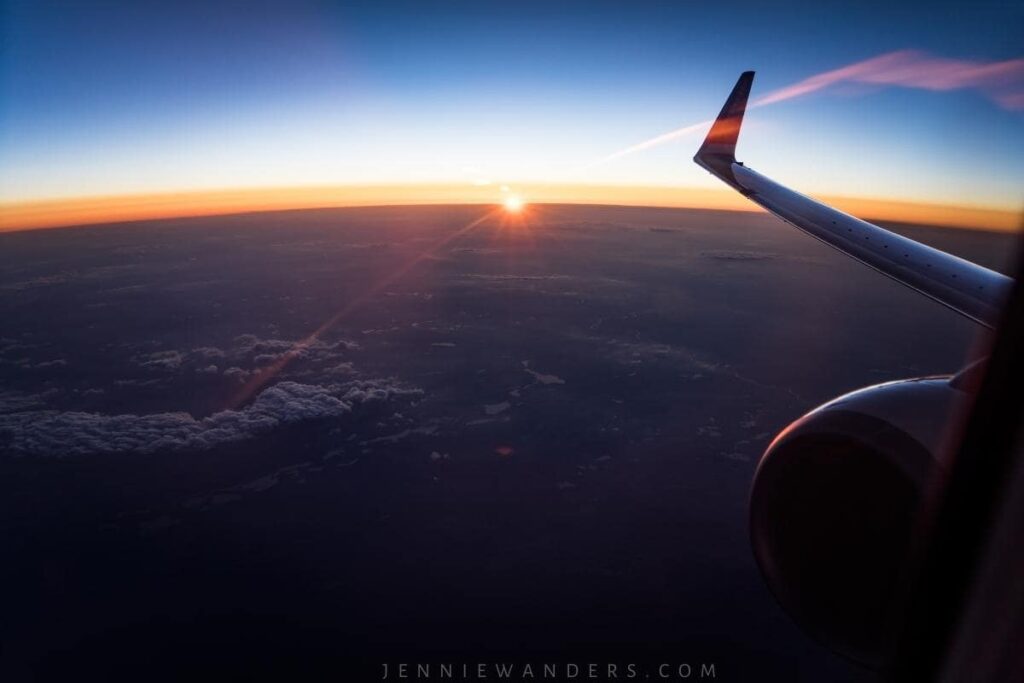
Want to see epic photos and videos from these experiences?
Follow me on Instagram! As we travel, I post everything live on Instagram, so check out my recent highlights and posts. If you can’t find what you’re looking for, drop me a DM!
Backpacking Europe : A Step-By-Step Guide
Planning a successful europe trip.
Europe lies solely in the Northern Hemisphere and is the world’s sixth-biggest continent . It crazily only contains 7% of the world’s land. Hard to believe when you think of all of the diverse countries it includes!
Whilst backpacking Europe, you have 50 unique countries to choose from.
A trip to Russia , the biggest in the continent situated in the North, is completely different to a visit to the smallest country on Earth; The Vatican City , which is actually located in the centre of Rome, Italy.
Whilst planning a backpacking Europe trip, there are some big factors that need to be considered.
For example, the weather! The weather within the continent can be completely different from one country to the next. For example, the UK has an average temperate of 14°C, whereas Turkey tends to linger in the high 20s more often than not.
Even visually, a country like Turkey is going to be an entirely different trip to a visit to the Scottish Highlands. That’s why knowing how to plan a Europe trip successfully is so important.
This post is a one-stop tour of all the important aspects to consider when backpacking Europe. Whether you’re riding solo, with a partner, friend, kids or Nan ( I mean, I wish I was travelling with my nan), I’ve got you covered.
When using this post to plan your Europe trip, feel free to post any questions in the comment box, or contact me directly on social media! I’m here to help you live out your Europe dreams without the stress 🥰
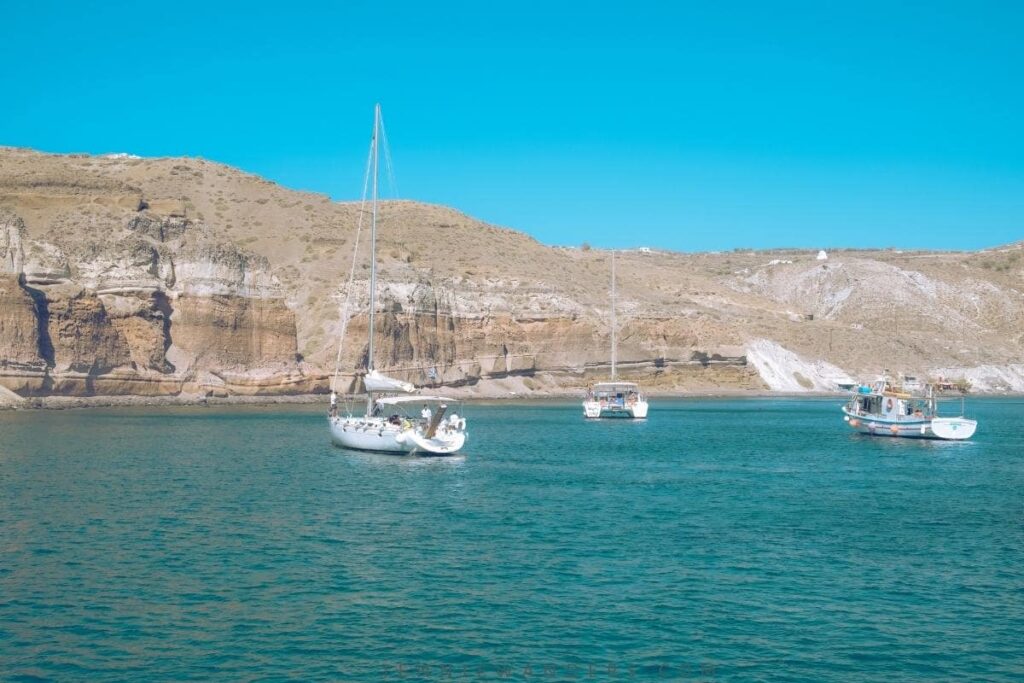
Step 1: Get together the right travel documents!
Let’s start out with some all-important boring stuff. Travel documents and admin for travelling Europe!
How does Brexit affect travelling around Europe?
If you’re backpacking Europe from the UK, it’s pretty simple on the visa front, even with the new Brexit changes.
Even after Brexit, we are able to travel freely around Europe, as long as it is for a short stay (up to 90 days in any 180 day period).
So a weekend in Italy could be followed up by a fortnight’s stay in France. This would all be covered in your 90-day stay limit.
When planning a bigger backpacking trip around Europe, this is something to bear in mind. How long are you going for? Is your visa going to allow this?
If you are looking to stay for a longer amount of time, you will need to apply for an extended visa. This includes staying for tourism, work, or study.
This may change in the future. Please always check the latest Government advice.
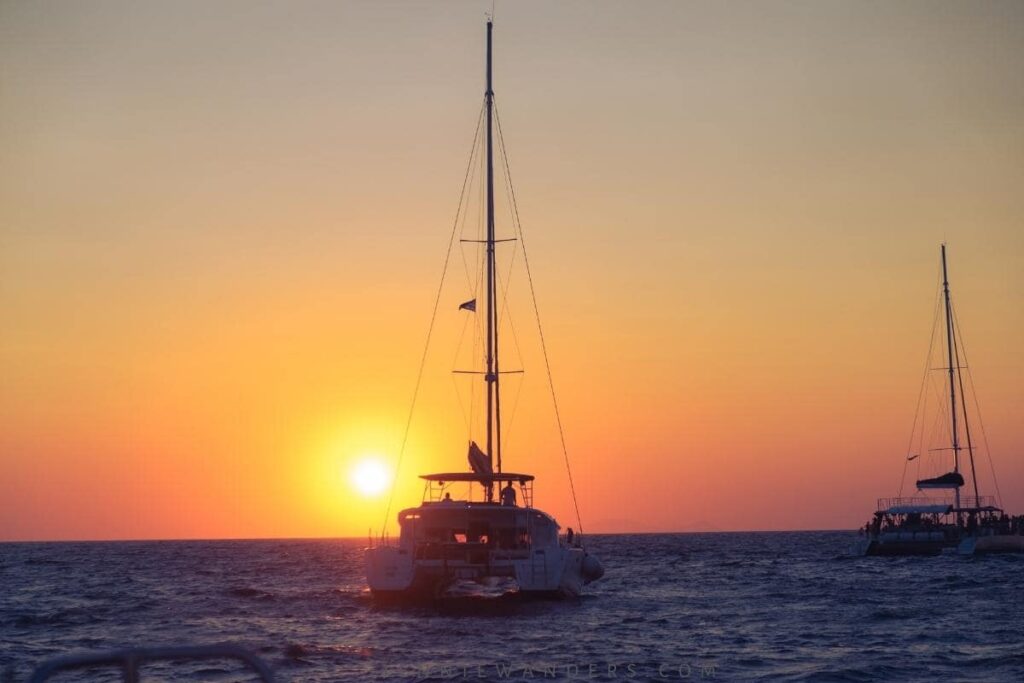
Is my European Health Insurance card (EHIC) still valid?
Yes. If your EHIC was issued before the end of 2020, your card is valid until the expiry date on the front of your card.
After this, the government has said they will issue a different type of card for emergency medical care. There is no confirmation of this and no details have been released.
It is advised that you buy medical insurance before travelling (anywhere), especially if you have a pre-existing health condition.
Want to start your digital nomad life?
Check out my ebook page (click here!) to see if there’s a guide that suits you. I’m here to help you leave the 9-5 and work remotely around the world! 💻 🌎
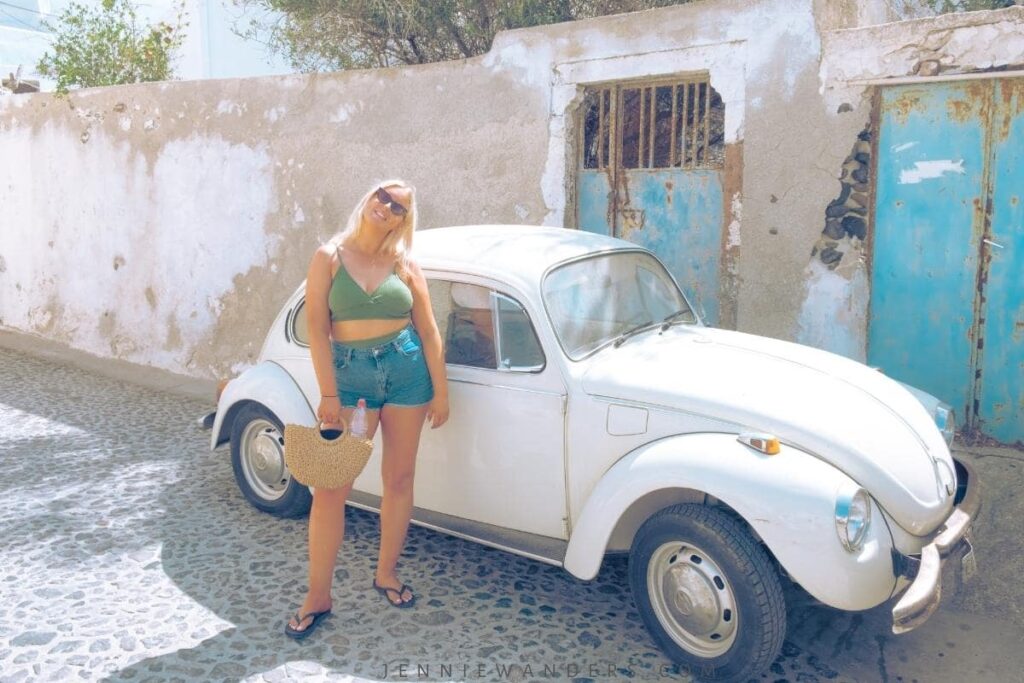
Is my UK driving license accepted across Europe?
Remember to take your driving licence with you, as well as your logbook (V5C) and valid insurance documents if you are taking a car that you own. You don’t want to be caught short!
If you are taking your own car, you will need to contact your insurer around 6 weeks before travel to get a ‘green card’ to prove your insurance is in date and in use.
Anyone over the age of 19 can hire a car in most places throughout Europe. There are a few countries (like the Netherlands, Hungary and Greece) where you will need to be 21+.
Without a doubt, the best way to backpack Europe is by interrailing . This is travelling Europe by train, and this blog is full of information to help you plan an epic interrailing trip!
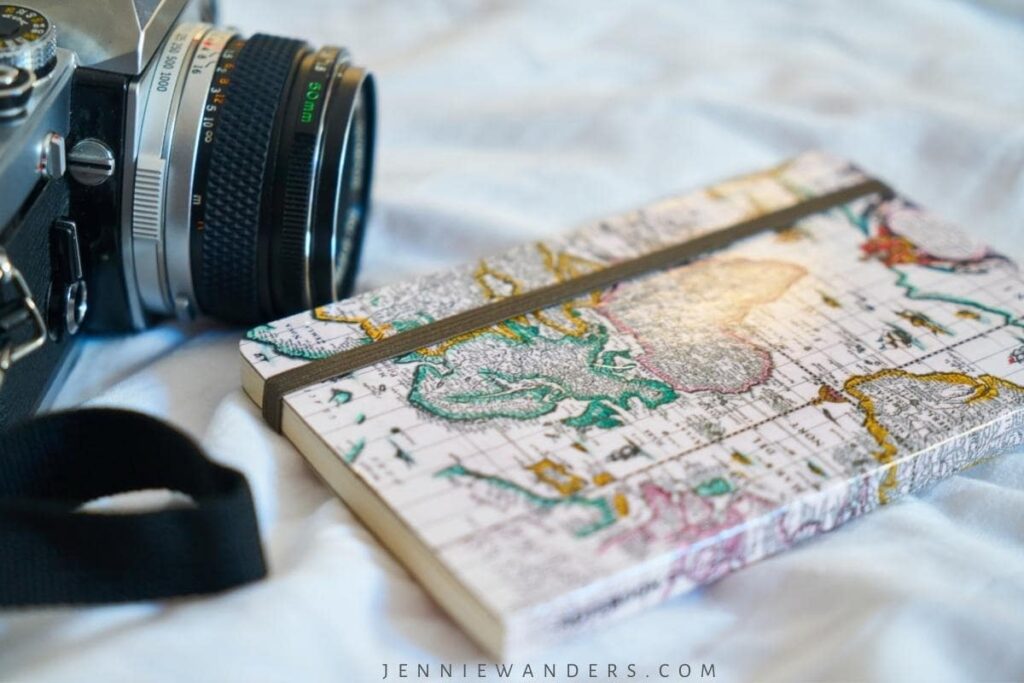
I’m arriving from outside of Europe, what documents do I need?
First of all, the no-brainer of a passport. Make sure it has 6 months left before its expiry date and you’re sorted (if not, get that ticket to freedom renewed).
If you’re from America, Canada or Australia (and most other major countries), you will not need a visa for short stay trips. This is similar to UK travellers; where you’re allowed a trip of up to 90 days.
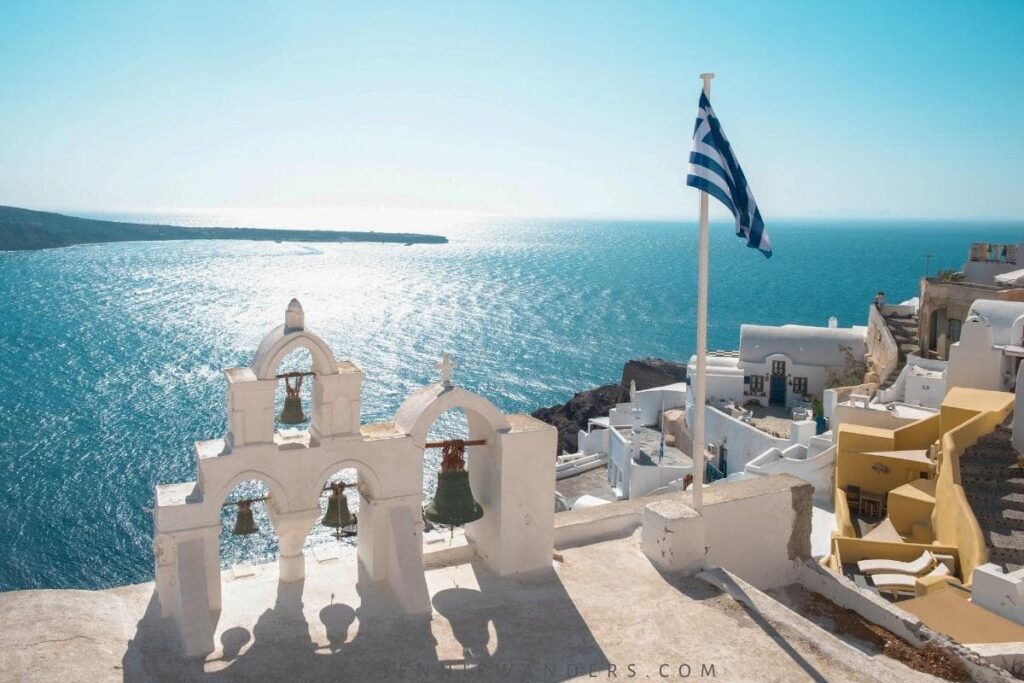
Step 2: Get a rough idea of where you want to go whilst backpacking Europe
Now, when you are ready to plan your backpacking Europe trip, you do not need to make a definitive list of destinations (unless you know a lot about Europe already).
However, it’s good to have some idea of what you want to see and where you want to go on your trip!
Like; are you a beach person and want to hit up the European coastlines? Or would you rather the history and culture of an old city, like London or Paris? You don’t have to decide now, but most people know without a lot of thought what they’re into.
GOOD TO KNOW: Europe is split into Eastern, Northern, Central and Western sections (which is actually quite rarely referred to).
As you know, Europe is a pretty big continent and each country is extremely different from the next.
Therefore, for practical reasons, you might want to focus on one section to keep your journey between each European country shorter.
Check out my interrailing posts if you’re serious about backpacking Europe!
Which part of Europe is best to travel?
- Eastern Europe – Belarus, Bulgaria, the Czech Republic, Hungary, Moldova, Poland, Romania, Slovakia, Ukraine and most of Russia
- Western Europe – Belgium, France, Luxemburg, Ireland, Monaco, the UK, Netherlands
- Central Europe – Austria, Belgium, the Czech Republic, Germany, Hungary, Ireland, Liechtenstein the Netherlands, Poland, Slovakia, Switzerland
- Northern Europe – Denmark, Estonia, Finland, Iceland, Latvia, Lithuania, Norway, Sweden
( FYI – these sections literally change depending on which site you look at. They provide a rough guide if your European geography is a bit pants.)
When I travelled across Europe interrailing , I did cross quite a few sections, so it is possible! Especially if you have an Interrail pass . The trains are super well connected and you can get to most countries in Europe easily (but more on that later).
Don’t worry if you have zero ideas about what’s in each country or why you might want to visit. So many European countries will surprise you with their beauty, especially the least expected ones!
I’d strongly advise researching different countries in Europe (even ones you haven’t heard of!) before planning your route; just to see what else is out there!
I have detailed posts on interrailing Spain , France and Italy . Make sure you read them before you go!
Need more information about interrailing? I have a whole section on the blog about travelling Europe by train. Check out the most popular blog posts here!
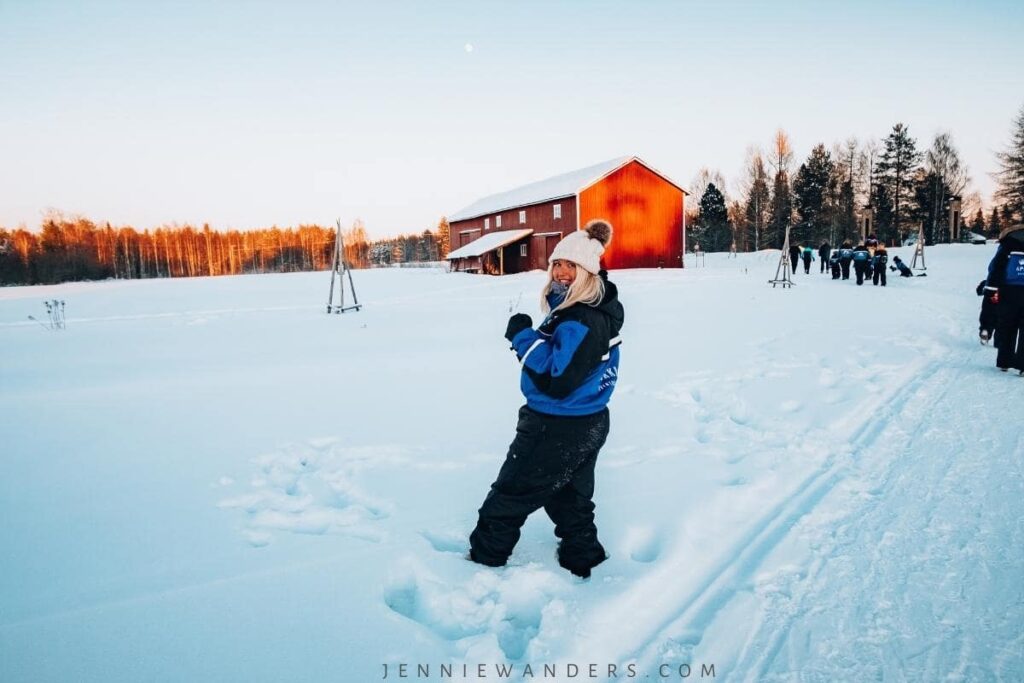
Step 3: Think about your duration:places ratio
Now, I am a big advocate of taking things slow when travelling, especially when backpacking Europe. I made the mistake of planning hundreds (well, nearly) countries into a 2-week trip and ended up burnt out, exhausted, and if I’m honest, a trip that could have been better if I’d not planned as much.
If you cram too many places into a short amount of time, it just won’t be worth it.
My advice to backpackers would be to plan to visit fewer European countries and give yourself more time to explore each one.
This also works in your favour when you meet new people and want to tag along with them to a crazy beer festival or realise you’re in a city with the world’s oldest pizza restaurant and have an extra few days to visit.
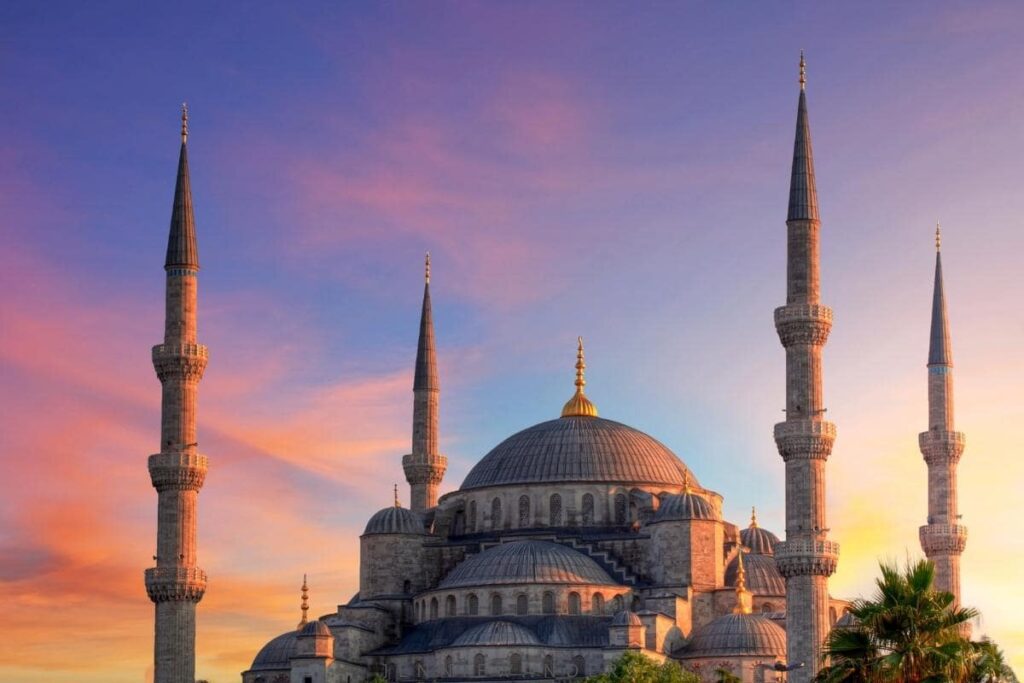
How long should you spend in each European destination?
Here are my recommendations for travelling to European countries and cities.
- Major Cities: 2-3 nights minimum
- Small towns/coasts: 2-4 nights minimum, unless you are likely to spend a lot of time on the beach
- Hiking/Camping: 2 nights +, especially if you are planning on a lot of activity during the day. Having to pack up and be ready to leave the next morning can add extra pressure to your (already) strenuous activity.
Of course, these guidelines are adaptable and personal. If you are on a tough time restriction, just plan less. Plan to go to fewer places in Europe, plan to see or do less, otherwise, you will end up frazzled and end up falling asleep halfway through your strawberry gelato.
I know some of you might be saying “but I want to see everything!” and I get that. If you’re absolutely set on stretching yourself thin and doing a non-stop whirlwind tour of a country in a couple of days; go for it. Maybe plan a few days off work when you return to recover (and be prepared to have to whizz through some of your plans because of how much you have organised).
I have detailed posts on interrailing Spain , Switzerland , France and Italy . Make sure you read them before you go!
Step 4: Decide on HOW you’re backpacking Europe
You’re in luck here; as backpacking Europe is one of the easiest continents to travel around (and comfortably!). There are quite a few options to choose from, from budget to luxury options.
You’ll find whilst backpacking Europe that most countries will have their own transport systems that have basic hygiene and comfort levels. I’ve been on a few rickety trains through Eastern Europe, and even they were nothing like the rickety-ness of Southeast Asia (if you’ve been to Thailand, you’ll know what I mean).
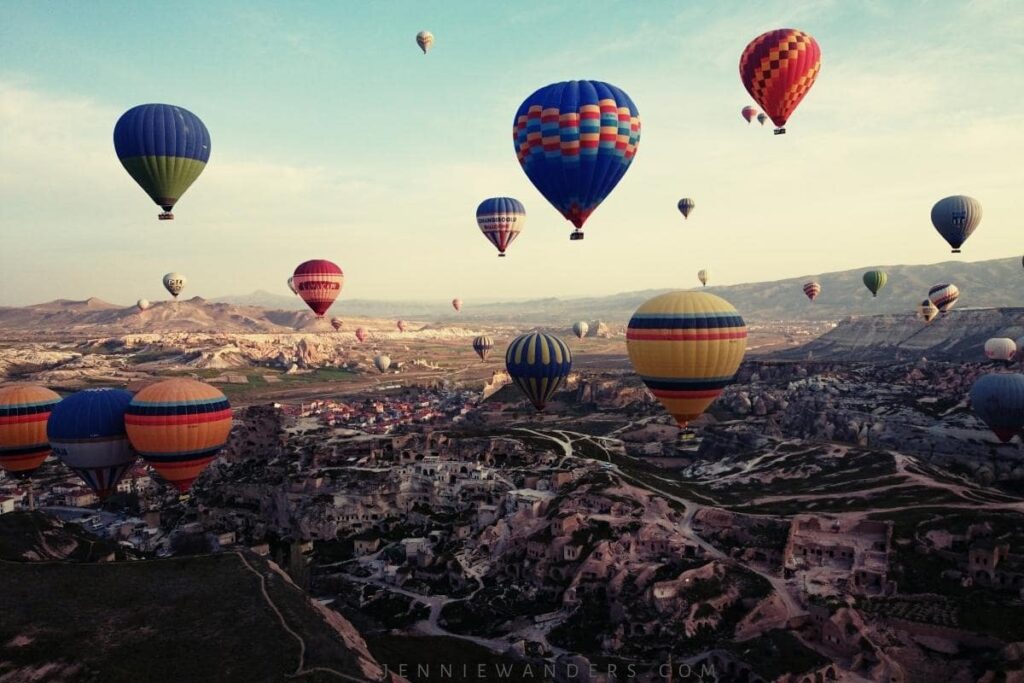
Train (Interrailing Pass) around Europe
One of the most popular ways to get around Europe is via train. This is due to the easy ‘Interrail’ system . Buying this pass will allow you to travel freely around most countries in Europe, on modern and comfortable trains.
There are different types of interrail passes , such as;
- Global Pass (2nd Class) – this allows you to visit the entire continent on one ticket. Prices start around £150 for 4 days, up to the 90 day mark for around £500.
In regards to the class, 2nd isn’t hugely different to 1st and definitely better for those on a budget.
The Global Pass lets you travel in these 33 countries:
Austria, Belgium, Bosnia-Herzegovina, Bulgaria, Croatia, Czech Republic, Denmark, Estonia, Finland, France, Germany, Great Britain, Greece, Hungary, Ireland, Italy, Latvia, Lithuania, Luxembourg, Montenegro, Netherlands, North Macedonia, Norway, Poland, Portugal, Romania, Serbia, Slovakia, Slovenia, Spain, Sweden, Switzerland, Turkey.
- One country pass : If you’re more of a thorough traveller and want to take your time, this one is perfect for a one-country trip. Prices do vary depending on the country you’re wanting to visit, so check out the Interrail Site before purchasing.
🚝 Need to buy your interrailing pass ? I recommend checking this website for the best discounts and deals!
Still unsure about the interrailing pass? I’ve written a detailed post on why it’s so wonderful here.
Bus around Europe
- Megabus : I love this option. I love Megabus! Although I am a bit weird and love long coach journeys (I just love the chill and snacks, okay?!)
Megabus is a super cheap way to travel to some parts of Europe. So if you’re hitting up the UK, Brussels, Paris or Amsterdam, Google Megabus and find some cheap-as-chips bus tickets to travel the entire length of your chosen country. Seriously, some journeys can be as cheap as £3!
If you’re backpacking in England, trains are going to be your last option due to the incredible amount of £££ they cost. A £5 Megabus journey may cost £50+ on a train. Take it from me, I wouldn’t get a train in England unless I really, really needed to!
- Busabout/FlixBus: These are essentially the Megabus, but spread further across Europe. Just check out your destination and what bus service the country uses.
Most of the buses have free Wifi, toilets onboard and are pretty comfy.
Busabout also sells hop on/hop-off tickets for a set price. If you’re planning on taking multiple trips in a short amount of time and want some activities thrown in, it might be worth looking into.
Prices start at around £250 for a 2-week pass.
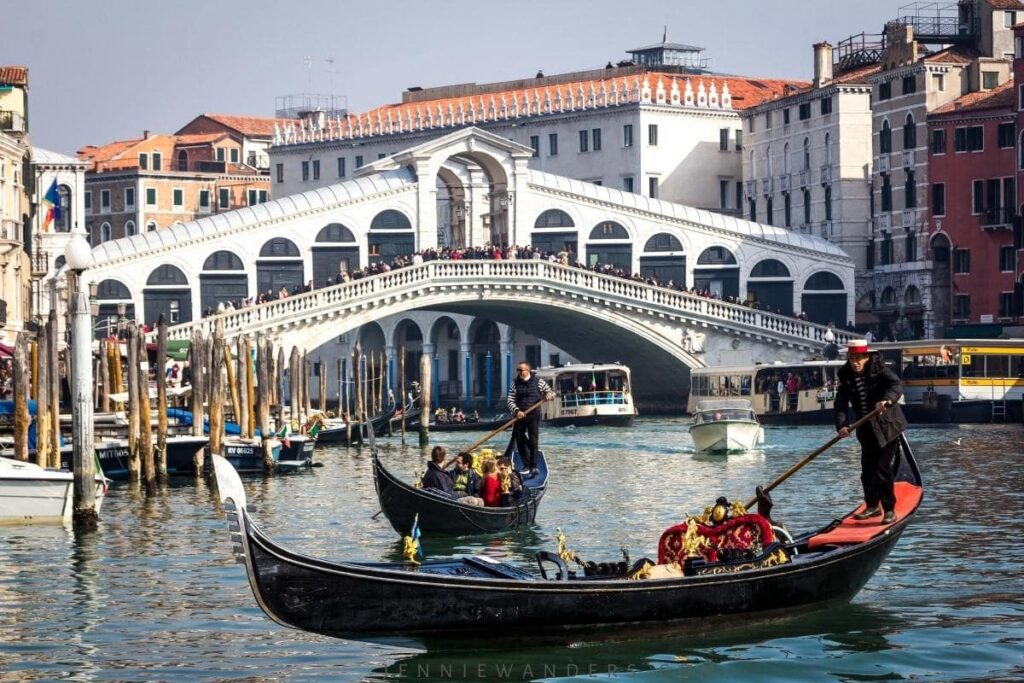
Flying around Europe
Europe definitely isn’t the cheapest continent to fly around, but if you’re lucky and travelling out of school term time, you may get some budget deals.
Have a look at Ryanair , EasyJet , Vueling , Flybe , Norweigan Air and Wizz Air for the cheapest deals (even though they add about 6 grand on for luggage. Sometimes I think they don’t actually work out that cheap *rolls eyes emoji*).
My go-to for booking flights is Google Flights and Momondo . I find they tend to be the cheapest.
Whenever I have travelled through Europe, I have completely mix-matched my modes of transport. I’ve flown, drove, train-ed and bus-ed. It really is all down to where you’re travelling to (for example, if you’re in Ibiza it’s going to be pretty impossible to get on a bus to Italy).
Step 6: What time of year is best to visit Europe?
Europe is situated in the Northern Hemisphere of the world, so the seasons pretty much look like this;
- Winter: December – February
- Spring: March – May
- Summer: June – August
- Autumn: September – November
The temperatures do vary from country to country, but it’s a good guide to have for when you’re planning your trip.
☀️ Spain, Portugal and Greece generally have good weather all year round. Although, they do have times where it can be quite brisk and windy, especially over the winter time.
❄️ If you’re planning on hitting the slopes, January – February tends to be quieter than the peak season in March. For further info, check out On The Snow to compare each country’s weather for the best skiing time.
Wherever you’re going, check out the weather first before you start packing.
You really don’t want to be left in your flip-flops when there’s a monsoon going on overhead. Been there, done that. It isn’t great.
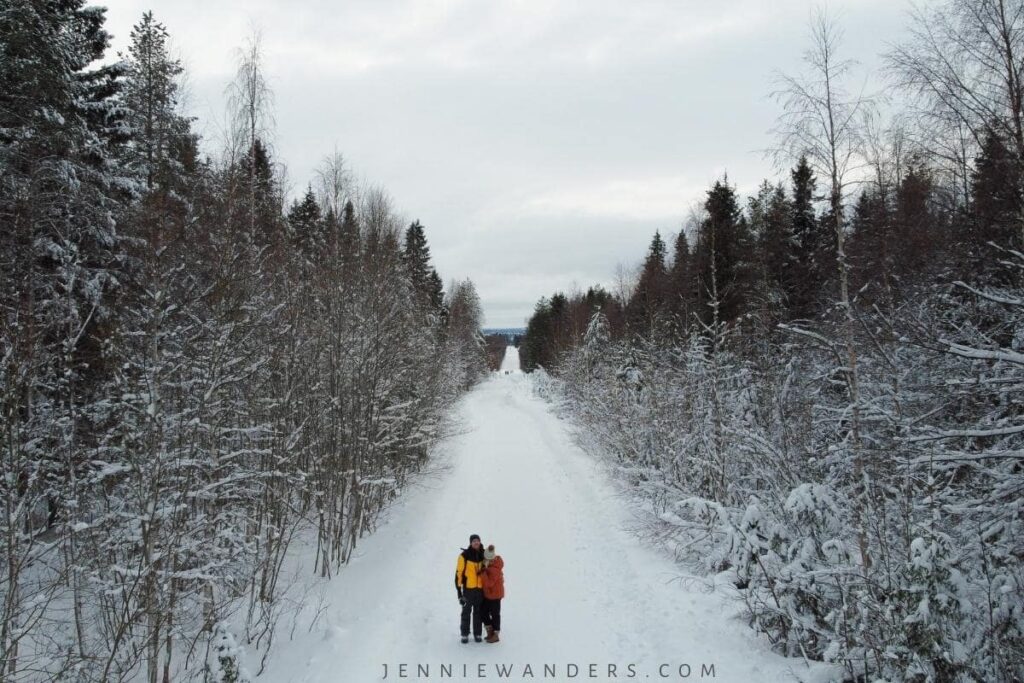
Step 7: What to Pack for a Europe trip
Packing can seem like an unbearable task; especially before you’ve started. I find the best way to get the job done quickly and efficiently is to make a list (or if you’re my boyfriend, pack 5 plain t-shirts and a pair of shorts).
You can check out my detailed interrailing packing list here.
If you’re travelling to a snowy part of Europe (like Finland or Norway) I have an extensive Arctic Circle packing list here!
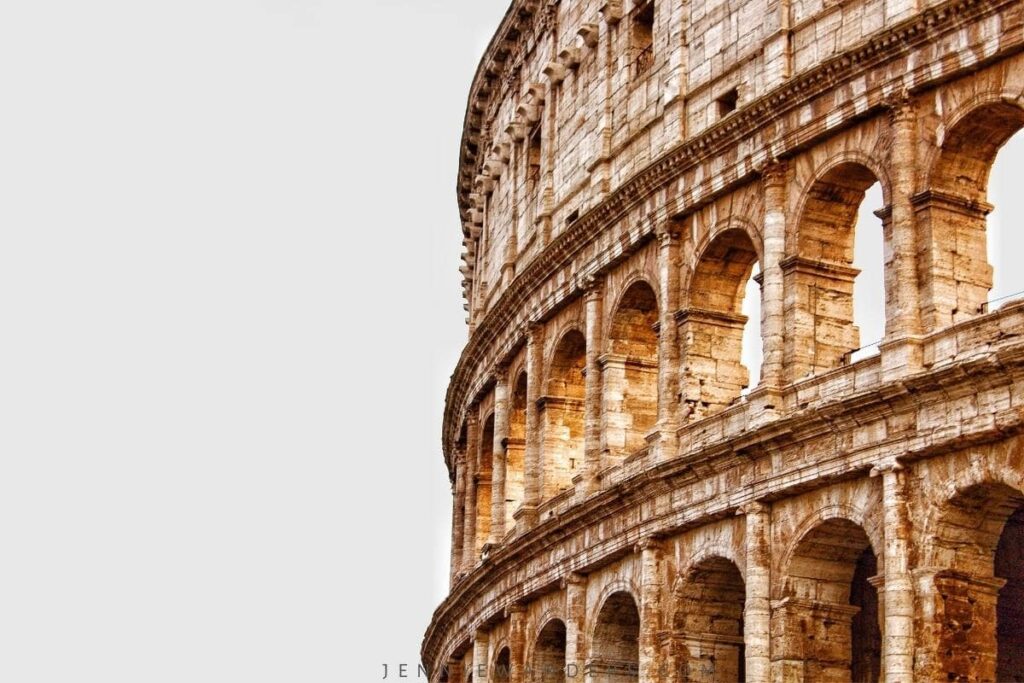
Step 8: Deciding on a budget and saving money whilst travelling Europe
Now we’re down to the nitty-gritty. How much money do you save to take when backpacking Europe?
The answer? It depends. (Sorry). The question you need to ask yourself really is, HOW do you want to travel Europe?
On a tight budget? In luxury? A mix of both? Hostels ? Airbnbs? Signing up for every activity known to man in the entire continent?
I know when I travel, I’m a mix of cheap and “do I really need to go on that 8th wine tour?” type of spender. I hate missing out on anything, so my priority is usually activities over accommodation.
On my travels, I have met so many people who are the same as me. Dorm rooms, shared bathrooms, messy kitchens – no problem if I’m able to scuba dive the Meditteranean.
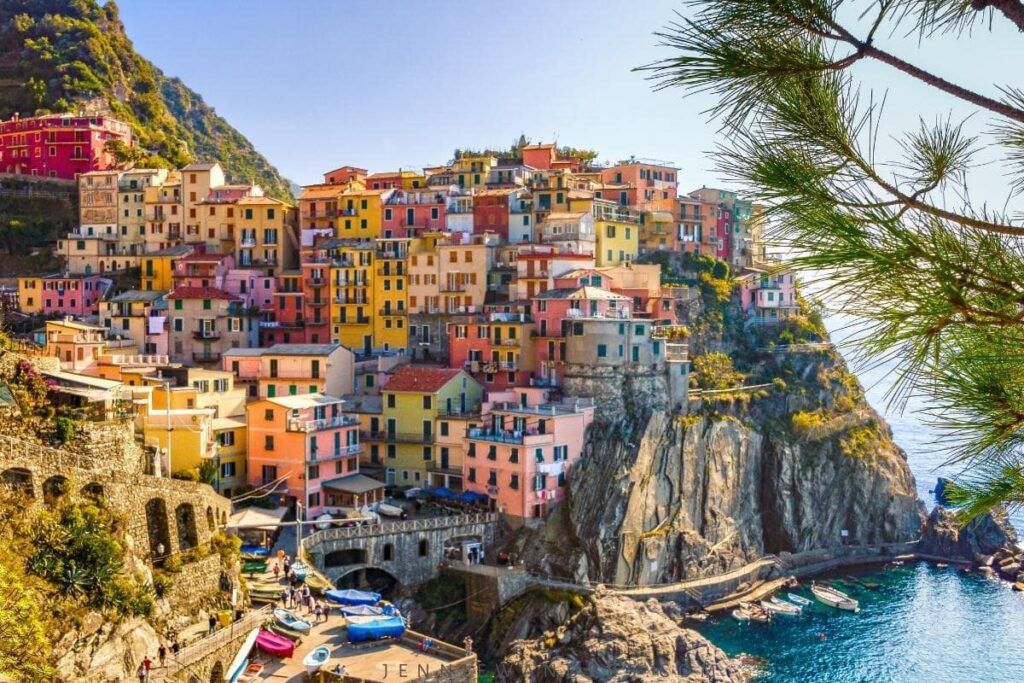
Budgeting for a Europe backpacking trip
The first time I travelled Thailand in 2015, I jetted off for a month in August and spent £1000. Total.
The following year, I spent a month travelling Europe. Total price: £3500.
Exact same time of year, exact same amount of time. Just a whooooole lot more money.
My trip around Europe was anything but luxury. We did have a few private rooms and Airbnbs but they were pretty standard.
But, we didn’t scrimp on the activities. We did everything, every excursion, nice meal out, we partied, drank (alcohol probably was 50% of my budget…maybe) and we really pushed the boat out when it came to enjoying ourselves.
Could we have travelled around Europe for less? Probably. I made some rookie mistakes and it was one of my first backpacking trips, so don’t let it put you off.
But, I do think, especially for newbie travellers, it is important to highlight how expensive travelling can be. Especially if you really want to enjoy every moment and live your trip to its fullest.
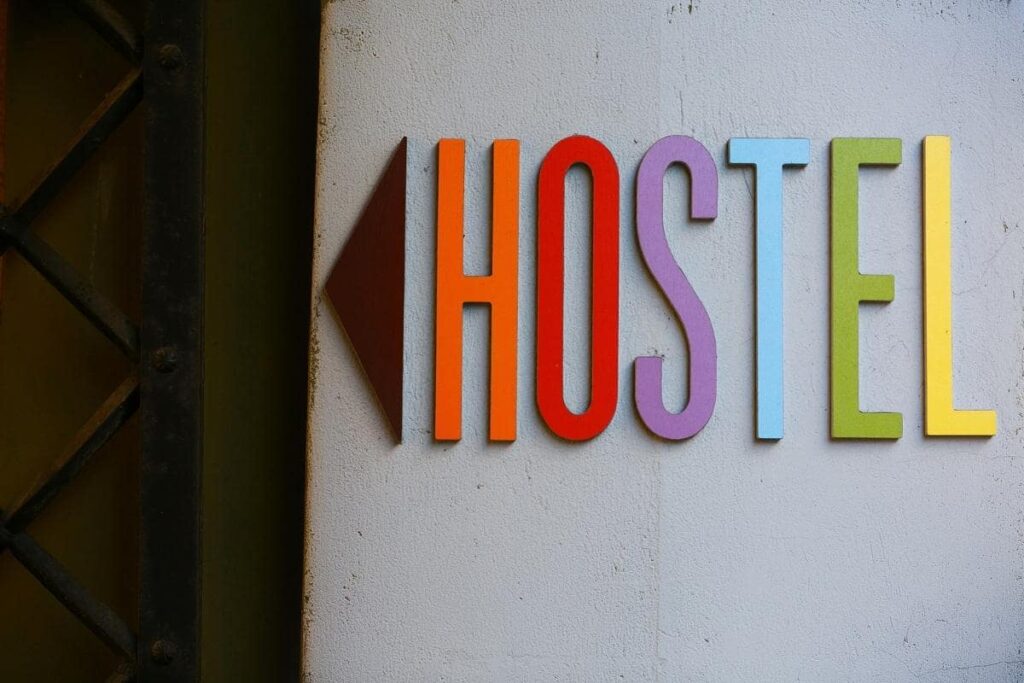
Step 9: Choosing accommodation whilst backpacking Europe
This is the part where I should probably say to get the cheapest room possible and rough it out whilst backpacking Europe, but I won’t tell you to do that.
Instead, I’m going to speak from personal experience here. I have stayed in all types of accommodation (and I really mean, all types).
If you’re starting out, travelling solo or with a friend, I’d strongly recommend a shared room throughout Europe.
Don’t always look for the cheapest – look for the most popular. Highest reviews, shares on social media, tagged photos etc.
If you’re anything like me when travelling (a severe social butterfly), you want to be where everyone is at. Is there anything worse than hostel FOMO?
Do your Europe hostel research. The best kind is speaking to someone else who’s been there before and knows the lowdown on the best spots in town to make hundreds of like-minded pals. (Ahem, shameless plug to myself).
If sharing a room isn’t your thing, I have also been a more ‘private space’ traveller. The first month I backpacked through SE Asia, my best friend and I were huge fans of private rooms (still in a hostel though, not that loaded).
Yes, you do get the privacy and luxury of your own bathroom, but we met about 90% less people and drank about 90% less alcohol because of being so isolated from others.
I’d recommend private rooms if you are a couple, or need a bit of a ‘detox’ from the 20-man dorm room, but shared dorms will always be my go-to for solo travelling.
CHECK OUT THE BEST HOSTELS IN EUROPE HERE!
Best hostels whilst interrailing Europe
One of my best interrail tips is to at least book your first hostel in advance . During the summer months, hostels in Europe will be fully booked. It will be tough finding a good hostel last minute.
Use Hostelworld to pre-book any hostels . They have excellent cancellation policies and you can usually get your money back right up until 24 hours before staying , so if you have any last-minute changes, you have that flexibility.
Whilst I can’t list every single hostel in Europe, these are some of the best, well-known hostels to stay in whilst interrailing. Simply click the link to check prices and availability!
- 🇫🇷 Paris: Generator Paris or The People
- 🇭🇺 Budapest: Maverick City Lodge
- 🇳🇱 Amsterdam: Ecomama
- 🇩🇪 Berlin: The Circus Hostel
- 🇵🇹 Lisbon: Home Lisbon
- 🇦🇹 Vienna: Hostel Ruthensteiner
- 🇪🇸 Madrid: Sungate One
- 🇮🇪 Dublin: Gardiner House
➡ Check out other European hostels here.
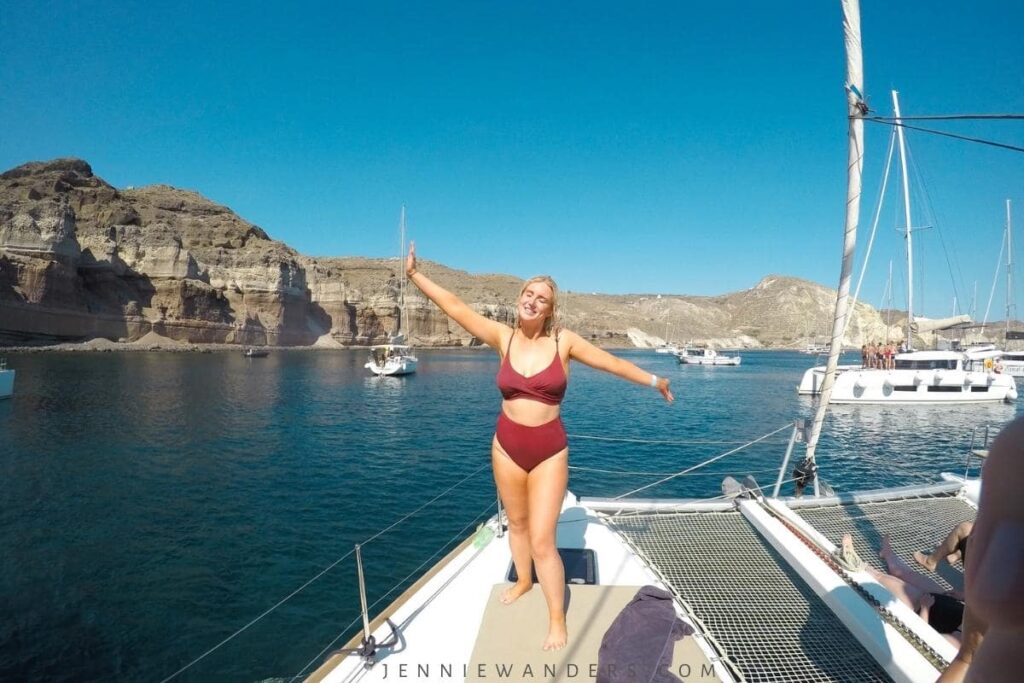
Step 10: Should I buy an Interrailing Pass to travel Europe?
Using an interrailing pass is definitely the easiest way to travel Europe.
Your interrailing pass covers all of your travel, and all of the timetables and routes are online for you to easily access.
The interrailing pass will save you money, as some single trips between destinations can cost between 50 – 100 EUR. If you buy the Interrailing Pass at the start of your trip, you won’t have to spend any more money on travel (unless you wanted to use a ferry or another mode of transport).
Also, if you book individually with local trains, you’re not going to be able to spontaneously change your plans or get any refunds if things go wrong.
If you’re still worried, sit and do the maths and work out whether the pass is right for you or not. Personally, I love the flexibility of the pass and being able to chop and change right up until the last minute.
Still unsure? Check out my Is the Interrail Pass Worth it? An Honest Review and decide for yourself!
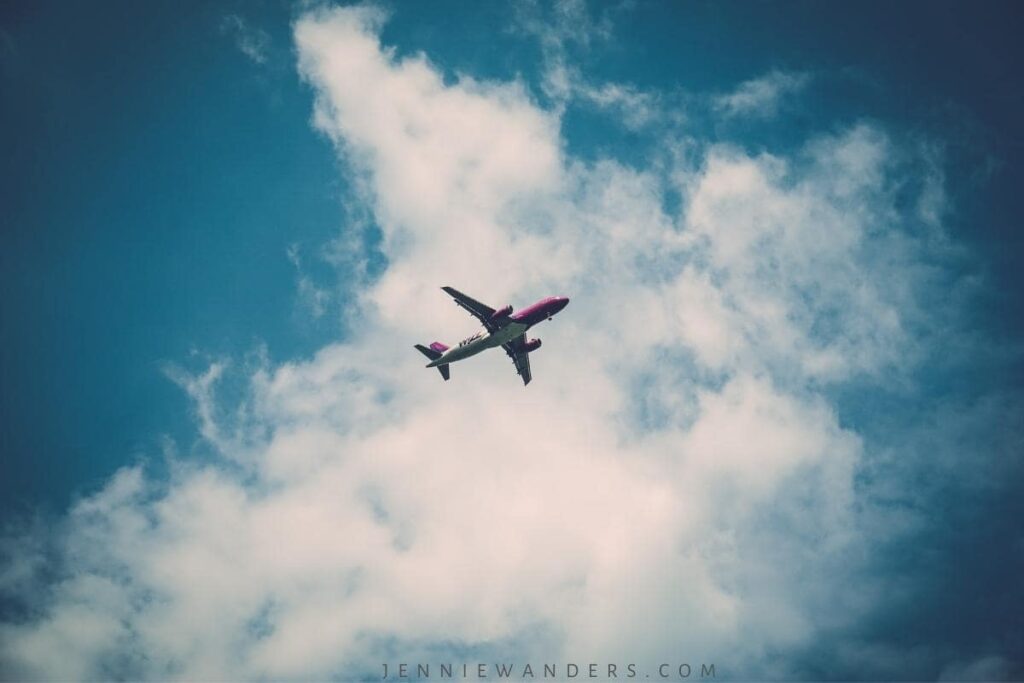
Backpacking Europe: When You Arrive
Yay! If you’ve made it this far in the post, so you must be pretty serious about your trip across Europe. How exciting!
Ok – do this. Close your eyes.
Seriously do it.
Well, maybe read the next bit first and then close your eyes or you won’t actually have a clue what’s going on. (I’m just trying something here).
When you envision your beautiful future in Europe, living out your dreams, what do you picture yourself doing?
- Drinking champagne at the top of the Eiffel Tower?
- Skiing the slopes of the Alps?
- Hiking through the forest in Scandinavia?
- Eating tapas in Barcelona?
- Sunbathing on the beaches of Santorini?
- Watching the sunrise on a boat in Croatia?
Ok, I’ll stop. I’m close to booking another trip to Europe here myself.
Anyway, my point here is – if you’re planning a backpacking trip around Europe, do it the way you want to do it. Drink that champagne, eat that bowl of pasta, hike that forest…you get what I mean.
Don’t miss out on an adventure of a lifetime and regret not doing something for years to come.
Skip buying the dress for your night out in your hometown and save that £50 for a wine tour in Paris. I promise, it’s worth it.
What to see and do in each country really needs research per destination.

Backpacking Europe FAQs
Is it easy to backpack through europe.
Backpacking Europe is easy if you have done the right planning and have enough money to keep you going. Europe isn’t the cheapest of continents, but it is known for its fast transport systems and comfort.
The problem with Europe (or pro, depending on how you’re looking at it) is that it’s so diverse. You can spend weeks backpacking Europe and still feel like you didn’t see half of it. This can be something difficult to wrap your head around, but it just means you’ll need to plan return trips!
Technically speaking, it is easy to backpack Europe due to modern transport systems, clean and modern hostels, clear and direct signposts and easy driving on roads.
Is it expensive to backpack through Europe?
This really depends on how you want to backpack Europe. However, even backpacker hostels will set you back around £20-30 per night (whereas SE Asia can be as low as £4-5 per night).
It is one of the most expensive continents to travel, but with good planning and savvy spending, you can keep costs to a minimum.
Is backpacking Europe safe?
Like travelling anywhere, travelling Europe has its risks and reasons for you to be vigilant. On a whole, backpacking Europe is safe, and even as a solo female, I have never felt ‘unsafe’ anywhere in Europe.
Of course, keep your guard up, don’t walk in quiet places alone at night, and use your common sense when it comes to staying safe. But overall, Europe is a safe place to travel.
How long should you backpack Europe?
This all depends on your budget and what you want to see during your trip.
If you want to see a fair amount of the continent, you’re going to want to plan for at least 4 weeks. When staying in European cities, you’ll want at least 1-2 nights, and locations out in the countryside or in the mountain ranges, you might want extra time to explore a bit more.
Think about what’s important to you, and how well feasible it would be for you to slow travel Europe.
How much should I budget for a month in Europe?
Excluding flights, I would recommend budgeting at least £1500+ for a month travelling Europe.
This includes all accommodations, trips, activities and food. Food alone will set you back a fair bit on your trip, and you don’t want to miss out on bucket list experiences by not having enough money.
Spend some more time saving so you can experience Europe to its fullest.
How do I prepare for backpacking Europe?
- Check your passport is in date, and you have all the relevant travel documents.
- Buy your backpack. My favourite is this Osprey wheeled 65L , because you can roll it when you’re feeling tired!
- Make a packing list. I have a backpacking essential list here!
- Book your flights and look up how you will travel from the airport to your first hostel or hotel.
- Use Pinterest, travel blogs and Instagram to find places you really want to visit.
- Decide on whether or not you want an Interrailing Pass.
- Pack your bag and GO! Don’t think any more about it, just prepare yourself for a European trip of a lifetime.
Backpacking Europe : In a Nutshell
Now, you truly are all set to book that incroyable trip around Europe!
There is a lot of information here and it may be quite overwhelming, so save or share this post to come back to it later.
But GO YOU for getting this far in a 5000-word post. You must really want that dreamy Europe trip.
And guess what? You deserve it!
👀 Do you have something to share about planning a trip around Europe? Want to add something to the post? Comment below!
Happy travelling!
PSSST, I’m a bit of an expert when it comes to interrailing Europe. Check out my posts here:
- Best Backpack For Interrailing: Ultimate Europe Backpack Guide
- Best Time To Go Interrailing (Europe) Guide: MUST-READ!
Interrailing Spain: ULTIMATE Guide to Travelling Spain By Train
📍LIKE THIS POST? PIN IT FOR LATER! 📍
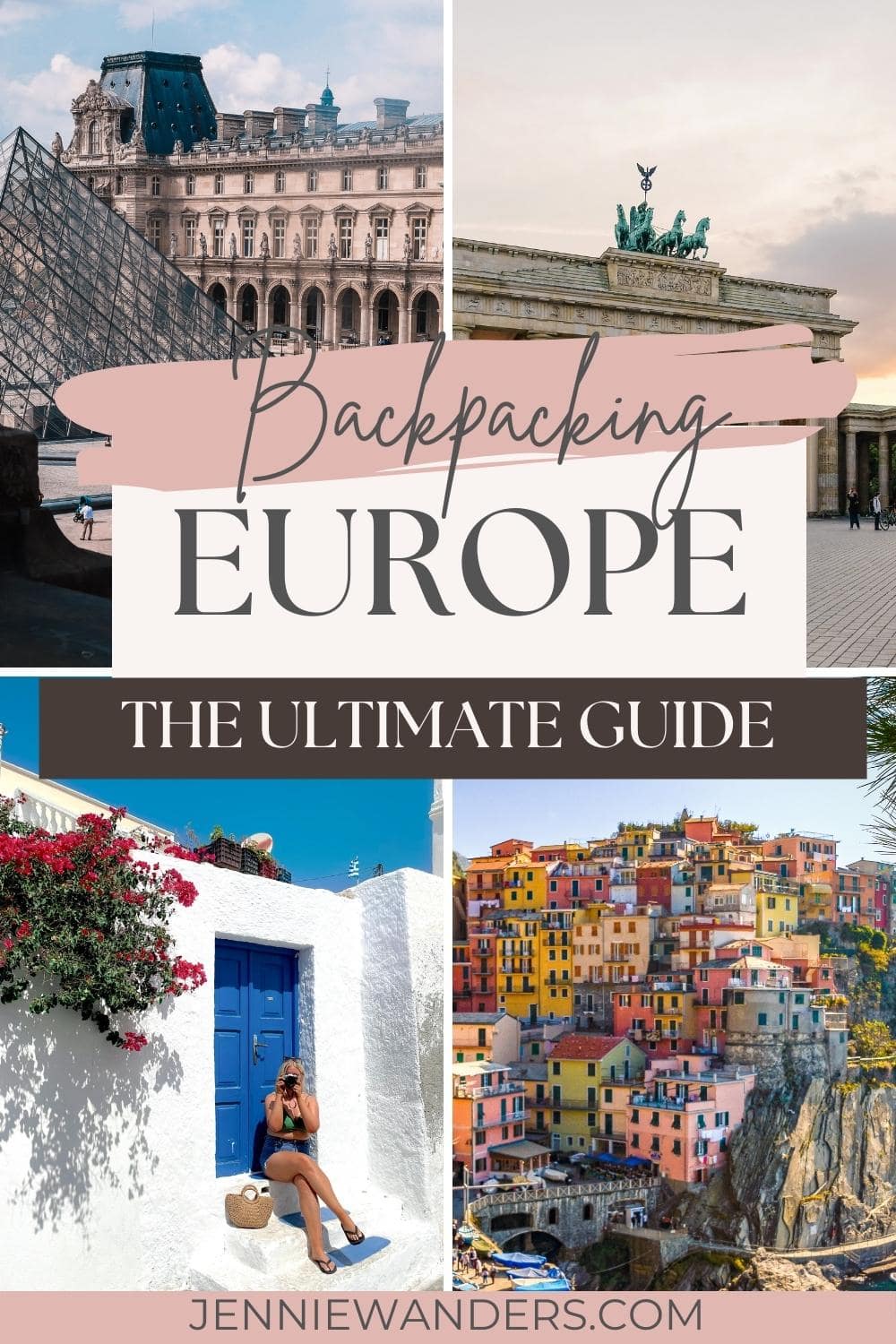
MEET THE AUTHOR!

Hi! I'm Jennie! As a part-time travel blogger based in London, I'm using my 10+ years of travel expertise to encourage & inspire you to step out of your comfort zone through sustainable, mindful and purposeful travel.
If I'm not writing, I'm either reading, drinking coffee or taking a wild swim (all at the same time if I'm feeling impressive).
Similar Posts
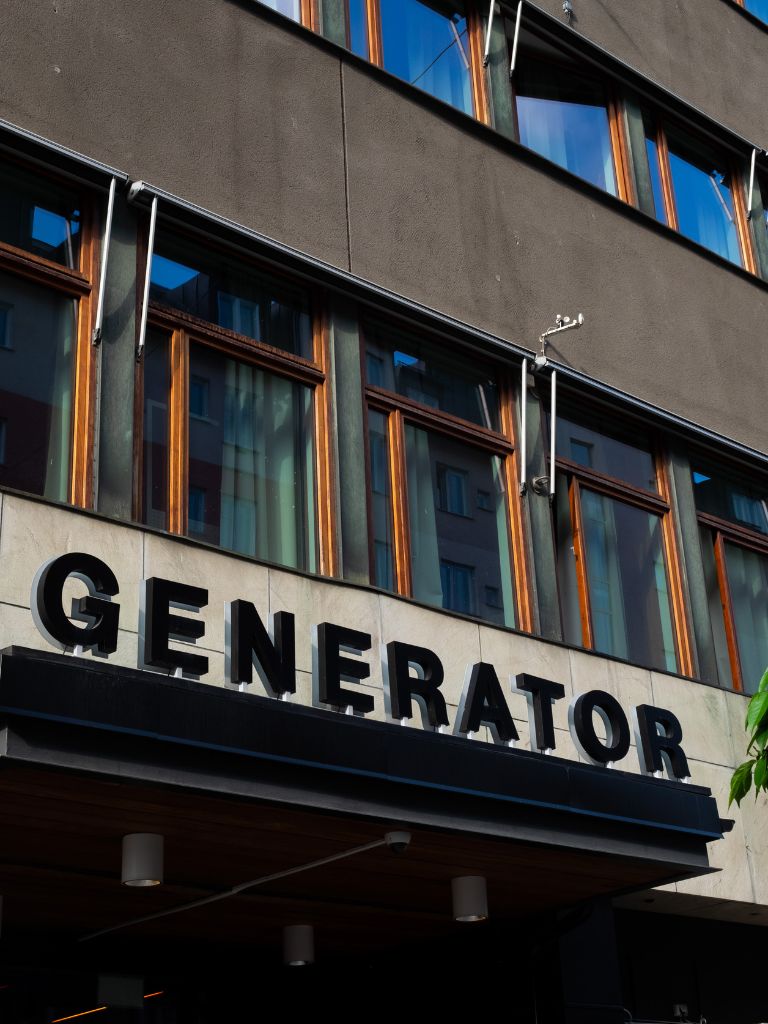
Best Hostel In Stockholm: Generator Hostel Review (2023)
Looking for the best hostel in Stockholm? There are so many hostels to choose from in Stockholm, but our favourite will always be the wonderful Generator! Fun, modern, well-located, social, clean and a short walk from the main train station in Stockholm, it’s undoubtedly in the running for one of the best hostels in Stockholm. Located in the…
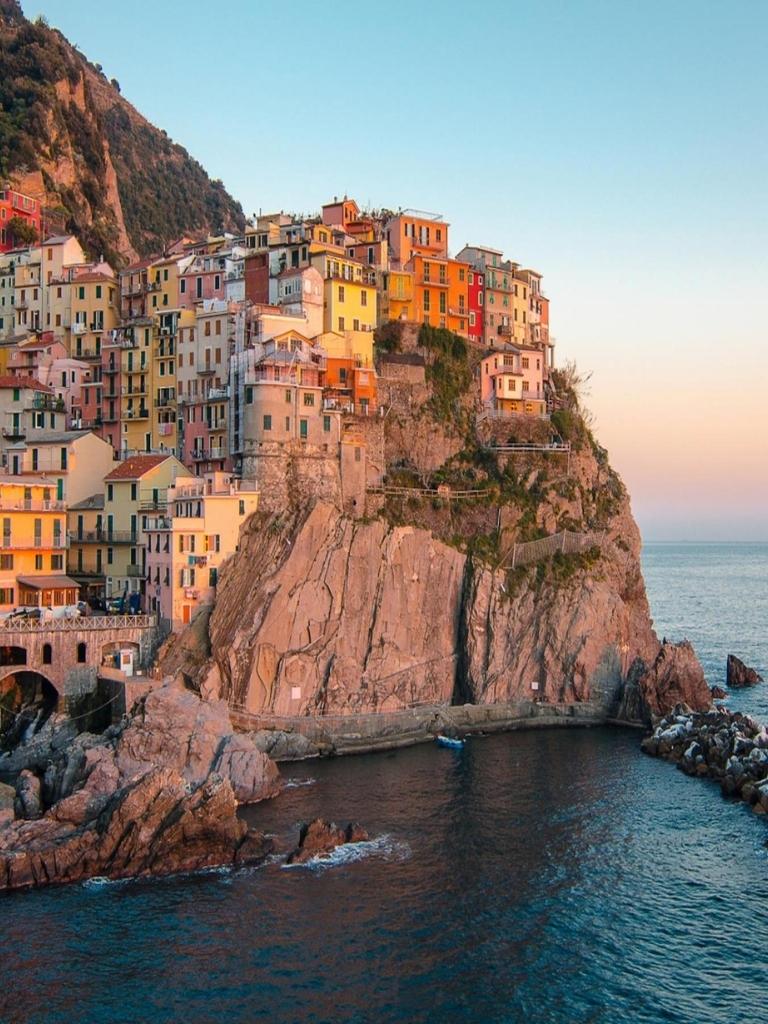
Interrailing Italy: Ultimate Guide and Route (2023)
Looking to travel Italy by train? Yay! Interrailing Italy is one of the best summer European trips, and you’re in for the adventure of a lifetime! Whilst Italy is one of my favourite countries in Europe, it’s also one of the easiest to travel by train. And there are plenty of towns, villages, cities and…
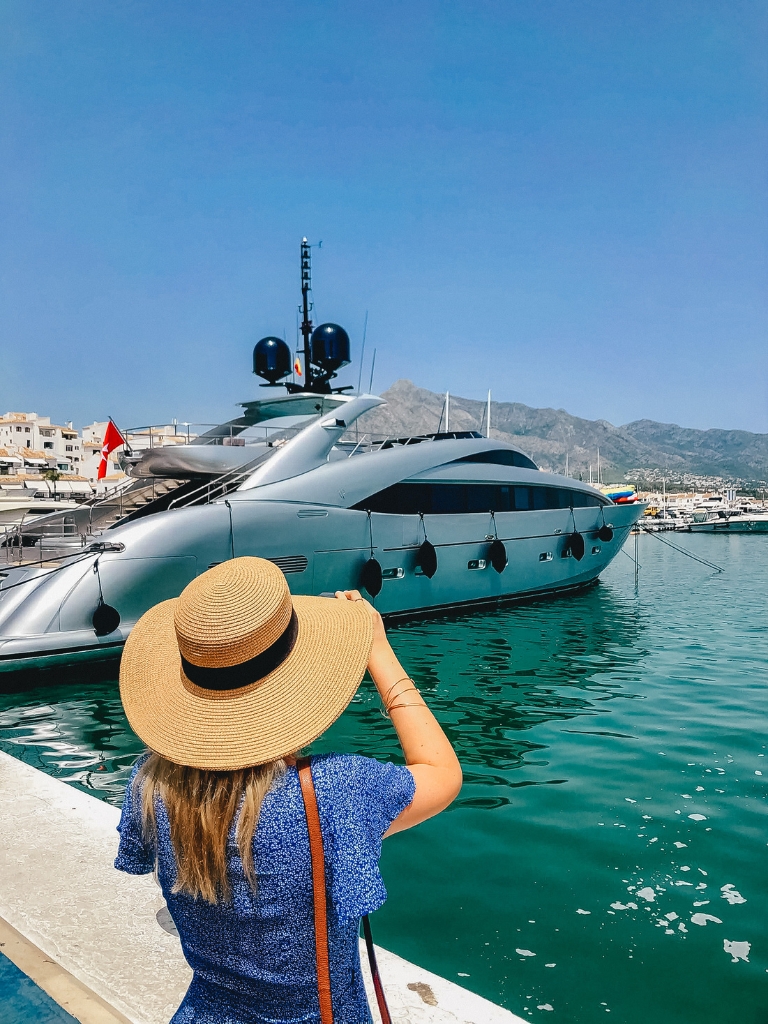
Interrailing Spain for the first time? You’re in the right place! Travelling Spain by train is one of the best ways to see the country. Spanning nearly 1,700 miles, the Spanish railway system is one of the most extensive and efficient in Europe, making it a perfect country to interrail. Whether you’re looking to explore…
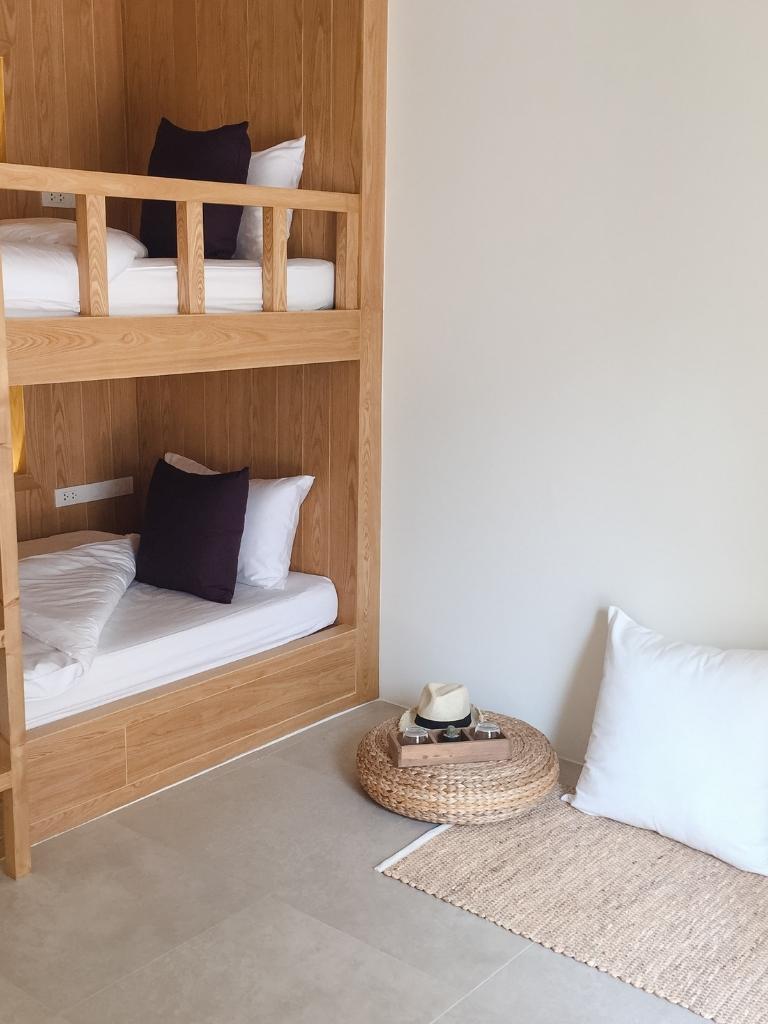
Tips for Staying in Hostels: A First Timer’s Guide in 2023
Some links in this post contain affiliate links. I receive a small commission if you use the links at no extra cost to you! Happy reading 🙂 So you’ve decided to stay in a hostel? This is one of the best ways to meet people if you’re solo travelling and a way to really enjoy…
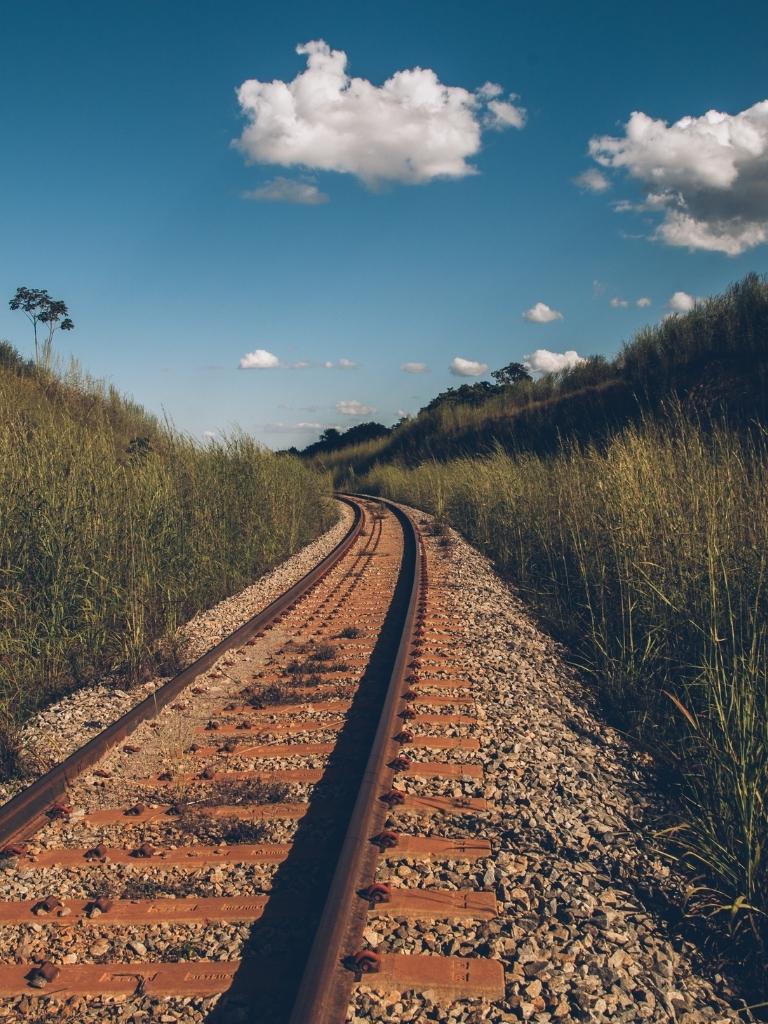
Is the Interrail Pass Worth it? An Honest Review (2023)
So, is the interrail pass worth it? When I was deciding whether or not to get an Interrail pass, I googled “is the interrail pass worth it?” so many times. As a budget backpacker, it’s always important to check the cheapest ways to travel and save your money wherever possible. If I could book separate…

19 AMAZING Things to do in Helsinki in Winter! 2023
Looking for the best things to do in Helsinki in winter? You’re in the right place! From drinking hot chocolate in cafes to visiting Helsinki’s landmarks, Helsinki is one of the best winter holiday destinations. Helsinki is the capital of Finland and is full of historic landmarks, cosy cafes (the Finnish are the biggest coffee…
Everyone would like to travel to Europe, especially Paris. You can travel by a commercial plane or via private jet. If you want convenient and more safe travel, I think choosing a private jet is a good choice.
Hi Melissa! Unfortunately, most of us can’t afford a private jet, especially my predominantly backpacker audience 😅 however, I will leave your post here just incase anyone can! (And hopefully they take me with them! Haha)
Leave a Reply Cancel reply
You must be logged in to post a comment.

- Switzerland
- The Netherlands
- National Parks
- Affording Travel
- Photography
- Responsible Travel
- Worldschool
- Wanderlust Guides
- Travel Planning
- Work with Us
England , Europe , France , Greece , Iceland , Ireland , Italy , Scotland , Travel
How to plan a europe backpacking trip for your family.
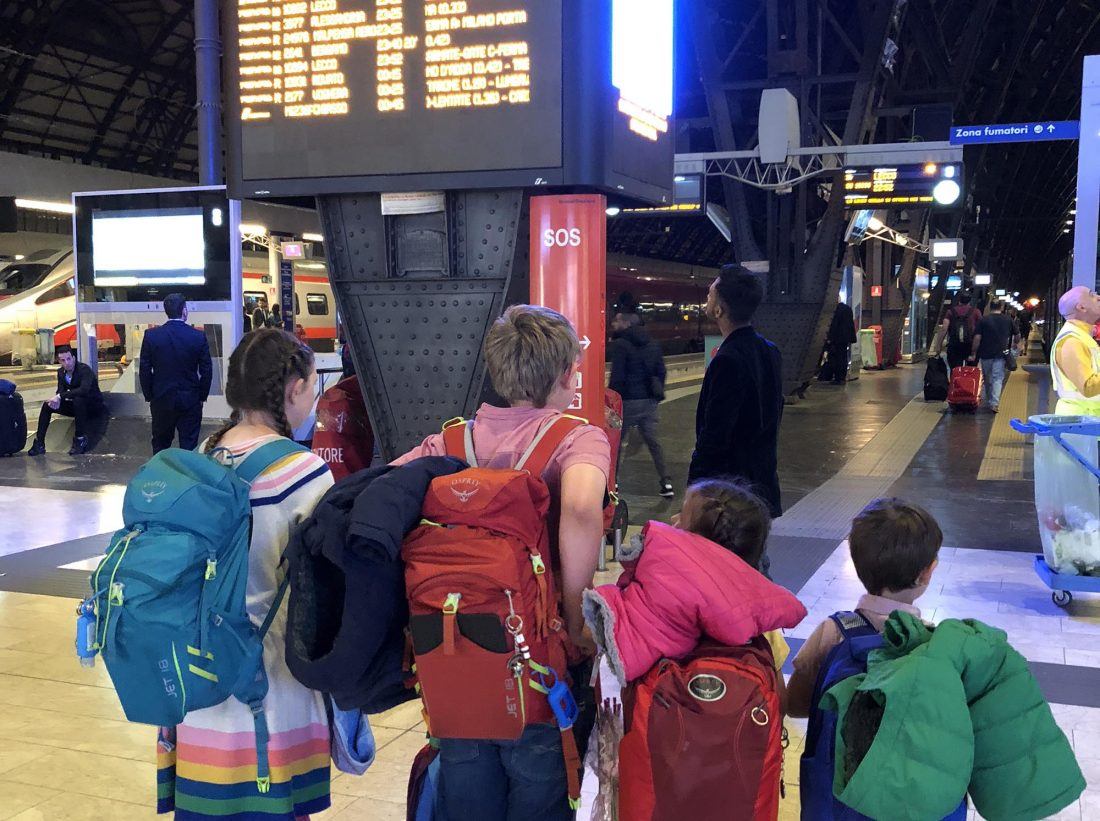
If you’re wondering how to plan a family Europe backpacking trip, this guide to backpacking Europe will be essential. Discover why to go, how to go, where to go, and what to pack. You can also download my free backpacking Europe packing list.
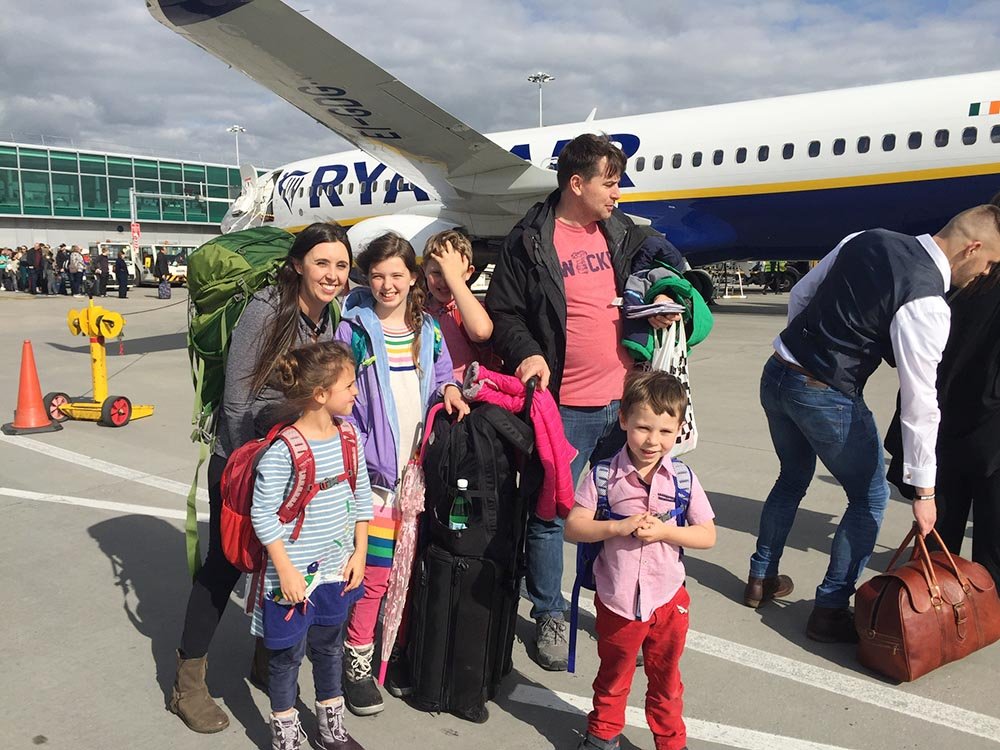
- How to Plan a Family Europe Backpacking Trip
A few months ago I set off on a Europe backpacking trip with my four kids. First of all…my hats off to single moms! You’re amazing! Having to mom alone for 3 months was HARD! And probably even harder while traveling through foreign countries. I’ve had about a million questions asking WHY we did it, and then asking HOW we did it. So I thought I’d answer them all here for inquiring minds. How to backpack Europe with kids…
Here's a Short Cut
Backpacking Europe Cost
2. resilience & education, thinking about taking a family gap year, where to go on a europe backpacking trip with your family, backpacks for the kids, backpack for adults, packing cubes, what to pack for a europe backpacking trip for kids, my favorite kids’ clothes for backpacking europe, my favorite kids’ activities, snacks, and games for backpacking europe, what to pack for a europe backpacking trip for women, my favorite gear for backpacking europe, toiletry essentials for backpacking europe, what to pack for a europe backpacking trip for men, a really awesome fanny pack, portable wifi device, international power adapter, portable phone charger, portable luggage scale, fitness tracking watch, a great camera, portable wash bag, laundry detergent packets, clothespins & string, travel first aid kit, reusable collapsible water bottles, eyemask and earplugs, good headphones for you and the kids, backpacking europe packing list, how to backpack europe with kids, why take a europe backpacking trip with your family.
There are many reasons to take a Europe backpacking trip with your family. I mean, it’s Europe! So much to see, do, learn, and eat! But these are the main reasons I decided to do it.
1. To Save Money
I want my kids to see as much of the world as possible, but I have 4 kids, and they’re expensive. Trust me, I have 3 in braces right now, they are expensive, and only draining my bank account more as they get older! Why did no one tell me this before I had kids?! Thanks, mom!
So, we’ve established that travel is expensive, but one of the biggest expenses of travel is airfare. Buying 5 flights to Europe is a heck of a lot cheaper than buying 20! Math! I decided it would be more cost-effective to buy flights to Europe and stay for several months to see as much as we could, rather than flying back and forth between the US and Europe all year long.
So I found cheap tickets to Europe, planned a 3-month backpacking trip (because why not), and off we went! For those interested, I detailed our backpacking Europe cost below.
How much does it cost to backpack Europe for three months you ask? I kept track of all our expenses and added them all up for you in this handy-dandy table! I think you might be surprised at how little we spent.
So the total cost for 5 of us backpacking Europe for 3 months was $9,352 . That’s around $3,100/month or $1870/person . Not too bad eh?
We saved a lot of money and keep our costs down by renting houses instead of staying in hotels .
We wanted to stay around $3,000/month because we were renting out our house on Airbnb for around $4,000/month . So technically, we saved money by traveling Europe, just like we did last time we slow traveled Europe for a year. You can read more about how much we spent doing that here .
Our backpacking through Europe cost was probably the same cost as some family’s one week trip Europe trip. However, we did make some sacrifices to keep under our budget.
As many of you know, the main goal for us when we travel with our children is education. And I don’t just mean learning the history of a castle we visit, but an overall education about the world and how to be a good human. We call this worldschooling and you can learn more about why we do that here and how we do that here .
If there’s one thing that long-term travel teaches you, it’s resilience. I wanted to teach my kids how to persevere and make sacrifices, while still having a good time exploring the world. I also wanted my kids to learn about all the amazing places we went to. We studied a lot of history and geography before we left on our Europe backpacking trip.
My kids definitely learned a lot on that trip. They learned to carry their own belongings, live with less, not beg for souvenirs, run when they needed to run, be kind to strangers, accept the kindness of strangers, be on their guard, and much much more!
We ran into a lot of difficult situations and they learned how to band together and be supportive of one another. They also learned that I am only human and can only do so much. This means that they learned how to help themselves.
Did you know that gap year aren’t just for young adults graduating high school? They can actually be for families too. A gap year is a great way for your family to gain perspective, connect, and focus on what is truly important. I’ve got a great guide on how to logistically and affordably take a family gap year.
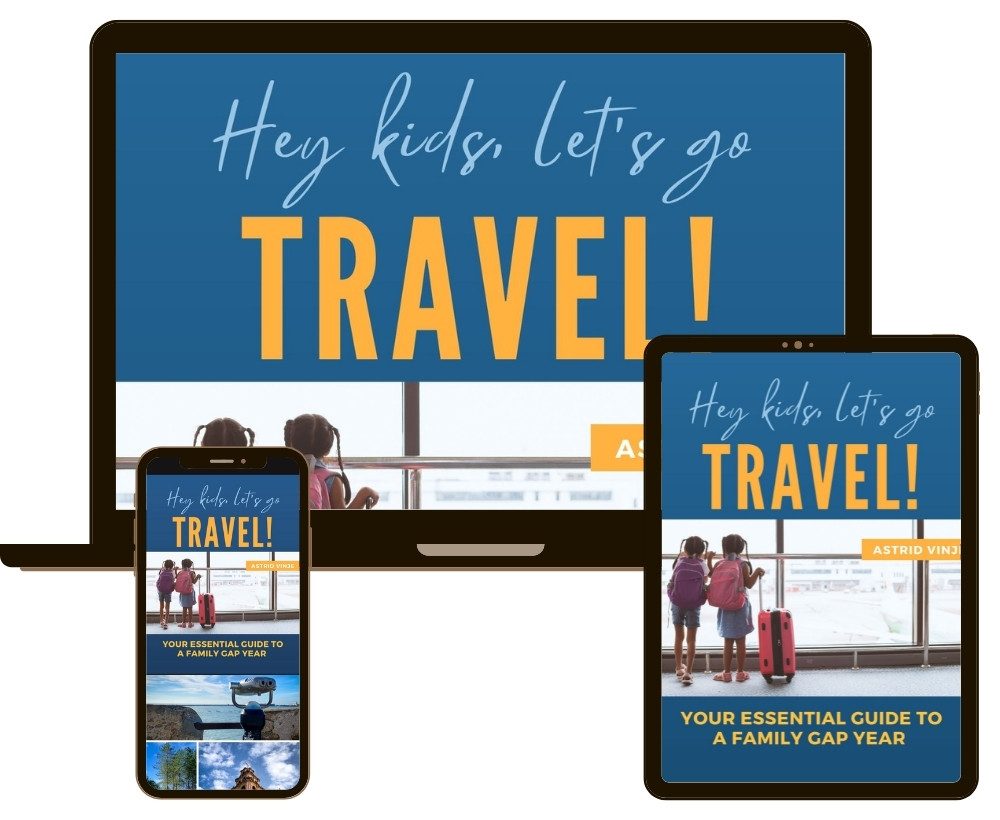
Now that you know why we went, I’ll tell you our backpacking through Europe itinerary. Honestly, you can go anywhere in Europe, this is just where we chose to go for this trip.
Backpacking Europe Itinerary:
- Week 1: Iceland
- Week 2: Edinburgh, Scotland
- Week 3: Outer Hebrides, Scotland
- Week 4: Greece
- Week 5: Florence
- Week 6: Cinque Terre
- Week 7-9: Sardinia
- Week 10-11: Paris
- Week 12: London
Gear You’ll Need for Backpacking Across Europe
Before you even start planning your backpacking through Europe route, you’ll need to make sure you have the right gear, otherwise, things can go very wrong. The main key is not to overpack.
Europe is a first world country and anything that you might need can most likely be purchased there! So don’t stress over bringing your own diapers or tampons. I’ve outlined below the things that we brought with us to Europe that we couldn’t have lived without.
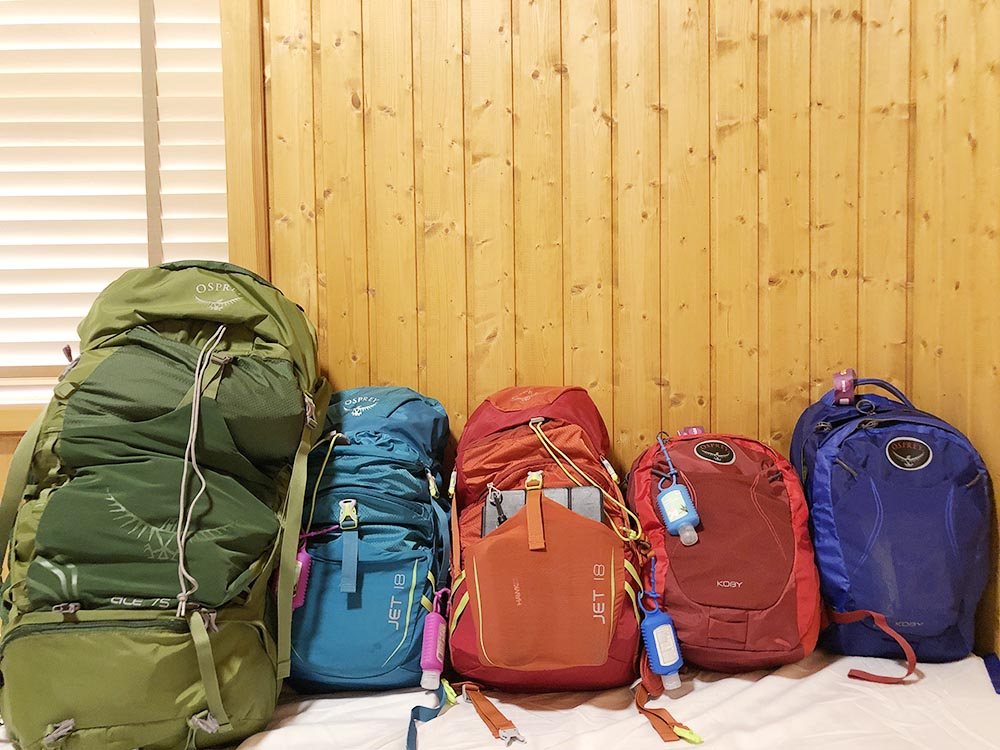
The Best Travel Backpack for Europe Backpacking Trip
Picking the right backpacks for our trip was essential! We would be carrying these packs several times a week, for several hours at a time, and for great distances. We would need to store them on trains, planes, taxis, buses, and cars. They had to be light when empty because we were going to pack these full of all our necessities for the next 3 months! I did a lot of research until I found the best backpack for Europe backpacking.
I’m not generally a brand loyalist, but when it comes to Osprey, I truly think they are the best backpacks for backpacking Europe! They are lightweight, durable, have lots of pockets and options for sinching and expanding, and most importantly, comfortable! Osprey has travelers and outdoor enthusiasts in mind when they design these.

I absolutely loved the Osprey Jet 18 backpacks for my kids. I spend a lot of time researching the best backpack for Europe and for kids . Osprey does an amazing job of making backpacks actually comfortable! Who would have thought?! The waist and chest straps that they provide are absolutely crucial to keeping kids comfortable while carrying all their gear through Europe for months.
These are not kids backpacking backpacks, but rather daypacks, as I feel the backpacking backpacks would be too much to carry for my kids. These Jet 18s surprisingly fit a lot in them.
I’ve recommended this backpack to several families backpacking with kids and they have all loved it! It’s a great backpack for ages 5-18 due to its ability to squish down so small or expand larger. It also makes a great daypack for adults. I usually took one of these Osprey Jet 18s as a daypack during our travels. You can purchase the Osprey Jet 18 here.
Learn more about the best kids travel backpack options for all ages.
Obviously, you’ll need a bigger backpack while backpacking through Europe. You’ll most likely be carrying the extra gear like laptops, cameras, and toiletries that the kids won’t be using. This is my personal backpacking Europe backpack. I used this Osprey Ace 75 and it served me well. It’s actually a kids backpacking backpack, but I am petite with narrow shoulders so it fit me well. This backpack has a lot of options for expanding and shrinking just like the Jet 18, but it’s much larger. I would say it’s around the size of a carryon suitcase. When filled to capacity it did get quite heavy though! You can purchase the Osprey Ace 75 here.

I often wished that the backpack had hidden wheels. Not until after my backpacking trip did I discover that Osprey DOES, in fact, make a backpack with wheels. Backpackers rejoice! If I did this trip over again, I think this is the best backpack for backpacking Europe! It’s called the Soujourn Series and can be wheeled like a carryon suitcase or carried like a backpack, complete with waist and chest straps! The Soujourn comes in 80L , 65L, and 45L sizes . I think the 65 would have been what I would have chosen. You can purchase the Osprey Sojourn here.

If you’re not child sized, I’ve had my eye on this Osprey Renn 65 which seems to have around the same specs as the Ace 75 (the Renn is a few inches shorter), but is made for women, which means the straps are curved to allow more room for your breasts! Winning! You can purchase the Osprey Renn 65 here.
Packing cubes will be absolutely essential to your packing and your sanity! They will help you to keep everything organized and compressed so that clothing fits nicely into the backpacks. My two little kids each had one medium-sized packing cube. My 10-year-old had a medium packing cube and one small packing cube, and my oldest had one large packing cube. There was really no rhyme or reason to this, it’s just how it went down when I divided our cubes out.

We used packing cubes that I bought from Target, however, they were pretty flimsy, so after this trip, I invested in a set of these new packing cubes which have proved to be much sturdier! You can purchase packing cubes here.
Clothing for Backpacking Europe
- 4 shirts/dresses
- 3 pants/shorts (depending on the season)
- 4 socks
- 4 underwear
- water shoes/sandals
- hiking shoes/sneakers
- heavy or light jacket depending on where and when you’re going
- warm hat or ball cap depending on weather
Here’s the line up for what we packed for our Europe backpacking trip:
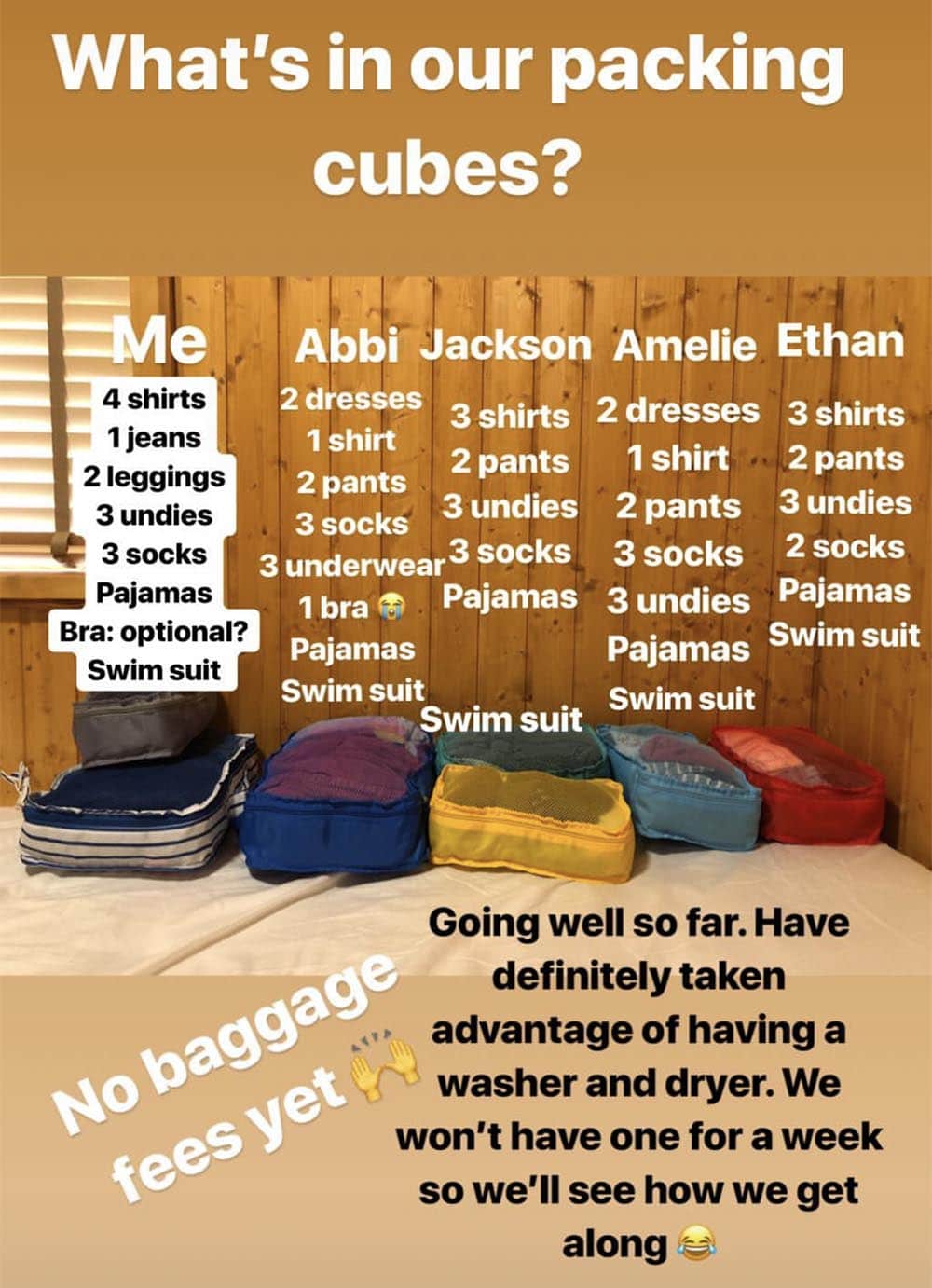
This is what went inside of each of the kids packing cubes, give or take a few things, plus what they wore on the plane (dress/shirt, pants, underwear, socks, jacket, etc.)
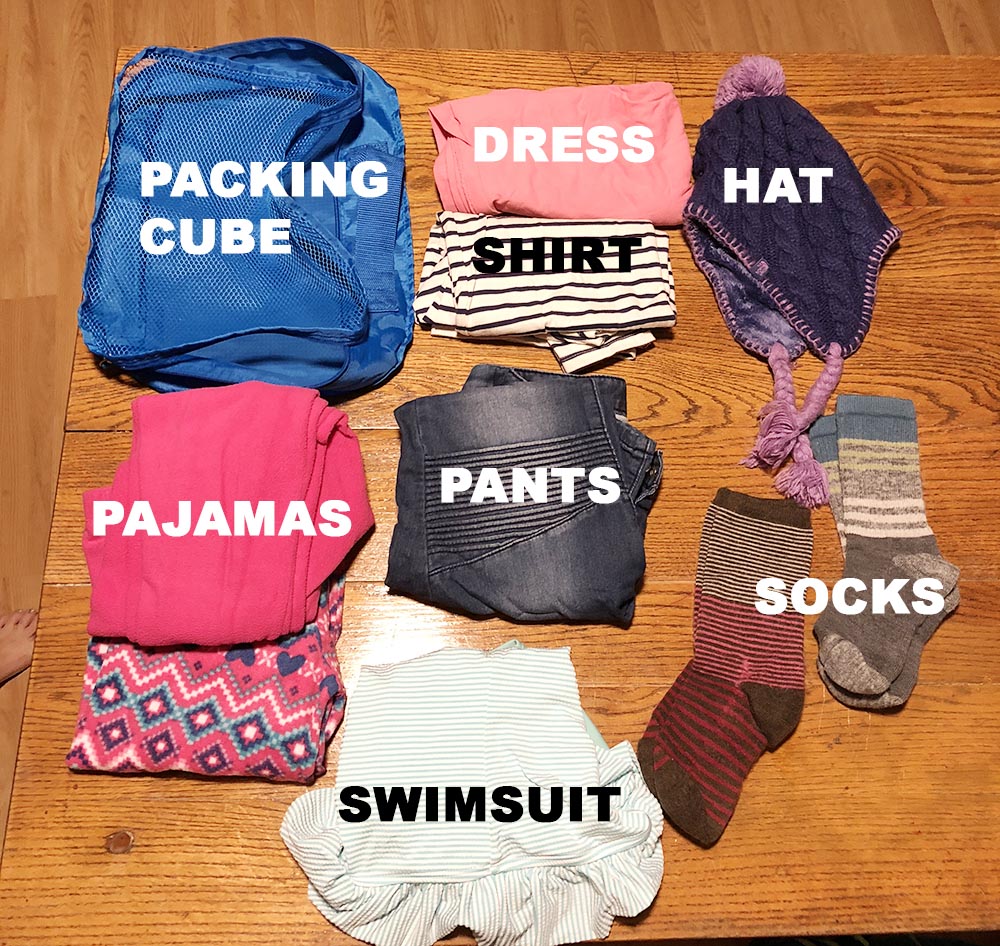
The packing cubes went inside of our backpacks along with a few other things:
- Bag of snacks
- Antibacterial
- Boogie Boards
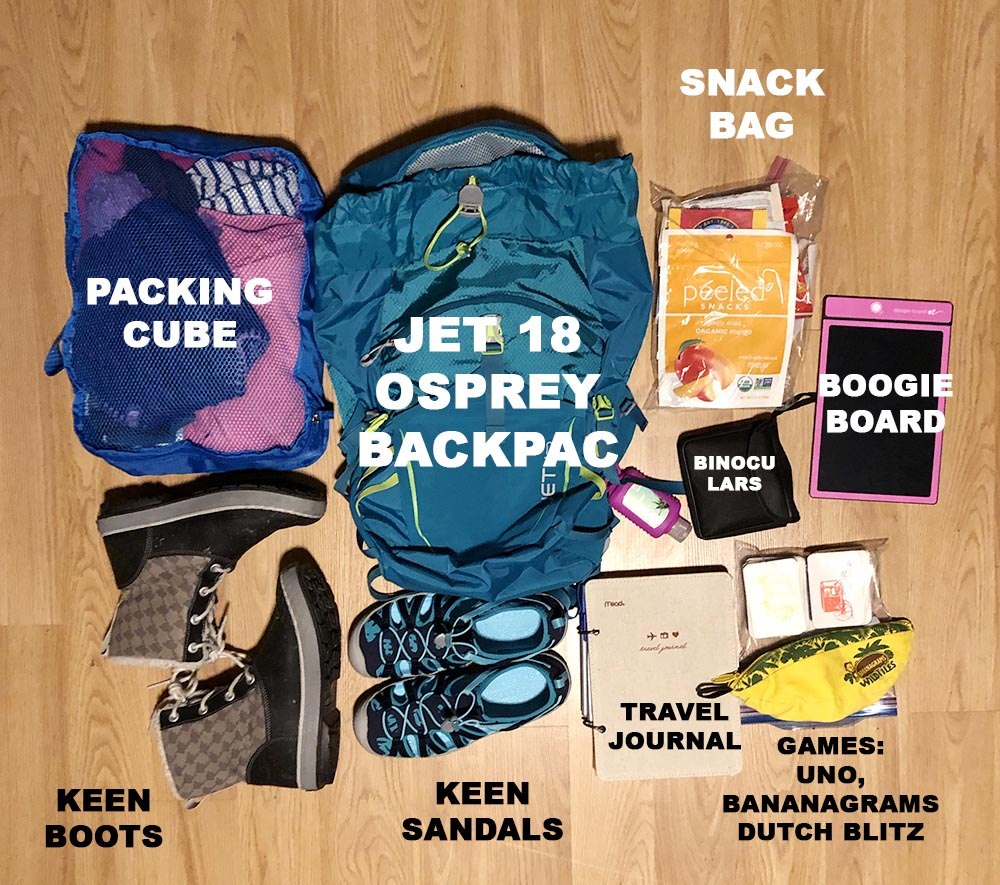
Games: Having small, portable games for the kids is essential while backpacking through Europe. There will undoubtedly be long travel days on planes, trains, or boats. Games are also a great way to bridge the gap between language barriers. My kids have made many friends over a game of UNO! These are three of our favorite games for traveling.
Bananagrams
Dutch Blitz

Activities: Having these three things gave my kids plenty to do when they had to be by themselves. They’re also great when everyone just needs to be separated! Some of my kids didn’t love writing in their travel journals, but I’m so glad they have them now. It was fun to come home and put pictures in them later. Boogie boards are great because the kids can still draw, write, or play games like hangman or tic-tac-toe without having to carry around a bunch of paper. And of course, an iPad or Kindle is essential and can be loaded with e-books, games, and movies for those long plane rides!
Travel Journal
Boogie Board
Kindle Fire
Dried Mangos These are the best dried mangos out there with no sugar added.
Smart Sweets Gummy Bears: Totally addicted to these and only 3 grams of sugar in the whole bag!
CLIF Bars: These are great as an on the go meal, especially when breakfasts can be hard to find in Europe.
Here are even more tips for what to pack in kid travel backpacks.
To be completely honest, I don’t have a ton of opinions about my own clothing. I really like wearing dresses for reasons like my undercarriage can breathe, no waistband to restrict trying delicious food in Europe, and they’re much cooler. I buy my dresses from all over the internet and from lots of thrift store browsing, and almost always pack more dresses than pants!
However, I do have strong opinions about three items that are my absolute favorites!
- Eddie Bauer Boots: These Eddie Bauer boots are quite possibly the best thing that have ever happened to me! Not only are they the most comfortable shoes I’ve ever owned (ask anyone I know…they’ve heard me rave about these boots), but they are waterproof, AND they come with a lifetime warranty. I bought a pair over 5 years ago and I wear through the soles about every year and a half because I wear them everywhere! When they wear out I just bring them to any Eddie Bauer store (even though I bought them on Amazon) and they give me brand new ones! They’re the BEST investment I’ve ever made. You can buy them here.
- TEVA Sandals: I love TEVA sandals for many reasons. They’re durable, well made, cute, lightweight, waterproof, etc. But most of all I love them because they are comfortable, which is my #1 priority when picking shoes to travel through Europe for months with. I own several pairs of TEVA sandals, but these are the ones I’m wearing right now. They’re pretty versatile and can go with hiking attire or a sundress to church. You can purchase them here .
- Jean Jacket: I know, I’m like so totally 90s! Or 80s? Do jean jackets ever really go out of style? I got this jean jacket in a StitchFix box about 6 years ago! Are people still doing that? Anyway, I wore it for years and years until I finally wore out the elbows! Bless Amazon for carrying everything! It’s super stretchy and comfortable (can you tell comfort is key for me?) and it literally goes with every outfit (I’m even wearing it in the picture above and didn’t notice ha!) It’s warm, but not too warm and the pockets on this jacket are angled in such a way that they hold my phone and wallet perfectly without falling out. Meaning I don’t have to carry a purse! I know, it’s the little things! I know it’s just a jacket, but it’s one of those things I would cry about if I ever lost! So, let’s be twins! You can purchase my favorite jean jacket here.
- Dry Shampoo: It is crucial to bring a good dry shampoo! You never know what shower conditions will be like or how many travel days you’ll have in between washing your hair. I’ve recently discovered this amazing Chia Seed Dry Shampoo by HASK and it has changed my life, meaning I no longer shower! It doesn’t leave a white residue like most dry shampoos (how DO they do it?) and it’s light meaning it doesn’t leave my hair feeling like I just dumped a ton of baby powder in it. It sprays on in a sort hairspray-like consistency and it’s just the best. I recommend brushing your scalp with vigor at night and then spraying it in. It sounds weird, but trust me! I have fine, thin, oily hair and have learned over the years how to deal with not being able to wash my hair daily. (sorry TMI) I only buy it in travel size because I travel so much. You can purchase it in a six pack here.
- Heavy or light jacket depending on where and when you’re going
Practical Things to Pack for Backpacking Europe
I honestly don’t know how I lived before I started using fanny packs. I mean, obviously, I used them in the 80s and 90s! I don’t know why these ever went away, but I’m so happy that they’ve regained their coolness factor! It’s so great not to have to carry a purse and put all the weight on my hips instead! Plus, they’re so cute now! No more neon though, bummer! I’m obsessed with my faux leather “Fawny Pack” from Fawn Design. You can purchase yours here.
Unless you have a really great phone plan that has affordable international data service, you’ll definitely need some way to connect your phone. I rely on my phone for so many things, but mostly I need my maps for getting around. Google maps and Apple maps both have great public transportation routes and information that are invaluable while backpacking through Europe. But they all require WiFi or cell service. I use Skyroam which costs $9/day and it’s so worth it. I also love it because it acts as a portable charger as well! How cool is that! You can purchase a Skyroam Solis device here . Use code WANDERLUSTCREW for a special discount!
You’ll want to make sure you have a good multi-country international power adapter that will work throughout Europe and the UK. While I prefer to have country-specific adapters for most of my trips, it’s just not practical for a multi-country trip. I have this adapter and it’s the best multi-country one that I’ve tried. I like that it has the extra USB outlets on the plug as well so that you can plug in two USB cords along with a regular plug for a laptop or curling iron. You can purchase this adapter here.
You’ll definitely want a portable charger for your phone while backpacking Europe. With long days of travel and exploring, and using your Maps, your phone will die quickly. I love this portable charger. I’ve had it for years and it has never failed me. The best part of it is that it has cords built-in and has an iPhone cord and a micro USB cord so I can charge my phone, iPad, headphones, camera charger, etc. It’s a little pricey, but it works so well an has lasted so long that I think it’s a worthy splurge. You can purchase it here.
For this Europe backpacking trip I invested in a portable luggage scale since I knew we would be flying lots of budget airlines that required you to keep your bags at a certain weight. It was definitely a necessity. Raise your hand if you’ve ever flown Ryanair! You’ll know what I mean. You can purchase the one I used here.
I’d love a Fitbit, but unfortunately, it’s beyond my budget. I found this Fitness Tracker Watch on Amazon years ago and I’m totally obsessed with it. It’s only around $30 too, much cheaper than a Fitbit, but basically does the same thing. I loved it so much I bought my kids each one too. It’s awesome because they like to compete for the number of steps each day. You can set a goal, like 20,000 steps and when you reach it you receive a “trophy.” This has been an amazing motivator for me and my kids! You can purchase on here.
With all the incredible sites you’re about to see while backpacking Europe, you’ll want to be sure you have an excellent camera, but one that is not huge. A few years ago I traded in my bulky DSLR Canon camera for a much lighter and smaller Mirrorless Sony. I have the a7rii and love it. You can find my camera here .
If that’s not in your budget (I saved up for 8 years) then I would definitely get the Sony a6000. Much cheaper, even smaller than my camera, but still takes awesome shots! You can purchase it here .
I recommend using a 24-70 zoom lens for travel. It will give you good range with good depth of field. I like this Zeiss model. Don’t get too caught up on the quality of cameras. The best camera is the one you have on you. If you only use your phone, that’s great too!
If you would like some tips you can read my 12 tips for family travel photography.
Since you’ll only be taking a few items of clothing to Europe in your backpack, you’ll need to wash fairly frequently. Many times, you may not have access to a washing machine or you may not have time to sit around in a laundromat. It’s helpful to have your own little portable wash bag and also your own powder detergent so that you can wash when you want to.
These are especially handy for washing your underwear in a pinch. We brought one and used it at least once a week! They take up almost no room, so even if you don’t end up using it you won’t feel bad, but they are seriously a necessity!
So you don’t need to haul an entire package of laundry detergent around with you, these laundry detergent packets will be essential. I suggest packing at least 1 per week of your trip. If you don’t have room, don’t sweat it. You can always buy detergent in Europe! You can find these Sink Suds here.
Along with washing your own laundry, you’ll need to hang dry your clothes. Having your own clothespins and string can be helpful for hanging drying laundry in random places. We’ve dried our clothes in the strangest of places before, but you can’t have wet underwear! Purchase clothespins here and string here.

You never know what’s going to happen on the road. It’s best to be prepared for anything. A small travel first aid kit takes up almost no space but can be invaluable. My daughter sprained her ankle in Iceland and had to have it wrapped for several days. Now if only I could pack crutches in that backpack! You can purchase one here.
I love my Hydroflask, but they are big and heavy and take up quite a bit of space. I like using these reusable collapsible water bottles when we are tight on space. You can purchase them here .
I’d say this is for the loud planes, trains, and unfamiliar and bright bedrooms, but let’s be honest, this is really to block the kids out. Amiright?! Nevertheless, if you’re backpacking with kids or without, these are essential items to bring with you. I love these eyemasks that look like bras for your eyes, but they’re great because they allow room for your eyelashes, which has always been a major complaint of mine. And you can get earplugs for a few bucks. Purchase the eyemask here and the earplugs here .
With all the traveling you’ll be doing between destinations, you’ll want to have some form of entertainment for you and the kids. Whether that’s audiobooks, games, movies, or ebooks, you’ll probably want a good pair of headphones that don’t take up much space in your backpack. And you may have some days where you just need to tune each other out. I won’t judge! Been there, done that!
I’ve had these LG Bluetooth headphones for about 3 years now and they’re the best. I know everyone is raving about AirPods, but I cannot get those suckers in my child-sized ears apparently. This headset comes with several size options for the earbuds. You can purchase them here .
I like these Sony headphones for the kids. They take up a little more space, but they do fold up really nicely. They’re great for younger ones who aren’t quite big enough to use earbuds. You can purchase those here .
If you’d like a quick printable backpacking Europe packing list, you can download this here. This backpacking Europe checklist will help you keep your stuff organized and ensure you don’t leave anything behind.
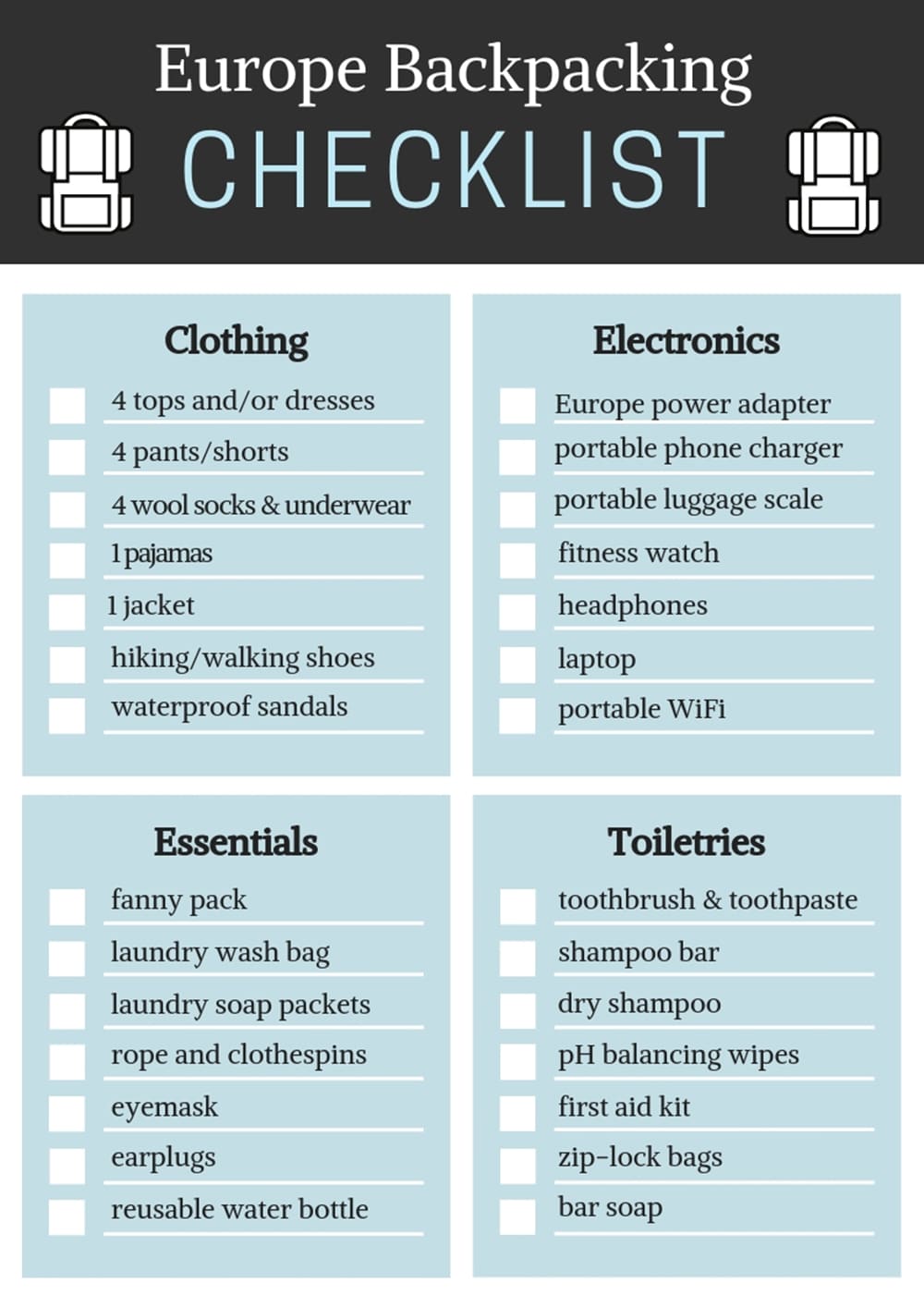
Before going, be sure to read my tips for visiting Europe . I learned a lot during our 3 months backpacking around Europe and I want to share my most important tips for backpacking Europe with kids so that you don’t make the same mistakes I did. How to backpack through Europe without getting stressed:
- Don’t over-plan: Part of the fun of backpacking around Europe is being able to be flexible and enjoy the journey. It’s difficult to do that when each day is scheduled out to the max. Make time to sit quietly by the ocean or to reflect in an ancient church. All totally easy things to do with kids right?!
- Don’t go too fast: I recommend spending at least one week in each stop. Unpacking and packing can be time-consuming and stressful. You’ll also need to give yourself a few days to wash and dry the laundry.
- Plan downtime: This is especially important if you’ll be traveling at a fast pace. Kids and adults both need down days mixed in with travel and exploring days. Playing tourist is fun, but some days you might just need a day to rest, watch Netflix, and cook a meal at home. Incorporating some “real life” activities into your travel can help to prevent travel burnout or homesickness.
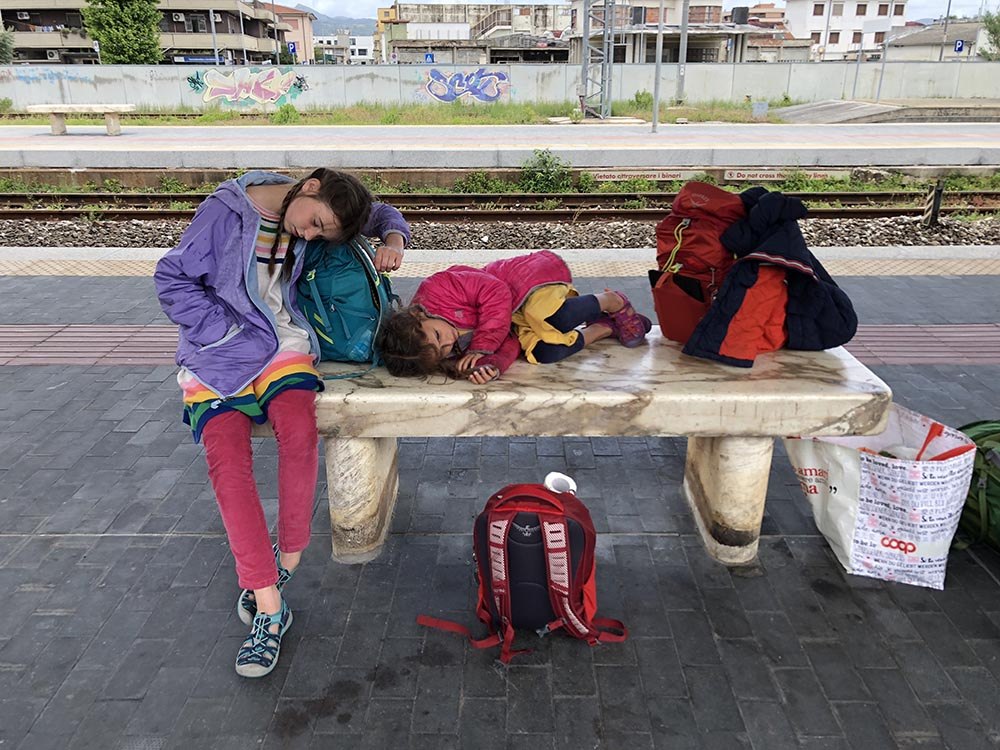
- Give yourself plenty of time on travel days: Travel days always take longer than you think and they always take more out of you than you think. Give yourself plenty of time before flights and trains so that you’re not stressed. You never know who will have to go to the bathroom just before getting on a bus!
- Don’t overpack: When packing for your Europe backpacking trip, be sure to have the kids try out their packs. Make sure they can walk around with them for at least an hour without breaking down.
- Train for your Europe backpacking trip: Backpacking through Europe will be much more physically demanding than you might think. Even if you’re not doing any hiking, just moving from one place to the next with your kids and all your stuff is taxing! Be sure you and your kids are in top shape before leaving. Take long walks with your packs, go on hikes, count your steps using a fitness tracker watch and see if you can get around 20,000 each day, which is probably the minimum you’ll do for backpacking Europe.
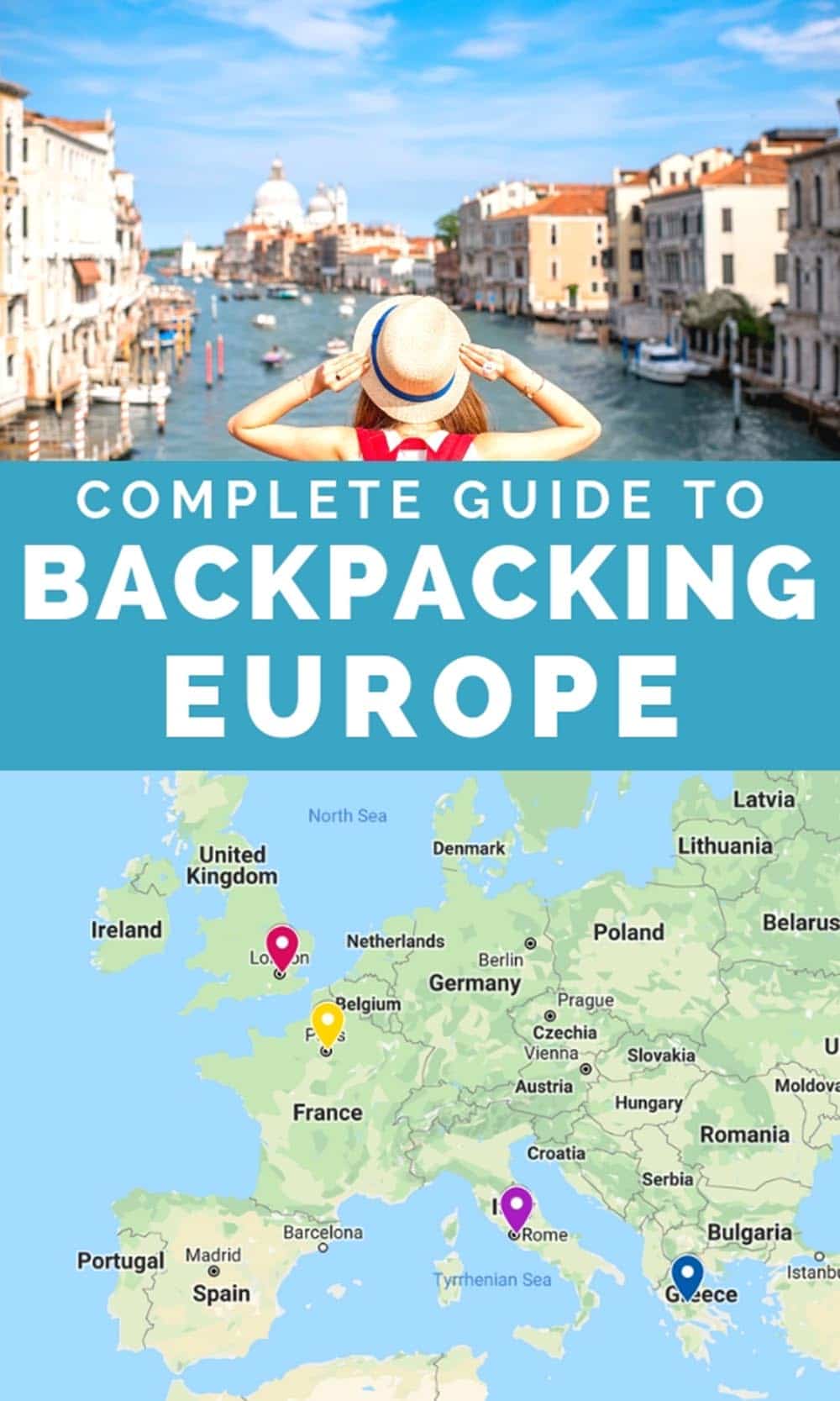
I hope you’re feeling more confident about your Europe backpacking trip. It takes a lot of planning and a lot of patience, but you will have an incredible time. Just remember nothing always goes as planned, so don’t get upset if that happens. Just roll with the punches and enjoy the journey!
If you need help planning your Europe backpacking trip, please get in touch with me via email , Facebook , or Instagram .
Wanderlust Crew
5 thoughts on “ how to plan a europe backpacking trip for your family ”.
Love all the tips! Where were you flying from in the US? I’d love to know how you found such cheap flights! That’s where it really adds up for us, we’re also a family of 6 but live in a place that is often expensive to fly from.
Hi Sam. It really does make a difference doesn’t it!? We flew out of San Francisco. I find it is sometimes worth it to buy cheap flights from a major airport and find a way to get there if you can do it affordably. Sometimes it’s worth it and sometimes not!
Stumbled across your blog and am really intrigued by your Europe trip. I too am amazed at the cost of flights. Did you really get flights from Iceland to Scotland for $20 per person and from Scotland to Greece for $10 per person or is the total in your budget per person for flights? Where and when did you book flights? And what airlines? I am assuming the cost is American. (We are Canadian)
Hi K, Yes sorry I should have specified, it is all in US dollars. And yes European flights are SO much cheaper than domestic flights in the US or Canada. It’s crazy! Check out Ryan Air and Easy Jet!
Leave a Reply Cancel reply
Your email address will not be published. Required fields are marked *
Notify me of follow-up comments by email.
Notify me of new posts by email.
This site uses Akismet to reduce spam. Learn how your comment data is processed .

Backpacking Europe: Itinerary Advice From an Expert
Backpacking Europe can be life-changing experience. Check out this guide to learn how to plan the perfect trip and see a sample itinerary.
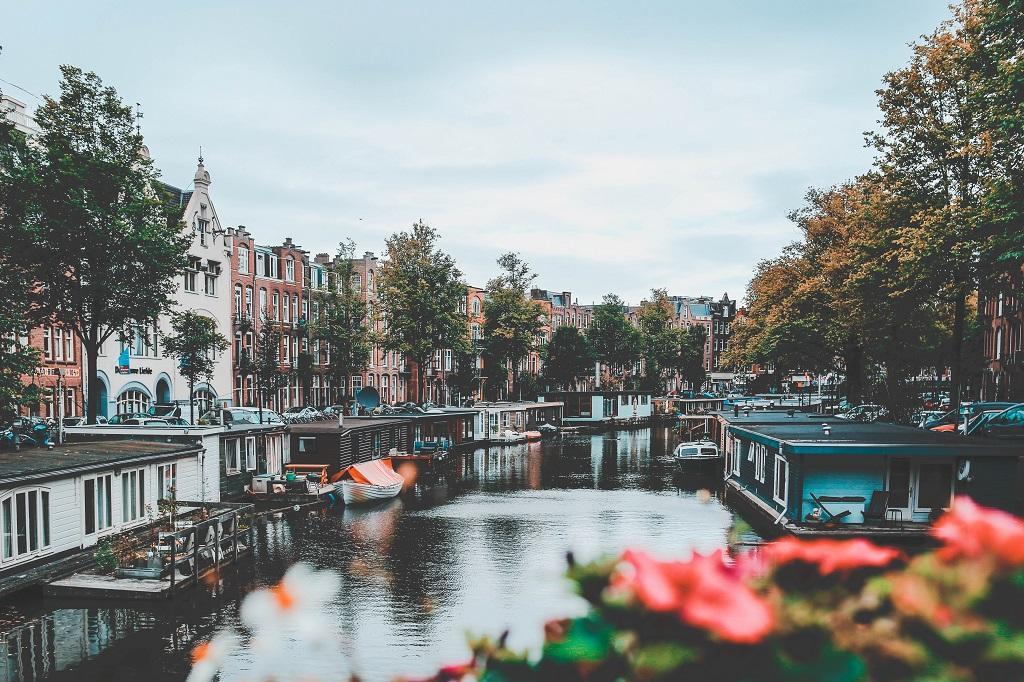
Backpacking Europe can be a life-changing experience. The diversity of languages, architecture, and cuisine is enough to keep culture vultures happy for months while history buffs will swoon every time they turn a corner! Traveling through Europe as a form of enlightenment and self-discovery has been popular since the 17th century when the well-heeled would travel to places like France, Germany, Greece, and Italy to become more cultured and learn more about history and art (and according to historical records, engage in some pretty risqué behavior!).
Not much has changed since then except that we’ve traded steamer trunks for backpacks, and boats and carriages for airplanes and trains. Traveling through Europe has also become much more accessible to people around the world thanks to budget airlines like RyanAir and EasyJet.
Discover the world with Let’s Roam .
Here at Let’s Roam, we believe travel is one of the best forms of education! That’s why our team of travel experts has written destination guides, must-see lists, and travel articles to help you plan your trip. We’ve also got hundreds of app-based scavenger hunts that will introduce you to destinations all around the world!
How to Plan the Ultimate European Backpacking Trip
Below you’ll find itinerary advice for your European adventure. This will take you to some of the most famous places in Europe as well as some off-the-beaten-path destinations!
Important Things to Ask Yourself
Before you start planning your European itinerary, there are a few questions that you should ask yourself.
What is your budget?
This is probably the most important thing to figure out before you start planning your trip. It often dictates how long you can travel and where you can go. There are some parts of Western Europe such as Switzerland, Sweden, and Norway that are painfully expensive. Meanwhile, some places in Central and Eastern Europe still offer great value for your money.
If this is your first time traveling, you may want to stick with some of the Western European countries as they are generally easier to navigate your way through. If you’re traveling on a tight budget, this means that you may have to have a relatively short trip. However, if you are a more experienced traveler, going to places like Bulgaria, Romania, and Serbia can help your money stretch longer.
It’s all about finding a balance between how much money you have to play with and the destinations that you can go to. While it sounds a bit complicated to figure out, don’t worry. It’s actually easier than it sounds and we are here to help guide you through it!
How fast do you want to travel?
The next question you need to ask yourself is how fast you want to travel. Everyone travels in different ways. Some people only have two weeks and want to see as much as they can. Others want to take it a bit more slowly and only visit a handful of locations. For anyone lucky enough to have more time to travel, you can always mix it up a bit and travel quickly for a few days as you hop from place to place, and then slow it down and stay in the same destination for a week.
When you’re considering your travel speed, you should really keep in mind what your endurance is. It is much easier to go hard out for a few days than doing it for a few weeks. Like anything in life, if you try to do too much for too long, you’re likely to burn out.
What type of travel experience do you want to have?
This question ties in quite closely with the two above but with a slight differentiation. This is where you want to start thinking about what you want to get out of the trip. Do you want to visit as many museums as possible? Do you prefer to have your own culinary adventure where you focus on eating at different restaurants, taking cooking classes, or simply trying new foods?
How much cultural interaction do you want to have? Do you want to have plenty of time to spend hanging out in bars or cafes with locals? Do you want to attend local Meetup or Couchsurfing events? These types of activities are just as important as sightseeing, but they do take time and should be scheduled accordingly.
For example, if you plan on going out to a famous bar or having a night out on the town, don’t schedule an 8:00 a.m. city tour. While it’s possible to do it, trust me. You don’t want to!
Let the Planning Begin
Love it or hate it, planning is one of the most important aspects of having a fantastic adventure! Backpacking Europe can be very expensive if you aren’t careful. Having a plan in place can help you save a lot of money. It can also keep you from having to backtrack frequently to go back to things you may have missed.
Before you do any of the steps below, check the expiration date on your passport. Keep in mind that most countries won’t let you in unless your passport is valid for at least six months after your arrival date. This is extremely important. If your passport is not valid, you will need to get a new one before leaving.
Expert tip: If you see your passport is getting close to expiring, you may want to consider renewing it at an American embassy or consulate in one of the European cities you plan on visiting. It often takes as little as two weeks to get a new one compared to the atrocious waiting times if you apply in the United States. You simply need to drop off your application and pick up your passport when it’s ready. They let you keep your existing passport in the meantime so you can still travel on it until you get the replacement.
Step 1: Do plenty of research.
Have you ever gone somewhere and only realized that there were some really fun things to do there once it was too late? It’s pretty disappointing, right? Now imagine having that feeling over and over again. This is why it is so important to do research before you get to a destination.
Some of you may be rolling your eyes as you read this knowing that you want to play it by ear rather than having an itinerary packed full of sightseeing. That is perfectly okay! That is how I tend to travel. However, this doesn’t mean you can skip out on the research step. Trust me, I know this firsthand!
If you’re the type of traveler who wants to see some of the more off-beat places in a city, then head over to Atlas Obscura. This fantastic website lists the eclectic or kooky attractions in a destination that most other travel guides tend to ignore. This is what many hard-core travelers use when they want to see something unique or interesting. Also, please, please, please don’t rely solely on social media to research a location. Instagram photos posted by influencers are almost always heavily edited. The attractions rarely look like they do in the photos and you are bound to be a bit disappointed.
Are there any day trips that look interesting?
When you’re researching a destination, make sure to not only look at what there is to do in the destination itself but also whether there are any day trips that you would like to do from there. Most of the major tourist areas of Europe will have organized day trips to other touristy areas or you may be able to get there on your own via public transport.
For example, many people who visit Krakow also want to go to Auschwitz. Many tour companies offer expensive day tours to get there. However, there are also public buses that will take you there. The two experiences are very different and will suit different types of travelers.
What are prices like in a destination around the time you want to go?
When you’re doing your initial research, don’t forget to take a quick peek at accommodation websites like Booking.com, HostelWorld, or Airbnb to see how much the hotels or hostels are around the time you want to go. This can have a major impact on how much time you end up spending in a city.
For example, you may want to use Munich as a base to explore Bavaria and are thinking about taking a train there from Milan. Accommodation in Munich is normally quite pricey even in the off-season and can be extremely expensive during the summer and Oktoberfest. In this case, you may want to take an overnight train between the two cities to save on accommodation costs. This means you either have to cross your fingers so you hit the ground running or you schedule a pretty easy first day there.
Step 2: Create a rough itinerary.
Hopefully, your research has given you a list of destinations that you want to see. At this point, it’s really helpful to save these on Google Maps as a way to see the geographical layout of your desired destinations. If there are any major outliers that would be nice to see but aren’t that important, you may want to cross them off your list early on. This will likely save you some logistics-related headaches later.
On the contrary, if there are any destinations that are pretty far away from everywhere else that you are desperate to see, this is the time to do more research to see what lies between that and the closest destination. You may find that there are a few interesting things to check out on the way. This usually helps make the side trip feel a bit more worthwhile. If you are traveling long distances to get there, it also is a good way to break up those distances a bit. And who knows, you may end up finding some wonderful new places!
Expert tip: When you’re putting together your itinerary, make sure to leave yourself enough time to enjoy yourself! I know, I know. This is easier said than done when there are so many great things to see and do. When I was a novice backpacker working my way through Europe in the early 2000s, I used the Lonely Planet as a checklist and would visit every single attraction that they wrote about. This was extremely ambitious and exhausting, but on the plus side, I learned just how cool botanical gardens are!
Looking back, this marathon sightseeing has largely been forgotten. What I remember are the moments that I spent hanging out with new friends in the hostel, interacting with locals, and the overwhelming feeling that the world is opening up around me. If you move too fast, you may miss out on these experiences, which quite frankly, are just as important as seeing the sights.
Step 3: Start booking tickets and hotels.
Now that you have a pretty decent idea of the places that you want to visit and the amount of time that you need in each place, it’s time to start making a few bookings. This doesn’t mean you need to plan every step of your journey. In fact, we recommend that you don’t actually do that. However, it’s time to book the “big ticket” things. This includes stuff like your flights from your home country to Europe, flights between European destinations, and accommodation in places that are very likely to sell out in advance. Try to book accommodation with free cancelation policies in case your plans change, even if it means paying a little bit more. This way, you have a guaranteed place to stay but still have some flexibility if needed.
Expert tip: When you’re booking your flights, always double-check what airports you are flying in and out of. Some European airports are very far from the cities that they serve which can eat up a lot of time and cost a lot in ground transport getting to the city center.
Expert tip #2: Before you book a bunch of train tickets, which generally isn’t necessary anyways, get an idea of how much your expected train tickets will cost. Compare this to the price of a Eurail Pass to see if it ends up being cheaper. Eurail Passes cost a set price and allow you to use the European train network for a set period. You can get them for certain European countries or regions and if you plan on traveling quickly across large distances, they may save you a lot of money.
Expert tip #3 : If you’re planning to travel through Germany, check what train passes they have available. Deutsche Bahn, the national train network, offers regional passes that allow you to travel on the local trains for a ridiculously low price. These rail passes don’t include the InterCity trains, but they are perfect for anyone wanting to move slowly through the country as they can be used almost like a hop-on-hop-off train ticket.
Step 4: Prepare your packing list.
As the departure day for your big backpacking trip through Europe comes closer, it’s time to prepare your packing list. Try as hard as you possibly can to pack lightly with just a carry-on. Ideally, this will be a backpack. There are a few reasons for this. First off, wheeled suitcases do not do well on cobblestones. Secondly, it is much easier to get on and off trains, buses, airplanes, and other forms of public transportation with a carry-on backpack than a big suitcase. Third, it will save you a ton of money in baggage fees.
While this idea may be painful to some people, it’s worth it. Unless you’re a famous influencer making millions off of your Tik Tok account, you simply don’t need to have a bunch of flashy outfits with you. Instead, bring a few timeless items such as black jeans or leggings, a few dresses, and some nice shirts or tank tops.
Find different ways to layer your clothes so that it looks like you’re carrying more clothes with you than you are. And, whatever you do, don’t forget to bring a brightly colored sarong with you. That handy piece of cloth can be used as a scarf, blanket, towel, beach cover-up, or even a dress if you’re creative.
Try and leave a little extra space in your carry-on bag in case you see anything that you love during your travels and want to take home with you. If you can’t figure out how to fit it all in with room to spare, watch a few YouTube videos to see how other people pack for a backpacking trip. You can also invest in some packing cubes to see if they help. You can normally buy them on Amazon, at home goods stores, or anywhere where you normally buy luggage.
Step 5: Head off for your European backpacking extravaganza!
Woo-hoo! The big day has finally come and it’s time to hit the road! Before you head to the airport for your flight, do one last check to make sure you have your passport that is valid for at least six months, your wallet, backup credit cards and ATM cards, a reusable water bottle, and U.S. dollars for emergencies.
This is also the perfect time to download the Let’s Roam app . This app gives you access to all of our fun-filled scavenger hunts which are a great, budget-friendly way to learn more about a destination!
The 21st Century Grand Tour
Okay, now that we’ve covered all of the logistics of backpacking through Europe, now is the fun part! Below we’ve included a sample itinerary that you can use as a pseudo-Europe travel guide for planning your backpacking trip.
Rather than breaking down what you should do each day, we’ll leave that up to you! Instead, we have focused on the logistics of getting from one place to another. We have also created itineraries that allow you to easily connect Western Europe, Central Europe, and Eastern Europe if you’re lucky enough to travel for months on end and want to see as much as possible!
Expert advice: If you’re traveling for longer periods, pay attention to where you will be at certain times of the year. Most experienced travelers will avoid Western Europe during the summer which is their peak tourist season. On top of that, much of Italy effectively shuts down in August when everyone goes on their summer breaks to the seaside.
As mentioned, if this is your first Europe trip, we highly recommend sticking to Western Europe. One of the cheapest and best-connected airports to fly into Western Europe from the United States is Amsterdam, so we’ll start the journey there! Most of the itinerary is expected to be done by train travel, but there are a few times when you have to take a bus between destinations.
Countries included: Netherlands, Belgium, France, Andorra, Spain, Portugal, Italy , San Marino, Austria, Czech Republic, and Germany
Stop 1: The beautiful city of Amsterdam is the perfect place to spend a few days getting over jetlag and preparing for your big backpacking trip. Nearly everyone in this canal-laden Dutch city speaks English which makes it very easy to get your bearings, especially if you’re a first-time traveler to Europe.
Stop 2: From Amsterdam, you can take a train to Antwerp in northern Belgium. Known as the Diamond Capital of the World, Antwerp boasts striking Flemish Renaissance architecture. Your sightseeing starts as soon as you pull into the breathtaking Antwerp Central Train Station. From there, you can wander around the cobblestone streets, grab your first Belgian beer in Belgium, and check out the interesting, and very historic, Diamond District.
Stop 3: The next stop is Bruges. This charming little city is famous for its canals, cobblestone streets, and medieval architecture. The historic center is a UNESCO World Heritage site so this is something you don’t want to miss. It is a very touristy town though so you may find it hard to escape the crowds.
Stop 4: From Bruges, it’s an easy train ride down to the iconic city of Paris . With sights like the Eiffel Tower, the Champs Elysees, the Louvre, and the Seine River, Paris certainly doesn’t need an introduction. Nearby, the glittering palace of Versailles stands as a testament to the ostentatious wealth and power of the French monarchy before the French Revolution.
Stop 5: After exploring Paris, it’s time to grab a train to Bordeaux , France’s wine capital! This is where you can try some of the best wines in the world straight from the source. The gorgeous walled city of Bordeaux offers the perfect place to base yourself while you explore the nearby vineyards.
Stop 6: Once you’ve had your fill of wine and medieval buildings, it’s time to visit a new country! Andorra is a teeny-tiny country squished between France and Spain. It’s a popular skiing and hiking destination. There isn’t a huge amount to do here otherwise, but it would be a shame to miss another country when you are so close!
Stop 7: From Andorra, you can get a bus to Barcelona . Home of the fantastical Gaudi architecture, a beautiful coastline, and vibrant nightlife, this is another place where you will probably want to spend a few extra days to give yourself enough time to eat, drink, and be merry!
Stop 8: As the capital of Spain, Madrid boasts some of the country’s most impressive buildings, great museums, and fantastic shopping. It is a city of grand boulevards and manicured plazas, which makes it feel very different than Barcelona. Spend a few days exploring the city and then plan on hitting the road again.
Stop 9: Porto is a gorgeous city located in northern Portugal. Well-known for being the birthplace of Porto wine, the city is home to gorgeous architecture, narrow cobblestone streets lined with colorful houses, and a robust culinary scene. This is one of the least expensive touristy hotspots in Western Europe, so this is also a great opportunity to splurge! The best way to get from Madrid to Porto is by bus which should take around 6-7 hours.
Stop 10: Lying just a few hours by train south of Porto, the capital city of Lisbon is a photographer’s dream come true. The hilly streets and iconic street cars provide the perfect props and backdrop for some amazing photos. Meanwhile, the vivacious nightlife will leave you dancing until the early morning! Don’t party too hard though as this is a great place to do a free walking tour of the city.
Stop 11: After you’ve enjoyed all that Lisbon has to offer, you can make your way south to the Algarve coast. Here, you’ll find a handful of historic towns and a long sweep of beautiful beaches. The biggest city in the region is Faro and this is likely to be your first stop before you head to one of the nearby beaches.
Stop 12: The southern Spanish city of Seville is located less than a three-hour bus ride from Faro. Seville is the largest city in the region of Andalusia, which was once occupied by the Islamic Moors. Here, you’ll find a fascinating mix of Moorish, Christian, and Jewish architecture which gives you an in-depth look at Spain’s long, and very diverse, history. This was also where flamenco got its start, making it a good place to catch a dance show.
Stop 13: From Seville, you can either travel by train, bus, or plane to Marseille , France. There are many cheap flights running between the two countries so this is likely to be the most budget-friendly option. Marseille is one of the oldest continuously inhabited cities in Europe and is now one of the most multicultural cities in the country. This is the perfect opportunity to try food from all over the world before hopping back on the train to travel further along France’s Mediterranean coastline.
Stop 14: While there are plenty of lovely towns and cities to visit in southern France, one destination that you shouldn’t miss is Monaco. Famous for its casinos, glitz, and grandeur, the itty-bitty country of Monaco is one of the wealthiest places in Europe. A stop there gives you a taste of how the other half live.
Stop 15: From Monaco, you can head over to Nice. Located at the foot of the French Alps, this is a large city that somehow feels small. The old town is charming and the Mediterranean Sea waterfront can easily compete with some of the most popular beach cities around the world. It was once a summer refuge for the well-heeled in the 19th century. Today, it’s a popular beach destination and a lovely spot to get your feet a little wet!
Stop 16: Time to head to your next country—Italy! The journey from Nice to Cinque Terre National Park is a little complicated and will probably require one or two train transfers. However, once you see the colorful villages perched high on the hills of the Mediterranean Sea, it will feel like it was all worthwhile! The best way to travel between the villages is by hiking along the ancient goat trails that have been used for centuries.
Stop 17: Once you arrive in Pisa , one of the first things you should do is head straight to the famous Leaning Tower to get some Instagram-worthy pics. You can then either spend the night in Pisa or hop right back on the train for the short ride to Florence.
Stop 18: As one of the most popular tourist destinations in Italy, Florence packs a lot into a relatively small place. During the Renaissance, this was the home of some of the world’s biggest artists, architects, intellectuals, and scientists. The love of art and culture still lives on today, and this is the ideal place for all the art history buffs out there! Florence also serves as a good base to explore some of the towns of Tuscany, so make sure to allocate some extra time here!
Stop 19: The ancient city of Rome holds some of the world’s most important architectural wonders including the Coliseum, the Pantheon, and the Roman Forum as well as “modern” gems like the Trevi Fountains and the Spanish Steps. This is another destination where you may want to hang out a bit, getting your fill of wine, pizza, and pasta!
Stop 20: From Rome, it’s just a couple of hours by train down to Naples. The city itself feels a bit rough and ready so you probably don’t want to spend a huge amount of time there. However, it does serve as an ideal base to visit the ruins of the Roman cities of Pompeii and Herculaneum. These cities were destroyed in 79 A.D. when Mount Vesuvius erupted. They now serve as a haunting reminder of what Mother Nature is capable of. Pompeii and Herculaneum can be reached via a local train from Naples.
Stop 21: As you make your way back north from Naples, it’s time to add another new country to your list—San Marino. Another teeny-tiny place, San Marino is completely encompassed by Italy and is an interesting town to wander around for a few hours or even spend a few days in. You can get to San Marino by bus from the cute beach city of Rimini.
Stop 22: From Rimini, you can continue north to Venice . This breathtaking city is unlike any other in the world thanks to its series of interconnected canals that turn the city into a series of islands. Venice has been used as the backdrop for countless movies, books, and TV shows, and there are even replicas of it in Las Vegas and Macao. However, nothing quite beats seeing it in real life!
From Venice, you can either continue east along the coast to Slovenia to start heading south towards Croatia and the amazing Balkan region or head north towards Switzerland and Austria.
Stop 23: Heading north from Italy, Innsbruck is the first major Austrian city you will reach. This is another great destination for hiking if you’re craving some outdoor activities. There are even free walking tours of the Alps if you want to tackle a small hike without having to figure out the logistics yourself.
Stop 24: From Innsbruck, take the train for a few hours to Salzburg . Famous for being the birthplace of Mozart and the filming location of the Sound of Music , this gorgeous city is surrounded by mountains and has amazing Baroque architecture. While you can see most of it in a day or two, it’s a good idea to allow yourself a bit more time, especially if you want to join one of the day tours to the Sound of Music sights!
Stop 25: Just a few hours from Salzburg, you can reach Munich . It’s the capital of Bavaria and home to some of Germany’s best lager. Its historical center boasts Neo-Gothic architecture and the Hoffbrauhaus as well as many interesting museums including the Deutsches Museum which is the largest museum of science and technology in the world.
Stop 26: From Munich, you can easily catch a train to Prague , the capital of the Czech Republic. This is one of the most beautiful cities in Europe thanks to its impressive collection of Baroque and Gothic architecture. Although it’s nowhere near as cheap as it used to be, Prague still offers pretty decent value for money compared to France, Spain, or Germany, so this is another chance to splurge a bit on food and beer!
Extension option #1 : If you want to continue heading east, Budapest, Hungary, is a relatively short train ride away and is well worth the detour! You can even stop in Bratislava, Slovakia, on the way. From there, you can head to Romania and further into the Balkans.
Extension option #2: You can also head into Poland from Prague. Some of the highlights of the country include Wroclaw, Krakow, and Warsaw.
Stop 27: If you don’t have the time, money, or energy to do one of the extension options, the next stop is Berlin . Germany’s capital city is renowned for its museums and edgy culture. This is a city where anything can happen! While you’re there, make sure to visit Checkpoint Charlie and view the remains of the Berlin Wall. These stand as an important reminder of the division of Germany between East and West and how far they have come.
Stop 28: When you’ve gotten your fill of Berlin, it’s time to start making your way toward Frankfurt . This is one of the country’s biggest and most important cities, and it serves as an airline hub for flights back to the U.S. There isn’t a huge amount to see in Frankfurt, but you can continue your journey from there.
So, are you ready to roam?
We hope this guide has given you a good start on planning your European backpacking trip! As always, we would love to hear your feedback, and please let us know if there are any tips, tricks, or destinations we may have missed.
If you want to read more great information about any of these destinations, make sure to check out the Let’s Roam Explorer blog . This blog features hundreds of destination guides, must-see lists, and travel articles that can help you plan the perfect adventure.
Frequently Asked Questions
Some of the things that you need to think about when backpacking Europe are the season that you are going in, what accommodation options there are, and what your budget is.
It’s definitely worth backpacking in Europe! The beautiful architecture, amazing museums, sprawling parks, and charming cobblestone streets have been drawing people to Europe for centuries.
You can backpack Europe on the cheap by staying in hostels, doing app-based scavenger hunts, traveling during the off-season, and taking buses or local trains instead of the faster inner-city trains.
Some of the best places to backpack in Europe include France, Germany, Italy, Spain, and Portugal. If you’re an experienced traveler, you may also want to consider the Balkans or Eastern Europe.
The amount of money you spend while backpacking Europe depends on how you like to travel. You can stay in hotels, hostels, or by Couchsurfing or take planes and buses which all have very different costs.
Featured Products & Activities

Backpacking Europe trip – Eurotrip!
Eurotrip travel blog! I traveled for 2 months through 10 countries in eastern and central Europe; it was quite the adventure! I’ll share how to plan a backpacking Europe trip itinerary. In the meantime, here’s a quick photo tour of adventures from my trip.
Backpacking Europe itinerary:

1. Choosing countries for your Europe backpacking trip itinerary
Why visit the baltics for a europe backpacking trip, 2. find a flight nearby to start your europe backpacking trip.

Stockholm, Sweden! Coincidently, I have friends in Sweden that I met on my southeast Asia trip. I stayed with a friend that I had last seen while snorkeling with whale sharks in the Philippines . Click that link to see what that was like.
Tip: cheapest flight to Europe might not be to your target countries.
Keep in mind that the cheapest flight might not be directly to the country of interest. However, there may be flights to nearby countries.
3. Map out the countries in Europe to backpack through

4. Backpack through Europe in your countries. Loved the Baltics!

5. Find nearby countries in Europe of interest
Thus far I chose the Baltics to visit, and found a cheap flight to get there in nearby Scandinavia. Next, determine where you’d like to visit for your second target countries. For this one, the limitation is that it needs to be nearby the first one.
Prague tops my list for a backpacking Europe trip!
Prague is amazing. The architecture, the vibe, just everything about it makes you want to visit.
6. Consider stopping in interesting countries on your route
To get to Prague I’d have to navigate there from Vilnius. I was planning to meet friends in Prague, but since I was passing through Poland anyway, I budgeted a 1-day stop in Warsaw and another in Krakow on the way over. I still need much more time in Poland, but it was on the way so I got about 24 hours in each.
I’d prefer to visit each city for a week, if I had the time. However, this approach allowed me a sampler. Sure, it’s not enough. But you can change anything along the way. It’s your backpacking Europe trip!

I loved Prague – I had high expectations and it met them. I could have spent weeks exploring there. It was magical!

Tip: consider buses and trains to get to countries

I arrived in Munich on that Saturday, just in time for the opening weekend of Octoberfest. I spent 2 days meeting new wonderful people dressed up like these (above). Then spent a day exploring Munich before hopping a flight to Crete.
Add Island hopping in Greece to your backpacking Europe itinerary
I like to add balance to my trip. Finally, my backpacking Europe trip includes some sun, warm weather, and beaches. I was craving all three!

I actually couldn’t even locate Crete on a map before I went, but I figured once I get to Greece I could island hop. Crete was much larger than I thought – nearly 6 hours from end to end, but so worth it. Beautiful beaches, affordable lodging, delicious food. I’m so glad I went!

Meet up with friends doing their backpacking Europe trip

Add history to your backpacking Europe trip – Athens!

Finish your backpacking Europe itinerary with someplace awesome

Start a travel goal while backpacking Europe
If you’ve been following my adventures you’ll know I have this crazy travel goal to visit 50 countries by age 50 . And this backpacking Europe trip of 10 countries was a nice teaser of each on. I want to go back to all of them and experience more!
If you don’t have one yet, this is an excellent time to start!

Here’s a currency converter to help you plan.
The title Eurotrip refers to the film about backpacking Europe. Loved it!
Share this Visit50 post:
4 thoughts on “backpacking europe trip – eurotrip”.
Omg that sounds like a trip of my dreams! Not many people visit the baltic states on their eurotrip so it was wonderful seeing you had a great time there! Could you please give a brief breakdown of the lodging and travel cost between all these ctities? It will be real helpful for me as i am also planning a eurotrip in near future… thanks 🙂
Absolutely, will put that together and post @urooj
Wow. It’s really amazing.
Thanks Vinita! It was quite the trip! I’m still working on posting more about it, but in the meantime you can see it on my IG page, at http://www.instagram.com/visit50
What do you think? Join the convo, and add your comments here :) Cancel reply
Visit 50 countries by age 50.

Backpacking Europe Winter Itinerary: 10 EPIC Routes (2024)
Are you looking for the best winter backpacking routes in Europe? Between different winter events and unpredictable weather, creating a perfect backpacking Europe winter itinerary can be challenging!
I backpacked through most European countries and spent almost every winter in Europe.
I already talked about the advantages and disadvantages of backpacking through Europe in winter .
With all that in mind, I’ve created these 10 comprehensive itineraries covering the best regions for backpacking Europe in winter.
Keep reading to find your perfect route for an unforgettable winter in Europe!
Disclaimer: This post may contain affiliate links, which means I may receive a commission, at no extra cost to you, if you make a purchase through a link. I hope you find the information here helpful!
The best winter backpacking Europe routes
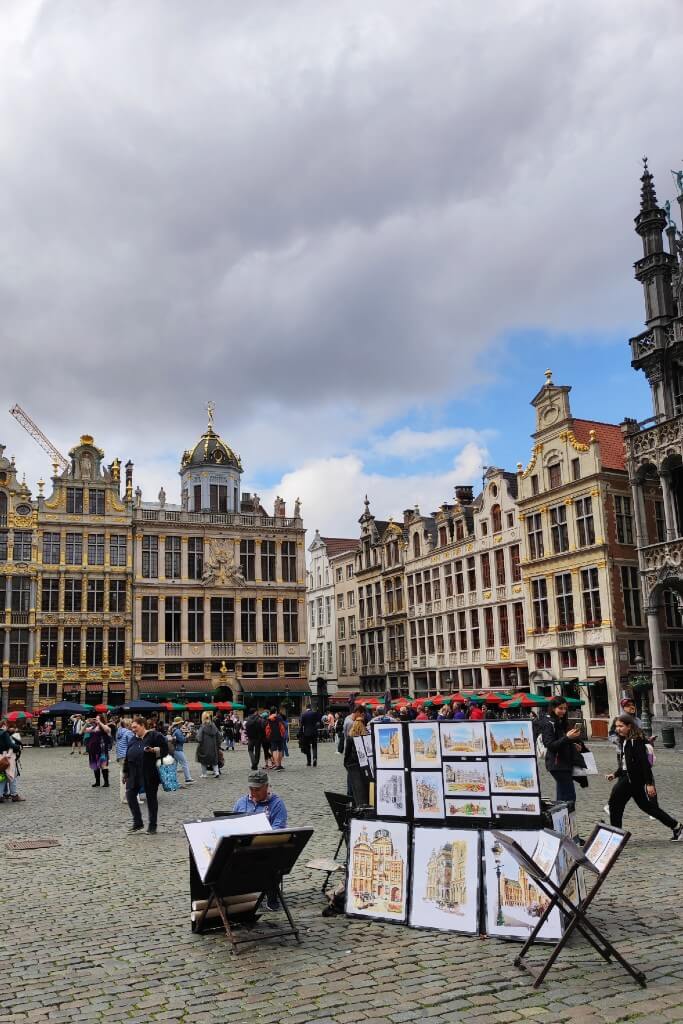
1. Backpacking Europe itinerary: The Ultimate Major Cities Route
London – Paris – Brussels – Amsterdam – Berlin – Prague – Krakow – Budapest – Zagreb
This backpacking itinerary covers the main hot spots you need to see in Europe.
Depending on how much time you have, you can do the entire route which will take you over a month, or choose a leg that you find interesting.
Make sure to hit some of the winter in Europe bucket list items, such as:
- stroll the Christmas Markets in Prague,
- discover nightlife in Krakow ,
- swim in Thermal Baths in Budapest,
- take a day trip from Zagreb to magical Plitvice lakes.
Best time to do this route: You can do this route any time during the winter. All cities on the itinerary are lively any time of the year. To visit Christmas Markets, plan your visit in December.
If you don’t have enough time for the Ultimate major cities route, here are some ideas to create a shorter backpacking European capitals itinerary!

2. 2-week Classic Route For First-timers
London – Paris- Brussels
This route covers the three most visited European capitals.
I suggest you spend 4-5 days in each city for a 2-week trip or shorten your stay for a shorter vacation.
- London, UK – a lively capital with an endless list of things to do!
- Paris, France – the city of love and lights, the most visited city in the world!
- Brussels, Belgium – you can see the main tourist attractions in Brussels in two days , but you will want to spend at least one day on a day trip from Brussels to Bruges or Ghent .
All of these cities are well-connected by fast train! Check the price and schedule on Trainline . It is my favorite app for booking international train tickets.
You can do this itinerary as a circle route if you want to fly home from London. Eurostar train takes you from Brussels to London in just 2 hours!
Best time to do this route: You can do this route any time during the winter. All cities on the itinerary are lively any time of the year. These cities are also some of the Best Places For New Year’s in Europe !
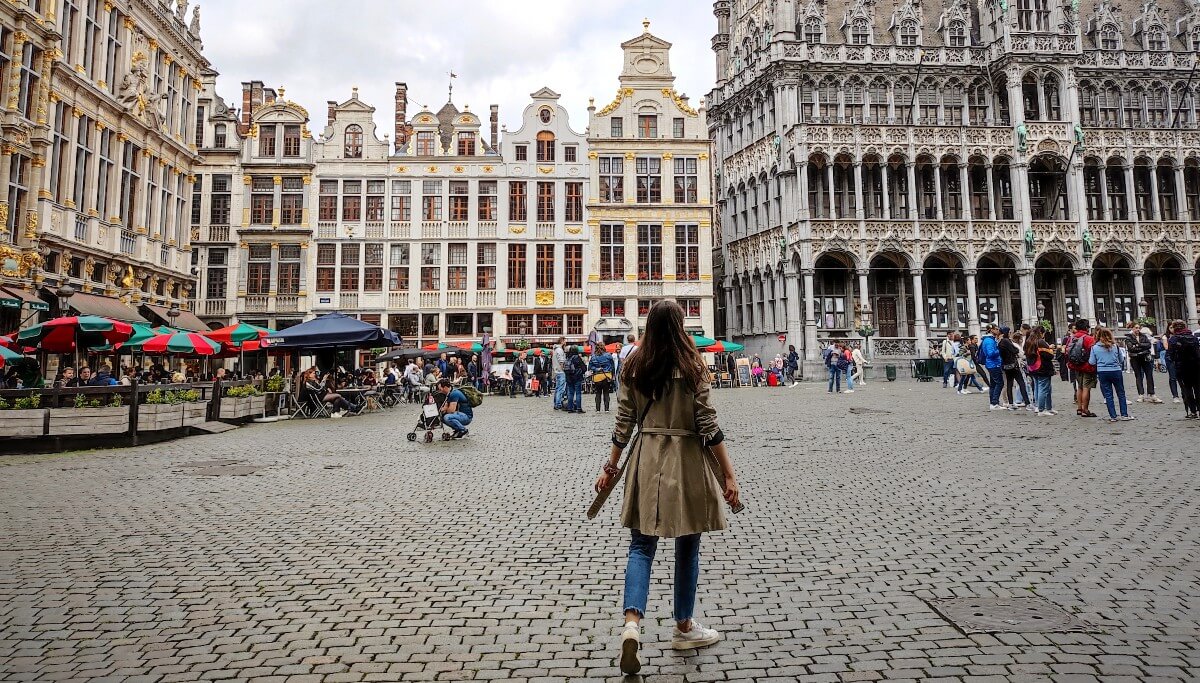
3. Benelux Backpacking Route
Amsterdam – Brussels – Luxembourg
This route covers the Benelux region and is perfect for a 1-week backpacking trip. You can spend 2-3 days in each city or add a couple of day trips to discover more of the region.
Winter weather in the Benelux area is damp and cloudy, so remember to pack an umbrella!
- Amsterdam, The Netherlands – bike along the canals in Amsterdam and enjoy the lively nightlife.
- Brussels, Belgium – visit the capital of Europe and the charming towns of Ghent and Bruges.
- Luxembourg – discover this rarely visited country and stroll the fortified medieval old town perched on cliffs
Best time to do this route: You can do this route any time during the winter. To visit Christmas Markets, plan your visit in December. The Amsterdam Light Festival takes place from December through January.
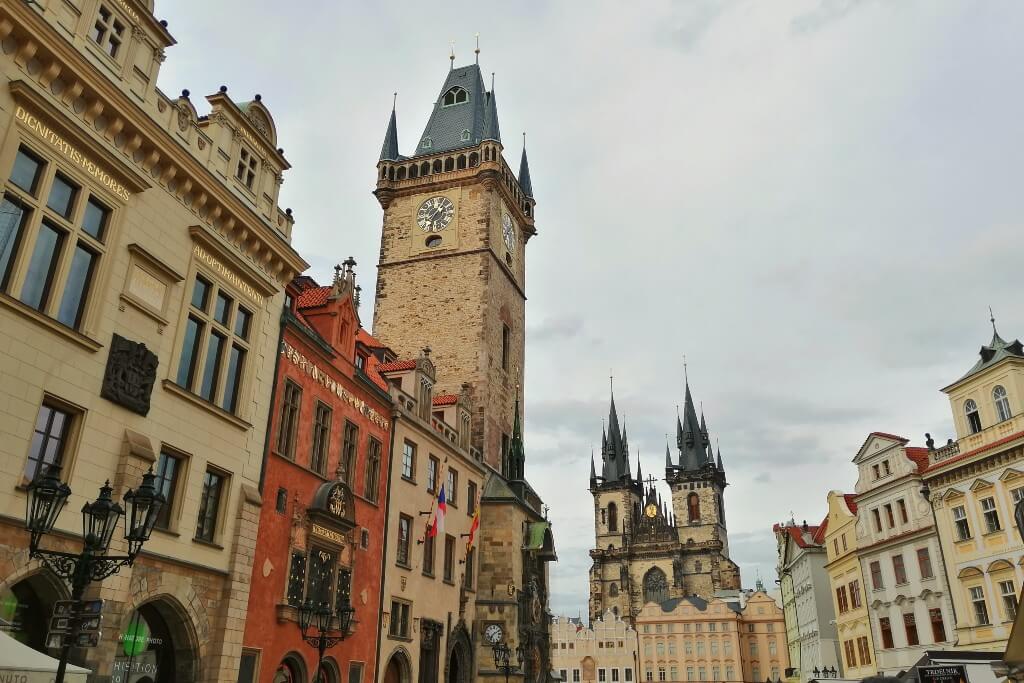
4. Central European Capitals Backpacking Route
Berlin – Prague – Vienna – Bratislava – Budapest
This winter Europe trip itinerary takes you through 5 stunning, lively Central European capitals where you will forget about cold winter weather.
Cities on this itinerary are some of the best places to backpack in Europe in winter !
- Berlin, Germany – experience the big city vibes of the vibrant German capital
- Prague, Czech Republic – stroll the cobblestone street of the Old City and admire the world’s most extensive castle premises
- Vienna, Austria – home to one of the best Christmas Markets in Europe and a cultural hub of central Europe
- Bratislava, Slovakia – this underrated European capital will charm you with its picturesque historic center and hilltop castle overlooking the city
- Budapest, Hungary – discover the backpackers’ hotspot and one of the most popular backpacking destinations in Europe
Best time to do this route: You can do this route any time during the winter. However, Prague, Vienna, and Budapest are quite stunning during the December Christmas Market Season.
Backpacking Europe Routes: Along The Coast
This route takes you through Southern Europe, along the Mediterranean and Adriatic coasts.
It might sound rather unusual to suggest a beach route in the middle of winter, but the South is a perfect area to escape the cold European winter.
This Coastal route features some of the most popular European summer destinations but offers a different perspective focusing on cultural aspects instead of the beaches.

5. Mediterranean Coast in winter Backpacking Route
Madrid – Porto – Lisabon – Algarve – Sevilla – Granada – Valencia – Barcelona – Marseille – Nice – Milan – Venice – Florence – Rome
This itinerary takes you through the most popular European summer destinations with a winter twist. It covers Portugal, Spain, the South of France and Italy.
Start your trip in the Spanish capital of Madrid, the biggest hub for international flights on the Mediterranean Coast and a vibrant city with plenty of things to do.
Following my 7 days in Portugal itinerary , make your way to Porto and then down to southern Portugal to backpack the Algarve with its majestic cliffs and breathtaking views.
Winter is the perfect time for backpacking Andalusia , as the weather is pleasant, and you enjoy the UNESCO World Heritage sites like Alhambra without crowds.
Barcelona is well-known for its nightlife, football, and art. It is a popular spot on every backpacking route!
Make your way to the South of France, starting with Marseille.
- You could take a train or a bus from Barcelona, but this route is the most comfortable if you take a quick flight. Check flights on Skyscanner – if you are lucky, you might get one for under 20€!
Finally, this route takes you through some of the best places to visit in Italy, ending in Rome.
Best time to do this route: You can do this route throughout winter. Cities on this itinerary are not well-known for their Christmas atmosphere. Therefore, I suggest visiting in January or February.

6. Winter Sun in Europe Backpacking Itinerary
Madrid – Porto – Lisabon – Algarve – Sevilla – Cordoba – Granada – Malaga
This itinerary takes you through the Iberian peninsula, covering Portugal and Andalusia.
It combines my backpacking Portugal itinerary, backpacking Algarve itinerary and backpacking Andalusia itinerary .

7. Adriatic Coast In Winter Backpacking Route
Venice – Pula – Rijeka – Zadar – Dubrovnik – Kotor – Durmitor – Tirana – Athens
This is not a classic European winter itinerary, as you’ll visit destinations that are usually summer hot spots.
The route starts from Venice and takes you down the Croatian coast to Montenegro and Albania.
You can easily travel this route from Venice to Albania by bus. There are no trains worth mentioning on the Croatian coast or in Montenegro.
Usually, when backpacking Europe, I just take Flixbus, but in this region, it is worth checking out Omio.
- Omio compares all bus operators in the area as there are many local bus operators, and Flixbus is not that common the further you go down south.
You could figure out a road route from Albania to Greece, but the flight is the most effective option. Especially since flights are very cheap in winter! You can find a cheap flight to Athens from Tirana to continue backpacking Greece or return home.
- Venice, Italy – visit Venice before they impose entry fees! Stroll the cobblestone streets and admire the charming canals.
- Pula, Croatia – if you are interested in Roman culture, you will love Pula. Discover all ancient monuments, including a majestic amphitheater (better than the one in Rome IMO), although you will not be able to fully enjoy Pula beaches .
- Rijeka, Croatia – Rijeka was the European capital of culture in 2020. Spend one day in Rijeka before making your way down to Dalmatia
- Zadar, Croatia – spend a day in Zadar and take a day trip from Zadar to one of the national parks in the area – Kornati islands or Krka waterfalls.
- Dubrovnik, Croatia – Dubrovnik doesn’t need an introduction – the most well-known city in Croatia.
- Kotor, Montenegro – stroll the cobblestone streets of Old Town and climb the Kotor fortress for a breathtaking view of the Kotor Bay.
- Durmitor, Montenegro – If you are a nature lover, you might want to rent a car and explore the Montenegro mountains. Just remember to check the weather conditions!
- Tirana, Albania – Albania is a true hidden gem. Stunning nature, friendly locals, and affordable prices!
- Athens, Greece – a must-visit destination for everybody interested in history, ancient monuments, and culture
Unusual winter backpacking routes in Europe
These itineraries stray off the beaten path and allow you to discover some of the less visited European destinations.

8. Backpacking Eastern Europe Winter Itinerary
Budapest – Cluj Napoca – Brasov – Bucharest – Sofia – Skopje – Niš – Belgrade
It doesn’t get more budget-friendly than backpacking Eastern Europe in the winter.
This circle route itinerary takes you from the backpacking hot spot Budapest to the least visited part of Europe.
- Budapest, Hungary – start this itinerary in a popular backpacker’s spot before going off the beaten path.
- Cluj Napoca, Romania -this busy university town is a perfect stop on your way through Romania.
- Brasov, Romania – admire mysterious Transylvania castles and hilltop forts.
- Bucharest, Romania – visit Romania’s capital and learn more about the communist past of the country
- Sofia, Bulgaria – discover the capital of Bulgaria.
- Skopje, Northern Macedonia – explore the mountainous country of Macedonia and its stunning Ohrid Lake.
- Niš, Serbia – make a quick stop in Ništ to visit Niš Fortress and their macabre skull tower
- Belgrade, Serbia – find out why Belgrade is known as the city that never sleeps (Ye, it’s the nightlife)
Apart from Hungary, the countries on this itinerary are not part of Schengen, so they are ideal for everybody who wants to reset their 90-day Schengen visa!
You can easily adapt this itinerary to 3 months by staying longer in each country or adding Bosnia and Herzegovina, Croatia or Albania to the itinerary!
Best time to do this route: This route is a fantastic alternative to the classic Christmas Market route in December, as you can learn more about the Christmas traditions in Orthodox Christian countries!
9. Backpacking Baltic countries winter itinerary
Estonia – Latvia – Lithuania
This short 1-week to 10-day itinerary takes you through Baltic countries. They are usually unjustifiably overlooked by backpackers.
Unlike their northern neighbors, Baltic countries are budget-friendly destinations. They are a great place to enjoy the fairytale-like winter scenery.
Backpacking Baltic countries in winter can be a great experience if you can handle the cold. If you are not a snow lover, maybe it’s better if you wait for spring before visiting the Baltics.
Start your trip from Tallinn in the North and make your way down to Vilnius.
- Tallinn, Estonia – stroll the cobblestone streets of the walled Old Town.
- Riga, Latvia – discover colorful Latvia’s capital.
- Vilnius, Lithuania – wander the picturesque Old Town and learn more about the region’s history in a KGB Museum.
The best time to do this route: If you are backpacking in Baltic countries in winter, that means you are a true winter lover. December is a lovely time to visit if you are interested in Christmas Markets.
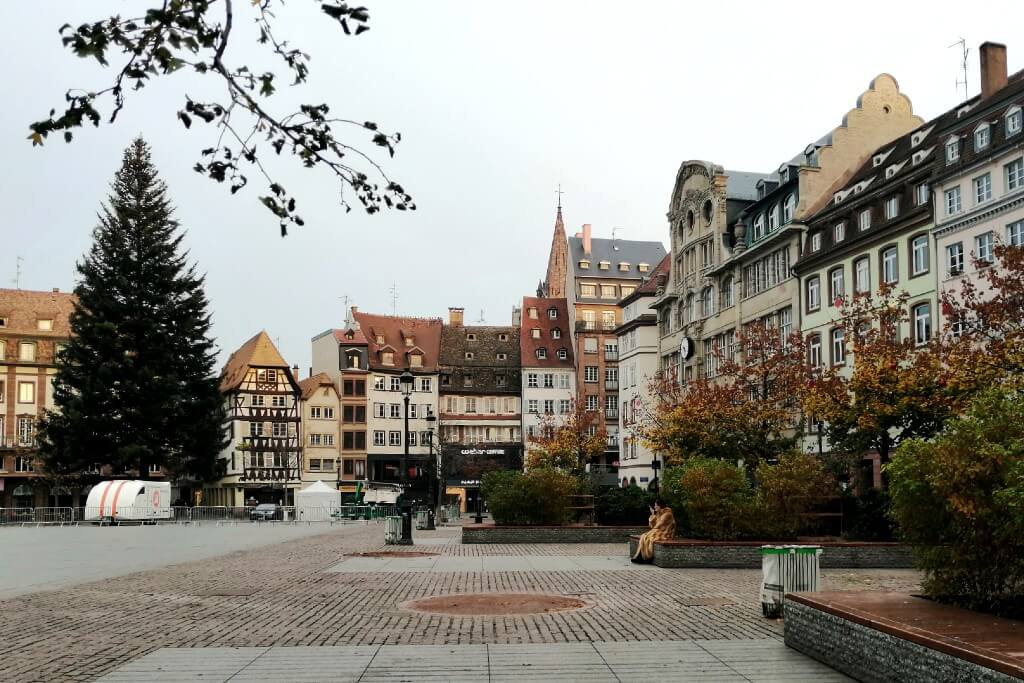
10. Backpacking European Christmas Markets
I have an entire post on the Ultimate European Christmas Market itinerary for Christmas lovers, but I wanted to touch on it here as well since it is a classic Europe December itinerary.
Christmas Markets are a quintessential European winter experience. If you’re backpacking Europe in December or late November, visiting some of the Markets is required!
Even if you don’t want to focus your entire trip around the holiday atmosphere, you can easily incorporate visiting Christmas Markets into any of these routes.
When you’re planning your backpacking Europe winter itinerary, these are the best Christmas Markets in Europe to add to your itinerary:
- Strasbourg, France – the self-proclaimed Capital of Christmas
- Nurenberg, Germany – one of the oldest and most famous Christmas Markets
- Prague, Czech Republic – fairytale-like Christmas Market
- Vienna, Austria – the most visited Christmas Market in Europe
- Budapest, Hungary – the best Christmas Market for 2022
- Zagreb, Croatia – the best Christmas Market 3 years in a row.
However, practically every European city has a Christmas Market nowadays, so don’t worry if these cities don’t fit into your itinerary!
Best time to do this route: European Christmas Markets are open from mid-November to the end of December.
Where To Start Backpacking In Europe?
Where to start European backpacking trip will depend on where you are coming from and what is your itinerary.
If you are already in Europe, you can probably take an affordable flight to most European destinations.
- I use Skyscanner to find cheap flights. Their “everywhere” destination option is a lifesaver and perfect for spontaneous trips!
If you are taking a cross-continental flight, the cheapest airports to fly to are usually London, Frankfurt, Madrid, Paris, or Amsterdam.
The itineraries I assembled take that into account!
How To Get Around Europe?
Public transport is all you need to move around Europe.
I created these itineraries with the presumption you use buses or trains, as that is how I backpacked through Europe.
Nonetheless, sometimes it is just easier to fly. Yes, as strange as it sounds, sometimes it might be cheaper to book a quick flight than to take a 6-hour bus.
- I use Skyscanner to plan out my itinerary when flying. Their “everywhere” destination option is a lifesaver for finding the cheapest place to fly to!
That is especially true for traveling through Europe in winter and off-season generally. If you can afford to fly during the week, you can find flights from one to the other side of Europe for under 20€!
To keep the flights cheap, you need to pack light – you need to learn how to pack for a week in a Ryanair free bag !
You don’t need a car for any of the listed itineraries!
However, if you want to rent a car, with Discover Cars, you can compare fares from all available rental companies to choose the best option!
How Many Days Is Enough For Europe?
The answer to this question depends solely on how much time you have!
Most people have 1 to 2 weeks of holiday in winter. That is enough time to visit a few cities in several countries or explore one destination in-depth.
When traveling to a new destination, I aim to spend at least a week in a country.
That said, if you want to see all the different regions in Europe, you will need to backpack Europe for at least 3 months!
You will find 1-week to 1-month-long routes among the itineraries listed in this article.
If you have more time for backpacking Europe this winter, you can easily combine two or more itineraries.
Likewise, if you only have one week available, you can customize the itineraries to fit your schedule!
When Is The Cheapest Time To Go To Europe?
Generally, the cheapest time to backpack Europe is November to March. Late autumn and winter are the low seasons in Europe.
Accommodation, transportation, and activities are significantly cheaper than if you were backpacking Europe in summer .
December, especially around Christmas and New Year, is an exception to this rule!
It’s a high season for Christmas Market destinations.
How Much Does Backpacking Europe In Winter Costs?
On average, you should budget 50€ per day for backpacking Europe on a budget!
That includes staying in hostel dorm rooms, cooking some of your meals, and taking Flixbus to move around.
Europe is a small continent but with notable differences in travel costs – your backpacking Europe budget will be very different depending on where you go.
If your Europe in winter itinerary goes through Western Europe it will be significantly more expensive than Eastern Europe. Your daily budget will double for London compared to Budapest.
Is Backpacking Europe Safe?
Generally, Europe is a safe destination for solo female travelers. However, it depends on where you go.
It is easy to travel around Europe. You can get accurate travel information online and book your transportation, accommodation, and tickets.
English is widely spoken in most countries, so there is no language barrier.

Summary: Backpacking Europe Winter Itinerary
And that’s it! You have 10 customizable routes for your winter Europe itinerary.
Pick one of these Europe backpacking routes and visit must-visit destinations like Paris and London or go off the beaten track and discover the Balkans.
Enjoy the Christmas atmosphere or soak up the winter sun in the Mediterranean! Winter is the perfect time to discover Europe on a budget and avoid the crowds.
Now that you have all the routes for backpacking Europe this winter, what is the first destination on your European winter bucket list ?
Natali is the founder of She's Abroad Again. She is a solo female travel and backpacking expert who traveled to more than 30 country over 3 continents, mostly solo and on a budget! She is a lawyer turned travel blogger as she traded long office hours in Croatia for a digital nomad life and currenly calls France her home.
Similar Posts

Backpacking Europe in Winter: Is it a Good Idea? (2024)
Are you considering a backpacking trip through Europe in the winter? Backpacking Europe in winter is actually a fantastic idea! European summer aesthetic has a cult following on social media….

The Ultimate European Christmas Market Itinerary (2024)
Are you trying to figure out the best route for your European Christmas Market itinerary? You came to the right place! I absolutely love the Christmas market season in Europe,…

9 Best Countries To Backpack In Europe In 2024
Are you wondering what are the best countries to backpack in Europe? I’ve got you covered! If you’re not ready to commit to a 3-month backpacking Europe trip or want…
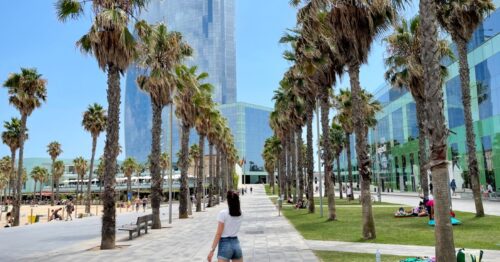
15 Pros And Cons Of Backpacking Europe In Summer (2024)
Are you wondering about the pros and cons of backpacking Europe in summer? You came to the right place! I’ve backpacked in most European countries during summer, so I know…
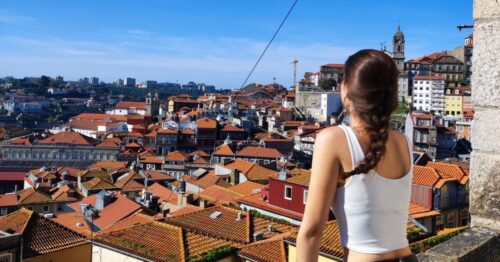
How Much Does Backpacking Europe Cost In 2024?
Are you wondering how much does backpacking Europe cost? You came to the right place! Backpacking across Europe is an epic experience, and doing it on a budget is an…
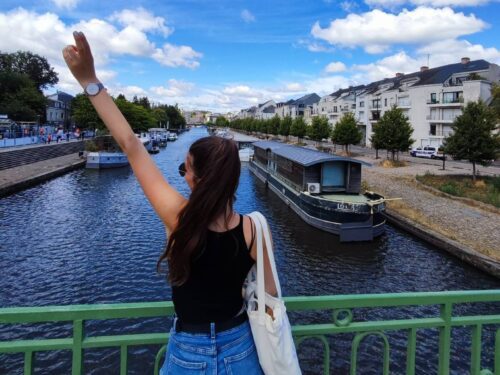
Is Europe Expensive To Visit? Europe Trip Cost In 2024
If you’re planning your next trip and wondering if is Europe expensive to visit, you have come to the right place! Europe is a beautiful continent, with so many diverse…
Leave a Reply Cancel reply
Your email address will not be published. Required fields are marked *
Save my name, email, and website in this browser for the next time I comment.

40+ Super Helpful Travel Tips for Backpacking Europe
Last Updated: January 26, 2023
*FYI - this post may contain affiliate links, which means we earn a commission at no extra cost to you if you purchase from them. Also, as an Amazon Associate I earn from qualifying purchases. Check out our Privacy Policy and Disclosure. for more info.
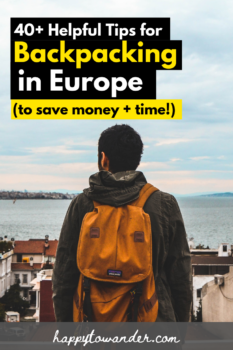
Backpacking Europe for 1.5 months when I was 20 changed a lot of things for me.
There was of course my plumper waistline and newfound devotion to Belgian beer, but more importantly, I had some pretty big epiphanies about traveling and money.
Now, don’t get me wrong – traveling is a huge expense, but for the longest time, I always saw it as impossibly expensive.
I never knew that there were alternatives to hotels, I didn’t know it was possible to cook for yourself, and genuinely, I thought airplanes were the only way you could travel places.
Thankfully, I picked up a lot of tips and tricks along the way, and much wiser for it. I may no longer be a backpacker, but I did it for years and picked up plenty of golden tips for backpacking in Europe along the way.
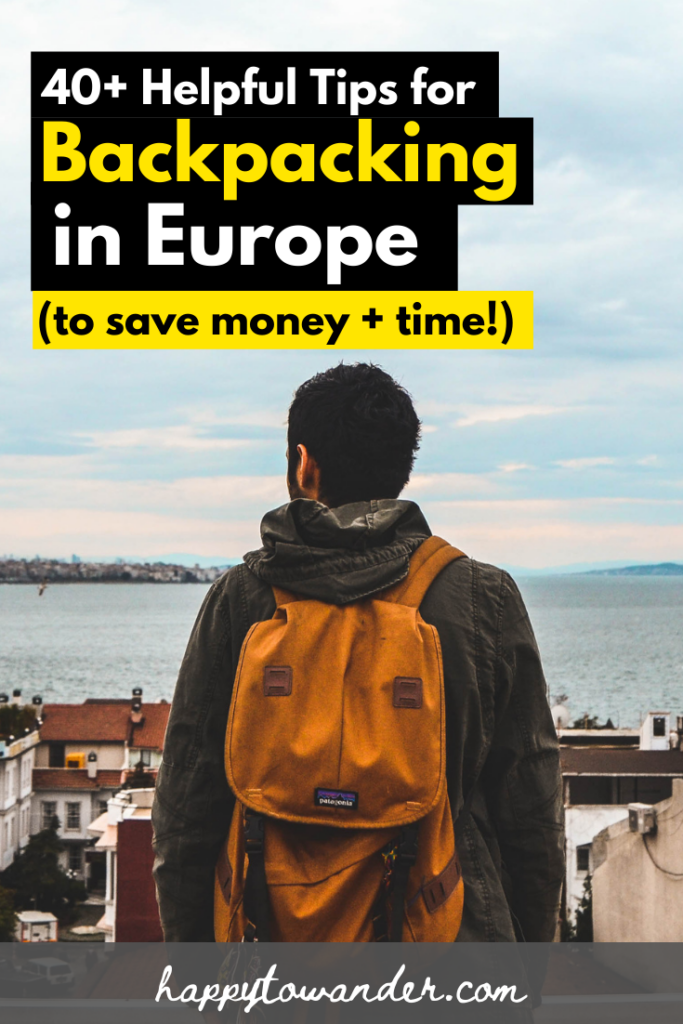
Save this list of Europe backpacking tips for later!
You’ll be very glad you did.
So, here are some of my best travel tips for backpacking Europe, divided into helpful categories.
In this post, I’ll be sharing:
- My top travel planning tips for backpacking Europe
- How to save money on food and drink when backpacking in Europe
- How to save money on attractions when backpacking in Europe
- Safety tips for backpacking Europe
- Packing tips for backpacking Europe
- Other random handy tips for backpacking Europe
I hope you find it all helpful!
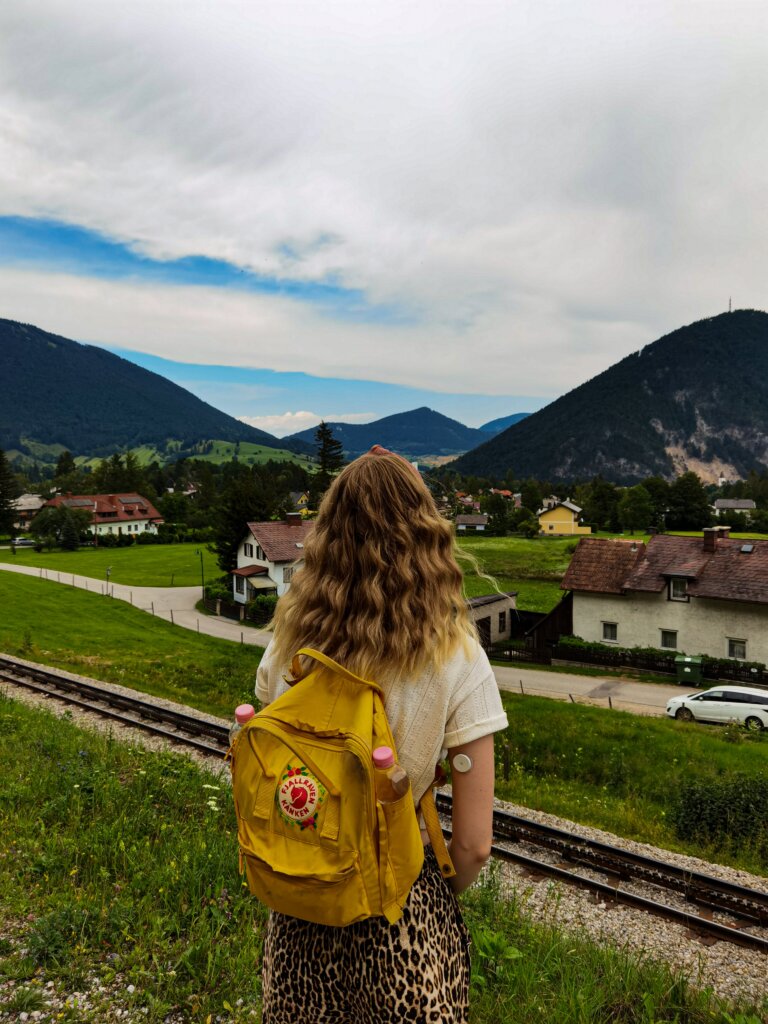
Travel Planning Tips for Backpacking Europe
First, let’s tackle Europe backpacking tips to keep in mind before you leave – i.e. when you are planning your trip with tips for planning your itinerary, flights, and accommodation.
Understand the Schengen Zone and how long you’re allowed to stay in Europe
There’s a common misconception among first-time backpackers that all of Europe has open borders, or that you can stay as long as you want.
This is not the case.
The area in Europe with free movement is known as the Schengen Zone, and includes:
- Czech Republic
- Liechtenstein
- Netherlands
- Switzerland
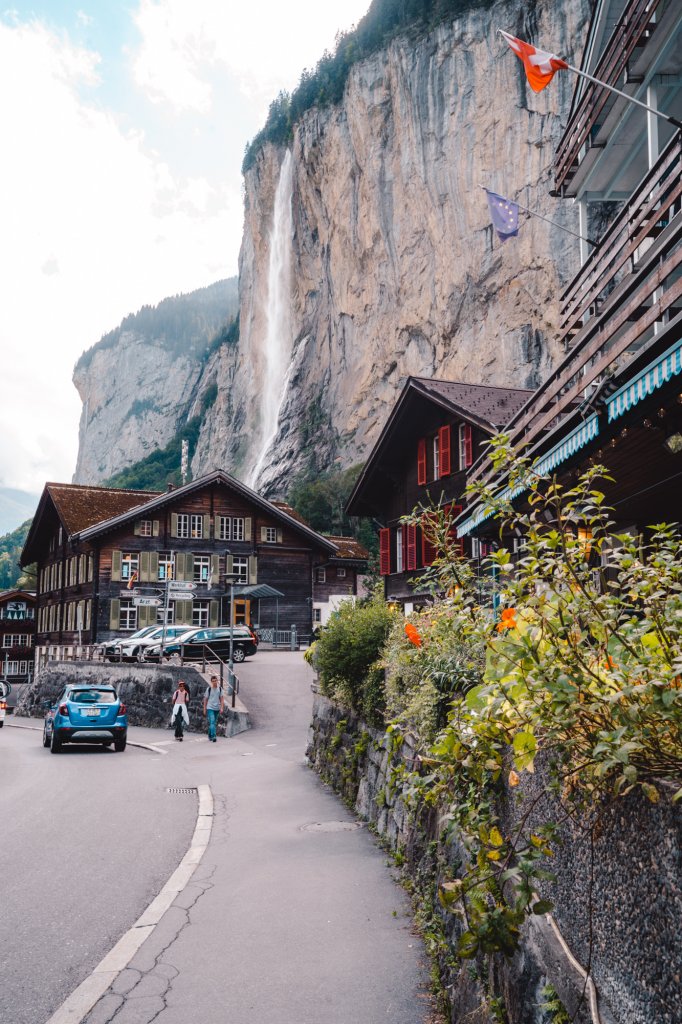
How long you can stay depends on the kind of visa you have, but for Canadians and Americans for example, your allowance is 90 days within a 180 day period.
This is kind of confusing, but the simplest way to look at it is: if, by the time you fly home, you have not stayed more than 90 days in the Schengen Zone in the past 180 days, you’re good. Anything more, and you risk getting fined or (at worst) blacklisted from the Schengen Zone.
So how long can you really backpack Europe for without getting a longer-term visa?
Honestly, if you’re crafty with your Schengen Zone allowances, you can even stay indefinitely so long as you alternate between Schengen and non-Schengen Zone countries.
Non-Schengen Zone countries include:
- Bosnia & Herzegovina
- North Macedonia
- United Kingdom
So, to stay long term, you could do 90 days in the Schengen Zone, hop around non-Schengen countries (e.g. maybe a Balkans tour!) for 90 days and then re-enter the Schengen Zone.
NOTE: It is very important to note that your Schengen allowance doesn’t reset once you leave. Again, the best way to look at it is to see whether in the past 180 days, you’ve spent more than 90 days in the Schengen Zone.

Don’t try to cover the entire continent in one trip
Unless you’re devoting months or years to your Europe backpacking trip, there’s no way you can cover the entire continent in one go. I’ve been living here for 5+ years and even I haven’t been everywhere!
Remember, Europe isn’t going anywhere, and you can always come back.
The last thing you want to do is over-extend yourself on your itinerary by moving huge distances constantly. This will also be more expensive…
So, the smartest way to plan your itinerary is to choose a few destinations close-ish together.

Plan your trip for shoulder or off-season
I know that “summer in Europe” sounds super romantic, but trust me… if you’re visiting the most touristy cities in Europe, it’s actually not romantic at all. In fact, it’s pretty sweaty, crowded, and gross.
One of the top Europe backpacking tips I can give you is to plan your trip away from peak-periods. Usually peak periods would be Easter, summer, and Christmas break. During these times, crowds and prices skyrocket.
In my opinion, May and September are some of the best months to travel around Europe. Spring in Europe is also amazing. During these times, the weather tends to be pleasant, but you’ll be shielded from peak season crowds.
NOTE: Peak season depends on your destination, so be sure to research busy periods for wherever you’e going.
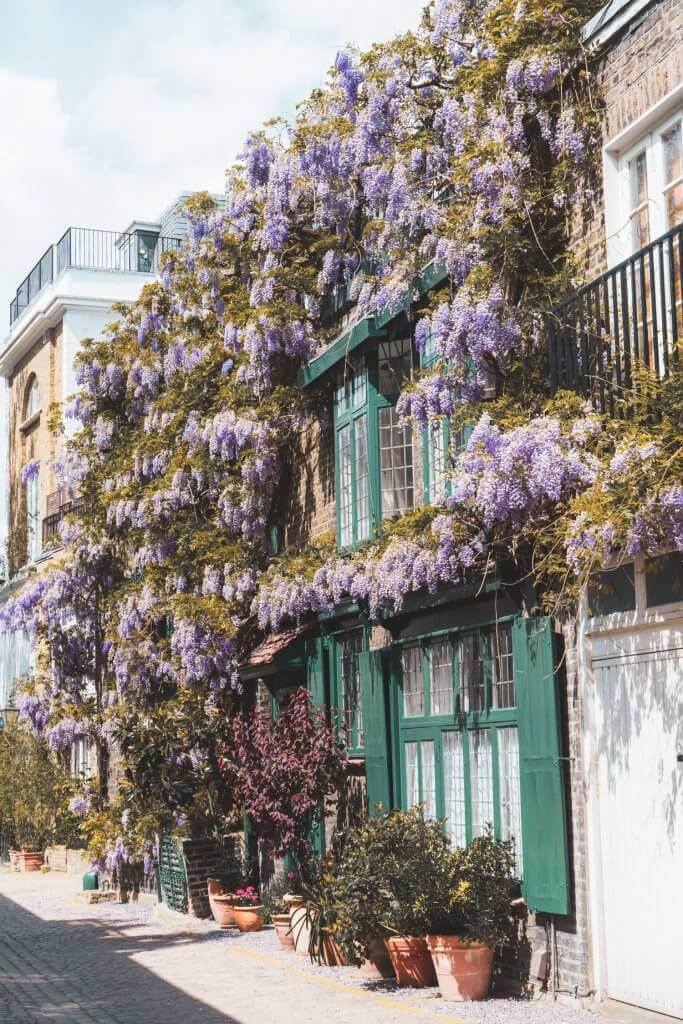
Alternate between busy and chill destinations
One of the biggest mistakes I made during my first backpacking trip in Europe was I crammed SO many huge cities into my itinerary, one after another.
When your itinerary is nothing but European heavyweights like Paris, London, Amsterdam, Rome and Florence… yikes, you’ll be sightseeing your eyeballs off daily with zero chance for breaks.
So, here’s a very important Europe backpacking tip when planning your itinerary: try to space out the “big” cities with chiller destinations, maybe nature or beach breaks so you have time to rest up before sightseeing like the Energizer bunny once more.

Understand where your money goes further
Most first-time backpackers to Europe will go to the most famous cities: Paris, London, Amsterdam, etc.
I’m guilty of this too! My itinerary was full of all the names I knew best.
BUT, of course, these cities are very expensive. If you’re truly backpacking Europe on a budget, it would be in your best interest to mix up your destinations so you’re not visiting only wallet-draining places.
Here are some areas to avoid/minimize time in if you’re backpacking Europe on a budget:
- Switzerland – So beautiful, but so, so expensive
- Nordic countries like Norway, Sweden, and Finland
- Iceland – Again, stunning, but very pricey
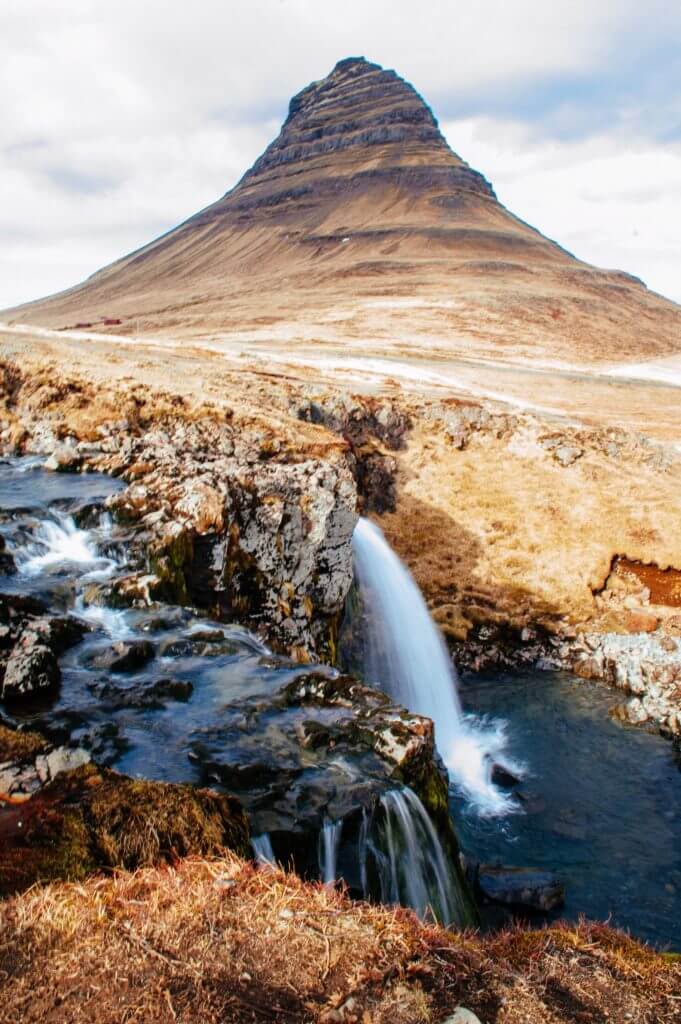
Alternatively, here are some cheaper travel destinations in Europe to consider:
- The Balkan countries, like Bulgaria , Albania, Serbia, Montenegro, North Macedonia & Kosovo
- The Baltic countries, like Lithuania ( Vilnius is amazing!), Estonia, and Latvia
Of course, it’s possible to do any destination on a budget, but it all depends on how willing you are to subsist off bread and salami 😉
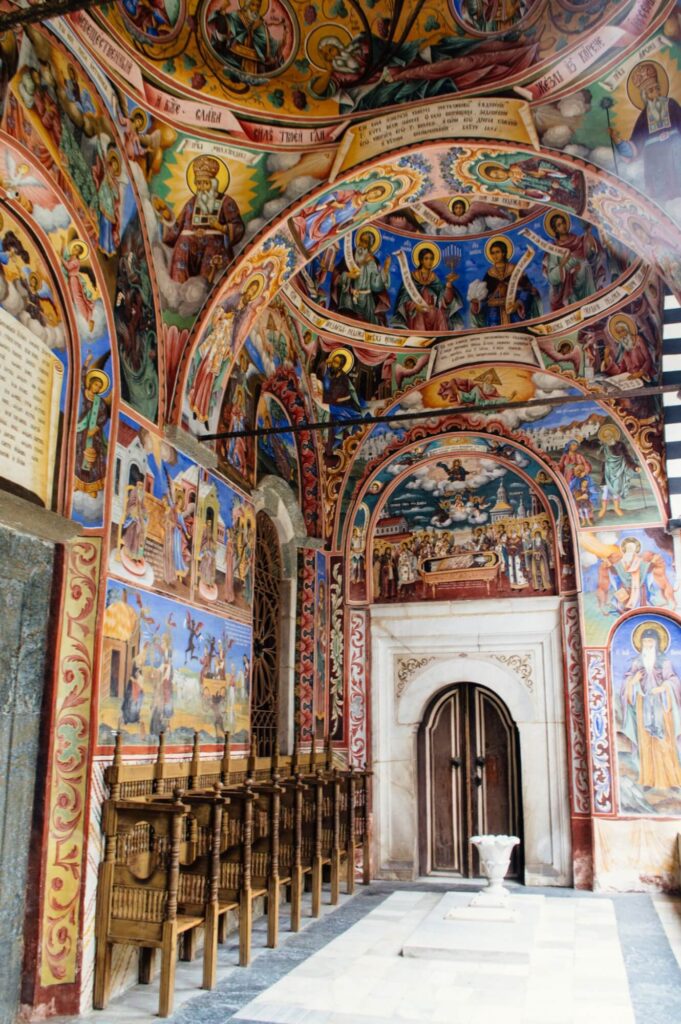
Know the tricks to get cheap airfare TO Europe
Hands down, if you’re coming from overseas, your biggest expense when backpacking Europe is going to be your flight there (and back, assuming the croissants don’t trap you here for good).
I’ve already written a full guide to how to find cheap flights to Europe , so read that for more tips.
But, here are some general tips to help you score cheap flights to Europe for your backpacking trip:
- Use Google Flights to compare costs flying into different airports
- Use Skyscanner to find the cheapest possible option from your departure destination
- Use deal sites like Secret Flying to pounce on cheap flights/error fares when they pop up
- Use a VPN like Private Internet Access to search flights from different locations, to see if you can find a better deal
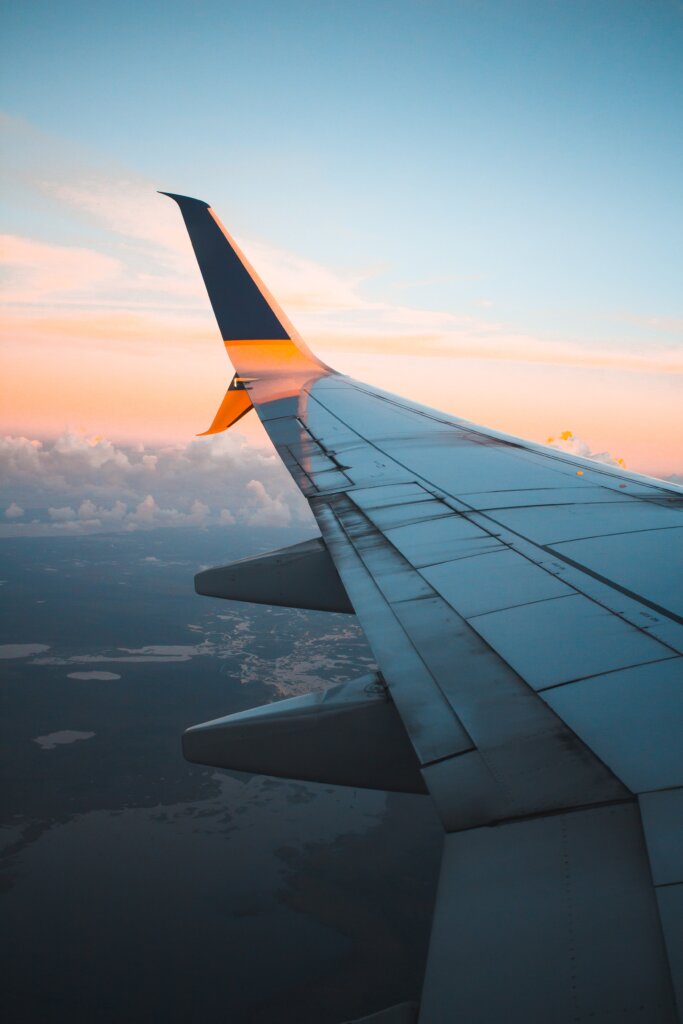
Ensure you have proof of onward travel
“Proof of onward travel” is a very important consideration that many first-time backpackers forget about.
Long story short, it’s proof that you’re leaving your destination before your visa or allowance expires. This is usually in the form of a return ticket, or a ticket elsewhere to prove that you’ll be leaving at some point and not staying for longer than your documents allow.
I know that one of the most intriguing perks of backpacking Europe is the spontaneity, but it’s VERY important that you can prove to the airline employees (or passport control officers) that you intend to leave before you overstay your visa allowance.
I was once almost barred from boarding a flight to Germany because my return flight was after the 90 day Schengen Zone allowance, and I didn’t have proof I would be leaving the Schengen Zone before the 90 days was over. I intended to spend some time out of the Schengen Zone to ensure I never overstayed, but they demanded proof… so yes, they do check!
Want to learn more? I have a full article if you want to read more about proof of onward travel and my experience lawyer-ing myself out of that (very awkward) situation.
Get to know the cheapest ways to travel around Europe
After you get to Europe, transportation options are abundant (and for the most part) very affordable.
I’ve written a full guide on the cheapest ways to travel around Europe , but here are some of the options available to you:
- Budget airlines like easyJet , RyanAir or WizzAir : No frills and loaded with hidden costs, but potentially very cheap if you’re smart and read the fine print
- Buses like Flixbus : Perfect for shorter trips & if time is not an issue as punctuality with buses can be a total crapshoot
- Rail passes like Eurail : Ideal if you want flexibility and the nice bucket list experience of traversing some of Europe’s most scenic train routes , but usually not the cheapest
- Renting a car: Often not cheapest by a long stretch (here is my guide on how much a rental car in Europe costs ), but possibly worth it if you’re travelling with many companions and plan to visit places where public transport isn’t well served
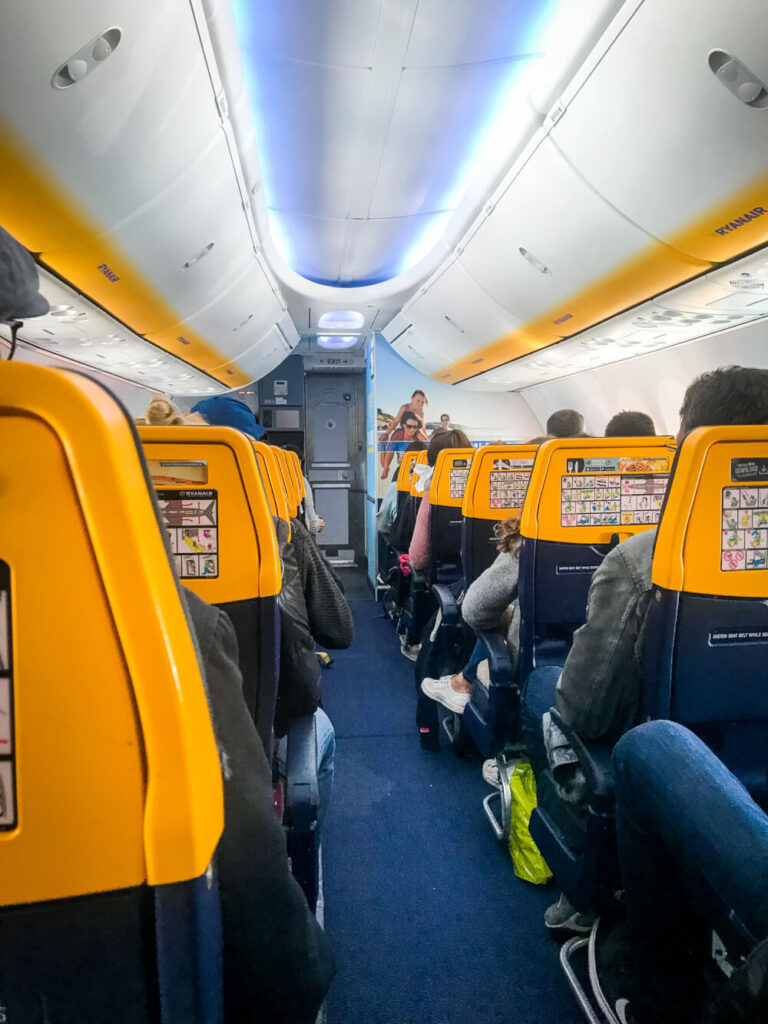
Learn how to book the perfect hostel every time
By and large, the most common accommodation option for backpackers are hostels.
If you are new to hostels, I have written this guide in how to book the perfect hostel every time, with tips on how to gauge safety and other things based on reviews.
My favourite tools for booking hostels is Hostelworld – they let you sort by price and rating very easily, and often you can just pay a small deposit rather than the entire payment upfront.
A few things to consider when booking hostels for backpacking Europe:
- Age limits : If you want hostels for the social aspect of meeting people your age, definitely book a hostel with an age restriction, otherwise you’ll often get school groups with teenagers or older travelers not as interested in mingling
- Free breakfast/activities: When you’re backpacking, every penny counts!
- Cheap hotels masquerading as hostels: Often you’ll find budget hotels that label themselves as hostels which aren’t geared as much to the social aspect of things… so be sure to read reviews to get a feel for the the social aspect of things.
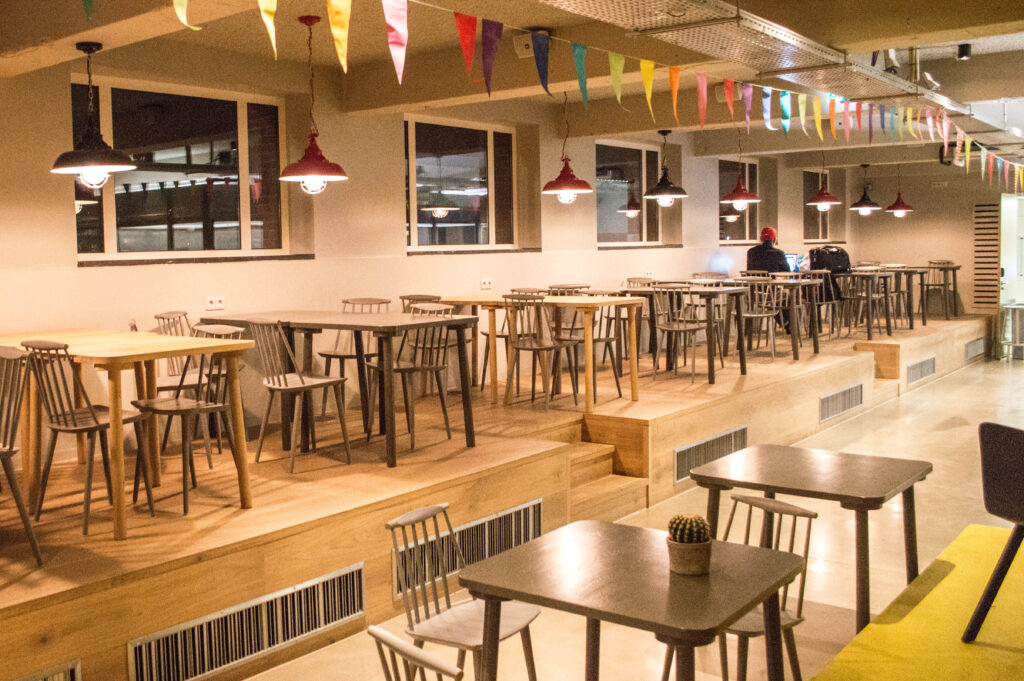
Book hostels with freebies
Another excellent way to save money while backpacking Europe is of course to exclusively book hostels that offer freebies like breakfast or tours.
A lot of hotels and guesthouses will provide free meals to their guests, and I’m not just talking about breakfast!
I stayed at a hostel in Prague that had a free dinner every night, and at others that offered free dinners a few times per week. Not only is this cost-effective, it’s a great way to meet new people too.
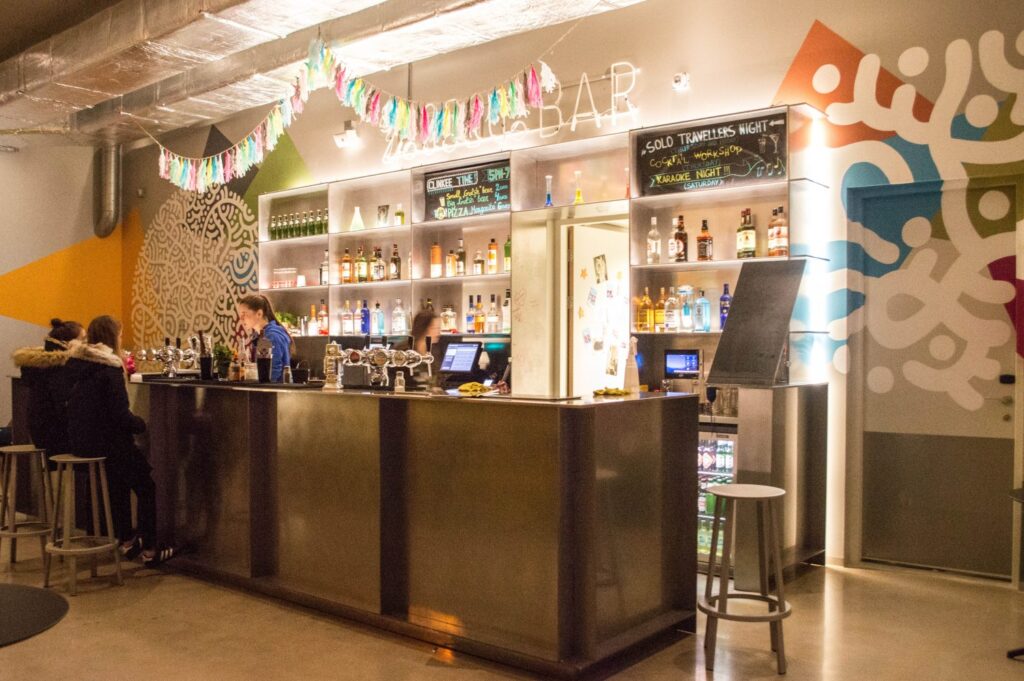
Try booking hostels and accommodation directly for more free perks
This is a secret tip that most travel bloggers leave out because it can cost them affiliate commissions, but since you’re here, I want to give you the best of the best tips for backpacking Europe.
99% of the time, when you book a hostel or even hotel directly (i.e. not through a booking platform like Booking.com or Hostelworld ), they will give you some kind of discount or additional perk. This is because properties would much rather you book directly with them, since those platforms often take a sizeable cut of the booking.
In the past, I’ve seen tons of perks for booking hostels directly, including…
- Ordinary discounts (often 10% off)
- Free towels
- Free activities
- Free bedsheets (in properties where they cost extra)
So, if you really want the best deal possible when you’re booking hostels and backpacking Europe, then make sure you book with properties directly (i.e. on their website or by the phone).
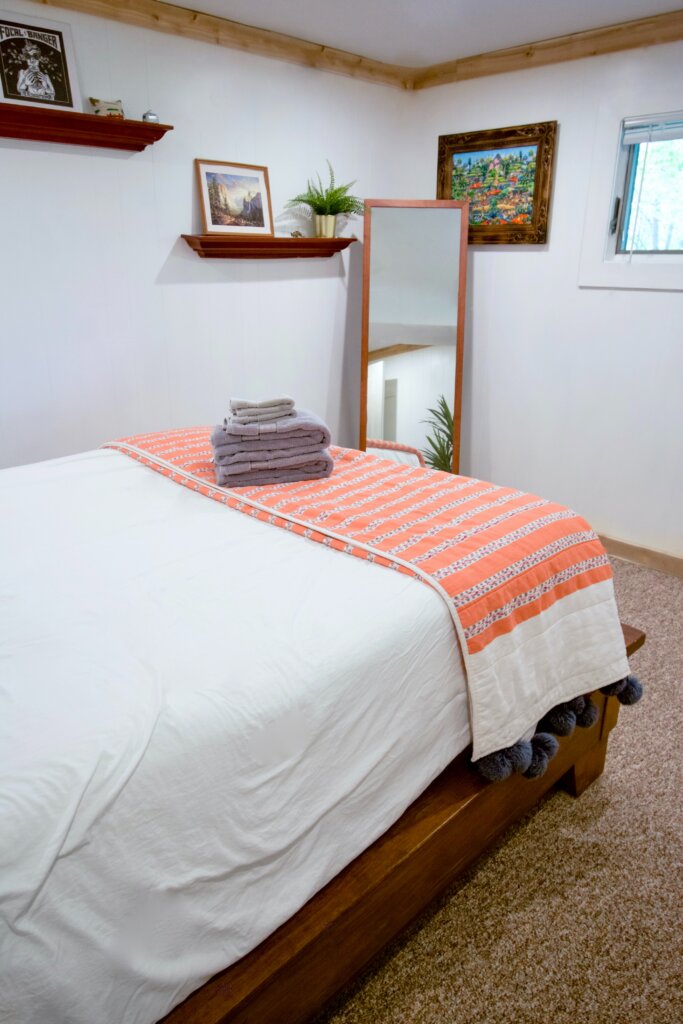
Learn more about AirBNB
If hostels aren’t your thing, or if you’re travelling with a group and want you own privacy, then AirBNB is probably the next cheapest option.
Besides being cheaper per night than hotels, there are also many other money saving perks that come with an apartment rental such as being able to cook for yourself, laundry facilities, etc.
If you’ve never stayed at an AirBNB before, don’t fret. If you take the necessary safety precautions, they are a very safe and pleasant way to travel.
Check out my guide to AirBNB for First Timers for more information.

Get an official student card
Here’s a very important Europe backpacking tip for students. If you’re a student, you should know a) that caffeine dependency WILL catch up with you at some point and b) there are a LOT of amazing discounts available to you when you’re backpacking Europe.
Most major attractions will offer student rates/discounts, and often transportation will be cheaper too if you can prove you’re a student.
Unfortunately, just having your student card from your own school isn’t enough, because these can be easily forged and every school’s looks different. An ISIC Card however is an internationally recognized student ID that costs about twenty bucks, but will save you at least that much in discounts.
I’d recommend getting one for sure if you plan to backpack Europe for several weeks/months because the discounts it can unlock are amazing.
NOTE: Your regular Student ID can sometimes work, but places are getting increasingly strict and asking for ISIC cards specifically.
Download all the right apps before you go
There are a variety of amazing apps that can help you a lot when you’re backpacking Europe.
I’ve previously outlined a full list of the best travel apps for Europe , so read that guide for a comprehensive roundup.
But, here are some must-have apps that are all free:
- Omio: A search app that lets you quickly compare/book transport options from Point A to Point B, including buses, trains, and flights
- Google Translate: Absolutely essential for countries where you don’t speak the language. Best of all, you can save languages for offline use so you don’t use data
- Google Maps: A must-have for getting around easily and saving places you want to visit
- TripIt: An organization app that collates all your hostel/transport bookings, attraction tickets, etc. all in one place by scanning your email inbox for confirmations
- PIA: My VPN of choice – great for having on your computer & phone so you can browse securely on public WiFi networks & also spoof your geographical location to access restricted sites, or country-specific streaming offerings.

How to Save Money on Food and Drink When Backpacking in Europe
Next to hard costs like accommodation and transport, food & drink is probably the biggest expense for any backpacking budget. So, here are some Europe backpacking tips for saving money on food and drink!
PS: You might want to read this article on ways to save money for travel as well.
Remember grocery stores are your best friend
I have a geeky obsession with visiting grocery stores everywhere I go – it’s such a fun insight into different products/foods, plus they can help you save a LOT of money.
Snacks, drinks, water and pretty much everything will be cheaper at a grocery store vs. kiosks, takeaway joints or or convenience shops.
So, if you feel like you need fuel throughout the day, buy some goodies in advance so that you don’t make hungry and impulsive spending decisions.

Master the art of the picnic
Restaurants are expensive, no doubt, which is why you’ll quickly learn when backpacking Europe that picnics are your best friend.
Grabbing grocery store meals or street food is comically cheaper than eating out, so haul your goodies to a park and enjoy. This is also an excellent opportunity to people watch and soak in the unique atmosphere of wherever you are.
To be even more cost-effective, consider splitting picnic costs with a friend. A hunk of cheese and a huge baguette can feed more people than you think!
Or, really, when in Europe, bakery treats are always a good idea:

Book accommodation with a kitchen
This is one of the most important Europe backpacking tips I wish someone had told me. If you’re really looking to cut your food costs, you can always prepare your own meals. It might seem obvious, but newbie-me never even registered this as an option.
Many hostels and guesthouses will provide kitchens (and often free food shelves left by other guests).
I didn’t do much of this because a) I could barely crack an egg and b) cooking is time-consuming, but this is an amazing way to save.
Of course, don’t forget to splurge a little and treat yourself to local foods too! There are ways to do that cheaply to, for example…
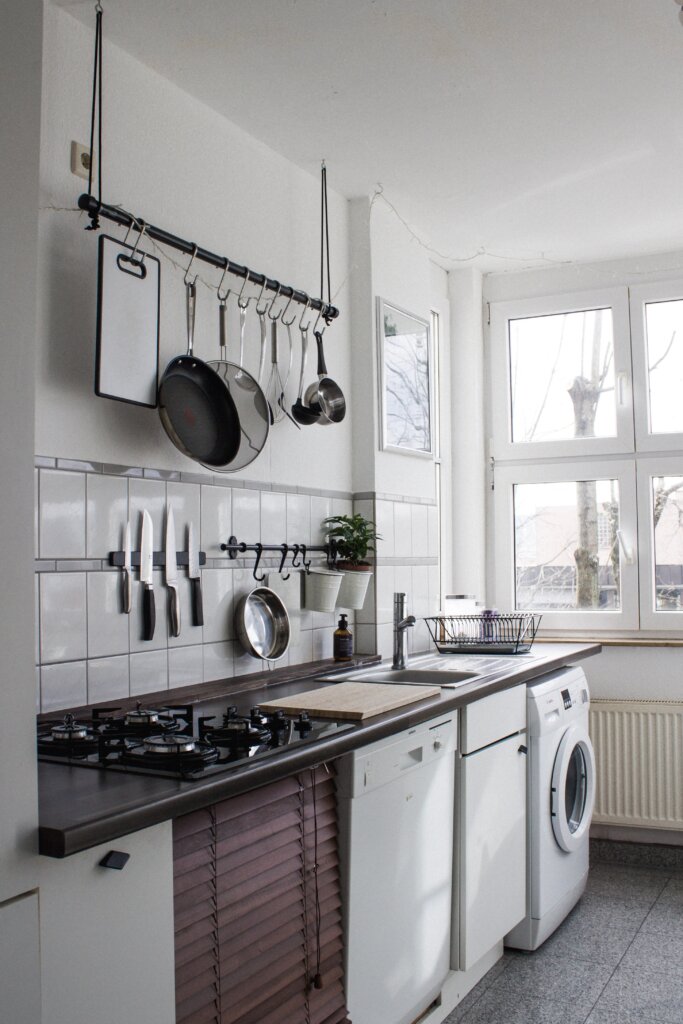
Take advantage of lunch deals to sample local cuisine
I love food, and sampling local specialties is one of my top priorities whenever I travel.
But, dining out can quickly eat away at your budget.
The best backpacking hack I can give you for eating well while also saving money is to eat like a king during lunch hours, and then having a more basic dinner. Oftentimes, restaurants in Europe will offer set lunch menus where their dishes are a fraction of the cost than at dinner.
This is a great way to eat well without breaking the bank.
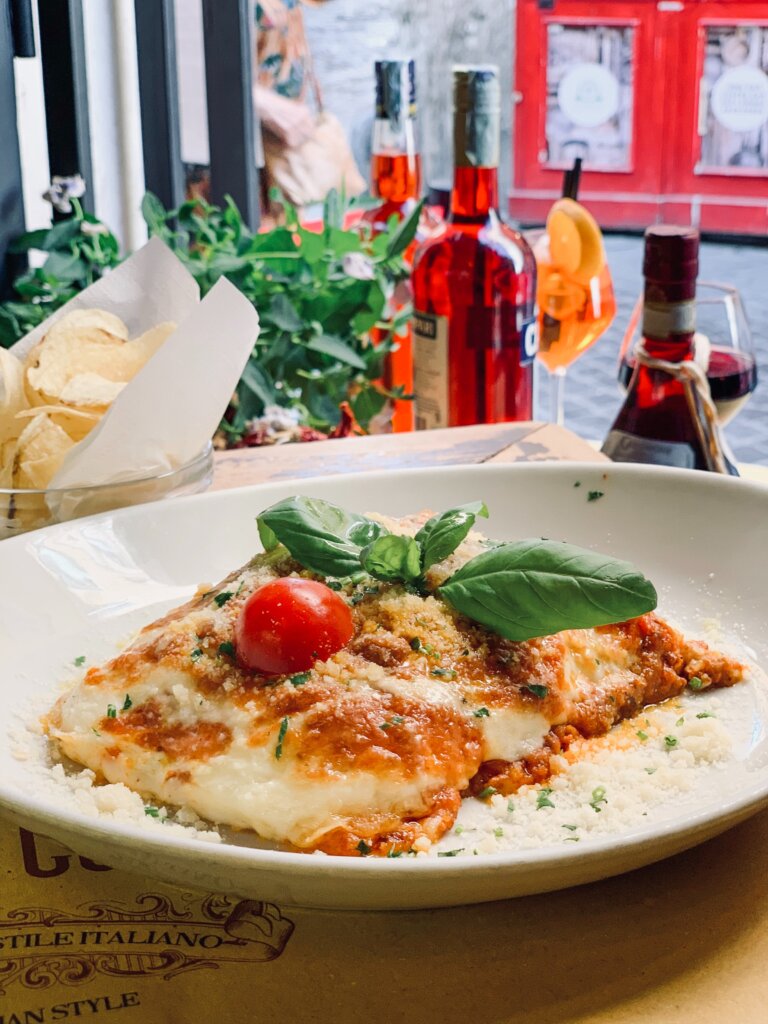
Dine far away from tourist attractions
And another Europe backpacking tip for dining out is to steer clear of food establishments close to big tourist destinations.
It shouldn’t be a surprise that prices around these areas are grossly inflated, and the quality is often questionable as well since they’re catering to tourists who will likely never come back.
Often, even moving 2-3 blocks away from main tourist attractions can make a huge difference cost and quality wise.
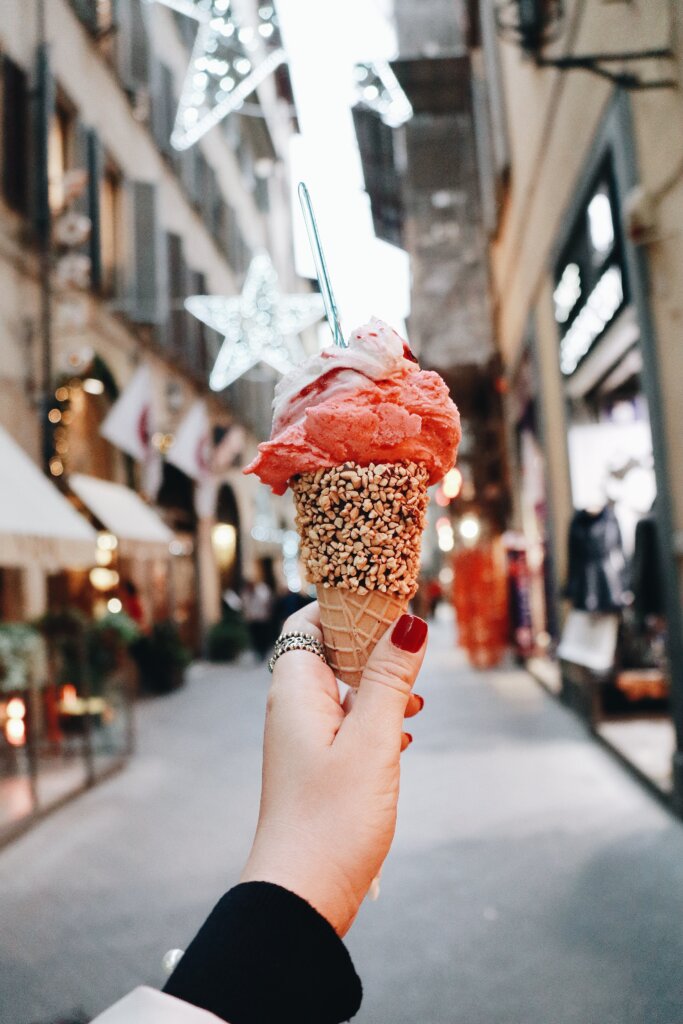
Skip bars in favour of boozy picnics
I love going to bars, but going “out out” can add up.
Fortunately, alcohol is usually very cheap at grocery stores across Europe, and having boozy picnics is a popular past time. Yup – drinking in public is fairly lax in most European countries, so why not partake in the name of culture?
One of my most valued memories from Paris was drinking cheap wine along the Seine as the sun came down… surrounded by both locals and tourists all doing the same. Get creative – you don’t need bars to be social.
After all, why pay 5 euros for a glass of wine in a restaurant when you can get a full litre for 1 euro? (Okay sure the quality is questionable, but you can literally find wine that cheap here!)
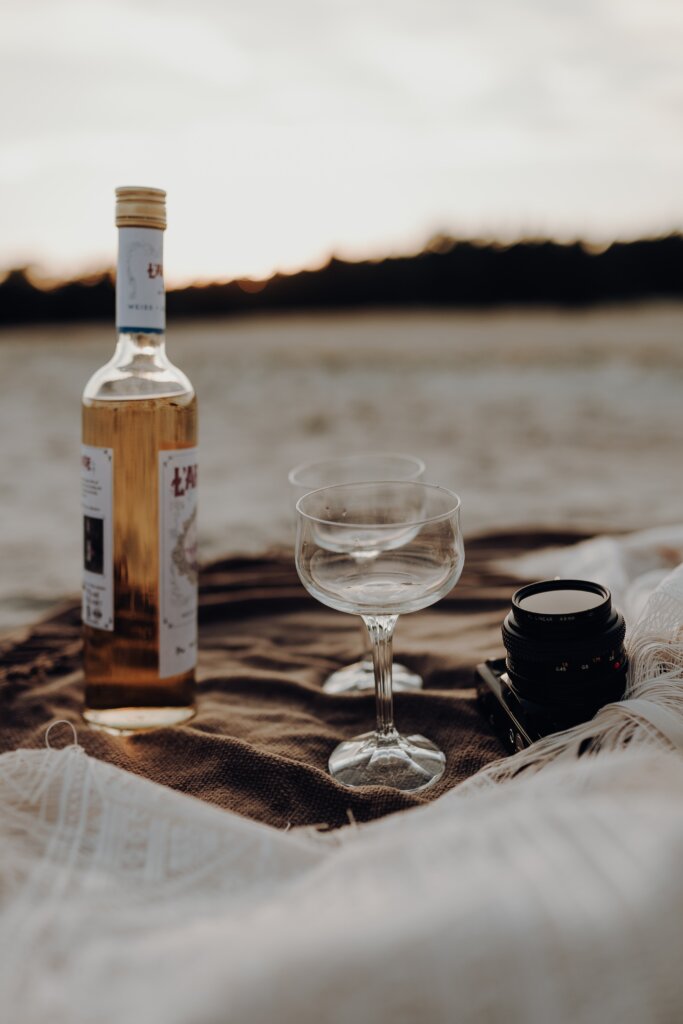
Get takeout for super cheap with Too Good to Go
One of my favourite (little-known) Europe travel apps is called Too Good to Go.
They service many major European cities, and basically, it’s a free app that restaurants use to sell their leftover food at the end of the day (sometimes at lunch too).
This helps minimize food waste, and means you can pick up an entire take out meal for less than 5 euros.
Sure, you don’t get to choose what you get, but it’s an excellent way to eat cheap and help reduce waste at the same time.

How to Save Money on Attractions When Backpacking in Europe
Another huge cost when backpacking Europe is attractions and things to do. Here are some tips for saving money on this part of your trip.
Become a master of free attractions
Everywhere you go in Europe, there will be free things to do and see, ranging from free museums to beautiful architecture and street art.
So, be sure to research beforehand and see what free things there are to do at your destination.
NOTE: A lot of museums across Europe offer free admission on particular days of the month. Take advantage of these offers!
Or hey, if you want to be very extreme…
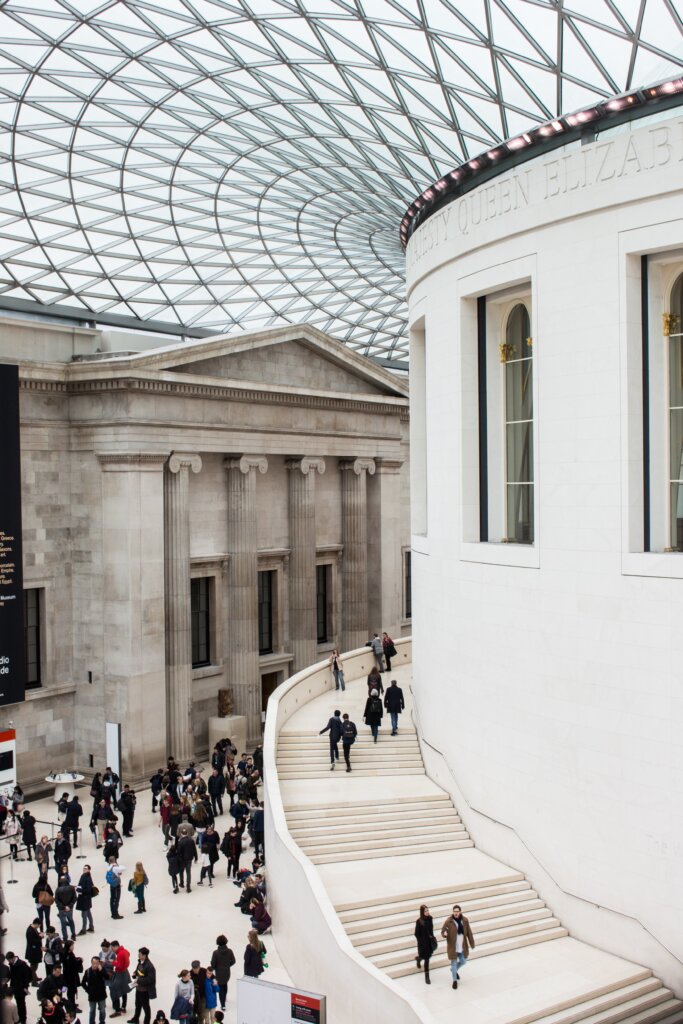
Plan your backpacking trip destinations around free days
As I mentioned, many museums and attractions in Europe have ‘free days’ where admission doesn’t cost anything!
If you have the luxury of flexibility, one of my top Europe backpacking tips is to consider researching these free days and planning your itinerary around them.
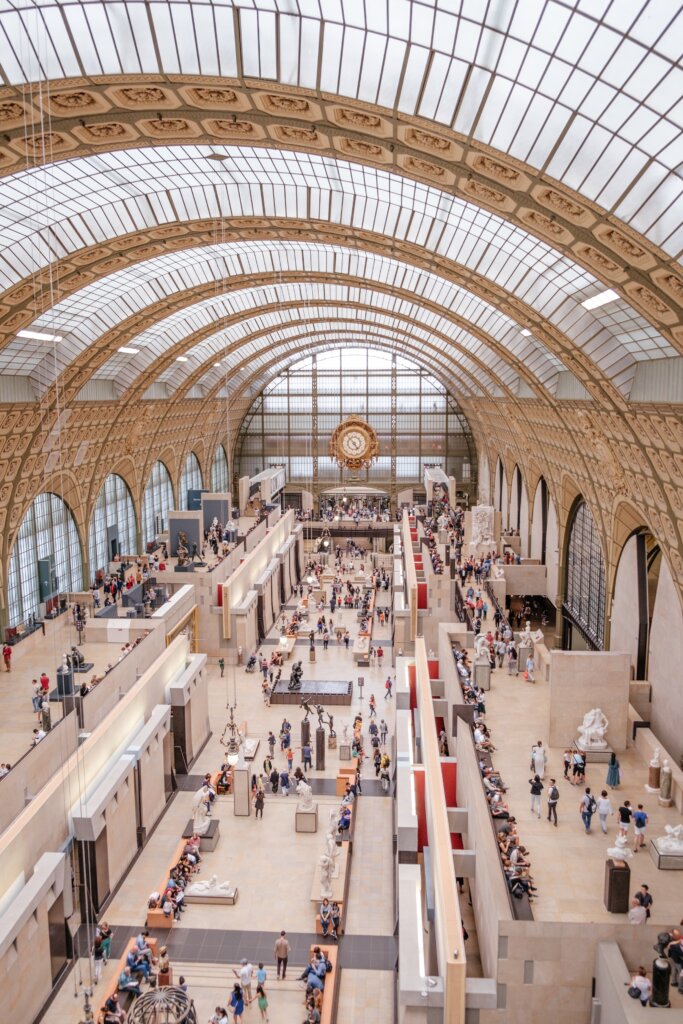
Learn how to seek out awesome, offbeat activities, rather than touristy ones
I love being a cheesy tourist. There’s zero shame in it…
I mean if you’re visiting Paris for the first time, no way you’re going to skip Paris’ main landmarks or Montmartre , you know?
That said, some of my favourite memories while backpacking have revolved around going a bit off the beaten path and doing weird attractions/spots that aren’t recommended in every single guidebook.
I have a lot of tricks for finding cool things to do around you no matter where you are, but here are some of the best ones:
- Search up your destination on Atlas Obscura , which has a lot of amazing offbeat ideas
- Find websites that cater to locals to discover events, new restaurant openings, etc.
- Use Google Translate to search in the local language (often you’ll find lots more content that way)

Always ask for a (student) or other kind of discount
Many attractions will offer special discounts for particular groups like residents of that country, students, military, etc.
In addition, discount codes and coupons are just a Google away.
If you know you’re hitting up a particular attraction, be sure to check the Internet quickly for deals, and ask your hostels & local tourist centres if they have coupon books.
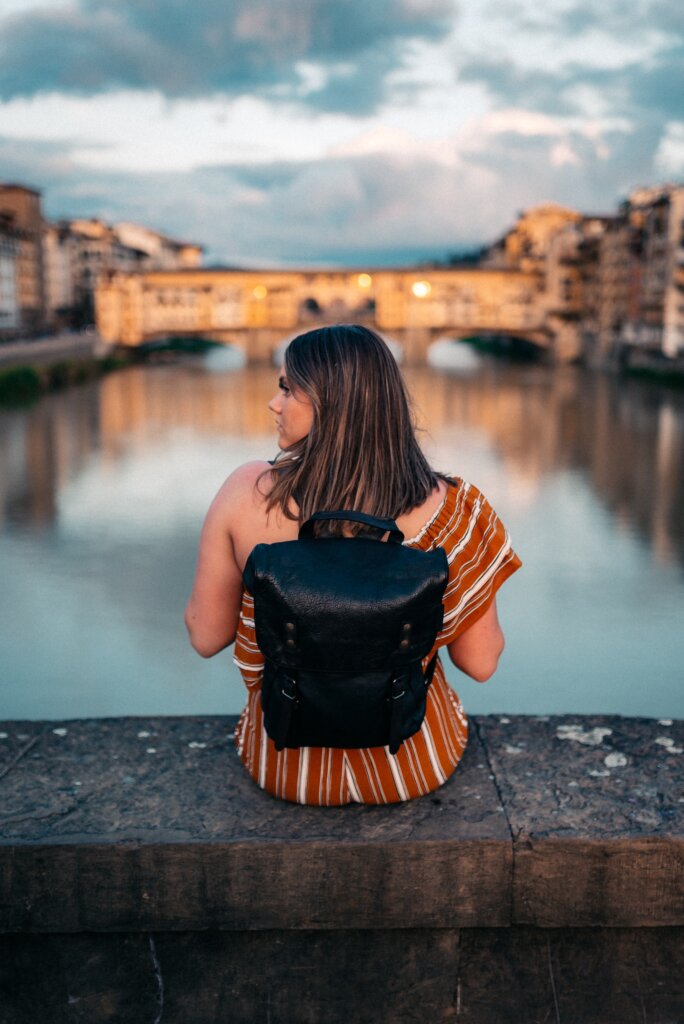
Get a City Card or pass
In some destinations, you’ll want to visit as many attractions and museums as possible.
This was me in Paris, London and Amsterdam. There’s just so many iconic must-do attractions that I knew I wanted to check as many as possible off my list!
In cases where you know you’ll be doing a LOT of sightseeing, my best tip is to get a City Card of some kind. Most major cities will have them (like the iAmsterdam Card for example), and they give you unlimited access to museums/attractions for a certain time period, for one set price.
Often these cards are expensive at first glance, but with proper planning and strategy, can save you literally hundreds of euros per city.
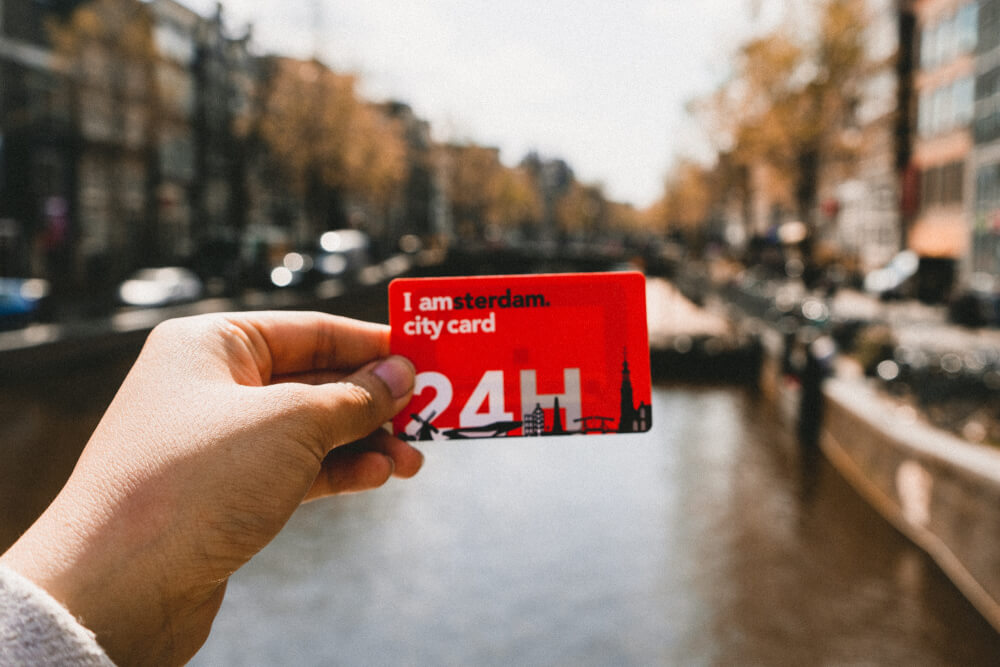
Safety Tips for Backpacking Europe
While we often think of backpacking as a fun and carefree experience, there are often very real safety issues and potential threats to be mindful of. The best way to safeguard yourself against threats is by familiarizing yourself with the risks involved, so here are some safety-related backpacking Europe tips you should keep in mind.
Look into theft-proof bags and accessories
There are a lot of amazing theft-proof travel accessories out there these days. The bad news is they’re not always the cheapest.
If you’re willing to splurge a bit on something high-quality and designed to thwart pickpockets, here are some options:
- PacSafe’s products are all made to be theft-proof, including their signature backpack here and day bag here
- Secret passport scarves like these are a great way to stash THE most important things in a subtle and discreet way
As a DIY solution of course, look into jackets or bags that have inner pockets – this extra layer of security can work wonders in terms of deterring pickpockets, and can be useful for everyday wear and not just travel!

Get familiar with common European pickpocket scams
Backpackers are easy targets in Europe – one quick glance at us and our oversized back destroyers, and it’s clear we’re not exactly “local”.
One of the best ways to protect yourself against pickpockets though is to know their usual tricks. Generally speaking, you should know that pickpockets tend to…
- Thrive on distraction – they will often work in groups or bump into you to get close
- Frequent busy places like train stations and crowded tourist areas
I’ve written a full guide on how to avoid pickpockets in Europe if you want to know all the common tricks/scams they use, but the best defense is always to avoid letting strangers get close to you, and to stash your valuables somewhere safe and difficult to reach.

Look up common taxi rates and scams before arriving
While I’m a firm believer that public transport is the way to go when you’re on a backpacker’s budget, sometimes you might need to take a taxi, whether it’s because you’re arriving late, running late, or just want to splurge a little.
While this varies depending on the country, taxis are often prime scam zones! I’ve personally been scammed by taxis in Prague and also in Sofia.
Particularly if you are leaving from busy areas like airports or train stations, some opportunistic drivers will take advantage. This is how I got charged 4x the usual fare in Sofia, mainly because I didn’t know better.
So, if you plan on taking a taxi, make sure you search up how much that route should generally cost, and also familiarize yourself with common scams.
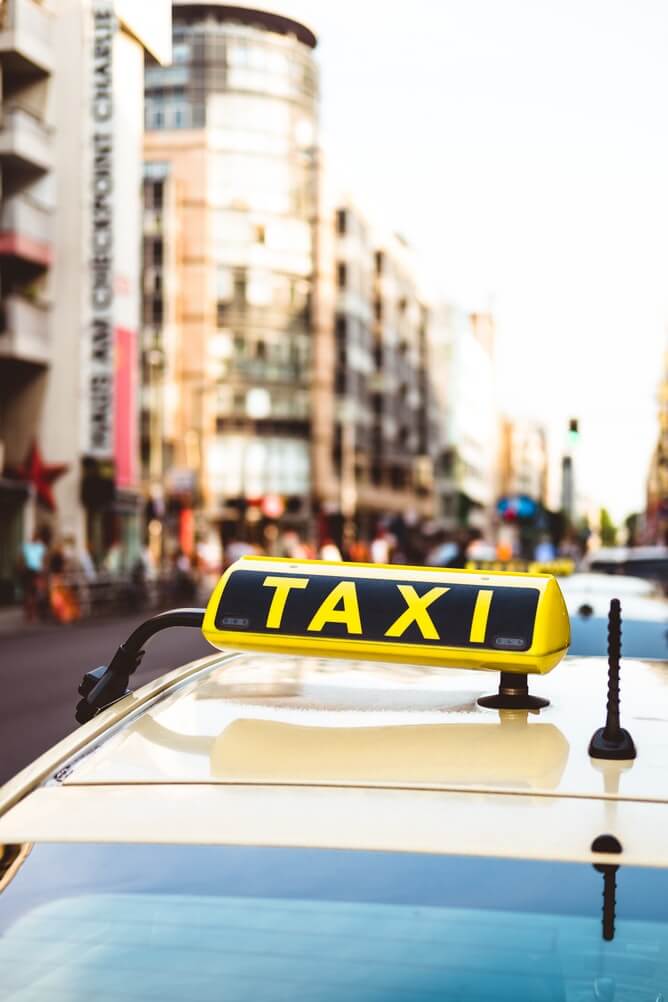
Get a good VPN
If you plan to be travelling longer-term, getting a reliable VPN is a must.
In short, VPNs (or Virtual Private Networks) mask your IP address and encrypt your data so that you can protect your identity online, browse anonymously, and even change the geographical location you’re browsing from.
This can be helpful in a lot of backpacking situations. In the past, I’ve used a VPN to…
- Access streaming for my favourite TV shows that weren’t available in the country I was travelling in
- Visit sites that were blocked in the country I was travelling in
- Access important sites (e.g. banking portals) that flagged my visit as suspicious because I was in a new country
- Securely browse the Internet with public WiFi knowing my data/identity was protected
As a real cheapskate (especially in my earlier travel days), I’ve tried every free VPN under the sun, and always found them to be unreliable or buggy.
After doing lots of research, I decided to splurge on Private Internet Access , which I’ve been using for the past few years, and I’ve been loving it. It’s super easy to use, very reliable, and actually (when you break it down) not expensive it all.
Subscribe via this link and you can get it for under 3 bucks a month.

Make a “worst case scenario” plan
I never expected to get robbed while backpacking Europe, but I did! In Rome, actually… right at the train station upon arriving.
I was really lucky I was with two friends who helped calm me down and got me the right phone numbers to call so I could cancel all my cards.
No matter how prepared you are, the worst case scenario (e.g. losing your passport, getting your phone stolen, getting all your money stolen, etc.) can happen. So, it’s best to prepare yourself and have a plan in place, including….
- A copy of your passport and IDs
- Important phone numbers (e.g. your bank and credit card company) to call
- A way to get emergency funds in case all your money gets stolen
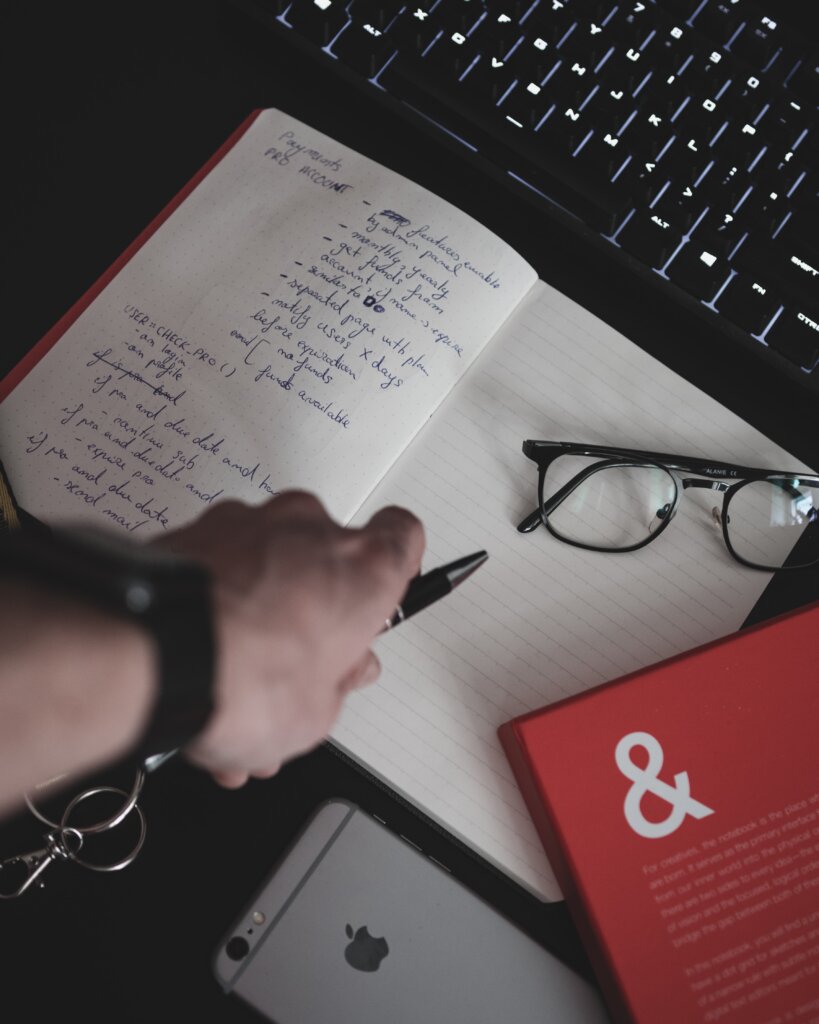
Packing Tips for Backpacking Europe
Hands down – the most stressful part of my first backpacking trip in Europe was deciding what to pack. I 100% did it all wrong, so here are some packing-related tips for backpacking Europe that you should keep in mind.
Get good at minimalist packing
One of the biggest mistakes I made when I was backpacking Europe for the first time was I way overpacked.
Wayyyyyyy. overpacked!
Remember: anything you bring with you will HAVE to be carried by you several times throughout your backpacking trip… often in the worst of times – like apocalyptic weather, searing heat, and *whispers* even when you’re hungover.
So, it’s really in your best interest to learn how to pack minimally and smartly.
Luckily, I have just the guide for that, even with packing lists you can steal. Check out my free minimalist packing lists for more.
To get you started though, here are some basic tips for minimalist packing while backpacking Europe:
- Make sure every top matches every bottom
- Pack versatile multi-purpose wear (e.g. active wear that doubles as PJs)
- Pack convertible items like this dress that can be tied in 8 different ways
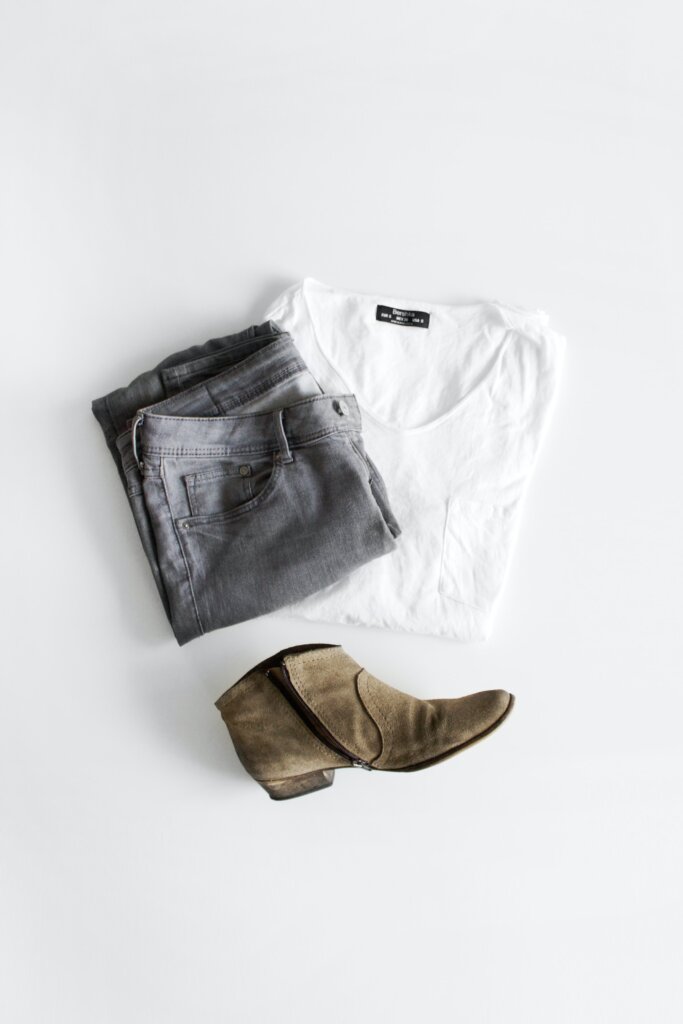
Invest in an excellent travel towel
Allow me to gush about one of my favourite travel purchases of all time: this travel towel.
It folds up to almost no space at all, is ultra absorbent, dries quickly and can double as a beach towel in warmer countries. I am in love with it and still use mine 7 years later, so I would say it’s amazing value.
I’ve literally bonded with people in hostel dorms over the absorbent amazingness of this towel, so I promise you won’t be disappointed!

Organize your stuff with packing cubes
I honestly have no idea how I lived prior to purchasing packing cubes .
These beauties are a magical way to keep all your goods organized, while saving space in your bag as well. Gone are the days that you rummage through your entire pack for a particular t-shirt!
Not all packing cubes have to be expensive either. There’s plenty of affordable options on Amazon, like this blue set from Amazon Basics , but you definitely get what you pay for.
PS: I’m a total packing cube nerd and once bought a bunch of different brands to compare. See my full packing cube showdown for more.
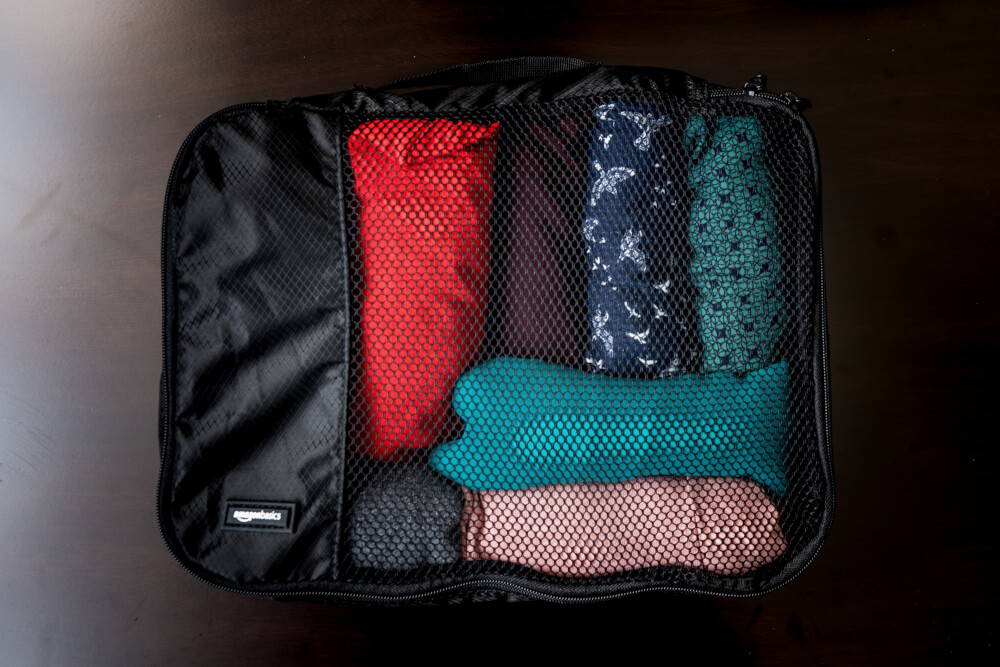
Bring a lock
While most hostels will offer padlock rentals, having your own is a great money saver and an essential item if you’re hostelling during your trip.
It can also help you lock up the zippers on your backpack on travel days, to ward off any pickpockets!
I’d recommend getting a combination lock rather than a lock/key combo, mainly because if you’re anything like me, you will 100% lose that key within seconds.
TIP: A multi-pack like this is cheap, and then you can have one lock per bag and back-ups in case you lose one.
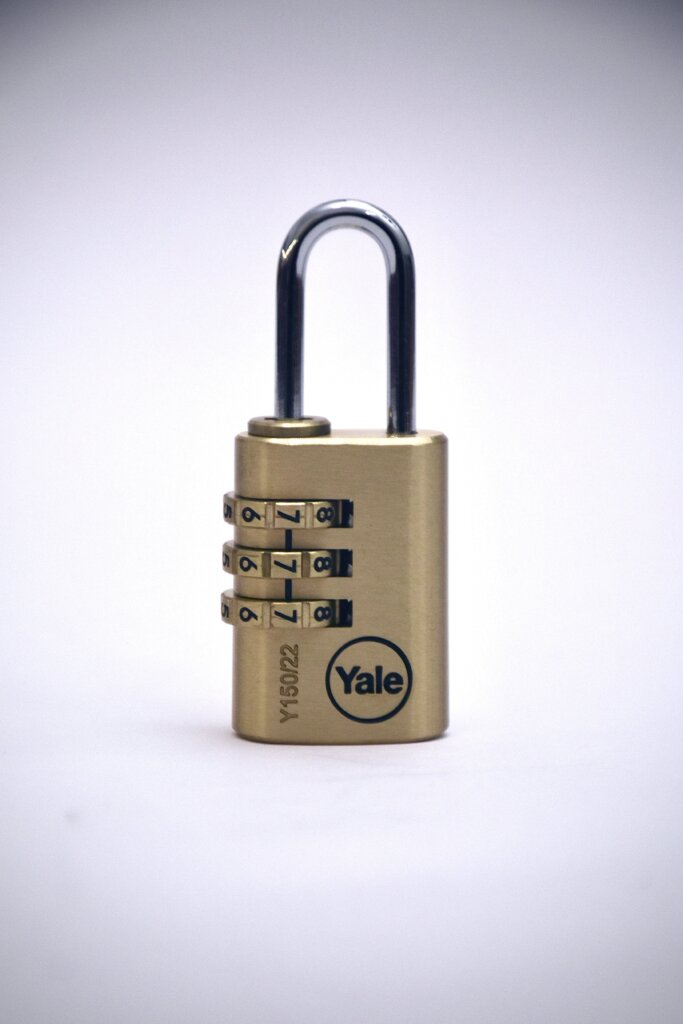
Have a great pair of flip flops
Why do you need flip flops? Two words: hostel showers.
They’re also great shoes to have around if your feet need to breathe, or if you’re headed to the beach.
I swear by this pair from Crocs (I know – don’t worry! They don’t look like Crocs!) Not only are they waterproof, they have a sleek and unique “dressier” design than typical flip flops which means you can get away with pairing them with dresses.
Fun fact I learned while backpacking: Australians call flip flops ‘thongs’. Needless to say, when a hostelmate told me she found someone’s thongs under her bed, I didn’t think she meant shoes.
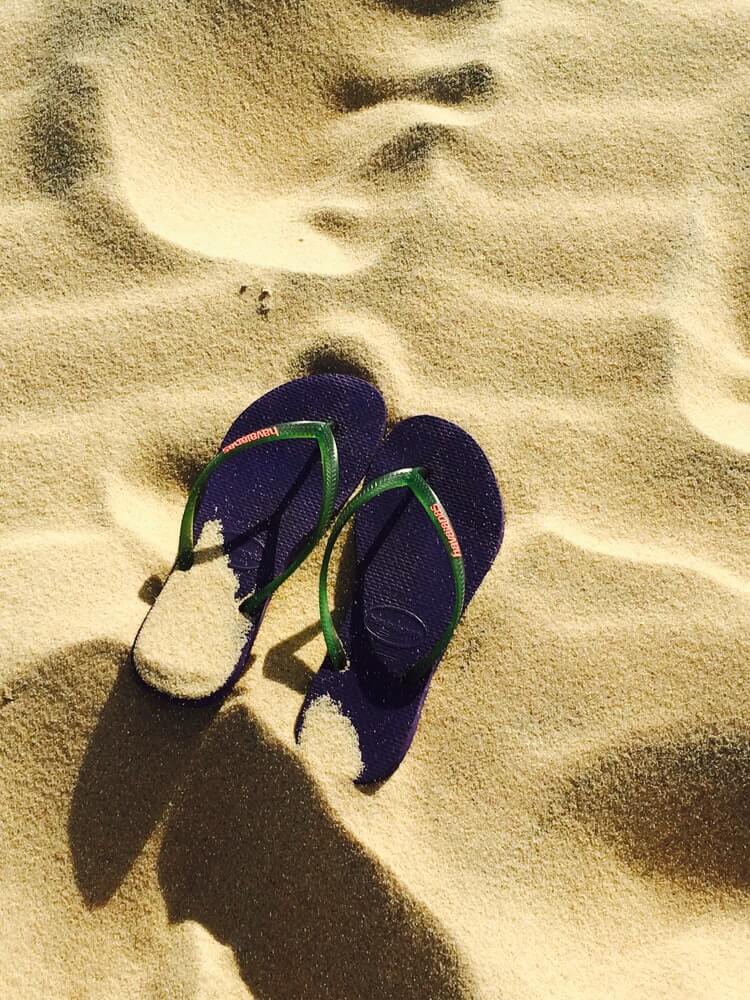
Bring a lightweight cutlery set
As I mentioned above, picnicking is a backpacker’s best friend when it comes to eating affordably.
While many grocery stores will have plastic cutlery for you to take, having your own set just-in-case will save you a lot of stress when you want to cut up your baguette or eat your store-bought gelato in peace.
This is the versatile and cheap spork I travel with these days. It’s super light and handy to have just in case!

Pack duct tape
A random, but essential item for your backpacking trip is duct tape.
From patching up broken bags to sealing up shoes that randomly split (true story), it’s a light and versatile item that travellers often forget to pack. No doubt, it has saved my butt numerous times.

Other General Tips for Backpacking in Europe
Last but not least, here are some miscellaneous tips to keep in mind for your backpacking trip in Europe.
Walk as much as possible
Walking is the absolute best way to explore a city, and most European cities are wonderfully walkable (moreso than many North American cities I’ve noticed anyway, which tend to be more spread out).
Bus and taxi fares add up quickly, so walking from place to place will save you a ton of money.
You’ll also get to see the city better while working off all those carbs you’ve been inhaling!
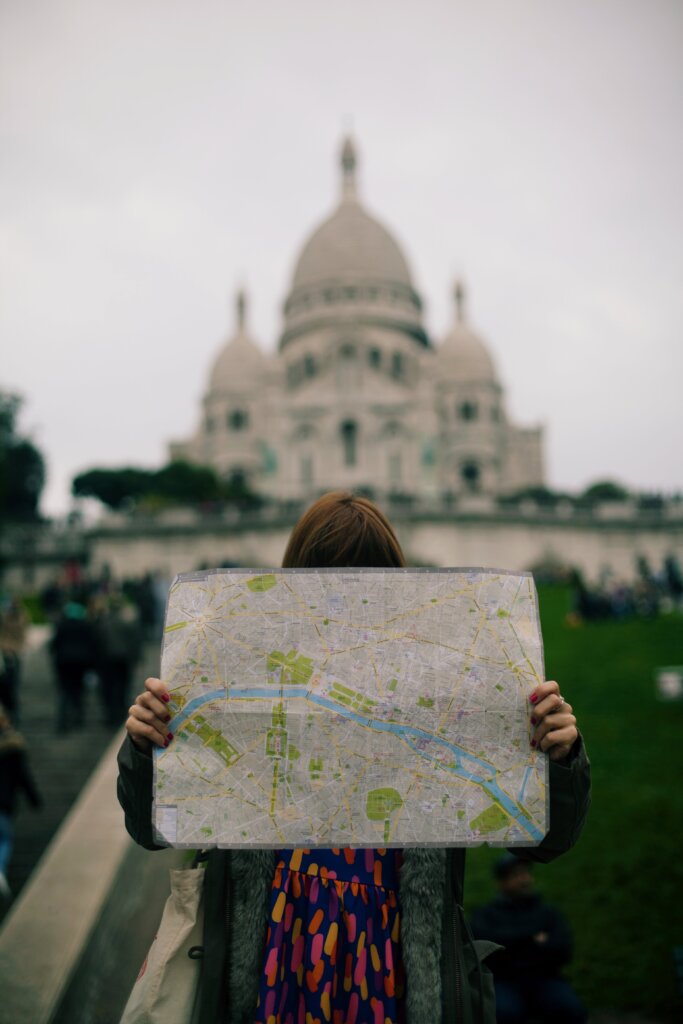
Read up on the public transport system before you arrive anywhere
Generally speaking, public transport in most major European cities is incredible, and often the most cost-effective way to get around (besides walking of course).
But, unfortunately, they’re not always intuitive… and they vary a lot from city to city.
SO, minimize the stress of arriving in a new place by researching public transport beforehand – how to buy tickets, how much tickets cost, which tickets are the best deal, etc. This will save you the panic of not understanding a thing when all your bags and valuables are in tow.
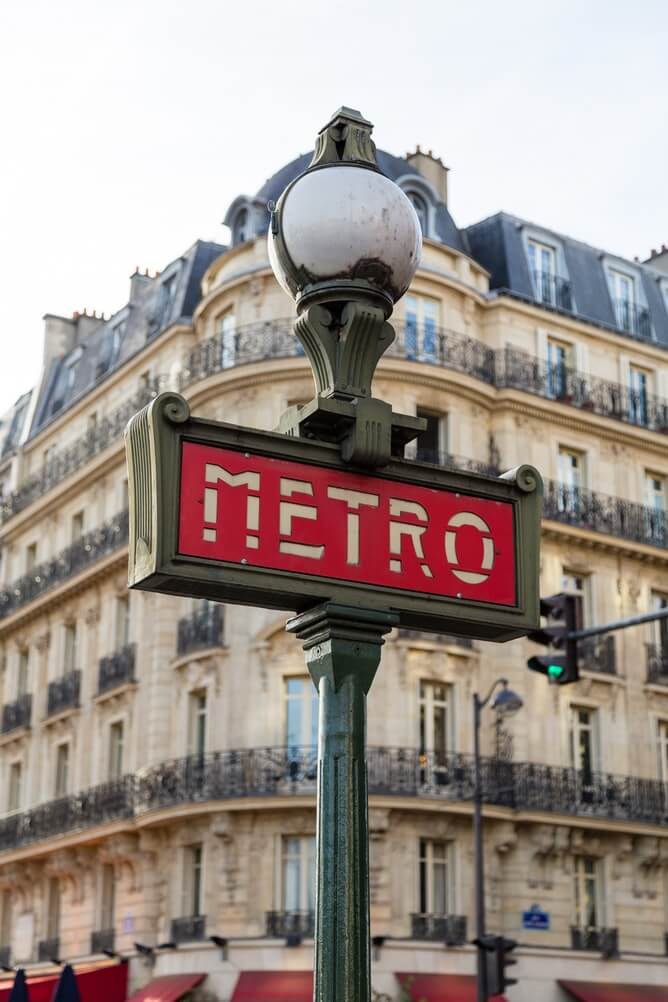
Think about free souvenirs (or non-physical ones)
You know that saying, “collect moments, not things?” It’s definitely true.
While it may be tempting to collect small trinkets throughout your trip, these little expenses add up and also take unneeded space in your bag.
In my experience, the best souvenirs are free, like photos, ticket stubs, etc. You can then buy a cheap travel stub diary like this one once you get home to organize it all. Much more personal than fridge magnets!
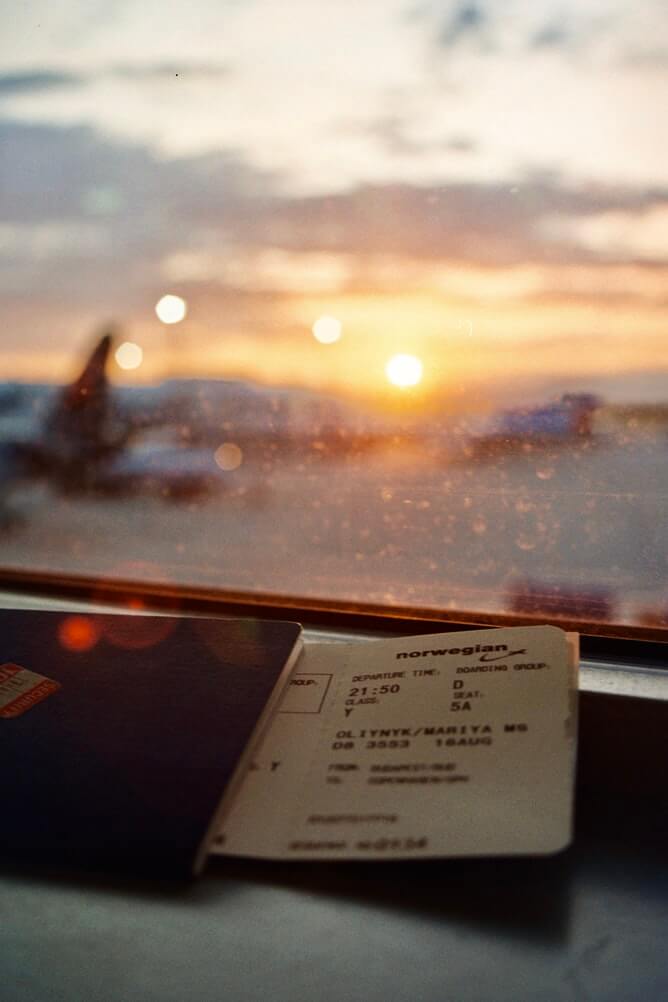
Learn how to haggle
You’ll be amazed at how much money you can save by haggling at markets, particularly in touristy cities where they often inflate the price with the expectation that you’ll haggle it down.
It doesn’t matter what you’re buying, whether it’s clothes or a keychain, you’ll be able to drive the price much lower if you stand your ground.
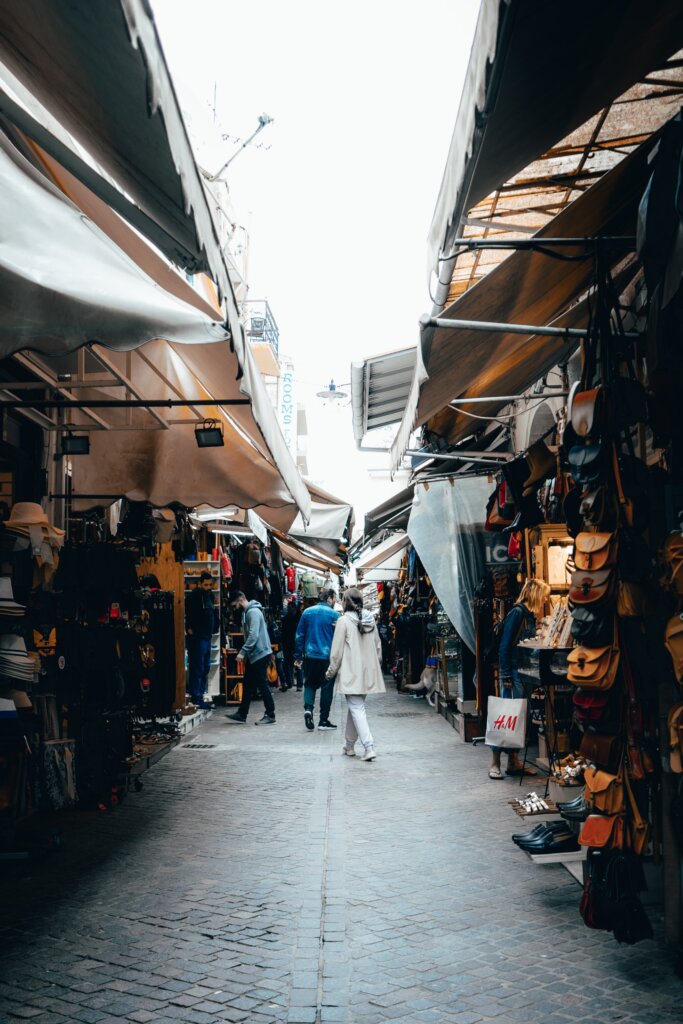
Always have cash and change
Depending on which destinations you visit in Europe, you WILL be charged for things that are usually free in your home country, like for instance going to the bathroom!
In Germany, Switzerland, and Austria for example, it’s common for public restrooms to cost between 50 cents to 1 euro per use… The upside is of course that the facilities are sparkling clean.
So, never rely on cards, make sure you have cash and change on you.
PS: If you’re headed that way, make sure you read my list of must-knows before you travel to Germany … because there’s a lot of very random and hilarious surprises.

Be friendly and social
This goes without saying, making friends while you travel brings an infinite number of benefits.
One of the most selfish ones being saving money while splitting the cost of supplies and food!
On a more wholesome level though, I’ve met some truly incredible people while backpacking, some of whom have encouraged me to derail my plans, go with the flow, and see some wonderful places I would have otherwise never visited.
All in all, talk to strangers while backpacking Europe. You never know what might happen!

Don’t be afraid to splurge and treat yourself
Last but not least, I know what it’s like backpacking Europe on a budget, that feeling like every penny counts and you’ll never financially recover if you dare pay more than you budgeted for…
But remember, backpacking Europe is a huge bucket list experience! You deserve to treat yourself every once in a while.
At the risk of sounding too “deep”, your money will come back, but your time will not… So definitely treat yourself to some amazing experiences on your bucket list while backpacking Europe, even if they are a bit pricey.
I promise you’ll never regret it.

I hope these Europe backpacking tips were helpful!
Let me know in the comments if I missed any tips you’d recommend, or if you have any more questions. Have an amazing trip!
My Go-To Travel Favourites:
🧳 Eagle Creek: My favourite packing cubes
💳 Wise: For FREE travel friendly credit cards
🍯 Airalo: My go-to eSIM
🏨 Booking.com: For searching hotels
📷 Sony A7IV: My (amazing) camera
✈️ Google Flights : For finding flight deals
🌎 WorldNomads: For travel insurance
🎉 GetYourGuide: For booking activities
1 thought on “40+ Super Helpful Travel Tips for Backpacking Europe”
This blog is amazing and informative .These Travel blogs provide practical information and tips that can be incredibly helpful when planning a trip. From accommodation recommendations and transportation options to local insights and budget-saving strategies, travel blogs can offer valuable firsthand knowledge to make your travel planning smoother and more efficient.
Leave a Comment Cancel reply
By using this form you agree with the storage and handling of your data by this website. *

Best Outdoor Gear for Hiking, Camping, Backpacking Trips
Europe Best Backpacking Trips
Europe’s best backpacking trips.
Looking for the best backpacking trips in Europe ? Do you want to go hiking through Europe’s most beautiful mountains, valleys, trails, and terrain? Europe is home to some of the most exciting backpacking trips in the world. Whether you enjoy a short backpacking trail or a long, 100-mile long trip, Europe has trails that meet your exact desires, offering beautiful, breathtaking scenery along the way.

Best Backpacking trips in europe
Knowing the best places to go backpacking in Europe allows to you make the most of your trip, and you are sure not to be disappointed with your experience. While there are numerous unique places to go backpacking, there are several places in particular you are not going to want to miss.
In this guide to the best backpacking trips in Europe, you will learn the essential information about the six best backpacking destinations in Europe, including:
Best time to go
Elevation gain
We also highlight six different countries, showing you the best each one of the six locations has to offer for hikers. The six places we highlight include:
Those who love to go on backpacking adventures and want to see the most beautiful parts of nature this world has to offer should certainly add these six hiking trips to their bucket list.
Without further adieu, let's get into the best backpacking trips in Europe. Each one offers a unique experience and has developed a reputation as one of the best hiking trails in the world. It is time to see what all the hype is about and plan your visit to one of these premier destinations.
#1: Best Backpacking and Hiking in Europe,
Alta via 1 - italy, a quick guide to alta via 1:.
Best time to go: July - September
Elevation gain: 22,000 feet
Duration: 6-10 days
Difficulty: Intermediate
Distance: 75 miles

the best hiking and backpacking trip in europe by angeloutdoors.com
The Alta Via 1 - or the Dolomite High Route - is located around the Dolomite Mountains, which is home to one of the most beautiful landscapes this world has to offer.
In addition to the scenic beauty, The Alta Via 1 offers historic value and is a significant landmark in WWII history.
The trail itself is not too difficult, but it is relatively long and requires proper planning to ensure the backpacking trip goes smoothly. There are plenty of water sources and refugios for lodging along the way.
The Alta Via 1 is located in northeastern Italy and begins at Lago di Braies, which is located in South Tyrol, Italy. This location is home to some of the most natural beauty in the world, offering colorful mountaintops, beautiful lakes and fascinating wildlife. The best way to get there is to fly to Italy and use public transportation to the starting point.
What to expect
The first thing you are likely to notice upon arriving at Alta Via 1 is the astounding beauty of the nature that surrounds you. The beautiful scenery is truly breathtaking, and since the trek is rather slow, you have plenty of chances to soak it in for all it's worth.
While the journey is somewhat treacherous, there are stopping points all along the route, plenty of water sources and the weather is pleasant during the summer months.
For most experienced backpackers, it should not take more than a week to complete the Alta Via 1 trail, although the average length of time is eight days and seven nights.
Weather conditions
Timing is critical when visiting the Alta Via 1 due to the weather conditions. Outside of July, August and September, the terrain is covered with snow and can become a challenging trail, so be sure to go at the right time, plan for the weather and stay prepared at all times.
There are various refugios along the route and a reservation is not required to stay at them. However, it is highly encouraged to get a reservation - especially when visiting during August when the trail is the most crowded. There is no permit needed to backpack the Alta Via 1.
Additional information
Although it is not overwhelming from an endurance standpoint, the Alta Via 1 can be a somewhat complicated trail, and you are likely to need to ask for help at some point if it is your first time there. Since not all of the guides and other hikers are going to speak English, be sure to learn some basic Italian before going in case you need help.
The bottom line
If you are looking for one of the most scenic backpacking trips in Europe, then look no further than the Alta Via 1. As long as you plan your trip at the right time, prepare your route before hitting the trail and make reservations with the refugios, you are sure to have a great experience.
#2: Best Backpacking and Hiking in Europe,
Gr20 - corsica, a quick guide to gr20:.
Best time to go: Early June to Late October
Elevation gain: 32,000 feet
Duration: 11-12 days
Difficulty: Expert
Distance: 112 miles
The GR20 in Corsica is a premier spot to go backpacking in Europe. Although it may be challenging for even the most experienced backpackers, the beautiful sunsets, magnificent mountaintops and overall extreme beauty make the trip worth the physical struggle.

Best European backpacking trips
Before and after your hike, be sure to check out the unique environment the city offers , including the delicious food, nightlife and more.
The GR20 is located on Corsica, which is a mountainous Mediterranean island in Europe that is considered a part of France. The GR20 is in the middle of the mountainous center, and it is one of the most challenging backpacking trips on this guide.
The GR20 is incredibly challenging for beginners, and it requires proper planning to ensure your safety on the trip. Although it is not long, the mountain terrain can be rugged and cause you to fatigue reasonably quickly.
With that said, it is most certainly worth the challenge. The GR20 offers one of the most beautiful environments in all of Europe, and it is a truly unique experience of tough hiking and breathtaking views.
Be sure to give yourself a couple of weeks to complete the entire GR20 hike as it can be a rather slow, rugged experience that is certain to test your endurance.
Like many backpacking destinations in Europe, it is essential to consider when you go and what the expected weather conditions will be at the time of your journey. There are markers along the route that update weather conditions, but be sure to still check the long-term forecast before hitting the trail.
There are numerous refugios along the route - which are going to come in incredibly useful as the journey can be a long, exhausting one each day. You can either stay at the refugios, or they allow camping next to the refugios. However, wild camping is not allowed so be sure to find a lodging destination.
One of the most important things to remember before setting off on your backpacking trip of the GR20 is to plan for resupply. There are water sources and refugios that offer food along the route, but it is essential to be sure to bring a reliable supply before you leave.
Another interesting note about the GR20 is the swimming holes that are located throughout the journey. Be sure to plan for a nice cool down as you come across magnificent swimming locations along the route.
The GR20 is indeed a can't miss spot to visit when backpacking in Europe. While a beginner may prefer an easier, less rigorous route, the GR20 is the ultimate challenge for experienced backpackers who want to test their physical endurance, while still enjoying all the beauty Corsica has to offer.
#3: Best Backpacking and Hiking in Europe,
Kungsleden trail - sweden, a quick guide to kungsleden trail:.
Best time to go: Anytime
Elevation gain: 4,000 feet
Duration: 7-14
Distance: 270 miles
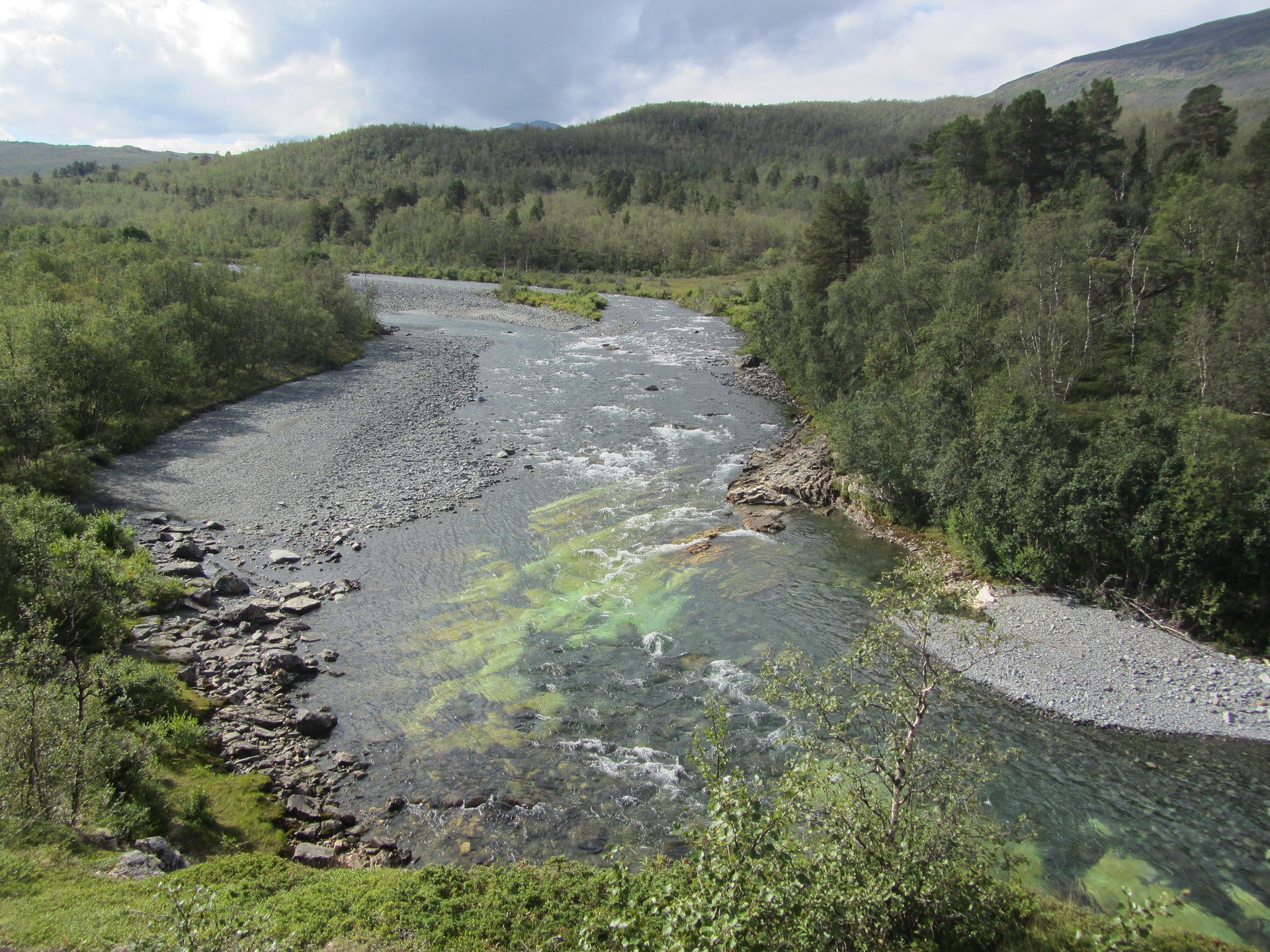
best backpacking trips and hiking in Sweden: kungsleden trail
The Kungsleden Trail offers everything you could ever want on a backpacking trip, including beautiful scenery, plentiful lodging and resupply locations and the ability to make the route as challenging or as easy as you desire.
It indeed provides one of the unique backpacking trip opportunities in all of Europe, and it is a place every trekker should have on their bucket list to visit.
The Kungsleden Trail is located in the Lapland mountain landscape in Sweden, and it covers a total distance of 270 miles. Along with the natural beauty of the Swedish terrain, the area offers an abundance of fascinating wildlife, including reindeer and perhaps even a rare snow owl.
The best thing about the Kungsleden Trail is that it gives you the opportunity to customize your route and overall backpacking trip fully. While the entire length of the trail is 270 miles, there are essentially four different trails you can choose from, and you can make the trek as easy or as challenging as you like.
Regardless of the route you choose, the trail is likely to offer fascinating water sources, beautiful mountaintops and a variety of birds and wildlife that catch your attention.
You can visit the Kungsleden Trail at any point during the year, but it is essential to weigh the pros and cons of each season and choose the right time to visit.
If you choose to visit the Kungsleden Trail during the cold, winter months, be sure to come well equipped with the proper cold weather backpacking gear, such as:
XPETI Thermador Waterproof Insulated Hiking Boots
Sleepingo Double Sleeping Bag for Backpacking
Extreme Weather Camping Tent
If you are not a fan of cold weather, then you are going to want to visit the Kungsleden Trail in the summer months, when the temperature is around 55 degrees Fahrenheit. During the colder months of the year, it is normal for the temperature to stay below freezing.
There are numerous lodging options all along the Kungsleden Trail, regardless of the exact route you choose to take. If you prefer to cover more ground each day, you can skip by lodging centers. If you like to trek slower, you can prepare shorter routes each day. Due to a large number of accommodations, you will have a lot of flexibility to plan your trip exactly how you want.
There are so many features of the Kungsleden Trail that make it truly unique, including the vast amount of lakes, abundance of wildlife and ability to plan your route exactly how you want it.
Depending on the time you choose to go, there are various other opportunities the trail provides in addition to backpacking, and it is a great place to ski as well.
The ability to customize your route exactly how you want separates the Kungsleden Trail from all other backpacking trips in Europe. In addition, the beauty of the Sweden terrain is simply breathtaking, making for a paradise for trekkers who want to experience nature’s beauty above all else.
#4: Best Backpacking and Hiking in Europe,
Laugavegurinn - iceland, a quick guide to laugavegurinn:.
Best time to go: June - September
Elevation gain:1,600 feet
Duration: 4-6 days
Difficulty: Beginner
Distance: 34 miles
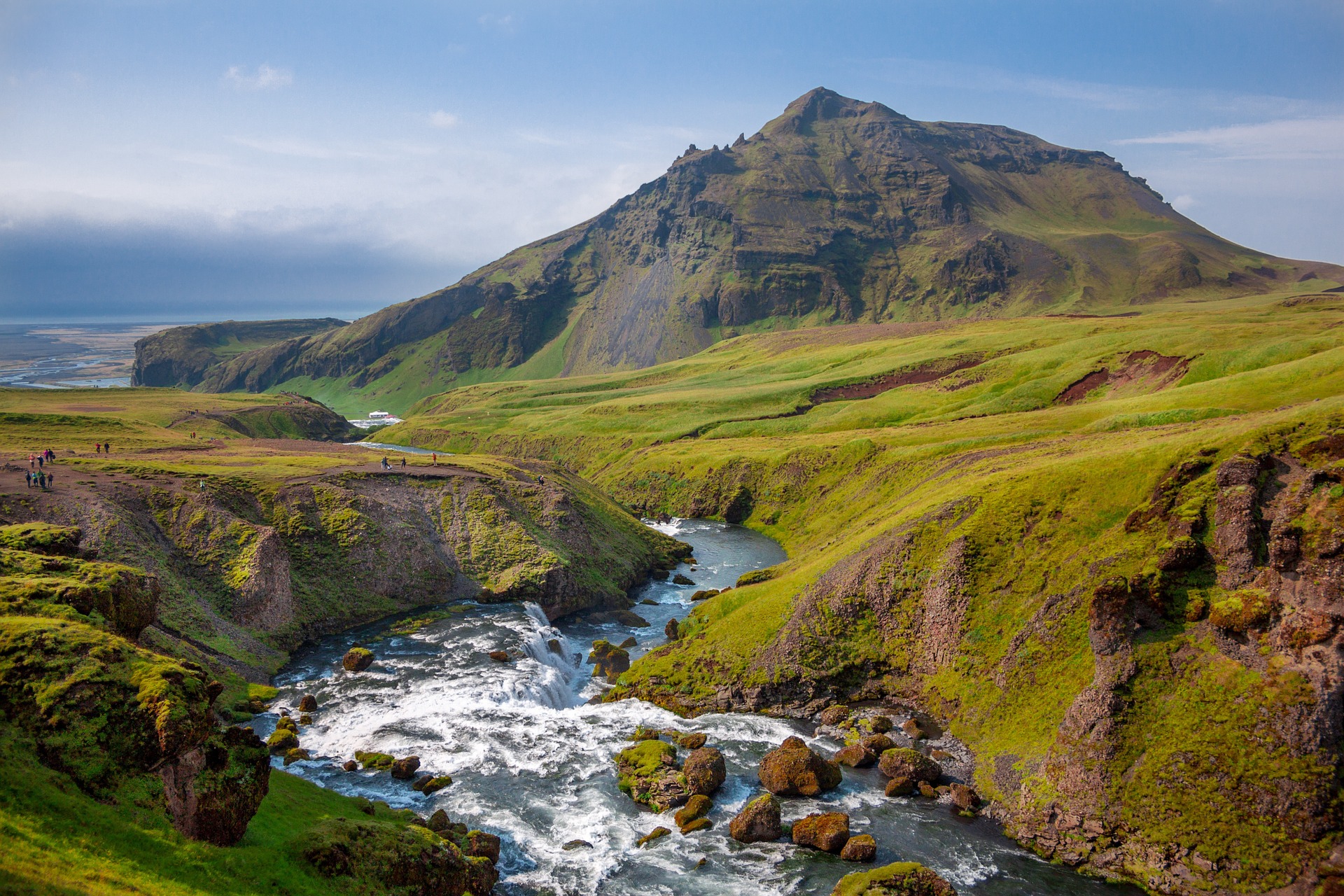
best backpacking trips and hiking in iceland: laugavegurinn.
Words cannot describe how beautiful the Laugavegurinn is. The Laugavegurinn - often referred to as the Laugavegur Trail - offers backpackers a beautiful view of breathtaking multi-colored mountains, fields of lava and bubbling hot springs that you are unlikely to see on any other backpacking trip.
The trail is short, low in elevation and perfect for beginners who are more interested in interacting with nature than they are testing their physical endurance.
The short, aesthetically pleasing trip can be completed in as little as four days, and the memories are certain to last for a lifetime.
The Laugavegurinn is Iceland’s most famous hiking trail and provides perhaps the most unique landscape of any backpacking destination in Europe, offering magnificent multi-colored mountains, volcanoes and much more. No matter how far you travel to reach the Laugavegurinn, it is always worth the trek.
The Laugavegurinn is one of the most breathtaking landscapes in the world, and it is a paradise for backpackers who value natural beauty just as much as the hike itself.
While on your journey down the Laugavegur Trail, you are going to see unforgettable glaciers, bubbling hot springs, colorful mountains and intriguing fields of lava that can truly leave you speechless.
The hike itself is short and not too rigorous, which makes it the perfect place to bring a friend you have been trying to convince to take up backpacking.
Iceland can stay fairly cold throughout the year, and it is important to plan for the weather and be wise about when you choose to visit. In the summer the temperature stays around 52 degrees Fahrenheit, and the trail may be covered in snow during the colder months.
The trail is also prone to being very wet, so be sure to wear hiking boots that are waterproof, such as the Timberland’s Men’s Flume Waterproof Boot , which is designed to hold up in even the most treacherous terrains.
There are several lodging destinations along the 34-mile route of the Laugavegurinn, including camping locations and rustic huts to stay in. The trail is not too rigorous and only takes several days, but making appropriate lodging accommodations is important to stay comfortable while on your backpacking trip.
There is no doubt that the Laugavegurinn is one of the most beautiful backpacking trails in all of Europe and the entire world. While on your trip down the Laugavegur Trail, you are likely to experience numerous scenes that you have never seen.
To get the most out of your backpacking trip, consider going with a group and tour guide , who can show you the best locations and provide the most fulfilling experience possible.
The Laugavegurinn is the perfect backpacking destination for beginners and experts alike, particularly those who value an aesthetically pleasing experience. While it is important to plan for the weather and wear the appropriate gear, the Laugavegurinn is an amazing journey that should be included in every backpacker's trip to Europe.
#5: Best Backpacking and Hiking in Europe,
Tour du mont blanc - france, a quick guide to tour du mont blanc:.
Elevation gain: 33,000 feet
Duration: 9-14 days
Distance: 106 miles
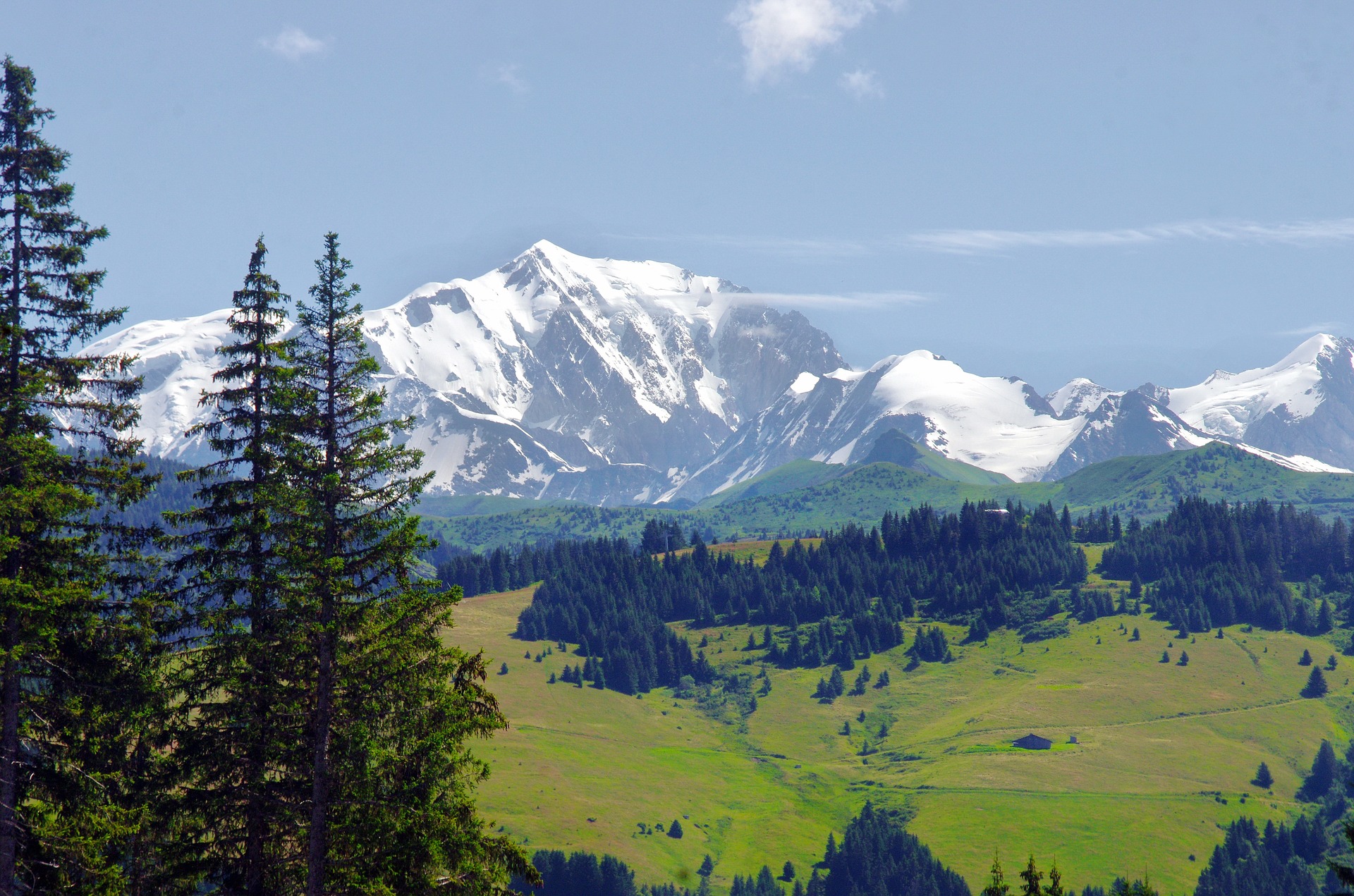
best backpacking trips and hiking in france: tour du mont blanc.
The Tour du Mont Blanc is long, rigorous and rain is essentially guaranteed. While this may scare off beginners, it is a dream come true for experts.
Be sure to plan out your trip in advance before hitting the trail, and schedule a route that allows you to soak in the most amount of natural beauty possible as the Tour du Mont Blanc has plenty of it to provide.
Over the peaks and valleys of the Western Alps lies the Tour du Mont Blanc, a premier backpacking destination in Europe. The Tour du Mont Blanc is located across three different countries, France, Italy and Switzerland and offers magnificent beauty, historic value and a rigorous terrain.
The Tour du Mont Blanc is not recommended for beginners who are not physically prepared for a tough trek, and you can expect to go through one of the toughest long-distance hikes in all of Europe.
However, the trail offers fantastic lodging accommodations and plenty of resupply opportunities to keep you safe on your journey.
In addition to the unique physical challenge the Tour du Mont Blanc provides, it also offers astounding, beautiful scenery at every turn, which makes every second of the difficult trek entirely worth it.
During the summer months, the weather conditions are usually fair and nothing to be concerned with, although it is essential to check the weather for the entire length of time you are out on the trail as rain is a constant in the area. Outside of the summer months, backpacking the terrain can be an incredibly difficult challenge if not entirely impossible so plan your visit accordingly.
Although the terrain is quite rigorous and making it through the backpacking trip requires excellent physical endurance, the accommodations along the trail could not be any better. Whether you prefer to stay in a nice resort, hotel or mountain hut, Tour du Mont Blanc can meet your demands.
The Tour de Mont Blanc is home to the tallest mountains in the region, which provide a view of nature that can truly leave you speechless.
The 106-mile journey is long and filled with hills that can, at times, make for a rather slow trek through the trail. Be sure to stay prepared and ensure you always have plenty of food and water along the trip. Since the main language spoken among the natives is French, be sure to learn some basic terms in case you need to ask for help.
The Tour du Mont Blanc may not be the best place for those who are new to backpacking, but it is the ultimate trip for anyone looking for a real challenge. The natural beauty and difficult terrain make this trail an experienced backpackers dream backpacking trip.
#6: Best Backpacking and Hiking in Europe,
West highland way - scotland, a quick guide to west highland way:.
Best time to go: April to October
Elevation gain: 10,000 feet
Duration: 7-9 days
Distance: 96 miles
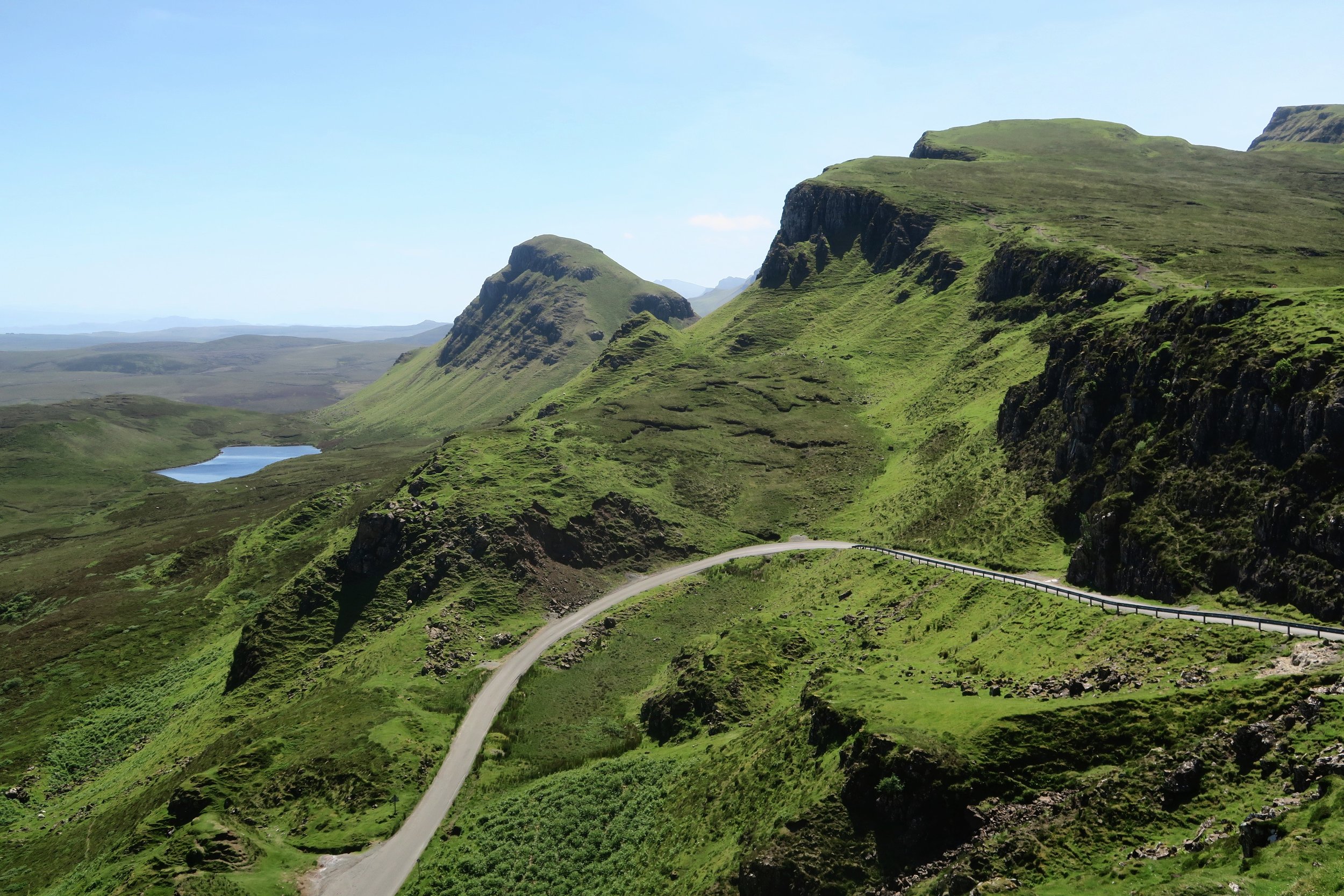
best backpacking trips and hiking in scotland: west highland way
The West Highland Way may be the most popular backpacking destination in all of Europe, offering a challenging but not too rigorous terrain, astounding natural beauty and fantastic lodging and resupply opportunities all along the route.
The 96-mile trek can be completed in as little as a week, and it provides an experience that you are certain to remember for decades to come.
Be sure to schedule your backpacking trip during the warmer months when the weather is favorable, but the route is friendly enough for even the most inexperienced trekkers.
West Highland Way is located in Scotland. The most popular starting point is located at the Southend of the trail in Milngavie. More than 30,000 people visit the West Highland Way each year, and it is a great place to visit for beginner and expert backpackers alike.
The West Highland Way only requires a week of your time to make it through, and there is beautiful scenery all along the backpacking trip. While it is a long distance trail - stretching across 96 miles of beautiful terrain - it is a fairly easy trail to backpack and there are lodging and resupply opportunities all along the route.
After the route ends, there are several other routes you can take to extend your trip even further, such as the Great Glen Way and East Highland Way.
It is important to schedule your trip at the right time when visiting West Highland Way as it can become rather crowded during the summer months.
The weather in Scotland - particularly along the West Highland Way - is comfortable during the spring, summer and early fall months. However, outside of April to October, the terrain can be covered with snow and makes for a much more difficult trek through the terrain.
Since it is such a popular tourist location, the West Highland Way provides numerous lodging opportunities along the route, including campsites and hotels. Be sure to plan your route out in advance and schedule a reservation for hotels as it can be rather crowded during the summer months.
The West Highland Way gains a lot of attention and is certainly one of the most popular backpacking destinations in Europe. Subsequently, there are numerous resources available to help make your trip even better, such as the West Highland Way Official Guide Book .
Bugs can also become a problem during the warmer summer months, so be sure to bring plenty of bug repellant on your backpacking trip to West Highland Way.
Attracting more than 30,000 trekkers each year, there is no doubt that the West Highland Way has captured the curiosity of many - and for good reason. It provides a truly unique, breathtaking backpacking trip and is a can’t miss spot to trek on your visit to Europe.
Ok, are you ready to go hiking and backpacking in Europe’s most beautiful places?
Europe offers numerous backpacking opportunities regardless of your current skill level or exact preference on how to backpack. While there are many other great places to consider checking out, these six backpacking destinations in Europe are certain to impress and leave you with lifelong memories and the opportunity to bond with those closest to you while out on the trail.
If you love backpacking and want to see the most beautiful places this world has to offer, do not miss out on visiting one or more of these six backpacking destinations in Europe. Each one in is unique in its own way, and they all can leave you with fond memories of your time in Europe.
However, many of these backpacking trails have a rigorous terrain and it is important to be well-equipped before starting your journey. Fortunately for you, we have all you need to ensure you are safe and properly prepared on your backpacking trip to Europe.
Be sure to gather everything on your checklist before leaving to visit one of these magnificent destinations, and go buy our outdoor gear here:
Best Camping and Hiking Backpacks
Best Extreme Weather Tents
Best Sleeping Bags
Best Hiking Boots and Shoes
Have more suggestions on the best backpacking trips in Europe? We would love to hear from you! Let us know if we left off one of the best places to go backpacking in Europe, and give us the details of your experiences.
Angel Outdoors™: #1 Outdoor Gear Reviews
Outdoor gear reviews for you..
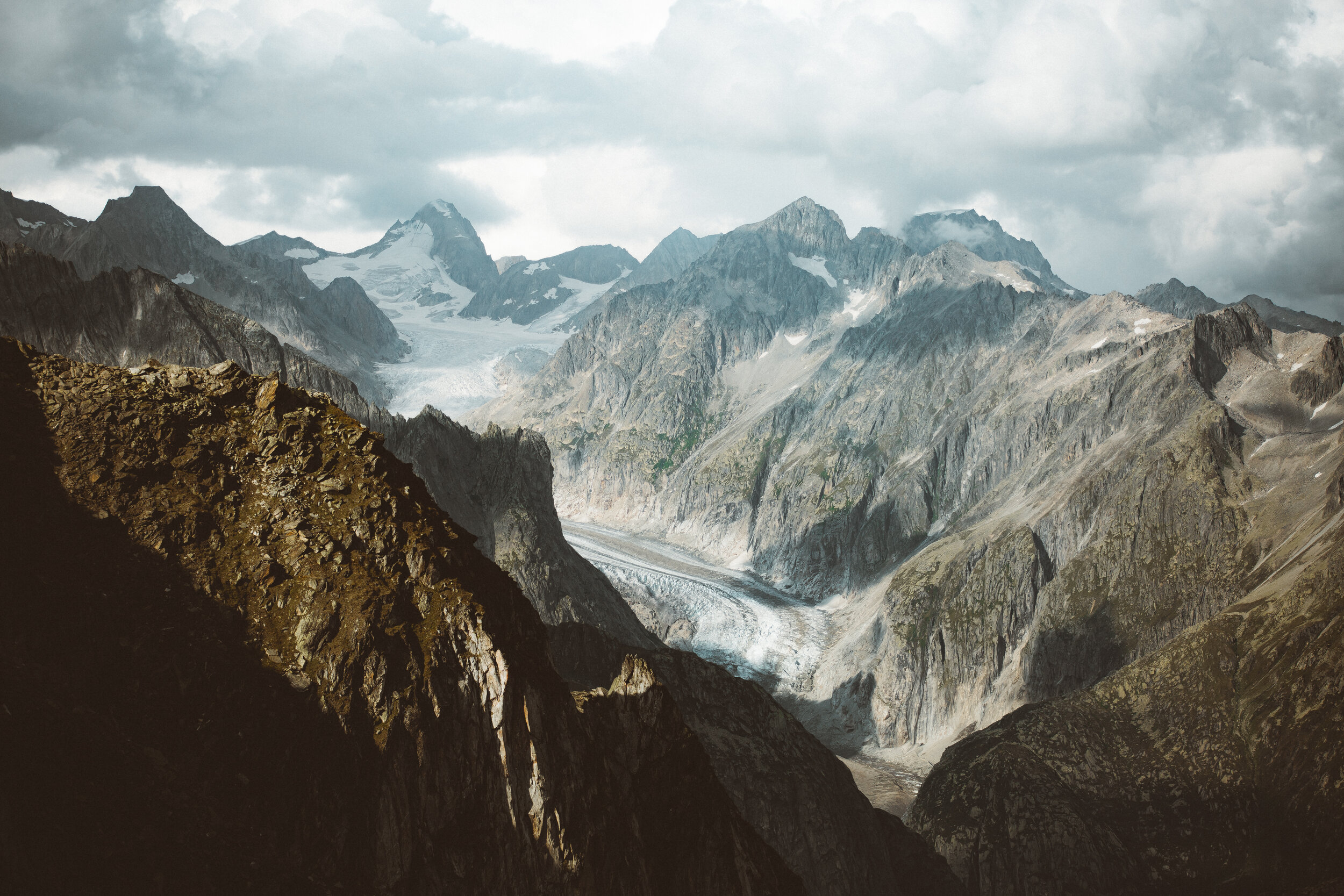
outdoor gear reviews
Angel Outdoors gives you inside access to the best outdoor hiking , camping , and backpacking gear.
Every time you buy a product on our website, we donate 1% of our sales to food and water initiatives across the world., want to purchase the best products.
Angel Outdoors gear and outdoor equipment can be found on Amazon, eBay, and select outlets.
Like, Share, Spread the Outdoor ❤️ Love...

Get Your Ultimate Outdoor Guide, Free!
Sign up with your email address to receive news and updates.
Thanks for your support!
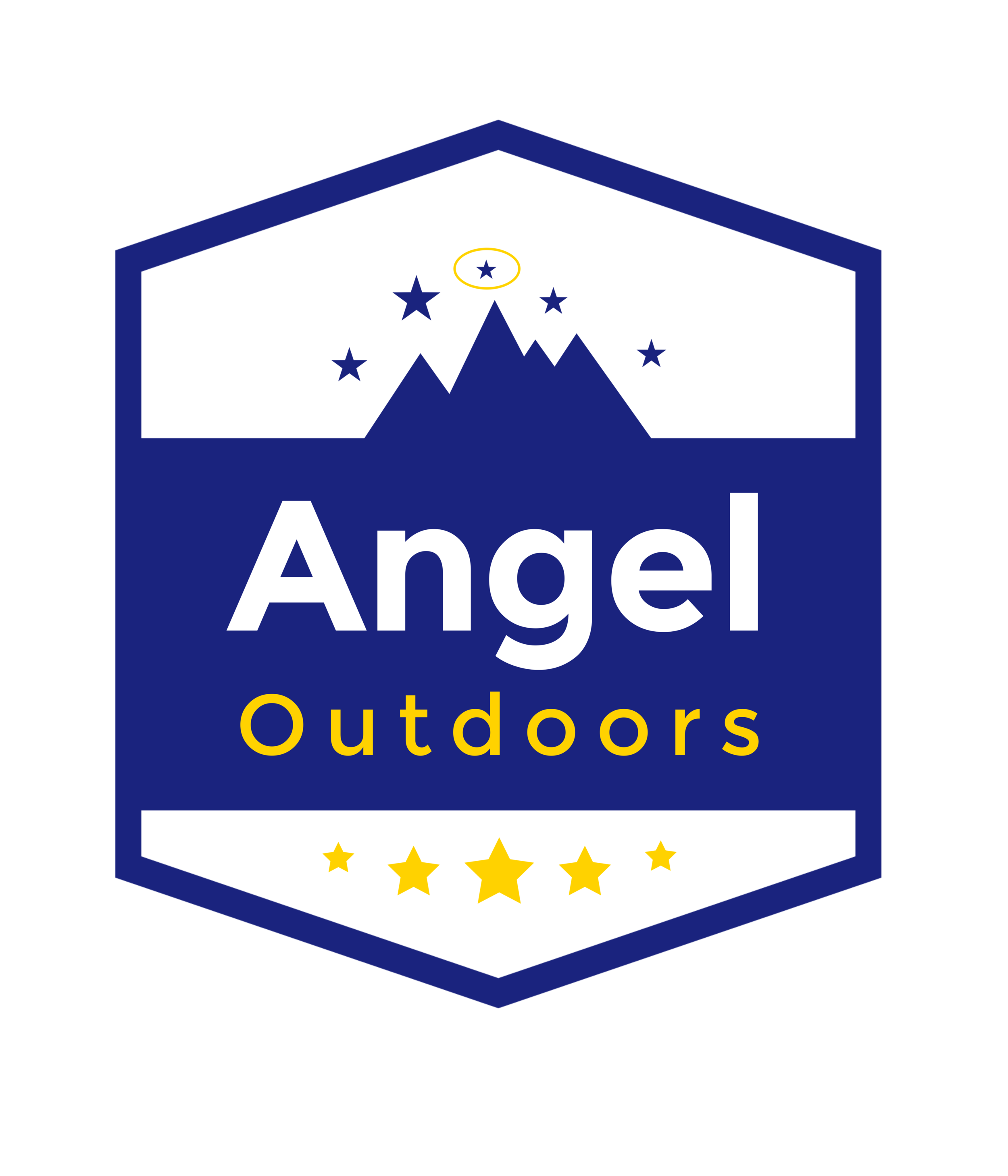
BEST outdoor gear products.
About Angel Outdoors : #1 best product reviews of outdoor gear, sportswear, gadgets, equipment, outdoor clothing and apparel. Angel Outdoors’ product experience review site gives you inside access and adventure guides to hiking, camping, backpacking, climbing, mountain biking, skiing, and running. We also discuss outdoor trips and trails that are ranked the best in the world for adventurers, outdoor lovers, and wanderlust travelers. We also rank the best local outdoor trips and guides for you to travel.
This site was built by Vail Networks , the leading experts in web development for business .
We also support local businesses such as the auto brake repair shop , Action Jackson Auto , and small business IT development with a local auto painting shop that we recommend.
Product Disclaimers and Terms of Use
Follow us with these hashtags on social media: #OutdoorGear #OutdoorLife #Backpacking #Hiking #Camping #Gear #Adventures
Travel Europe on a Budget
The Savvy Backpacker
With The Savvy Backpacker
City guides .\33 a132798-3f3b-4585-954d-7e70cf863447{fill:#231f20}, free online city guides, welcome to the savvy backpacker.
Hi, I'm James and I've been teaching people how to travel Europe on a budget since 2010. I created The Savvy Backpacker to be the most comprehensive resource for planning your trip to Europe. Join me to learn more about the best travel backpacks, train travel in Europe, curated packing lists, European city travel guides, cheap data plans, itinerary planning, and money-saving strategies to help you plan a trip to Europe on a budget.

My Popular Europe Travel Articles
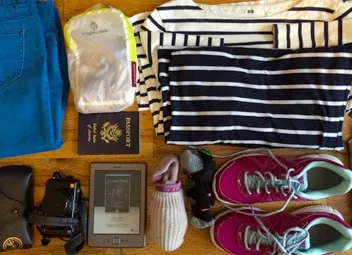
Europe Packing List For Women
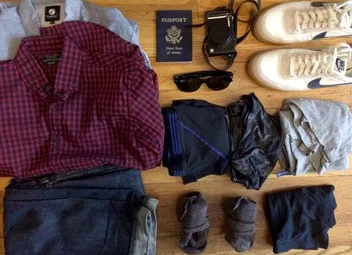
Europe Packing List For Men
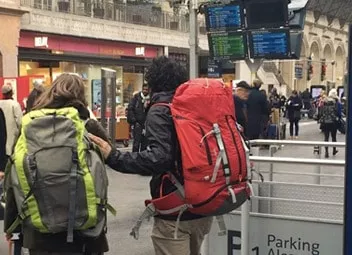
The Best Travel Backpacks
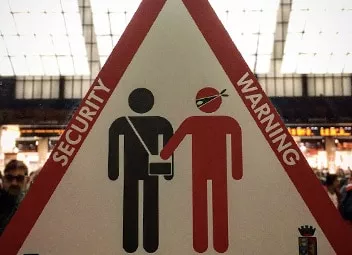
Avoiding Pickpockets and Travel Scams
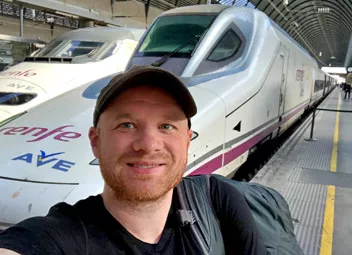
How To Choose The Best Travel Insurance
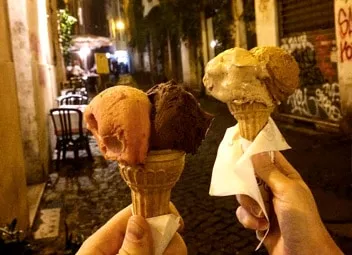
How Much To Budget For Traveling Europe

Europe City Price Guides

Guide To Train Travel In Europe
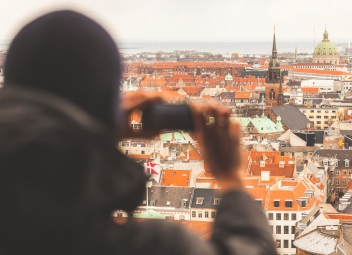
How To Get Cheap Mobile Data In Europe
Most recent travel articles.
Helpful Travel Tips & Articles , Packing
Fashion Advice: How to Avoid Looking Like An American Tourist In Europe
February 20, 2024
Fashion advice to help you look like a local when visiting Europe.
Transportation
How To Purchase Train Tickets for Europe | Strategies For Buying European Train Tickets
February 16, 2024
Tips on the easiest and cheapest ways to buy train tickets in Europe.
Budget Travel Newsletter
The best budget travel tips sent straight to your inbox.
Join My Journey
Europe travel tips, advertising & privacy policies.
TheSavvyBackpacker.com is a participant in the Amazon Services LLC Associates Program, an affiliate advertising program designed to provide a means for sites to earn advertising fees by advertising and linking to amazon.com.
© 2010 - 2024 The Savvy Backpacker
Website Design by FHOKE
- Destinations
- Japan Guides
- Hiking Guides
- Gear Guides
- Wildlife Guides
- About/Contact
10 of The Best Hiking Trails In Europe
- by Jonny Duncan
- October 20, 2023 October 20, 2023
Europe boasts a diverse and enchanting landscape, offering an extensive network of hiking trails in Europe that cater to all levels of hikers, from casual strollers to seasoned mountaineers.
These hiking trails in Europe wind their way through ancient forests, traverse majestic mountain ranges, and meander along coastal cliffs, promising breathtaking vistas, encounters with wildlife, and a profound connection with the continent’s rich history and culture.
Whether you seek a leisurely stroll through picturesque countryside or a challenging trek to conquer some of Europe’s highest peaks, there’s a hiking trail here to suit every adventurer’s taste and skill level.
Hiking Trails In Europe Advice
First of all, some advice before heading to Europe and your hiking adventure.
Be sure to take out some travel insurance before leaving home to be on the safe side as if you have an accident while hiking you will want to have insurance to get you the help that you need.
Check the weather conditions of the hike(s) you want to do as well to make sure you don’t get caught out in very bad weather, especially in the mountains where the weather can change rapidly.
If you’re not already in Europe and coming from another country then it’s always best to change money before leaving. Changing money in Australia to Euros before coming to Europe was great to avoid the hassle of doing it on arrival, for example.
There are so many hiking trails in Europe to do but these are several favourites to choose from and cover different regions of Europe for hiking.
The Malerweg, Germany

The Malerweg , or Painter’s Path, is a 71-mile circuit that was opened in 2006. It has quickly become a German classic, located in the mountains that straddle the border of Germany and the Czech Republic.
The trek is typically completed over eight days and takes in highlights like sandstone outcrops and massifs.
When choosing the best gear for your adventure, ensure you don’t select a big and wide backpack because you will get stuck along the narrower ladder sections.
But do pack your own sketching gear and the necessary camping equipment should you choose to use the campsites along the way. For those who would prefer skipping the tent, guesthouses are situated along the path.
Haute Route, Switzerland

In the picturesque Swiss mountains, the Haute Route is best for experienced hikers wanting to take in the mountain views and cosy lodges dotted around this incredible slice of nature.
The trail takes you from Mont Blanc to the Matterhorn , a distance of 125 miles that passes through various remote villages. For those dedicated to completing it, the entire journey will take two weeks, but it can easily be broken into short three to five-day excursions.
Many local tourist companies offer guided tours between the different villages along the route. Still, those hoping to forge their own path can arrange their trip alone, with on-trail accommodation, ranging from shared rooms to luxury private suites.
Mount Triglav, Slovenia

It may stand at only 2,863 meters. But be warned, Mount Triglav is a serious lump of rock, and to successfully traverse this remarkable place takes time, dedication, and careful preparation.
But your hard work is rewarded by one of the most incredible walks you can take in Europe. Every route requires at least two days to complete for regular hikers, with the most demanding ascent requiring nerves of steel to climb the iron cables.
Those wanting to use a via Ferrata, choose from the Prag route or the Bamberg, with the former being slightly less intense.
Alternatively, the Krma route entirely skips any via Ferrata and allows you to travel with your feet firmly on the ground.
Alta Via 1, Italy

The Dolomites , named after the 18th-century French mineralogist, is the Italian extension of the Alps. It regularly pulls in the Adriatic clouds, perfectly encompassing the stunning peaks and unique rock formations.
The Alta Via 1 is one of the best hiking trails in Europe. It’s a north-to-south hiking route that passes various valleys filled with seasonal flowers, cascading waterfalls, epic ridges, and plenty of First World War history.
Most walkers start in the north, at Lago di Braies, and complete the 74 miles to La Pissa in 10 days, but it can be completed in the opposite direction.
While it is possible to finish in a quicker time, it is essential not to underestimate the challenging terrain. Furthermore, various via Ferrata can be included in your journey or left out if you would prefer to skip them, but you will need to bring a harness and lanyard to traverse them safely.
The West Highland Way, Scotland

The West Highland Way is a long-distance walking trail in Scotland, known for its stunning natural beauty and scenic landscapes. Plus you get the Scottish charm when in Scotland!
The West Highland Way is located in western Scotland and runs from Milngavie, a suburb of Glasgow, to Fort William in the Scottish Highlands. It covers a distance of approximately 96 miles.
The trail takes you through some of Scotland’s most breathtaking and varied landscapes, including lush lowlands, forests, moors, and dramatic highlands, which makes it one of the best hiking trails in Europe.
It passes by Loch Lomond, the largest freshwater lake in the UK, and the iconic Ben Nevis, the highest peak in the British Isles.
The time it takes to complete the West Highland Way can vary based on your pace and the number of rest days you take. On average, it can take about 7-8 days to complete the entire trail.
Along the trail, you can find a range of accommodations, including campsites, hostels, guesthouses, and hotels.
Many walkers choose to stay in bunkhouses or bothies, which are basic shelters for hikers. It’s a good idea to book accommodations in advance, especially during peak walking seasons.
The Laugavegur Trail, Iceland

The Laugavegur Trail , also known as the Laugavegurinn Trail, is a popular multi-day hike in Iceland known for its breathtaking and diverse landscapes.
The Laugavegur Trail is located in southern Iceland, between the hot springs area of Landmannalaugar and the Þórsmörk valley. The trail covers a distance of approximately 34 miles and typically takes 2 to 4 days to complete, depending on the pace and weather conditions.
The trail passes through some of Iceland’s most spectacular natural features, including colourful rhyolite mountains, geothermal springs, glaciers, and rivers. You will witness a wide range of landscapes, from lush green valleys to stark volcanic deserts.
The terrain along the Laugavegur Trail is quite varied and can include rocky paths, river crossings, snowfields (depending on the season), and challenging ascents and descents.
The Laugavegur Trail is a magnificent trek through some of Iceland’s most stunning and pristine natural landscapes. It is often considered one of the best hiking trails in the country and one of the best hiking trails in Europe.
South West Coast Path, United Kingdom

The South West Coast Path in the UK is ideal for beginners looking for remote beaches and friendly pubs to stop in on their journey.
These pub walks, as they are commonly known throughout England and Scotland, can be shortened to one-day hikes or connect together for longer multi-day trips.
With a place to stop for a nice meal and warm bed each night, you can enjoy the 630-mile South West coast, taking in the dramatic cliff views and pristine, secluded beaches.
Completing the entire trail will take roughly a month, but with easy access to various coastal towns along the way, it is perfect for slicing and dicing to suit your itinerary.
One on the Southwest Coast Path be sure to check out some of the best seaside towns in Cornwall when there.
Kungsleden Trail, Sweden

The Kungsleden Trail is one of the most famous long-distance hiking trails in Sweden and one of the best hiking trails in Europe. It stretches for approximately 270 miles through the beautiful wilderness of Swedish Lapland.
The Kungsleden Trail runs through the northernmost part of Sweden, primarily within the province of Norrbotten. The trail is divided into several sections, each offering different landscapes and challenges.
Some of the most popular sections include the Northern Kungsleden, which is known for its dramatic mountain scenery, and the Southern Kungsleden, which takes hikers through dense forests and picturesque valleys.
The best time to hike the Kungsleden Trail is during the summer months, typically from June to September.
Along the trail, there are mountain huts and cabins, maintained by the Swedish Tourist Association (STF), where hikers can rest, eat, and sleep.
Camino de Santiago

The Camino de Santiago, also known as the Way of St. James, is a network of pilgrimage routes that lead to the shrine of the apostle St. James the Great in the cathedral of Santiago de Compostela in Galicia, northwestern Spain.
While the Camino de Santiago has religious origins, many people undertake the pilgrimage for non-religious reasons, such as self-discovery, adventure, or a physical challenge. It’s often seen as a spiritual journey or a quest for personal growth.
The Camino de Santiago has a rich history that dates back to the early Middle Ages. According to tradition, the remains of St. James were discovered in the 9th century, and the pilgrimage routes began to develop from various parts of Europe.
There are several different routes to Santiago de Compostela, with the most popular one being the Camino Francés (French Way), which starts in St. Jean Pied de Port, France.
You can find various accommodations along the route, including hostels, albergues, and guesthouses. These accommodations are often simple and affordable, catering to the needs of walkers and cyclists.
The Glockner Circuit, Austria
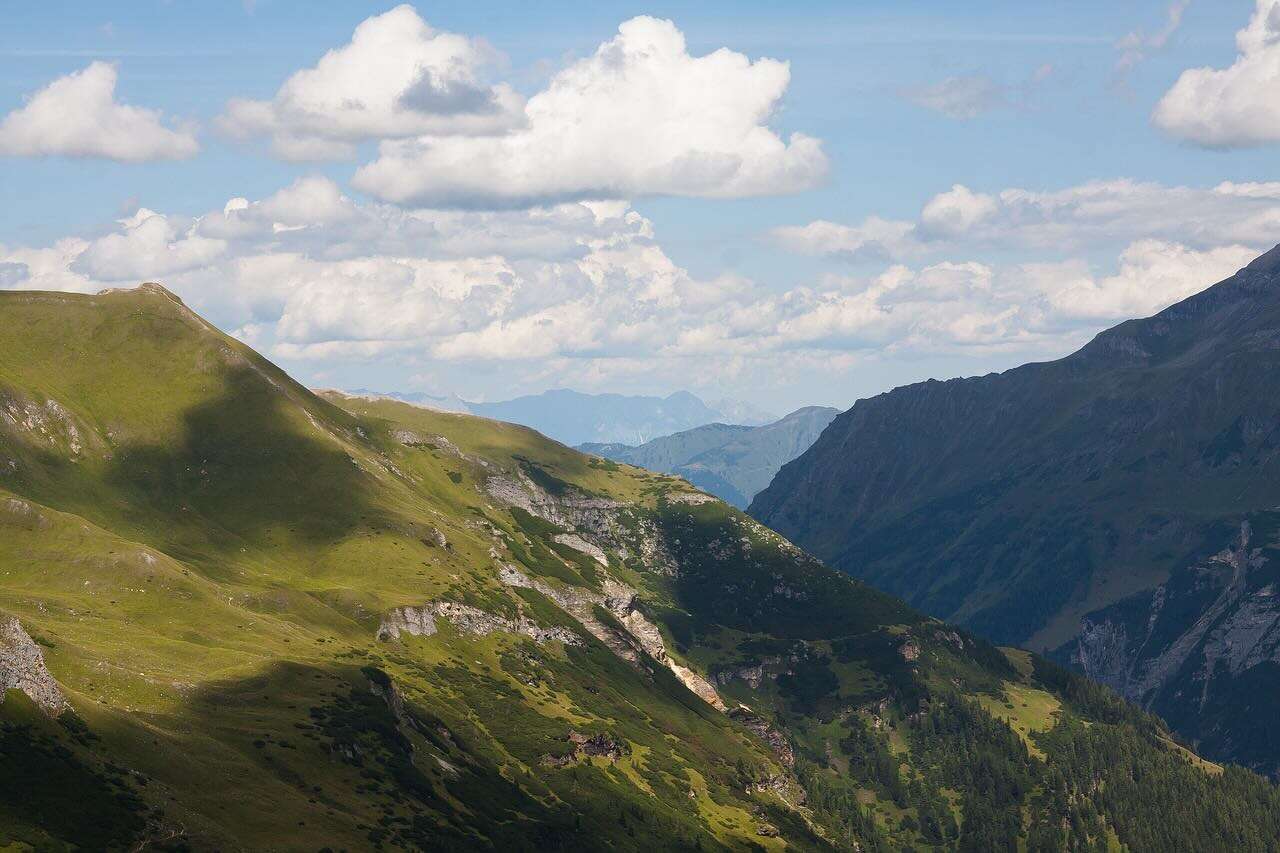
The Glockner Circuit, partially located in the Hohe Tauern National Park, has become an Alpine Classic and one of the best hiking trails in Europe.
With 71 miles of tough footpath that circumambulates the highest peak in Austria, the Grossglockner, you will be treated to impressive forests, flowing waterfalls, cosy mountain huts, and, should the weather be good enough, plenty of wildlife.
Take a post bus from Zell am See to Kaprun and head for the trailhead. From here, head in an anticlockwise direction around the peak, staying overnight in mountain huts.
The mountain huts and shelters along the circuit often provide meals and basic amenities.
Although this is a summer hike, higher sections can be impassable due to the weather, forcing you to take alternative routes. The Glockner Circuit is considered a challenging trek and is best suited for experienced hikers.
The circuit offers a fantastic opportunity to experience the rugged beauty of the Austrian Alps.
Österlen Way, Sweden

Sweden’s rugged coastline hosts one of the most scenic hiking backdrops you can find on the continent. One of the most famous hiking trails in Europe, Österlen Way, is a multi-day hike, ideal for moderate hikers looking for remote landscapes and quaint coastal villages.
The trail is approximately 112 miles long and typically takes around 10 to 12 days to complete, depending on one’s pace and the stops made along the way.
You can expect to traverse a variety of landscapes, including farmland, forests, and the scenic coastline along the Baltic Sea. This route allows you to experience the natural beauty, cultural heritage, and local traditions of Österlen.
It’s a looped trail and you can stay overnight at family-run guesthouses and B&Bs along the coast of Kivik before moving slightly inwards and returning back to the beach. You can also camp along the way.
You will feel like you have been transported into a storybook, taking in the sights, sounds, and experiences of this magical place.
Hiking In Europe
These hiking trails in Europe offer an incredible opportunity to explore the continent’s diverse natural beauty and cultural heritage.
Whether you’re summiting alpine peaks in the Swiss Alps, meandering through historic villages in the Cinque Terre, or trekking along the ancient pilgrimage routes of the Camino de Santiago, Europe has something to offer every hiker.
For more hiking advice take a look at my hiking guides .
Share the hiking trails in Europe:

Related Posts:

Keep updated with new posts by email (no spam, I promise!)
You have successfully subscribed, leave a reply.
Your email address will not be published. Required fields are marked *
This site uses Akismet to reduce spam. Learn how your comment data is processed .
Pin It on Pinterest

Passing Thru Travel
12 Budget Backpacking Tips for Traveling Across Europe
Posted: March 1, 2024 | Last updated: March 1, 2024
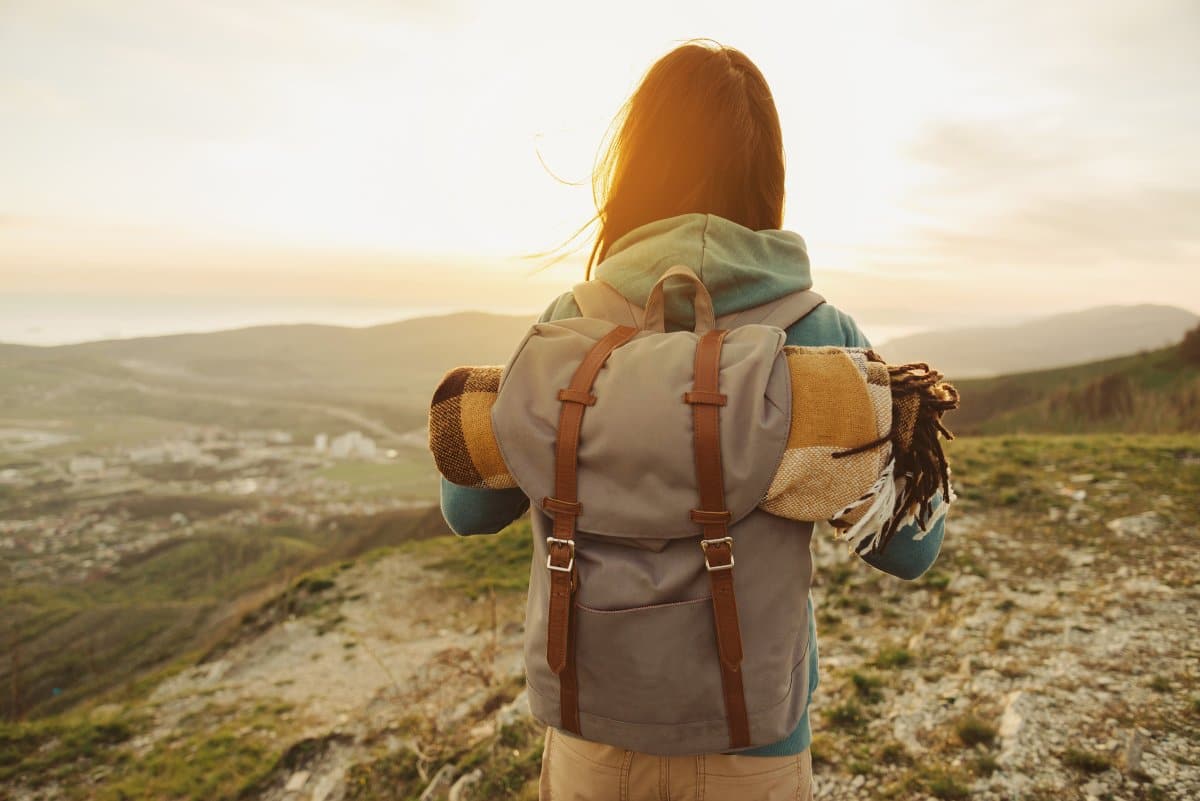
Backpacking through Europe is a dream for many, offering a tapestry of cultures, landscapes, and experiences. However, traversing this diverse continent doesn’t have to break the bank. With smart planning and savvy travel hacks, you can explore Europe affordably, immersing yourself in its richness without exhausting your finances. This guide provides essential tips for budget backpacking in Europe, ensuring your journey is as economical as it is adventurous.
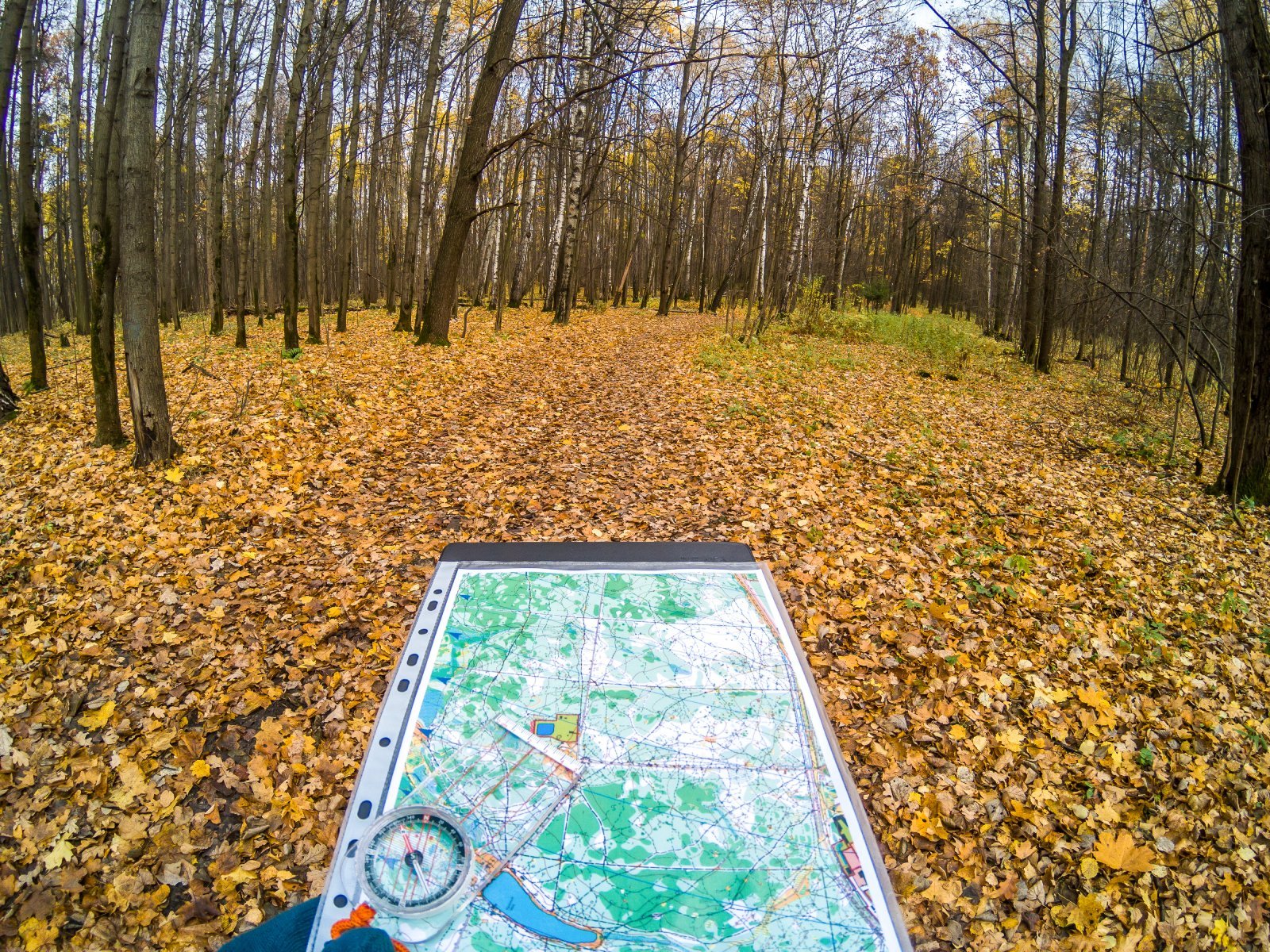
1. Plan Your Route Wisely
Efficient route planning is a cornerstone of budget backpacking in Europe. You can minimize travel distances and costs by focusing on regions where countries are geographically close. For example, Eastern Europe is more affordable and offers rich cultural experiences with fewer crowds than more popular Western European destinations.
Consider starting your journey in cities where flights are cheaper, and then use Europe’s extensive train and bus networks to travel between countries. This approach saves money and allows you to see more within a limited time frame.
Insider’s Tip: Use apps like Rome2Rio to find the cheapest and quickest routes between destinations.
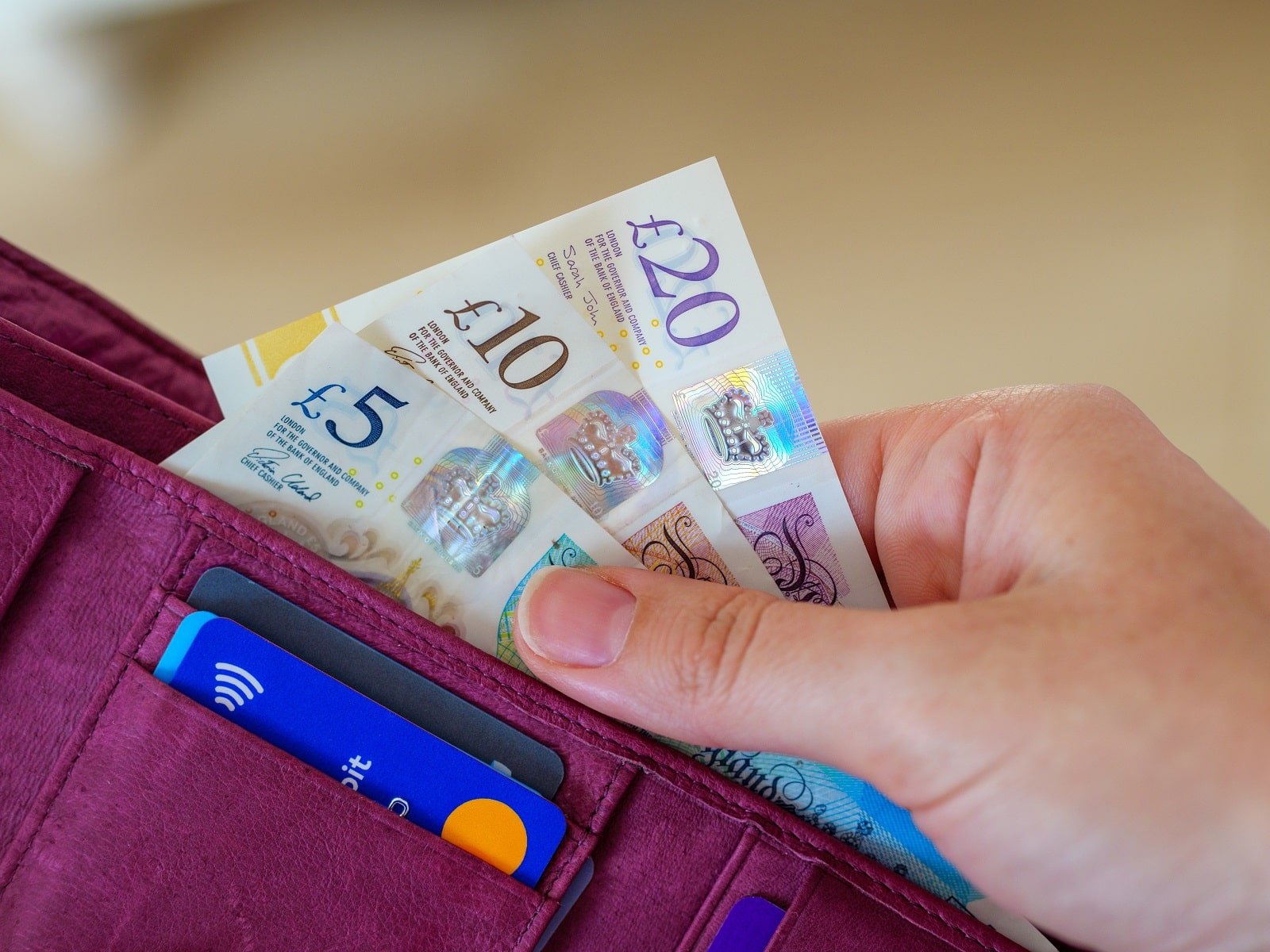
2. Travel During Off-Peak Seasons
Traveling during Europe’s shoulder seasons – spring and autumn – can lead to significant savings. During these times, flights and accommodations are often cheaper, and popular destinations are less crowded, offering a more authentic experience. Besides cost savings, traveling during the off-peak season means milder weather, making exploring and enjoying outdoor activities more comfortable.
Insider’s Tip: Late September to October offers pleasant weather and fewer tourists, making it ideal for budget travel.
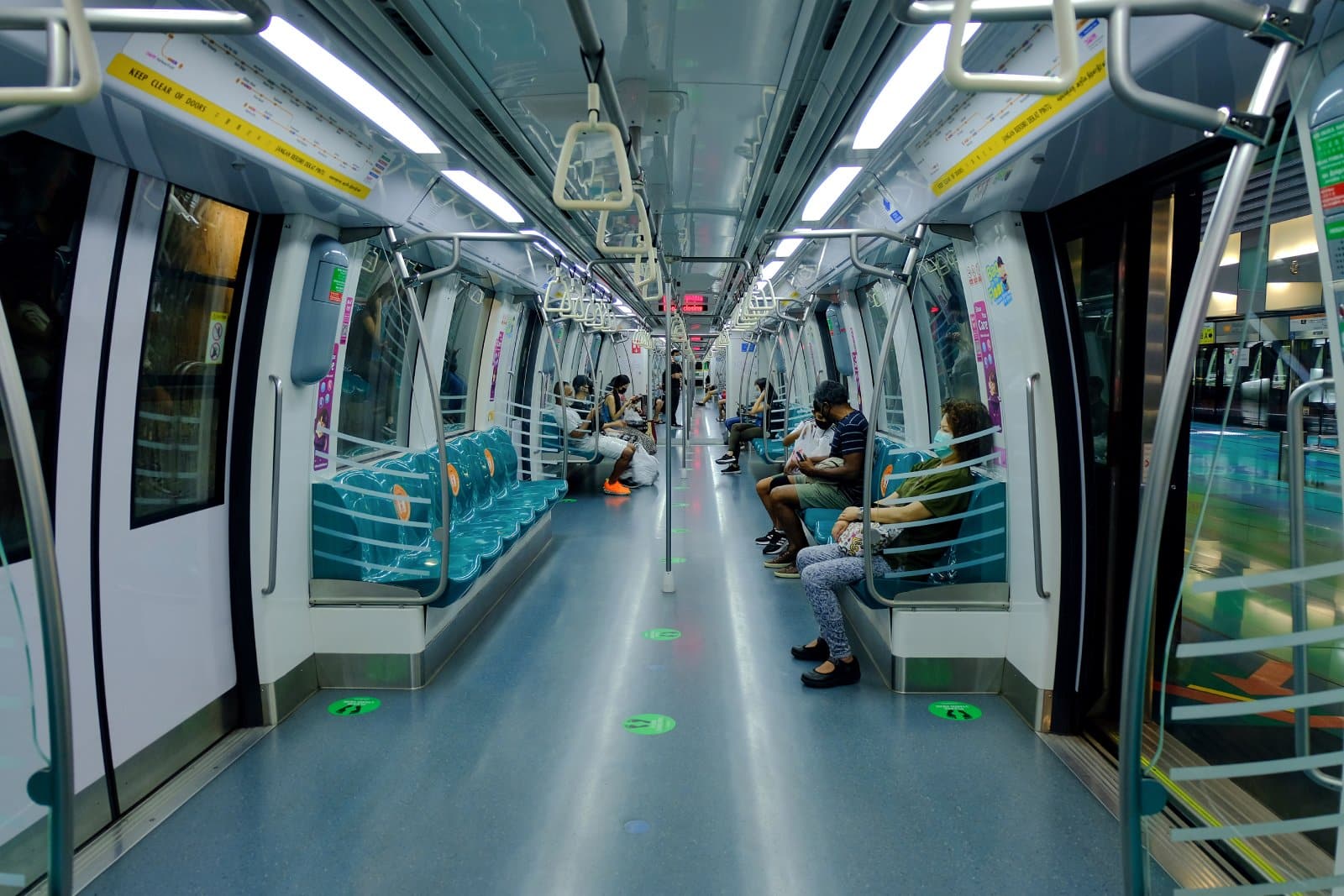
3. Embrace Overnight Trains and Buses
Overnight trains and buses are not only budget-friendly but also time-efficient. Traveling at night saves on a night’s accommodation while covering significant distances. Europe’s extensive rail and bus networks connect major cities and even cross international borders, making it easy to plan your journey. Additionally, the experience of waking up in a new city is exhilarating and maximizes your daytime for exploration.
Insider’s Tip: Invest in a good travel pillow and earplugs for a more comfortable journey.

4. Stay in Hostels or Use Homestay Apps
Hostels are the go-to accommodation choice for budget backpackers, offering affordable rates and opportunities to meet fellow travelers. Many hostels provide amenities like free Wi-Fi, communal kitchens, and sometimes even free breakfast. For a more local and personal experience, consider using homestay apps like Couchsurfing, where you can stay with locals for free or a nominal fee, gaining unique insights into the local lifestyle.
Insider’s Tip: Look for hostels with kitchens to save money by cooking your own meals.
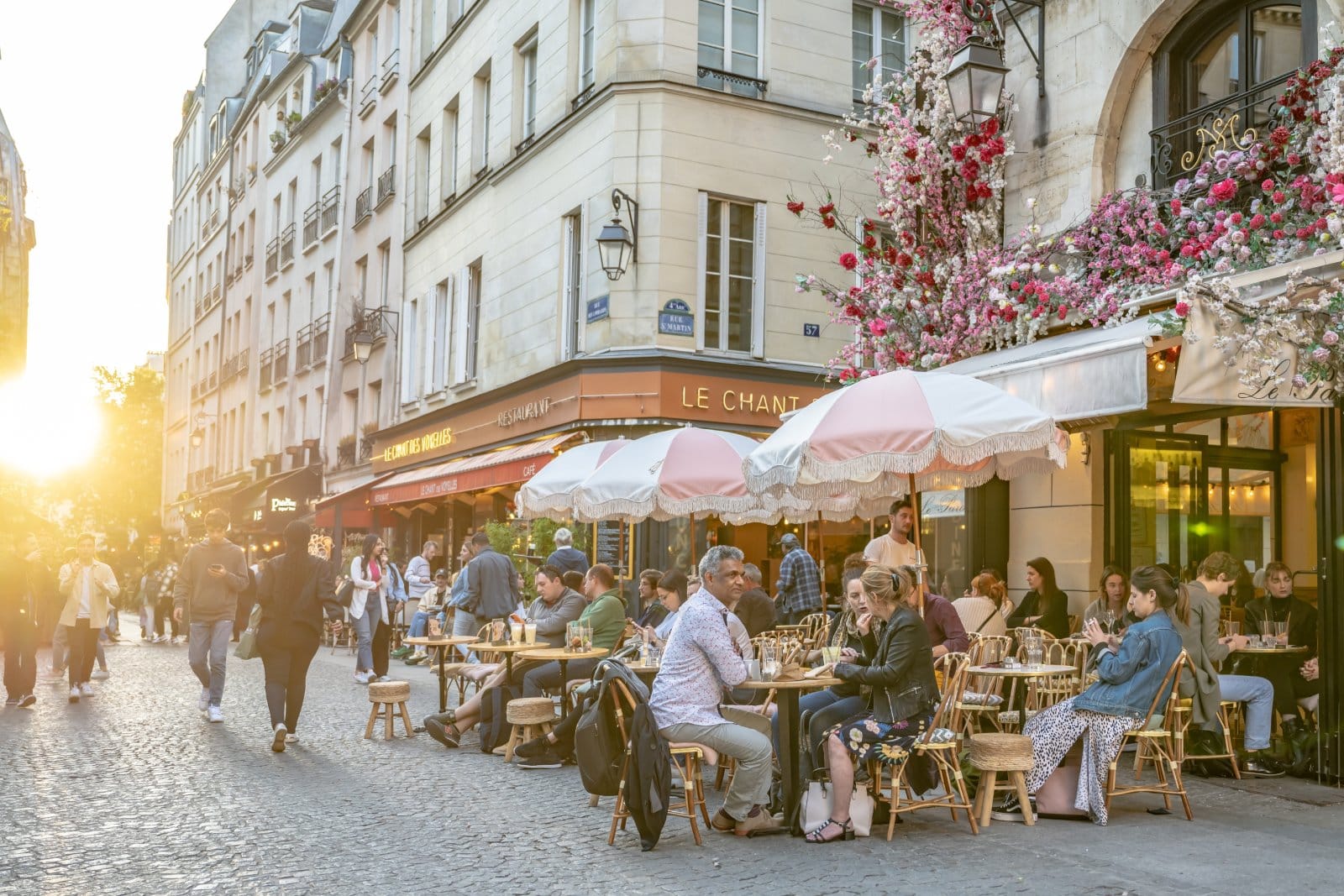
5. Eat Like a Local
Eating out in tourist-centric areas can quickly drain your budget. Instead, dine where the locals eat. Street food, local markets, and small family-run eateries often offer delicious and authentic food at a fraction of the price you’d pay in tourist spots. This saves you money and gives you a taste of the local cuisine and culture.
Insider’s Tip: In Mediterranean countries, look for set lunch menus, which are often great value for money.
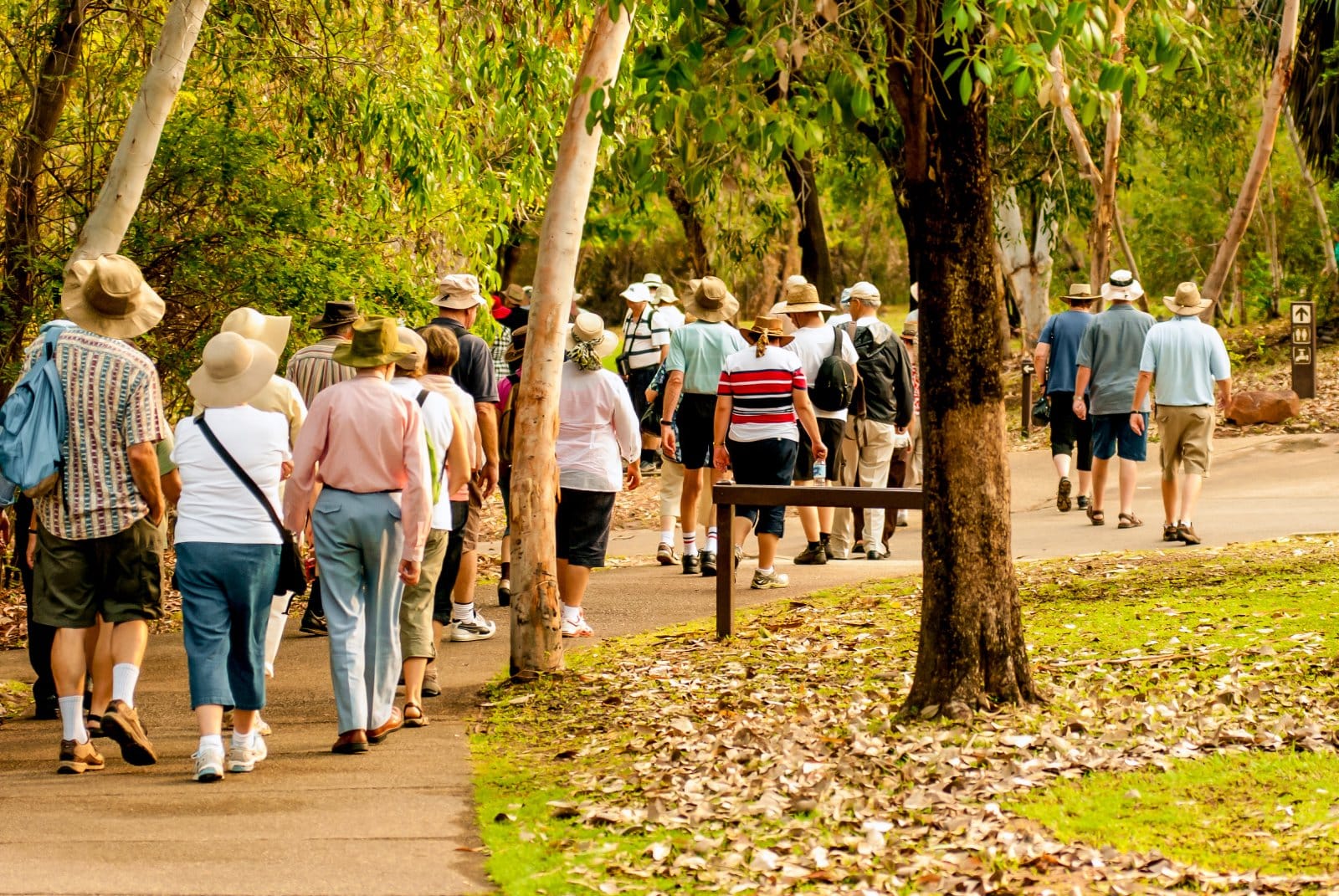
6. Take Advantage of Free Walking Tours
Most European cities offer free walking tours, a great way to familiarize yourself with a new city. These tours, usually led by enthusiastic local guides, cover major landmarks and provide historical and cultural insights. While the tours are free, tipping your guide is customary and appreciated.
Insider’s Tip: Chat with your guide after the tour for personal recommendations on cheap eats and hidden gems in the city.
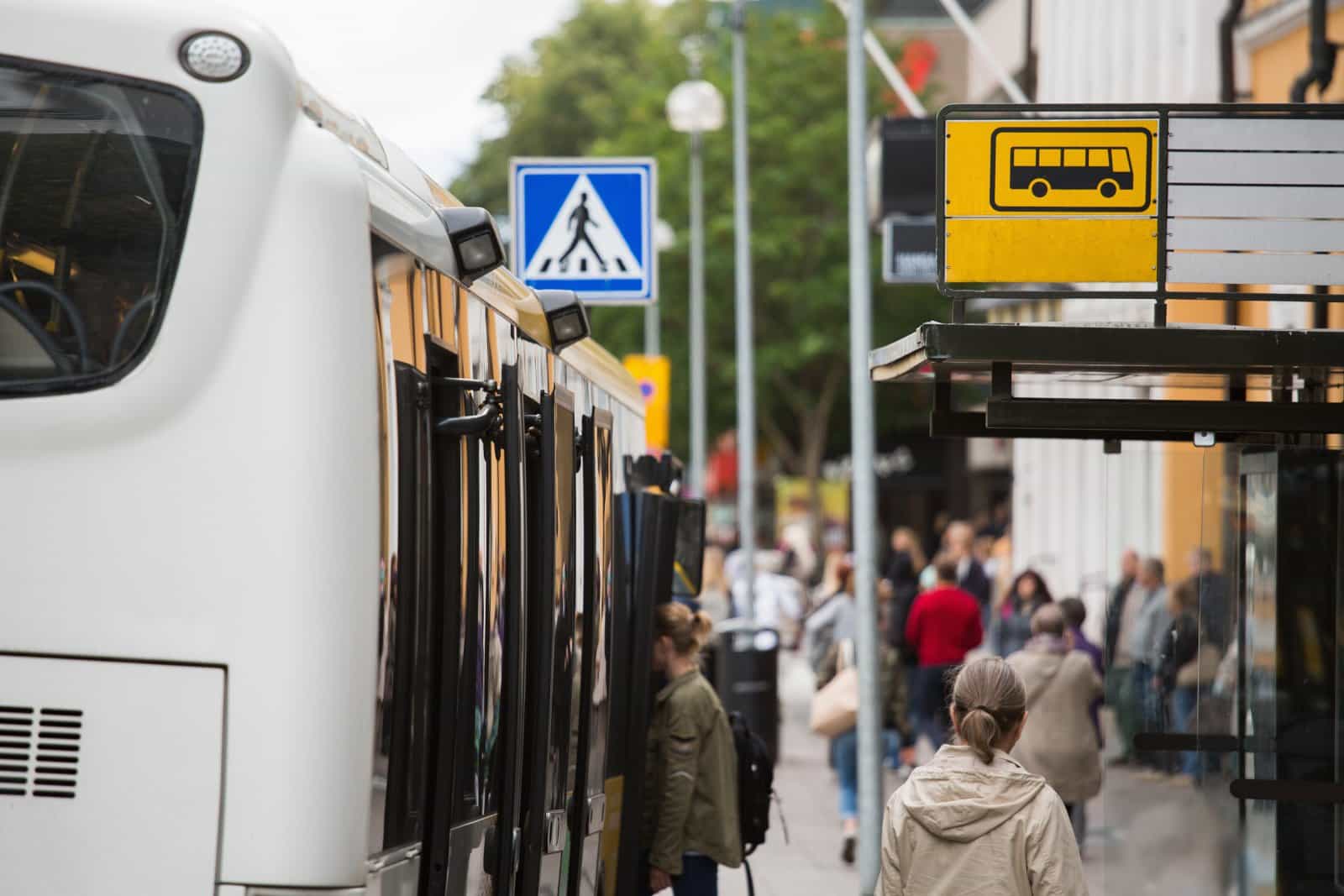
7. Use Public Transportation
Opting for public transportation over taxis or car rentals can lead to substantial savings. European cities generally boast efficient and affordable public transport systems. Look into day or multi-day passes for unlimited travel, which are often more economical than single tickets.
Insider’s Tip: Always validate your ticket to avoid fines, as many European cities have an honor-based system.

8. Limit Paid Attractions
While visiting every paid attraction is tempting, these costs can quickly add up. Prioritize which attractions are a must-see for you and look for city passes that offer access to multiple attractions at a reduced price. Many cities also offer free entry to museums and galleries on certain days or hours.
Insider’s Tip: Many museums and attractions have free entry days or hours; plan your visit accordingly.

9. Pack Light and Practical
Packing light is essential for budget backpacking. Not only does it make travel easier, but it also saves you money on luggage fees with budget airlines. Choose versatile clothing suitable for different weather conditions and comfortable walking shoes. Remember, most things can be bought locally if needed, so pack only the essentials.
Insider’s Tip: Pack a lightweight, foldable backpack for day trips and excursions.
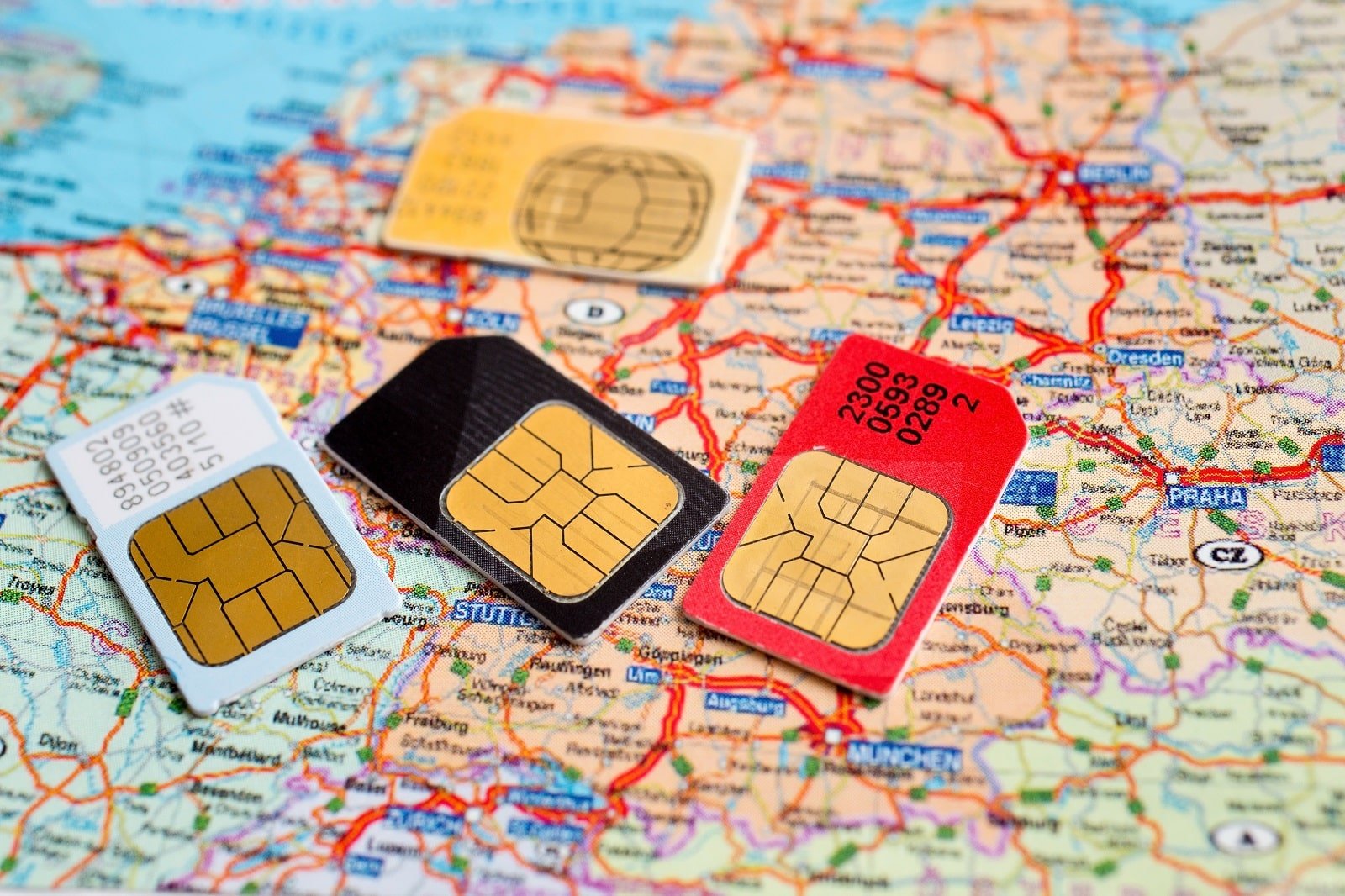
10. Stay Connected Affordably
Staying connected is important, but international roaming charges can be exorbitant. Opt for local SIM cards for cheap data, or take advantage of free Wi-Fi in hostels, cafes, and public spaces. This keeps you connected and helps with navigation and finding information on the go.
Insider’s Tip: Apps like WhatsApp and Skype allow free calls and messages over Wi-Fi.
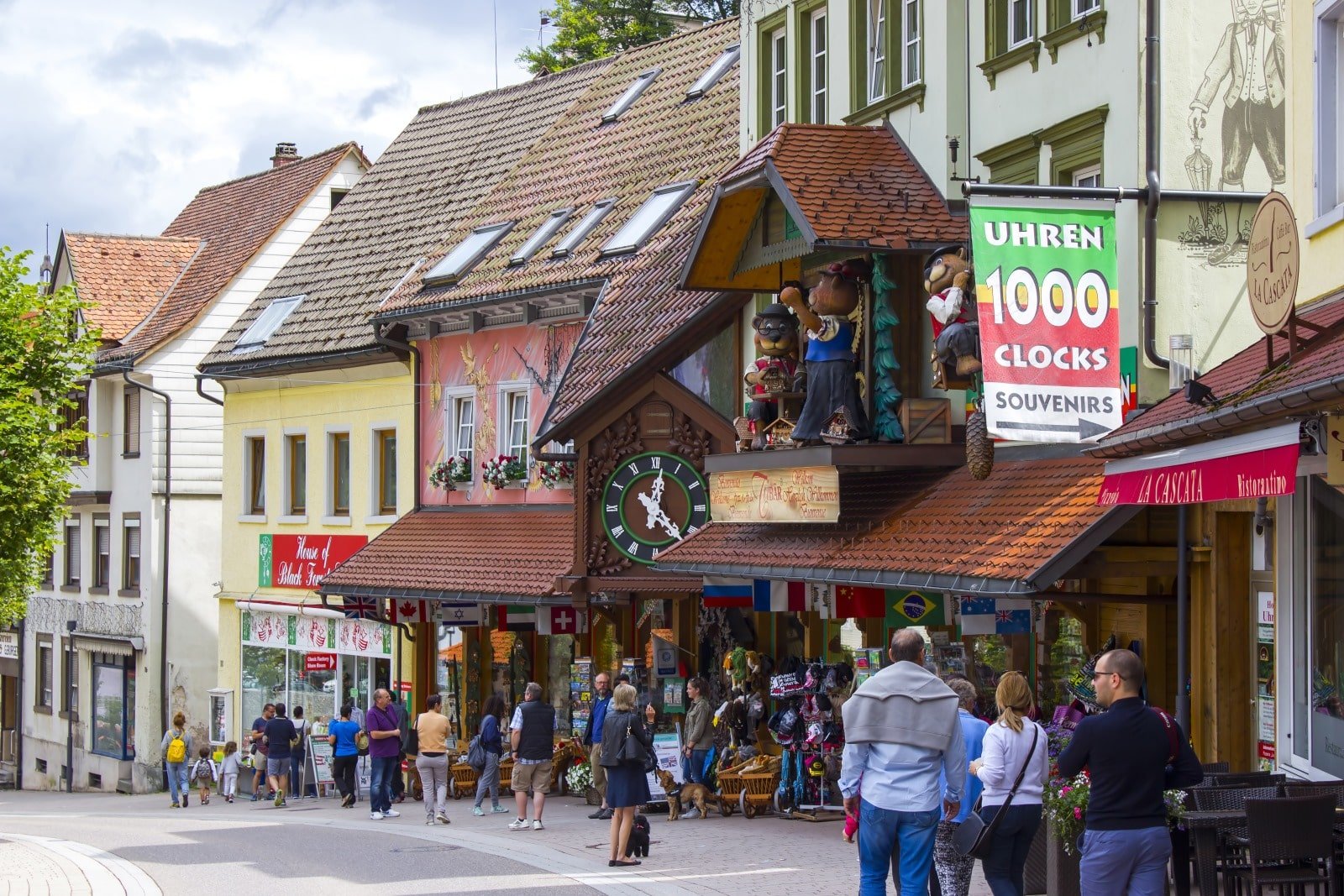
11. Shop at Local Markets
Shopping at local markets is budget-friendly and offers an authentic slice of local life. You can find fresh produce, regional specialties, and sometimes even unique handmade souvenirs at lower prices than in tourist-oriented shops.
Insider’s Tip: Visit markets towards the end of the day for potential discounts as vendors pack up.
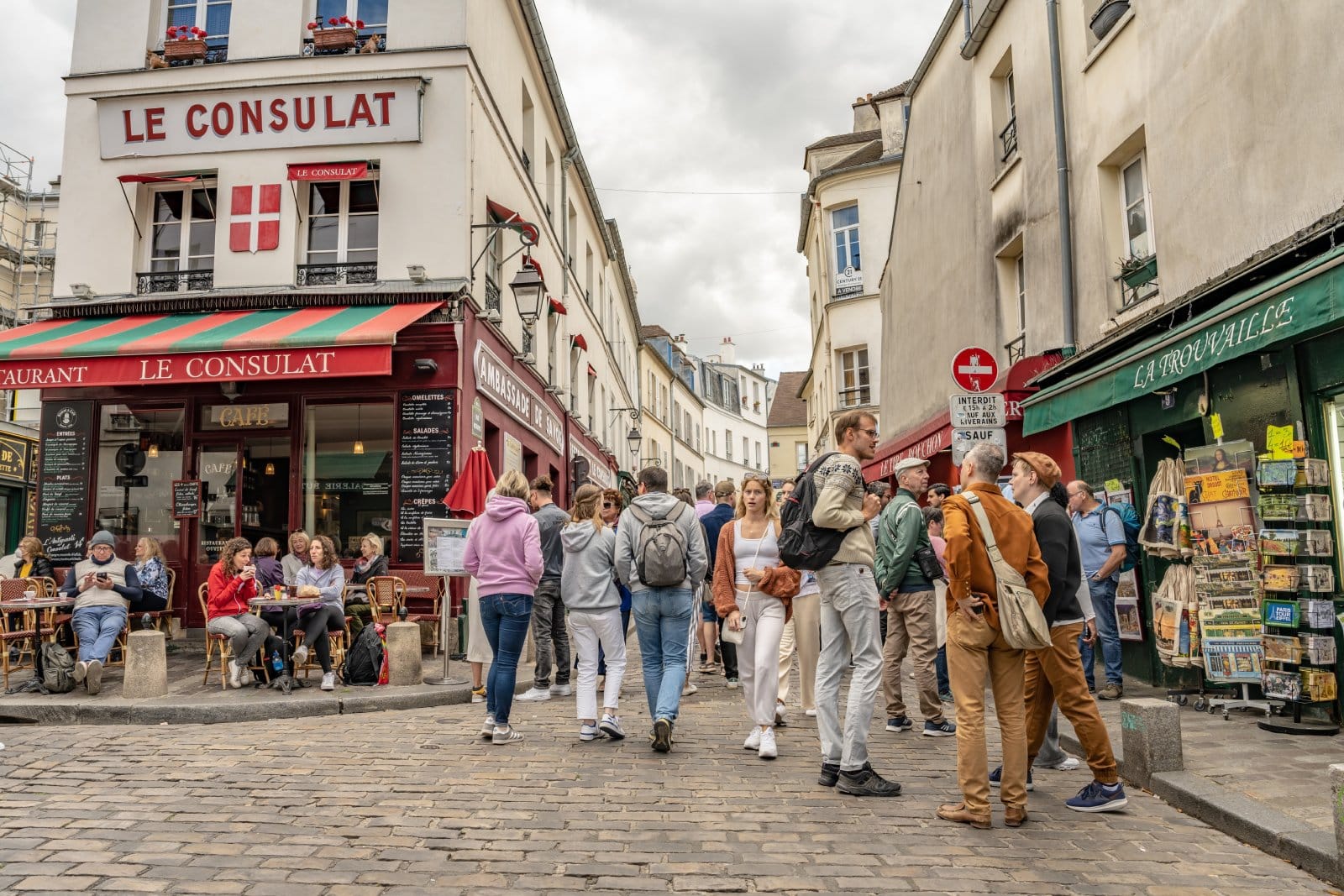
12. Be Flexible and Open to New Experiences
Flexibility can lead to unexpected adventures and savings. Be open to changing your plans based on local recommendations, weather conditions, or discovering new opportunities.
Sometimes the most memorable experiences are unplanned and cost little to nothing. This flexibility might mean taking a last-minute bus to a less-visited town or joining new friends on a day trip.
Insider’s Tip: Be open to changing your plans based on local recommendations or new opportunities.

The Bottom Line
Budget backpacking in Europe is about smart planning, flexibility, and immersing yourself in local experiences. By following these tips, you can explore the rich tapestry of Europe without depleting your savings. Remember, the value of your journey isn’t measured by how much you spend but by the experiences you gain and the memories you create.
Traveling affordably allows you to see more of the world, meet diverse people, and embrace new cultures. So pack your bag, set your budget, and embark on an adventure that proves that the best things in travel don’t always come with a hefty price tag. Happy backpacking!
More Articles Like This…
Barcelona: Discover the Top 10 Beach Clubs
2024 Global City Travel Guide – Your Passport to the World’s Top Destination Cities
Exploring Khao Yai 2024 – A Hidden Gem of Thailand
The post 12 Budget Backpacking Tips for Traveling Across Europe republished on Passing Thru with permission from The Green Voyage .
Featured Image Credit: Shutterstock / Duet PandG.
For transparency, this content was partly developed with AI assistance and carefully curated by an experienced editor to be informative and ensure accuracy.
More for You
Calls for Judge Aileen Cannon’s Removal in Trump Documents Case Intensify
North Carolina schools candidate who called for Obama’s death put on the spot
I'm abrosexual - it took me 30 years to realise
This common trait is a red flag of a toxic boss, says ex-IBM CEO: 'I used to think it was a great skill'
13 Modern Taboos That Used To Be Perfectly Normal
6 Foods You Should Never Put Down Your Garbage Disposal, According To Plumbing Experts
Jordan Klepper Recalls The Trump Fan He Interviewed Who Changed Her Mind
Mitch McConnell urges GOP against term limits
Bernie Moreno's Chances of Beating Sherrod Brown in Ohio, According to Polls
Popular food and grocery brand files for Chapter 11 bankruptcy
Protesters disrupt Kyle Rittenhouse TPUSA event at the University of Memphis: 'No justice, no peace'
The 5 most common deathbed regrets, according to a palliative care nurse
Trump-Backing Attorney Arrested After Court Hearing
'That Girl Lay Lay' creator's wife announces end of series after David A. Arnold's death
IRS Issues Warning on Filing Taxes
How much did Shohei Ohtani's interpreter earn before being fired?
Virginia dad outraged after school board censors public comment: 'Let us down'
Cancer sufferer who ended life at Dignitas sends final assisted dying message to politicians
Pepsi takes down rival Coke’s biggest client, landing its beverages and snacks in 20,000 Subway sandwich shops
How NY's Judge Engoron is tightening the leash on Trump ahead of looming Truth Social merger and fraud judgement deadline

COMMENTS
Italy (14 days) Start in the south, in the bustling city of Naples. Use the city as a base to explore breathtaking cliffside towns like Positano and Sorrento, before heading back for some of Italy's best cuisine. The hometown of pizza, Naples is where you'll find the world's best slice.
Barcelona, Spain, 5. Nice, France, 6. Milan, Italy, 7. Florence, Italy, 8. Venice, Italy, 9. Florence, Italy, 10. Rome, Italy. One month is the ideal Europe backpacking trip for first-timers. You'll have time to explore a few countries and stay an extra few days in the places you fall in love with.
Table of Contents. Step 1: Plan Your Backpacking Europe Trip. Step 2: Get Your Gear for Backpacking Europe. Step 3: How to Get Amazing Accommodation in Europe. Step 4: Get Around Europe on the Cheap. Step 5: Save Money While Backpacking Europe. Step 6: Find Out What to See and Do in Europe. Get Your In-Depth Budget Guide to Europe!
Top Europe Backpacking Trips: 4 Travel Itineraries. While you may associate backpacking through Europe with train travel and dormitory-style hostels, it's been a rite of passage since the 18th century, when young people (mostly men) would spend a few years traveling around 'The Continent' prior to fully joining society. This was seen as a ...
Portugal and Spain create the Iberian Peninsula, as well as a great backpacking route through Europe. If you want sun, come here. However, I personally wouldn't recommend taking this path through Europe in the summer. Spain's temperatures soar in July and August.
2 Week Backpacking Europe Route #2:France, Spain, and Portugal. France, Spain, and Portugal are easily one of the most classic combinations for European itineraries out there. With similar climates, outstanding wine vineyards, vast mountain ranges, and endless beautiful beaches, this trio is easily one of the best backpacking Europe routes for ...
Three-Week Backpacking Europe Routes. If you are short on time but still want to experience the travelling mindset that comes with backpacking, then three weeks is the perfect length for an itinerary. ... Budapest - 4 to 5 days in the Hungarian capital is a great way to kick off this Europe backpacking trip.
This jam-packed Europe backpacking itinerary will take you to the top of Paris' teetering Eiffel Tower, along Switzerland's Rhine, and inside Rome's iconic Colosseum. It will show you Venice from its romantic waterways, and have you wandering grand palaces in Vienna, then partying in Budapest. It will also let you taste real Belgian ...
Step #6 - Research Cheap Accommodation. These days, there are so many cheap accommodation options in Europe for backpackers - hotels, hostels, Airbnb's, actual B&B's, camping, homestays, couchsurfing…. And which option you decide to go with totally depends on your personal style and budget.
Backpacking Tips: Time of Year: I recommend visiting Europe in the Spring or Fall to avoid the crowds and cold weather. Main Forms of Transportation: Europe offers great transportation services that allows you to travel on a budget. We took advantage of the metro and public transportation services in each city. Planes, buses, and trains are a great way to travel long distances.
Berlin, Munich, and Hamburg are ideal for those who want to experience city life. On the other hand, there are plenty of cute and charming medieval villages and castles to explore here too. Best of all, Germany's efficient train system makes backpacking through the country a breeze! Budget: €90-€100/day.
Planning a successful backpacking Europe trip will take a bit of time, dedication, and research, but it will all be totally worth it! ... If you're from America, Canada or Australia (and most other major countries), you will not need a visa for short stay trips. This is similar to UK travellers; where you're allowed a trip of up to 90 days.
A Step-By-Step Guide for Backpacking Europe. We Cover Trip Planning, Packing Guides, Finding Accommodation, Choosing Transportation, And More ... Short-term apartment rentals — especially Airbnb — have exploded in Europe and it's one of my favorite ways to experience Europe's cities. But picking the perfect apartment can be a little tricky.
Why take a Europe backpacking trip with your family? There are many reasons to take a Europe backpacking trip with your family. I mean, it's Europe! So much to see, do, learn, and eat! But these are the main reasons I decided to do it. 1. To Save Money. I want my kids to see as much of the world as possible, but I have 4 kids, and they're ...
Kristin Published May 3, 2023. Backpacking Europe can be a life-changing experience. The diversity of languages, architecture, and cuisine is enough to keep culture vultures happy for months while history buffs will swoon every time they turn a corner! Traveling through Europe as a form of enlightenment and self-discovery has been popular since ...
1. Choosing countries for your Europe backpacking trip itinerary. To plan your trip, start with countries that you're most excited to visit. You'll want to plan around these. The Baltics intrigued me - the trio of former Soviet Union countries that border the Baltic Sea. I had only planned to travel for a 2-3 week trip to the Baltics ...
Days 3-5: Krakow, Poland. Poland is a must on any Europe itinerary. While Warsaw is perhaps its most famous cities, Krakow has become a hugely popular backpacking destination. Beautiful architecture lines the streets, and many a hidden gem is tucked away in almost every corner.
The best winter backpacking Europe routes. 1. Backpacking Europe itinerary: The Ultimate Major Cities Route. 2. 2-week Classic Route For First-timers. 3. Benelux Backpacking Route. 4. Central European Capitals Backpacking Route. Backpacking Europe Routes: Along The Coast.
10 Best Backpacking Tours Europe 2024/2025 - TourRadar. Searching for the perfect Europe backpacking tour? Discover a range of destinations and routes at TourRadar, and start planning your dream holiday today.
Pack duct tape. A random, but essential item for your backpacking trip is duct tape. From patching up broken bags to sealing up shoes that randomly split (true story), it's a light and versatile item that travellers often forget to pack. No doubt, it has saved my butt numerous times. Photo by Edward Virvel on Unsplash.
Europe is home to some of the most exciting backpacking trips in the world. Whether you enjoy a short backpacking trail or a long, 100-mile long trip, Europe has trails that meet your exact desires, offering beautiful, breathtaking scenery along the way.
Welcome To The Savvy Backpacker. Hi, I'm James and I've been teaching people how to travel Europe on a budget since 2010. I created The Savvy Backpacker to be the most comprehensive resource for planning your trip to Europe. Join me to learn more about the best travel backpacks, train travel in Europe, curated packing lists, European city ...
Kungsleden Trail, Sweden. The Kungsleden Trail is one of the most famous long-distance hiking trails in Sweden and one of the best hiking trails in Europe. It stretches for approximately 270 miles through the beautiful wilderness of Swedish Lapland. The Kungsleden Trail runs through the northernmost part of Sweden, primarily within the province ...
Backpacking through Europe is a dream for many, offering a tapestry of cultures, landscapes, and experiences. However, traversing this diverse continent doesn't have to break the bank. Travel news